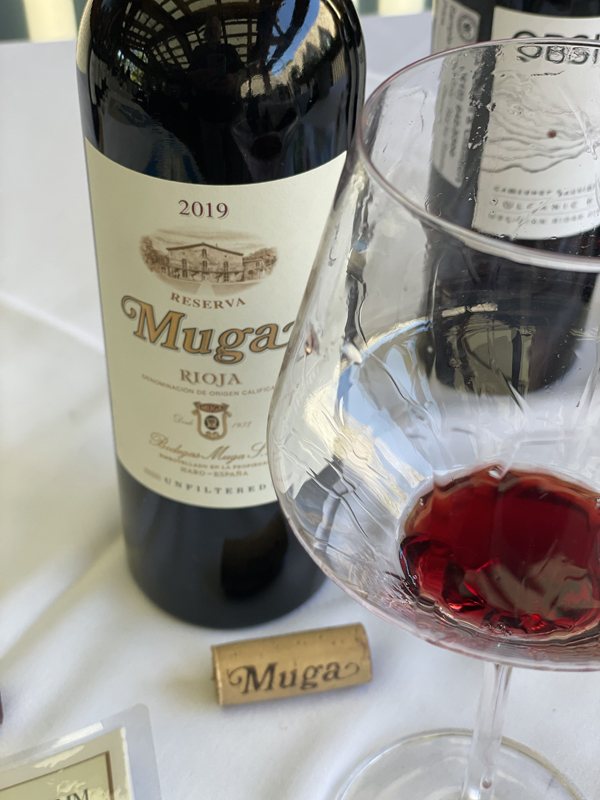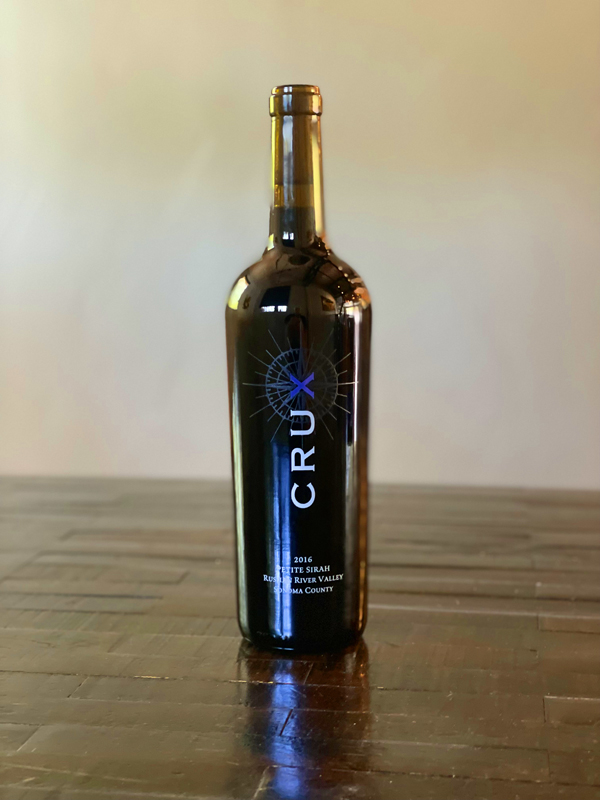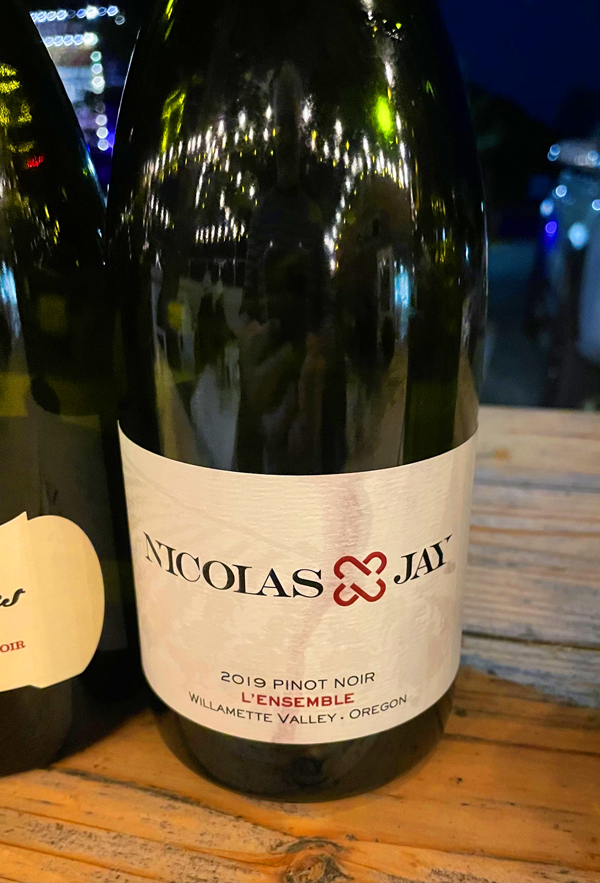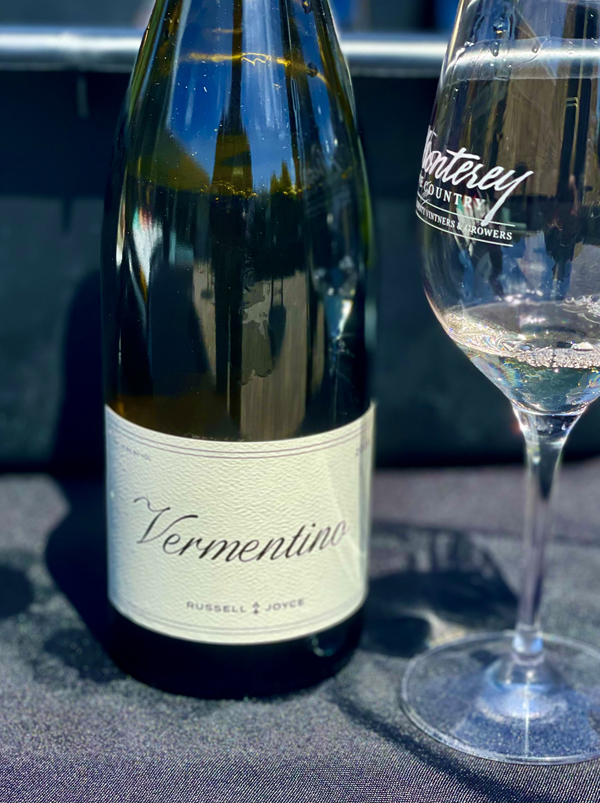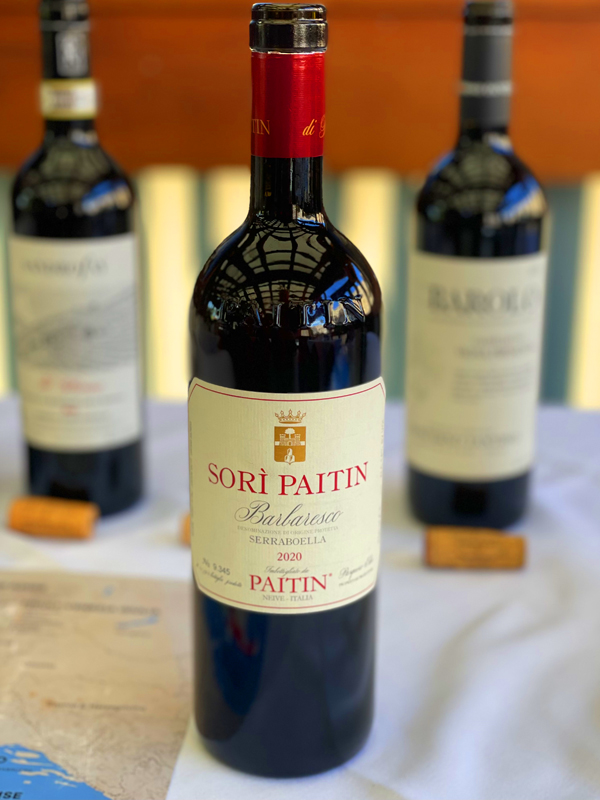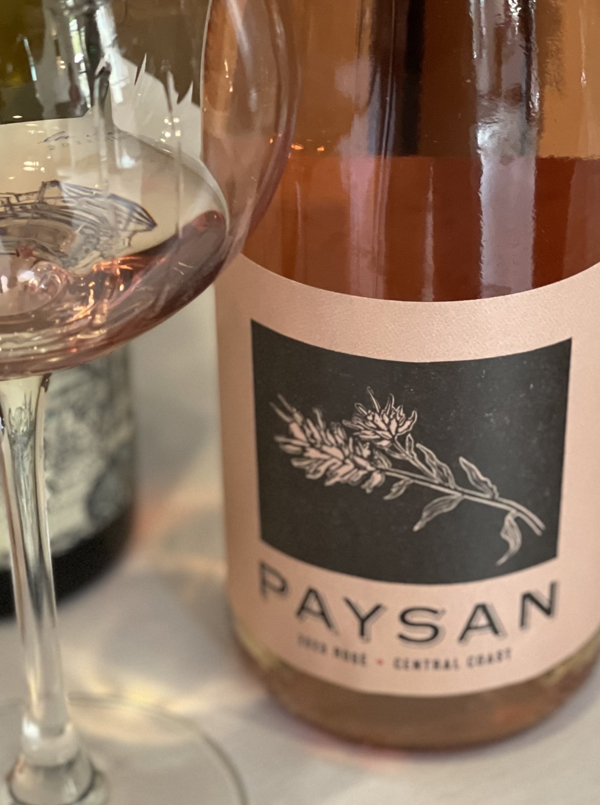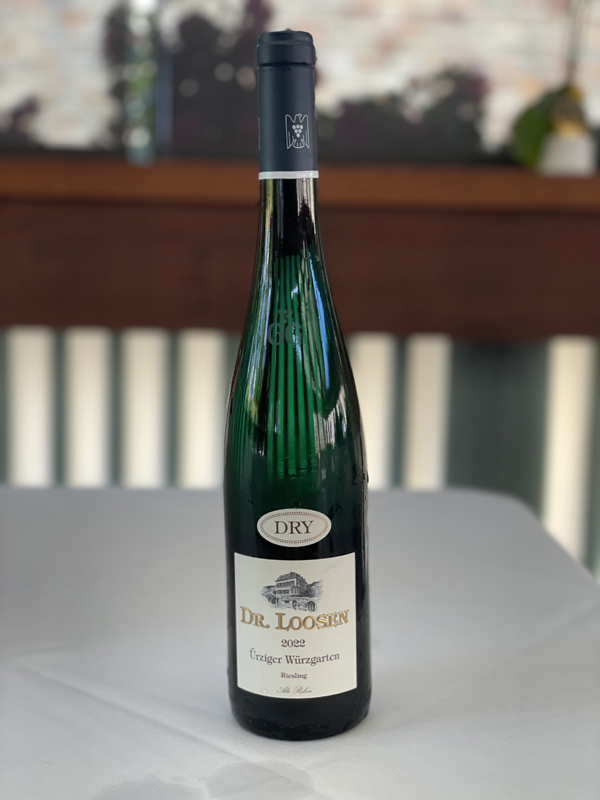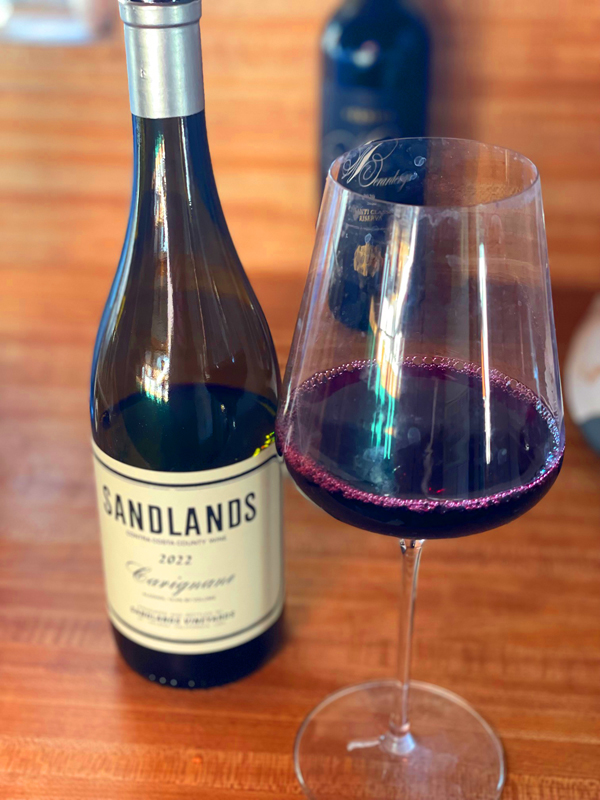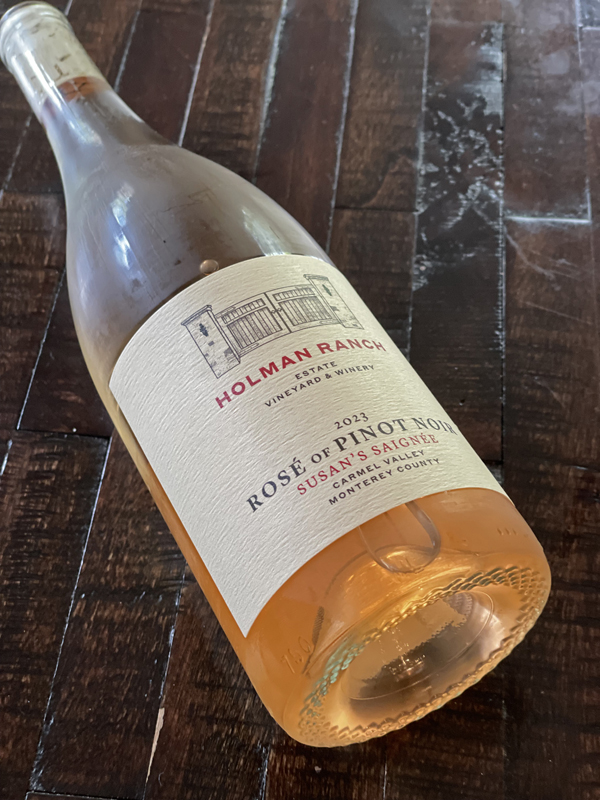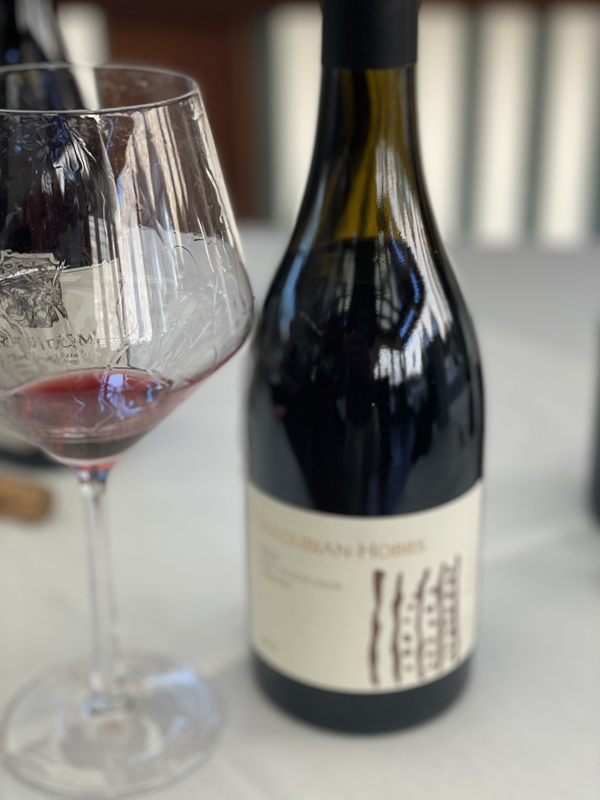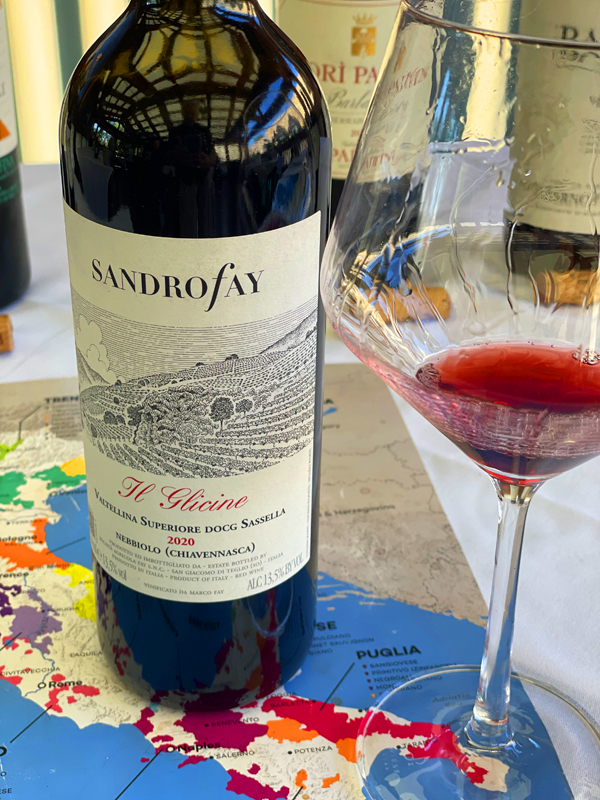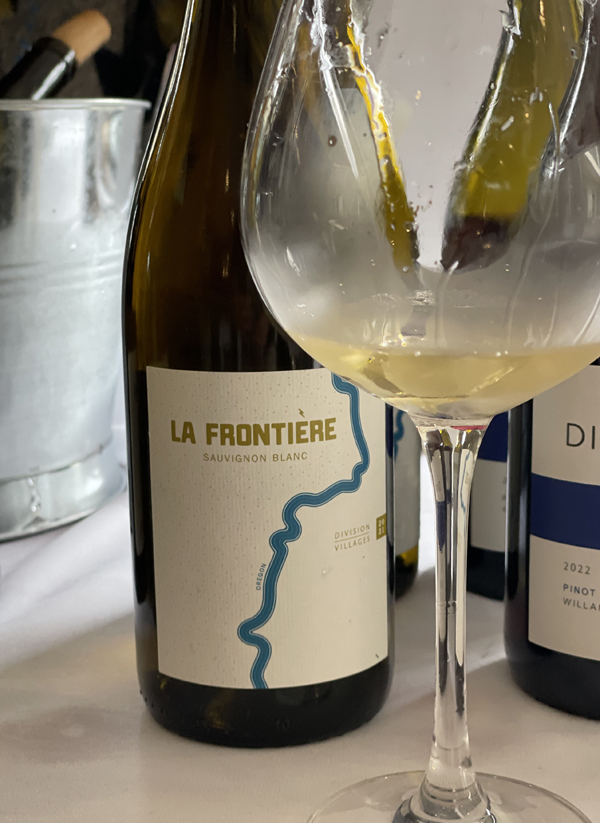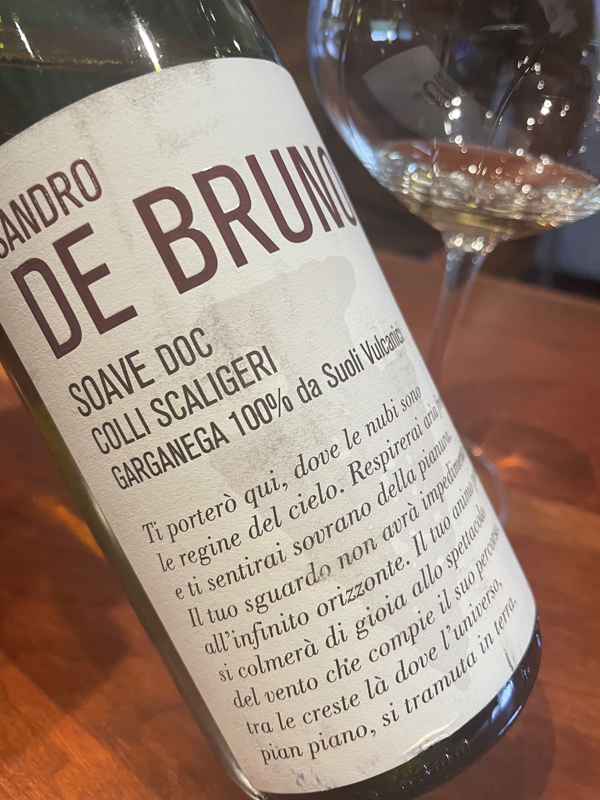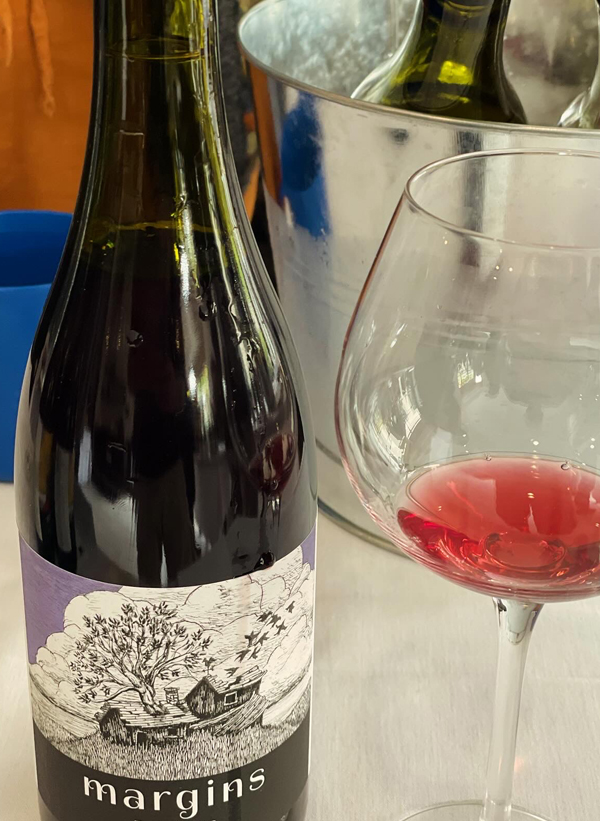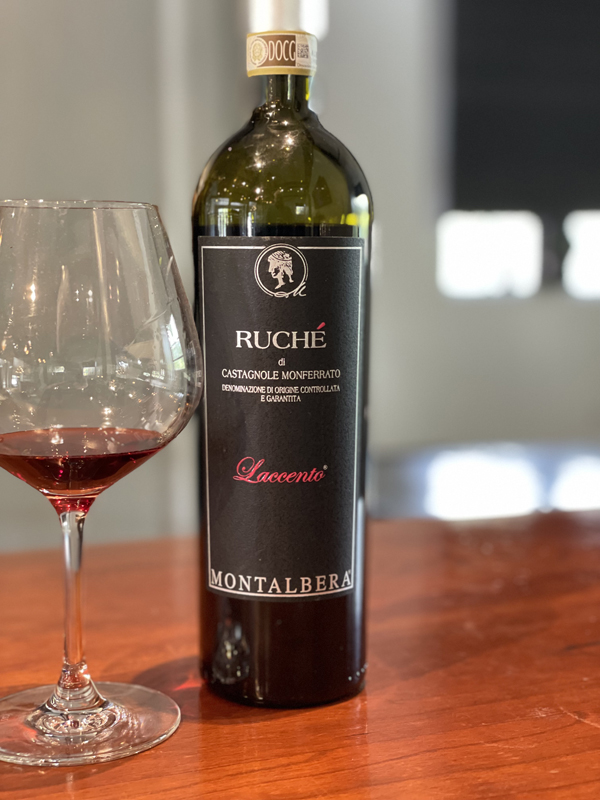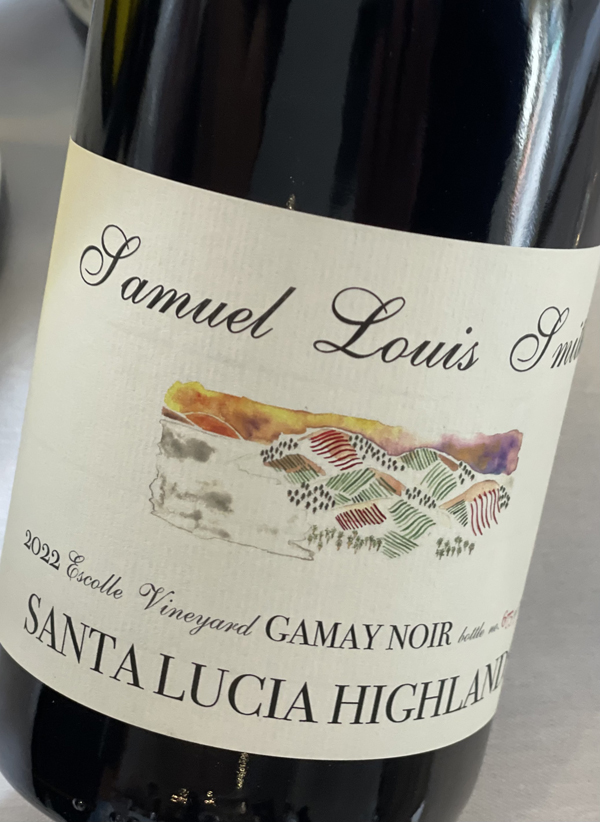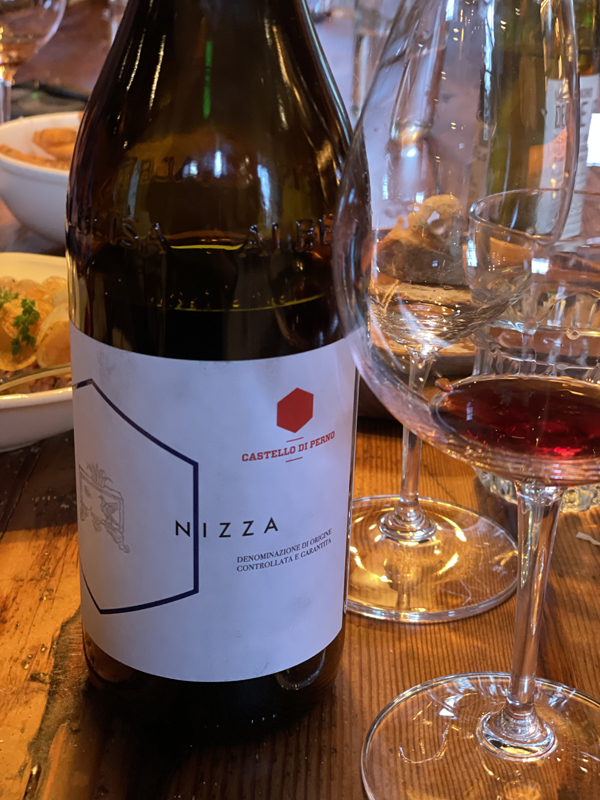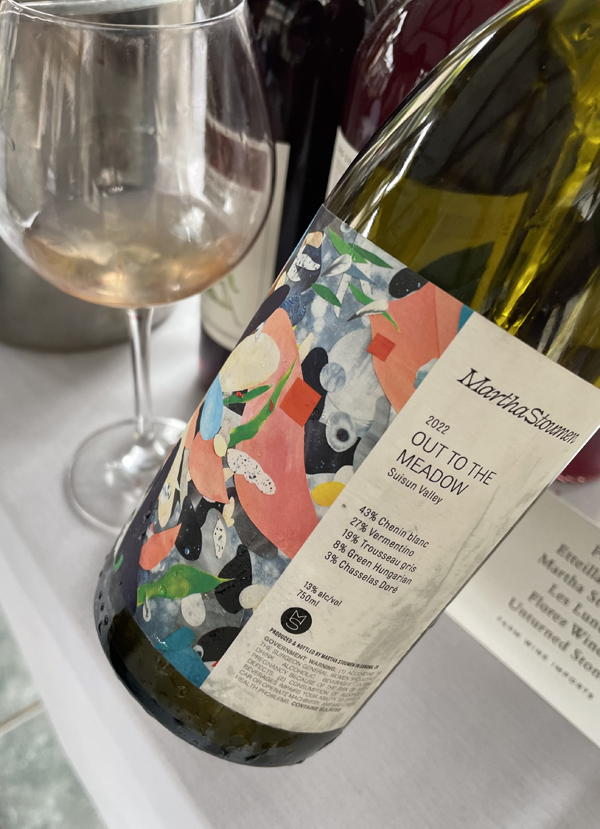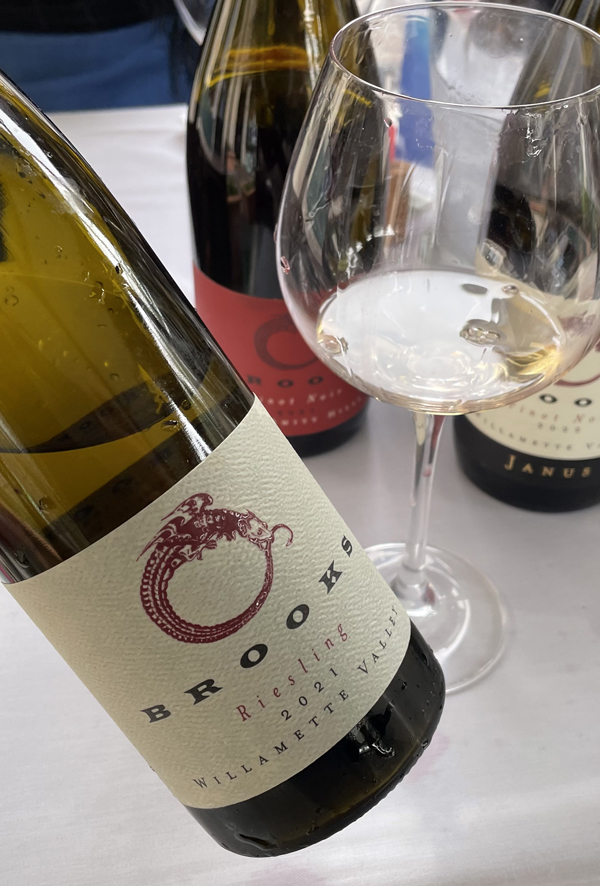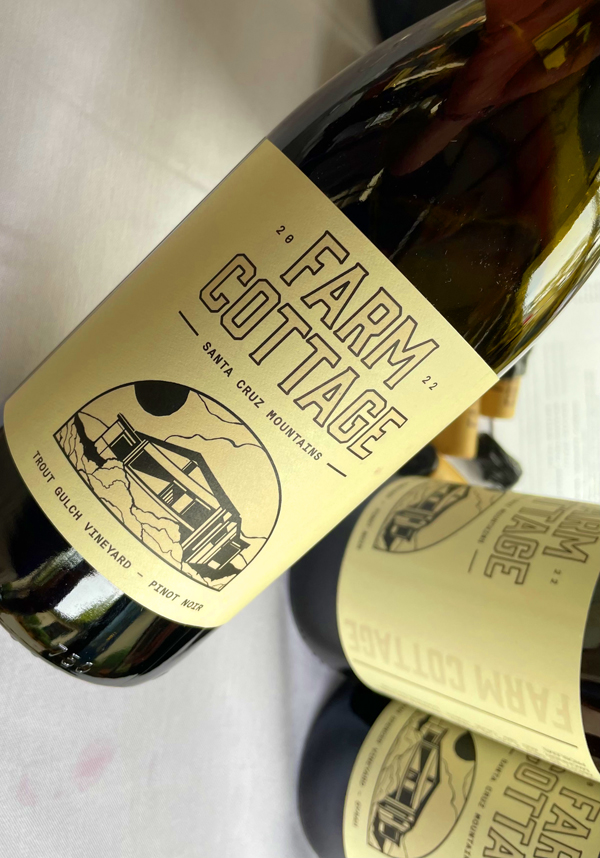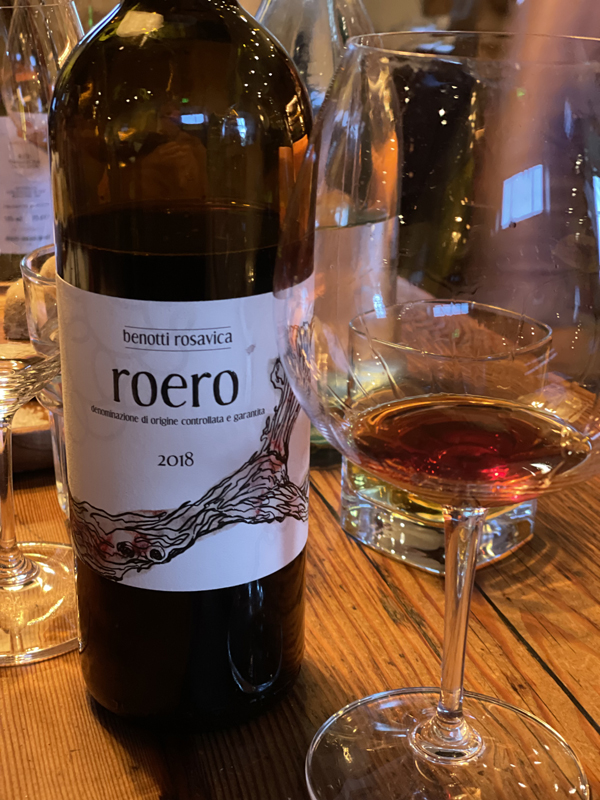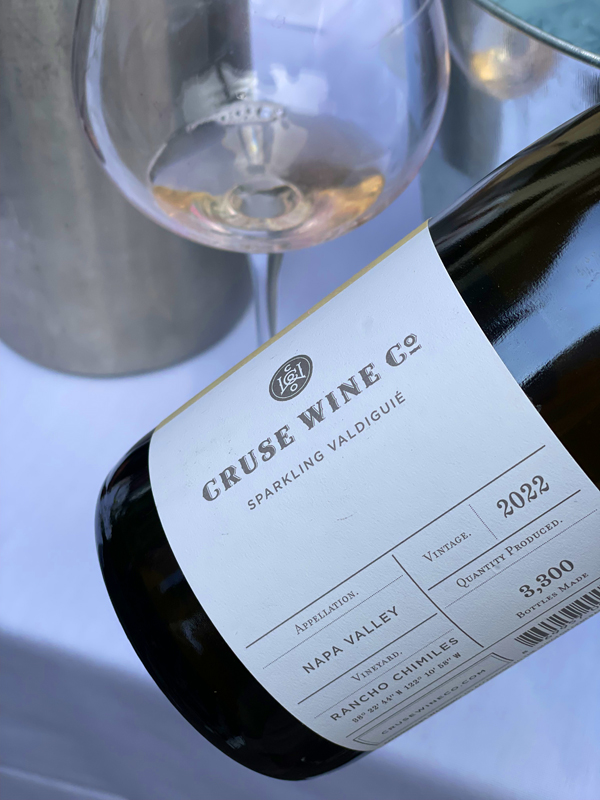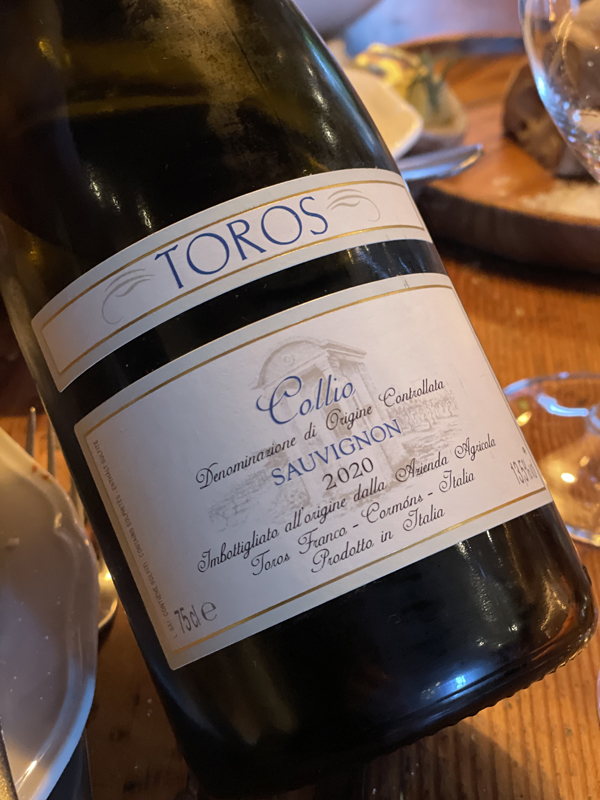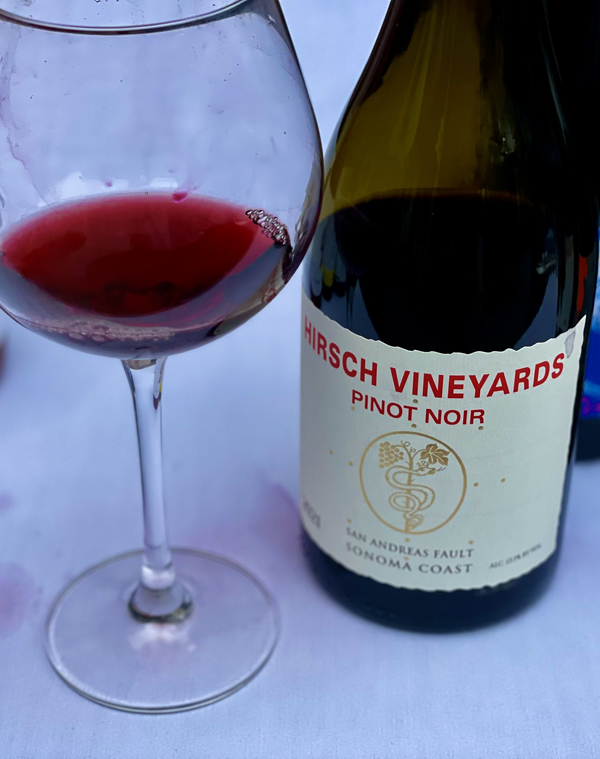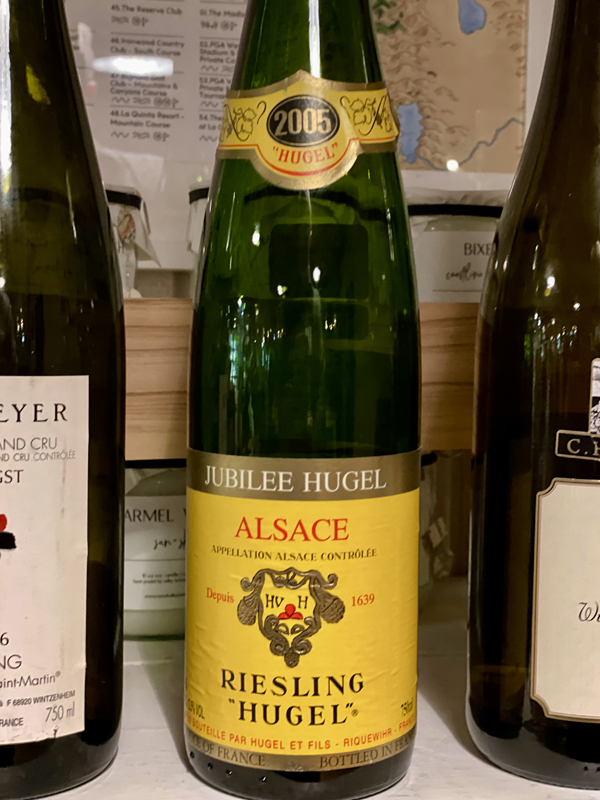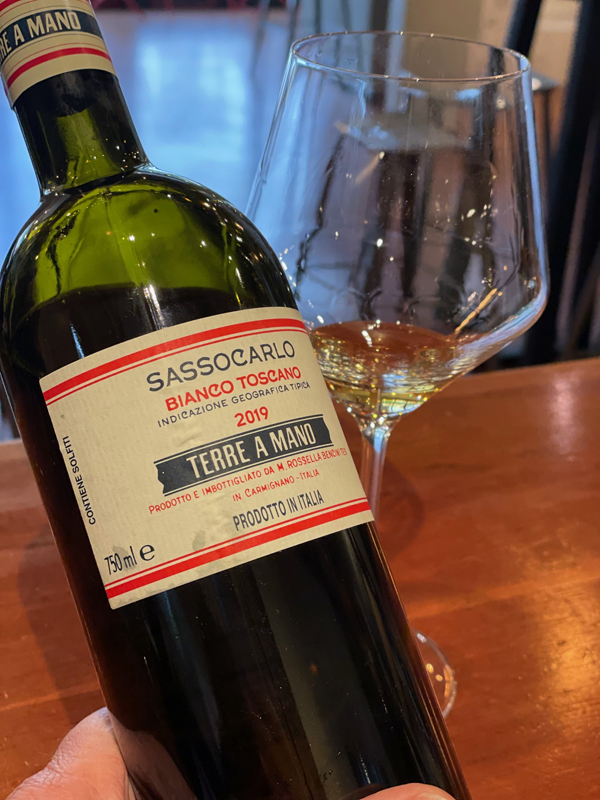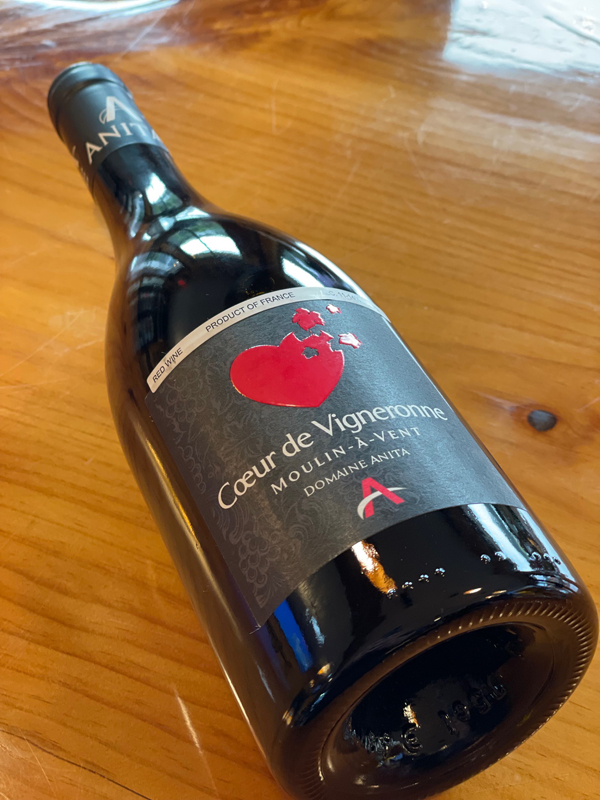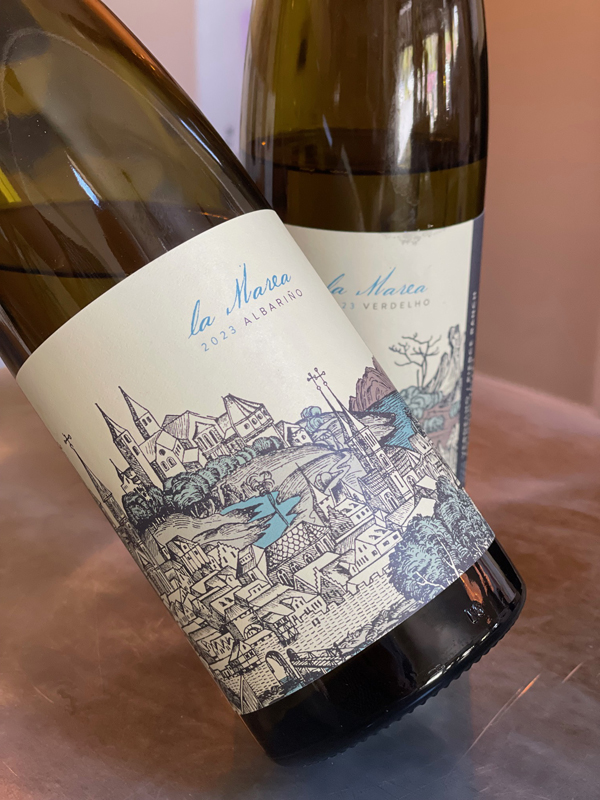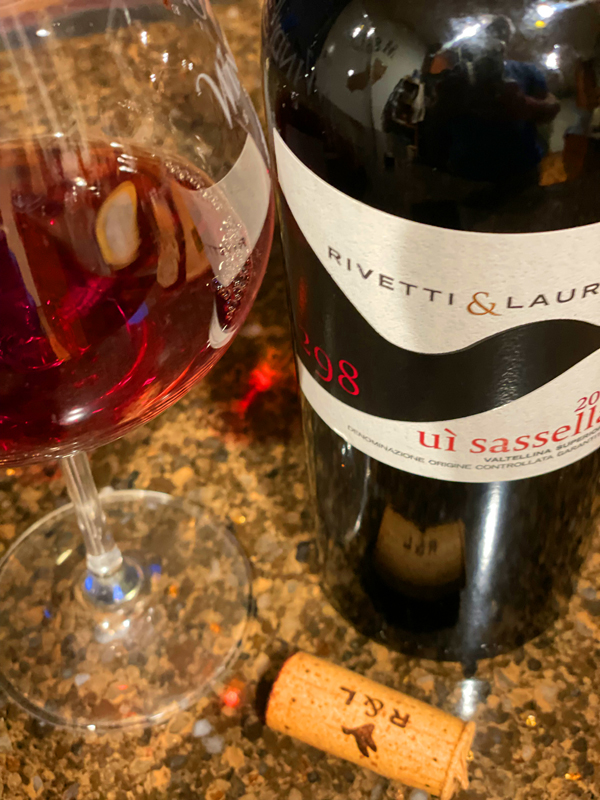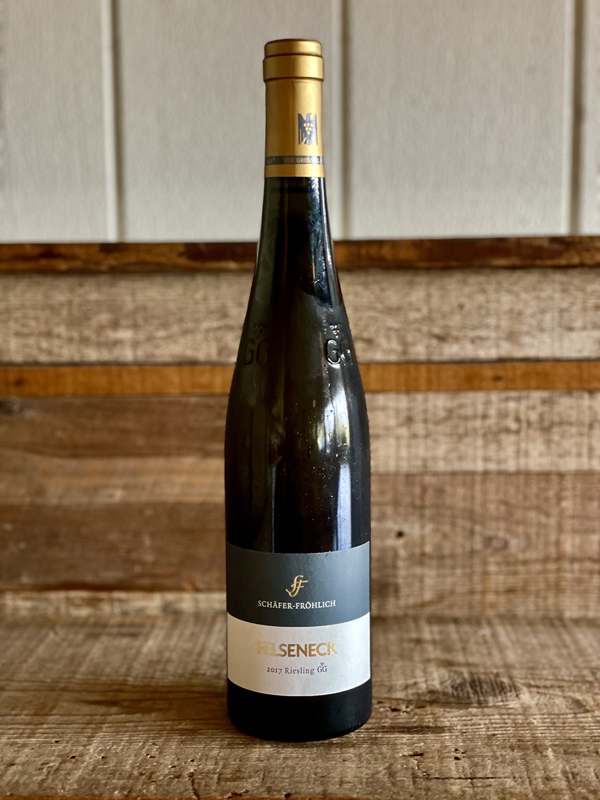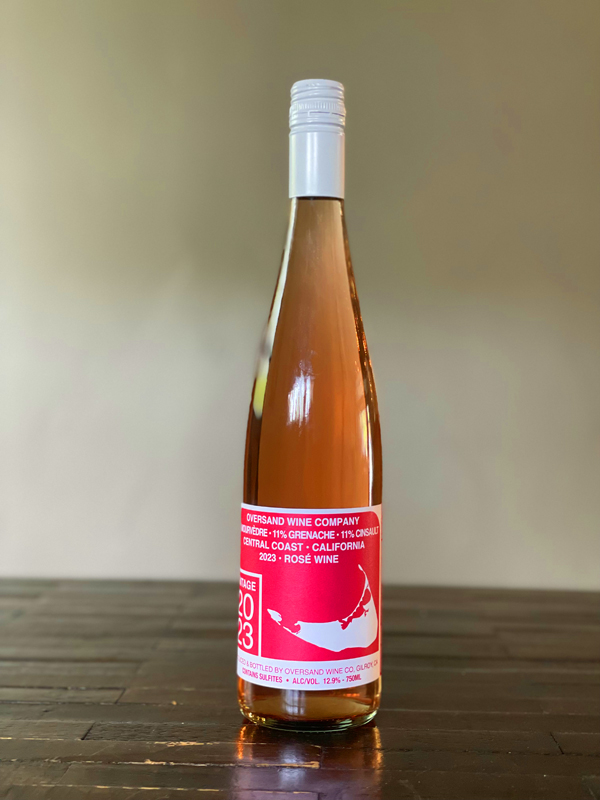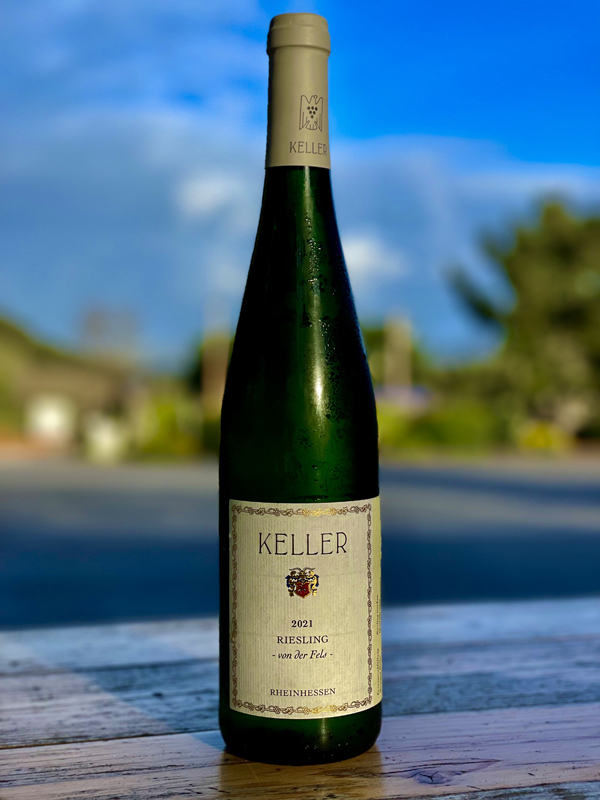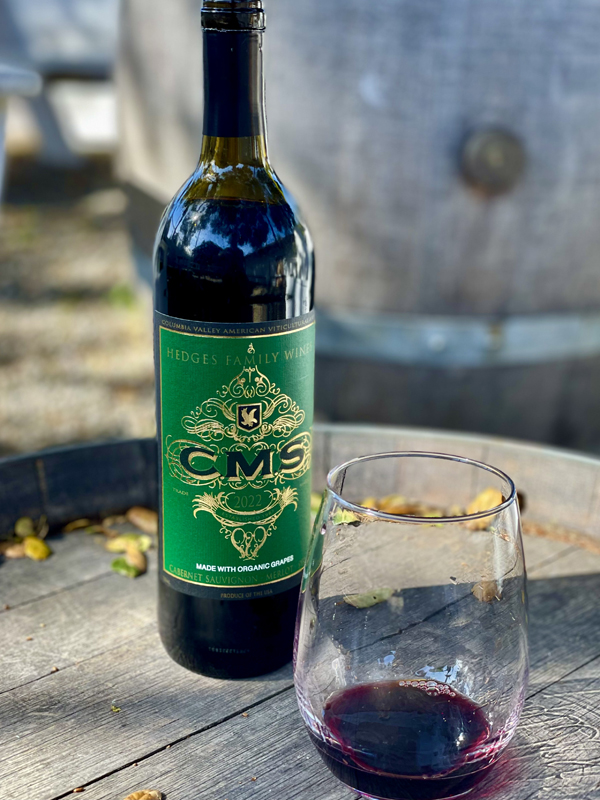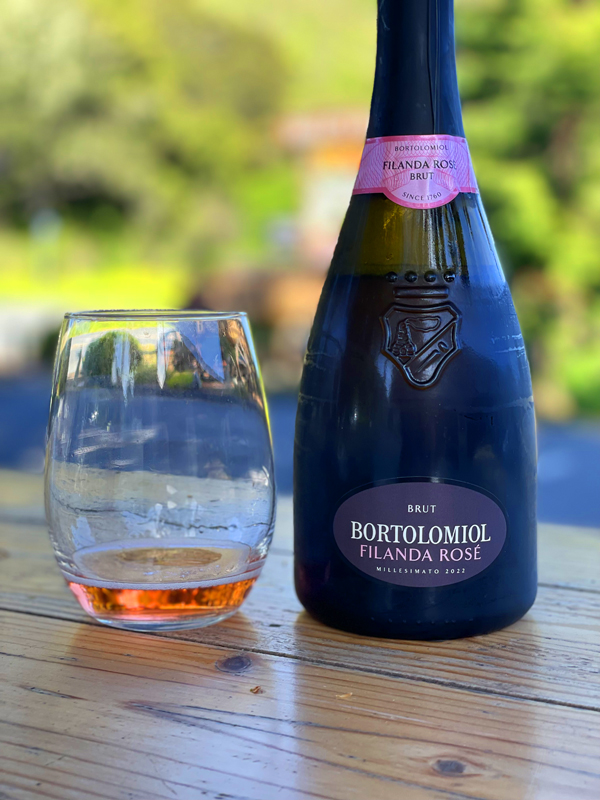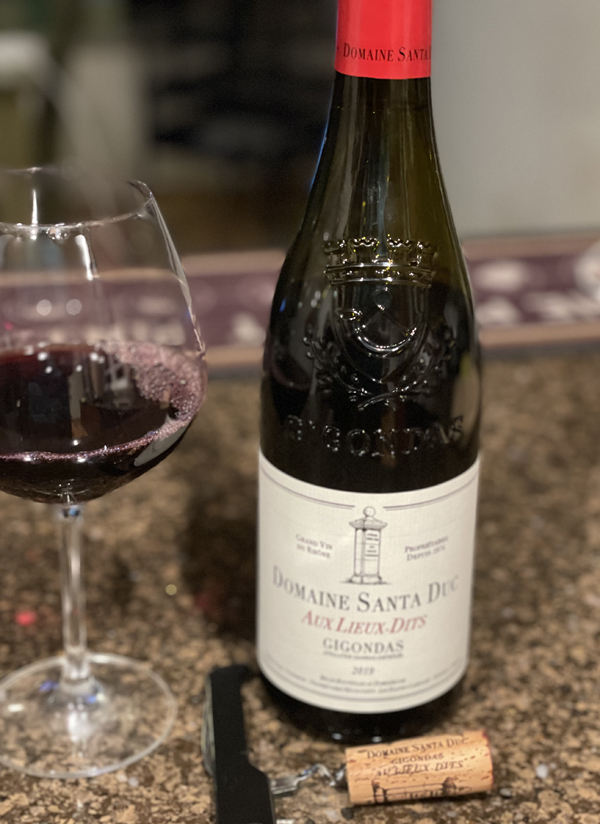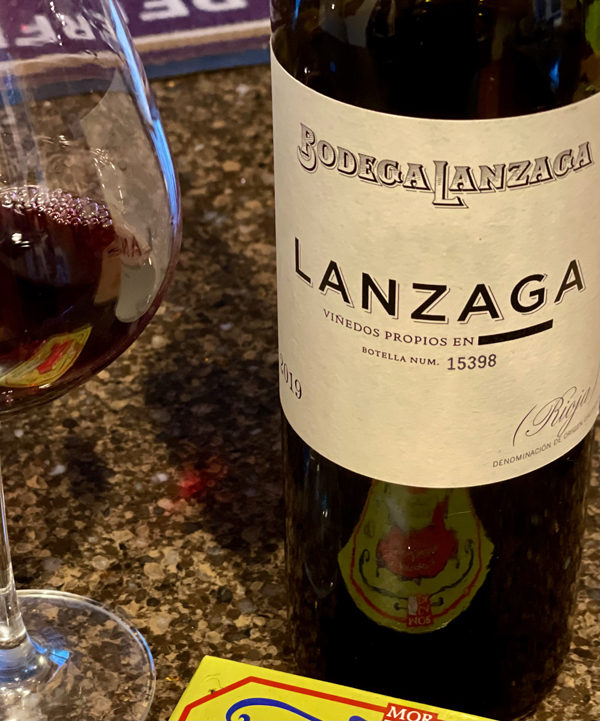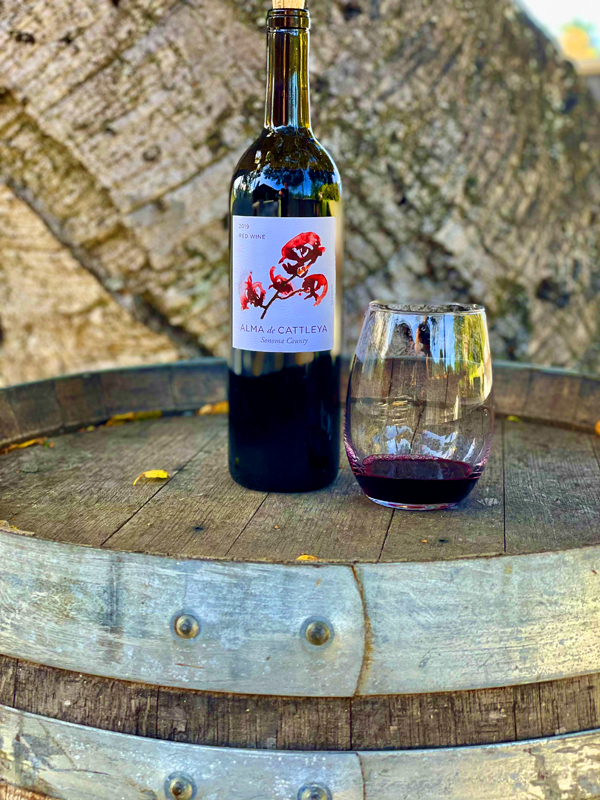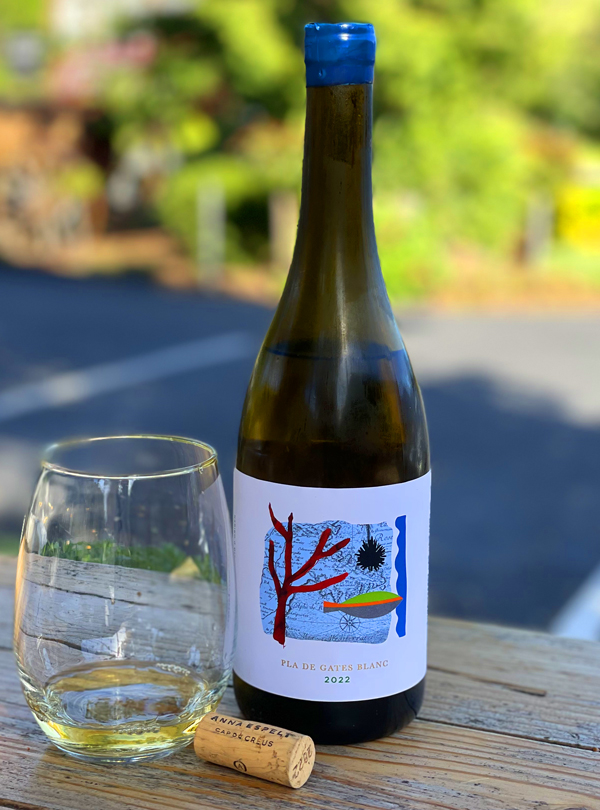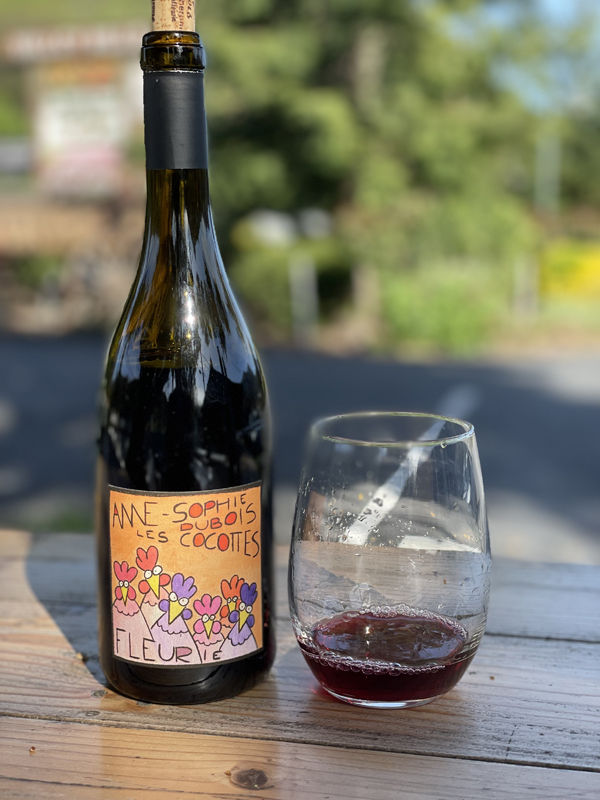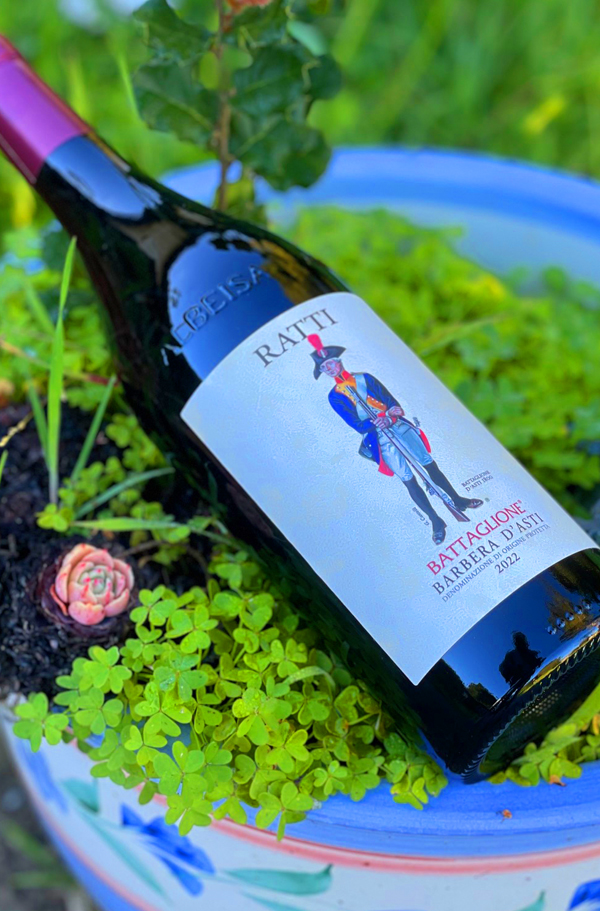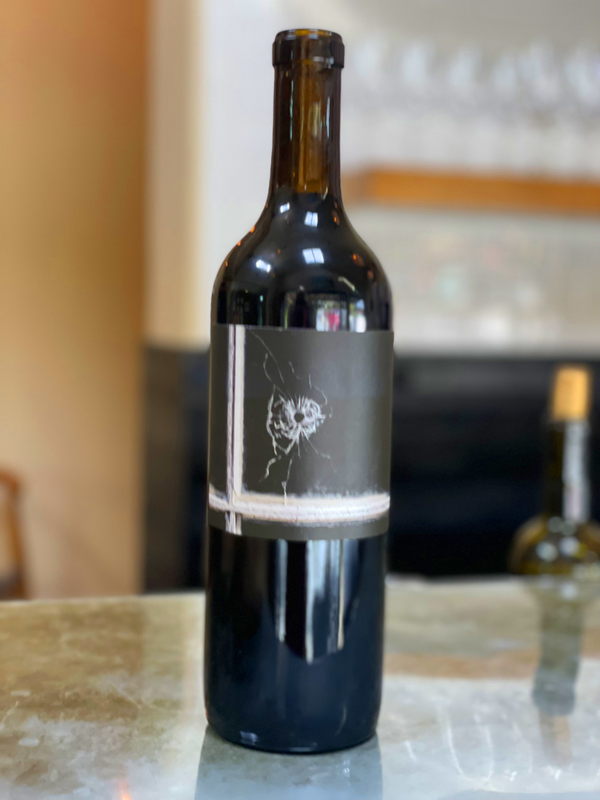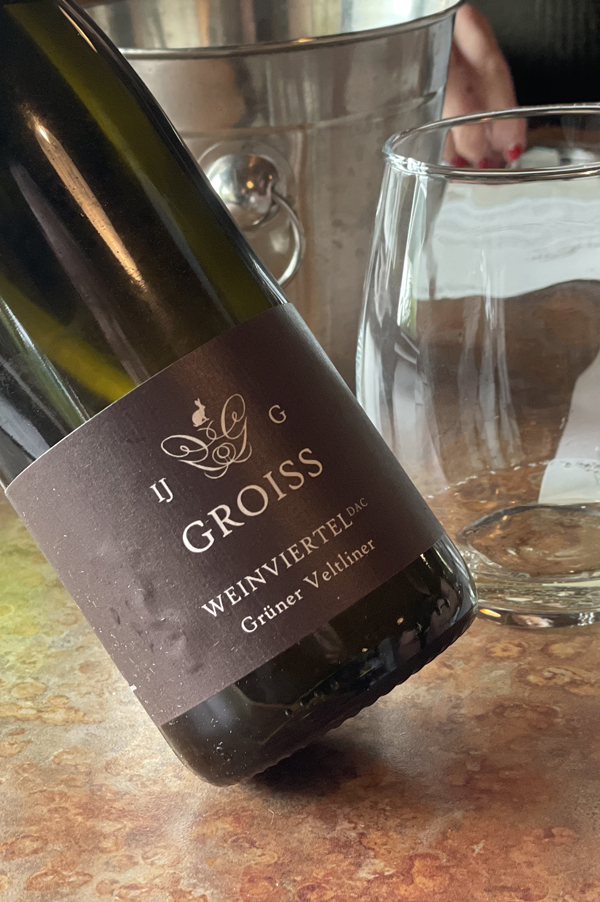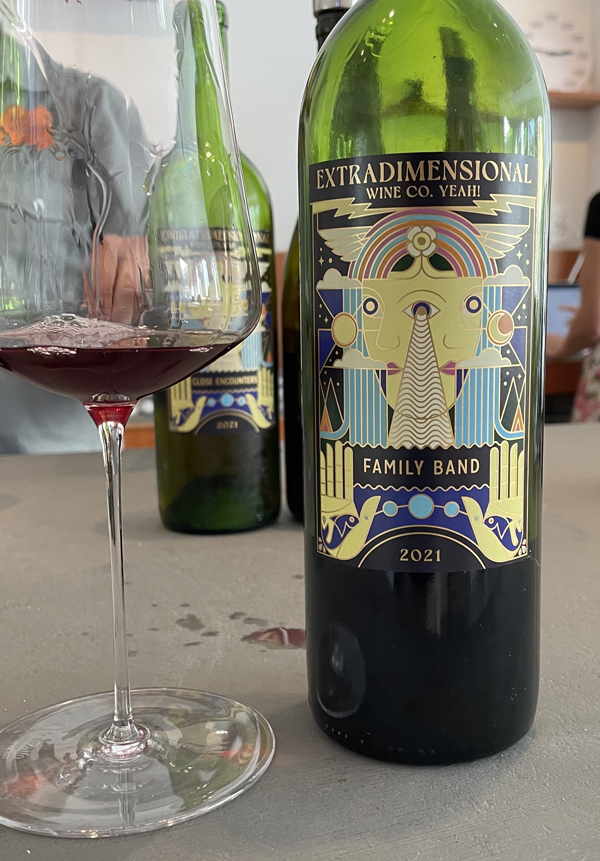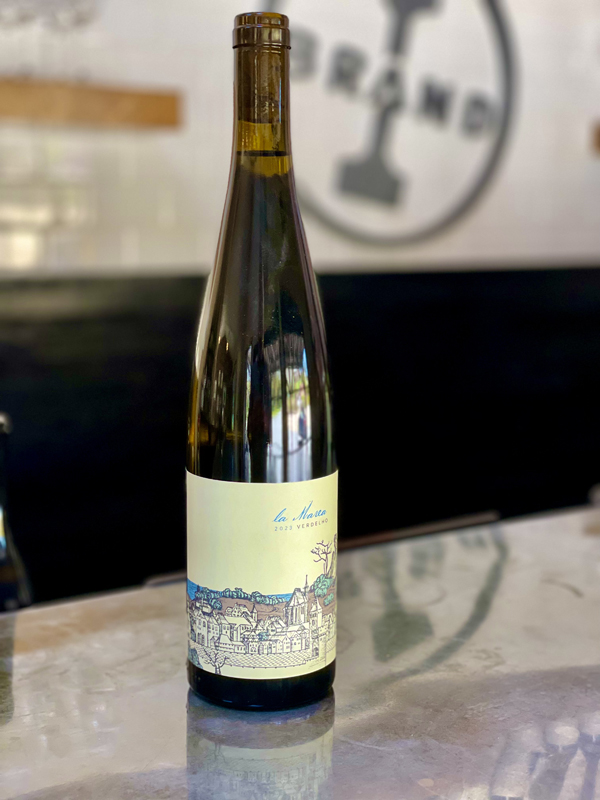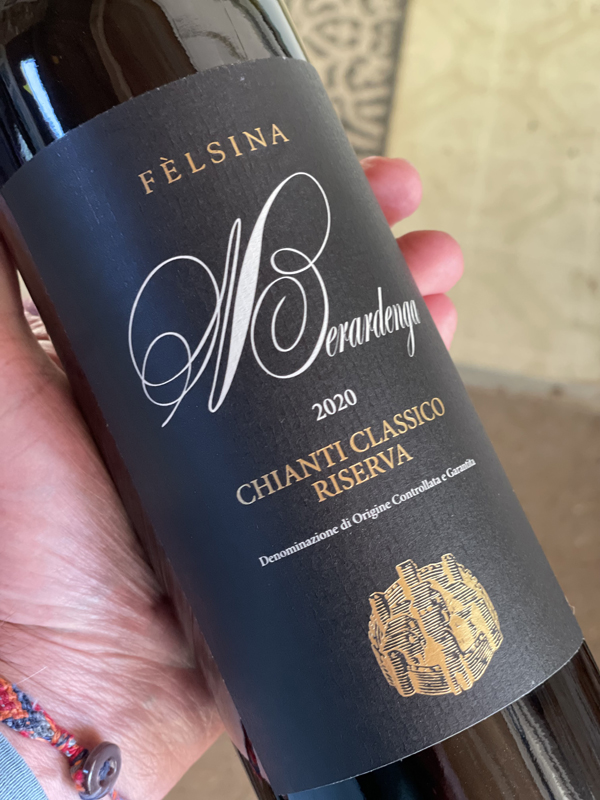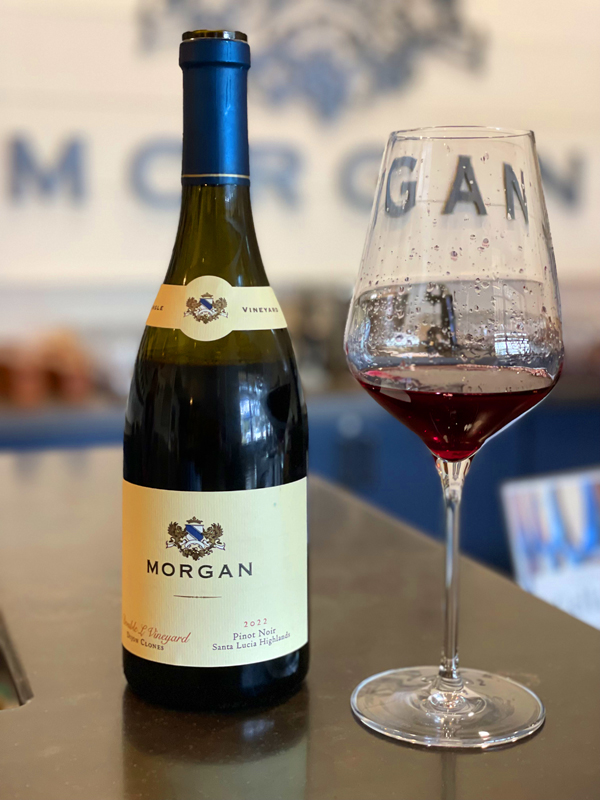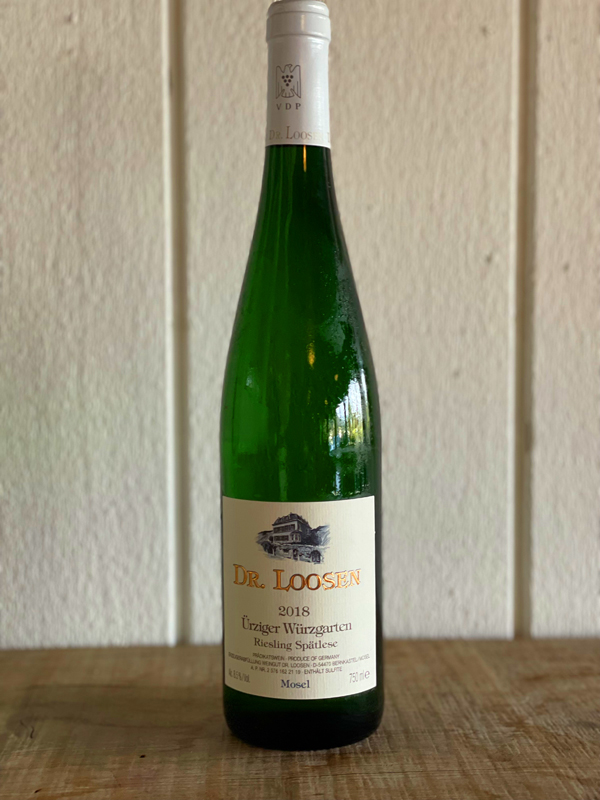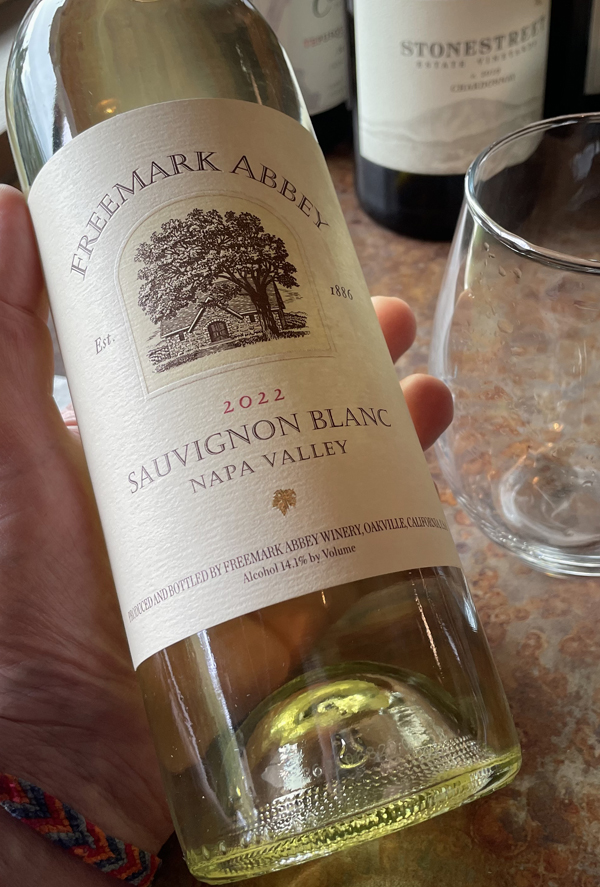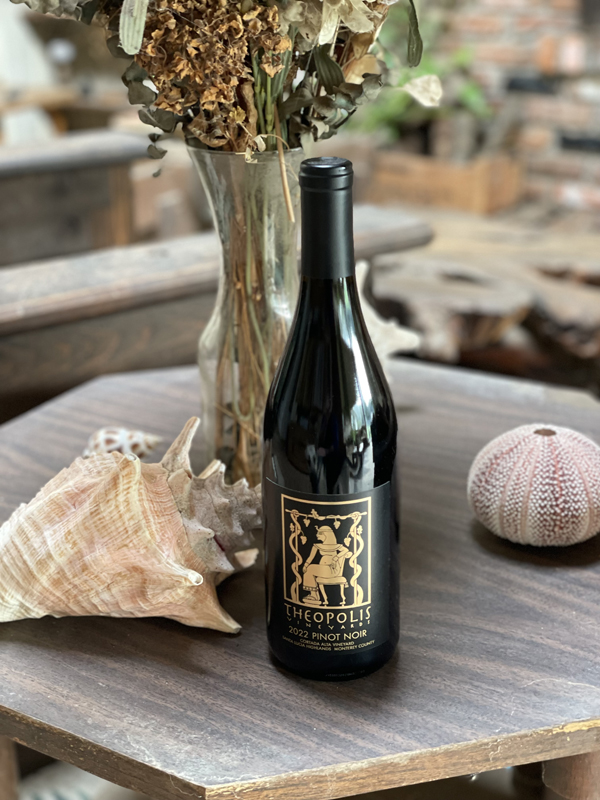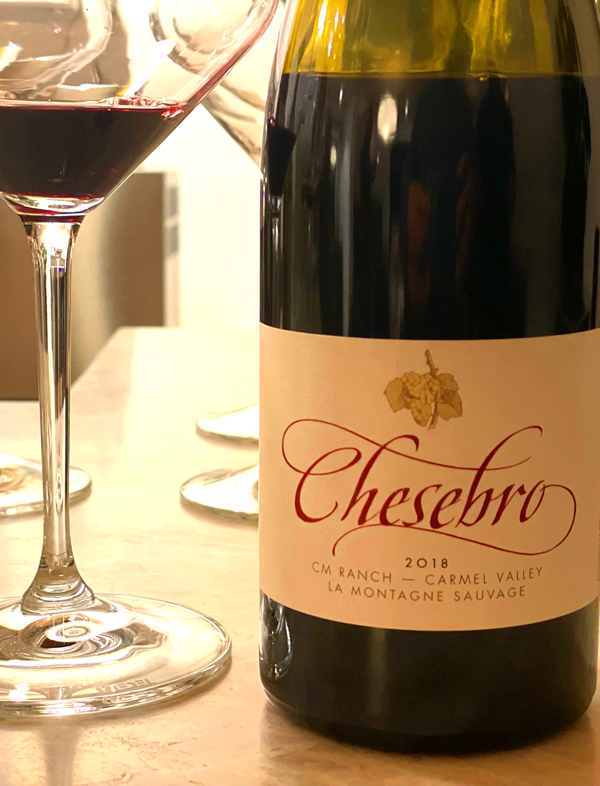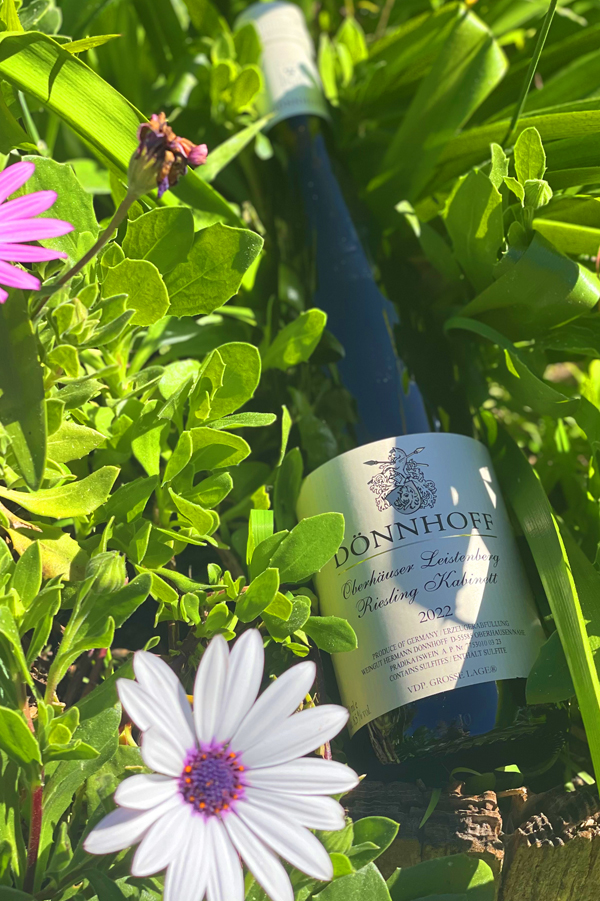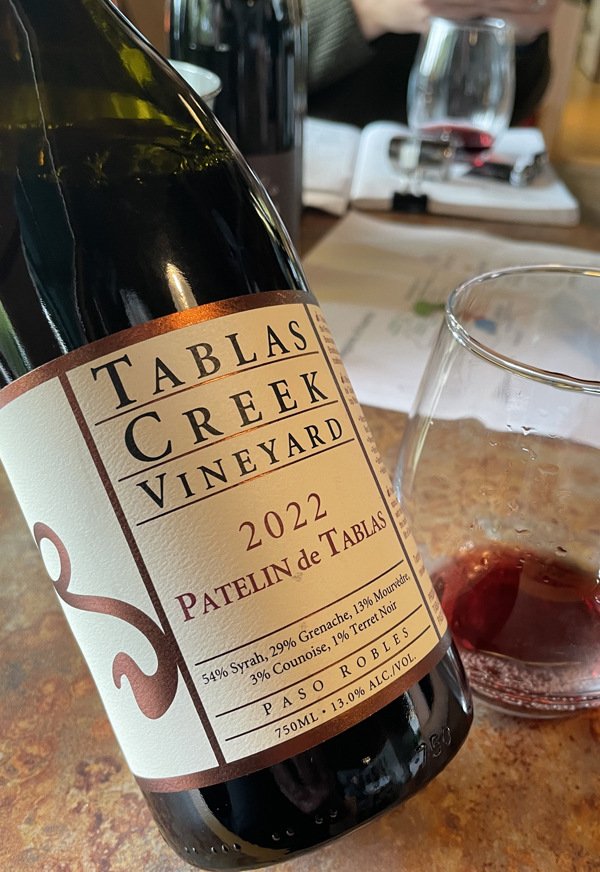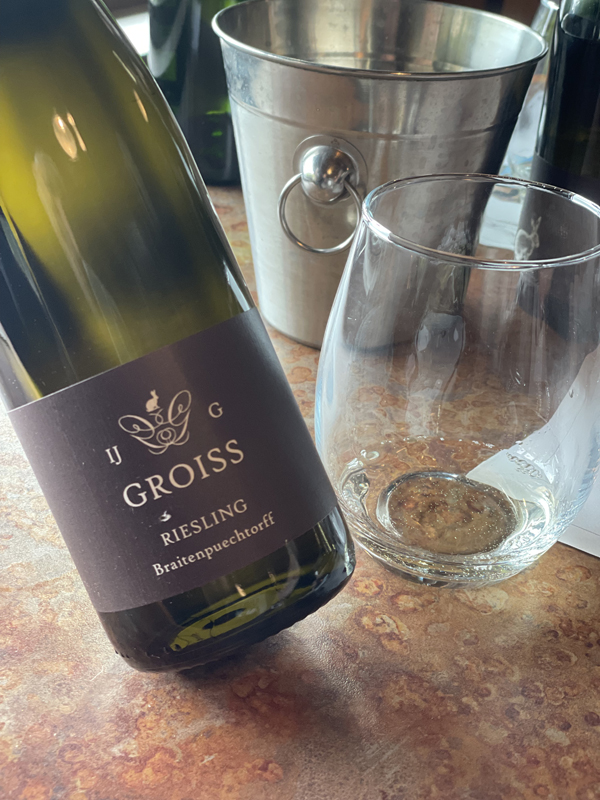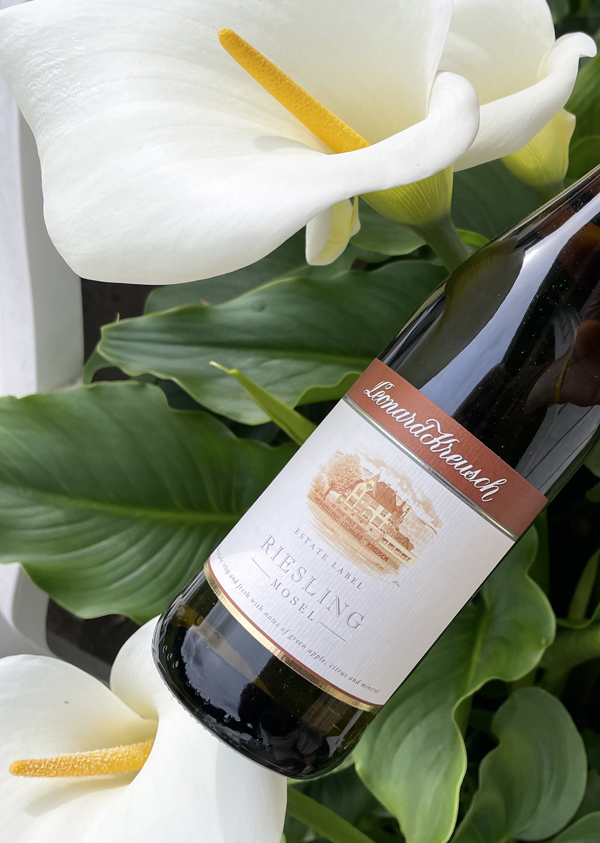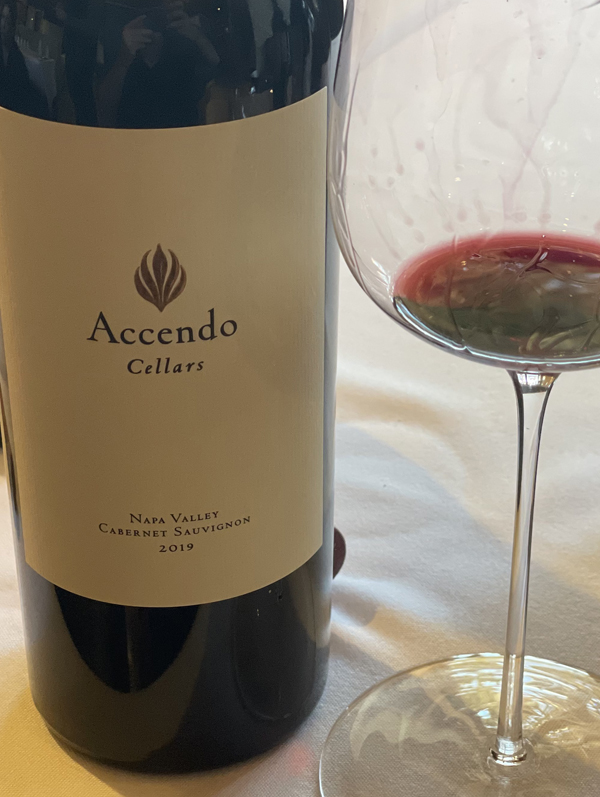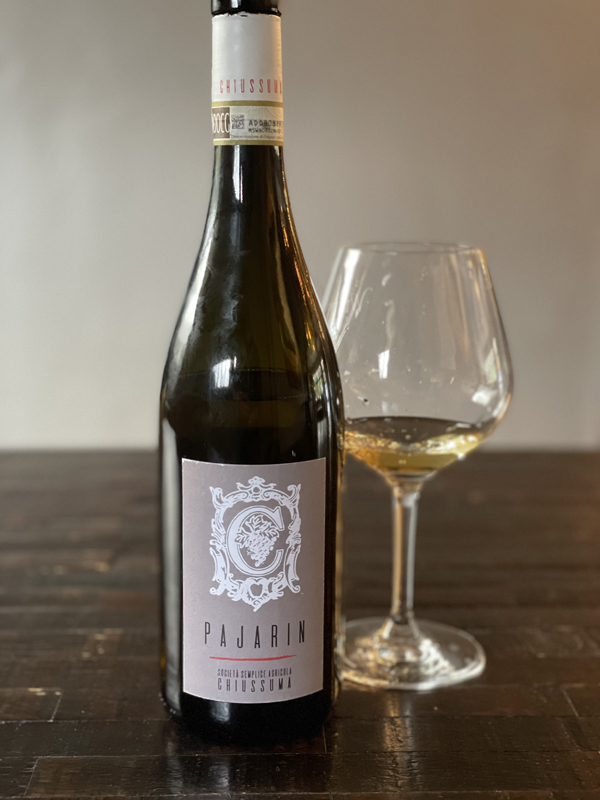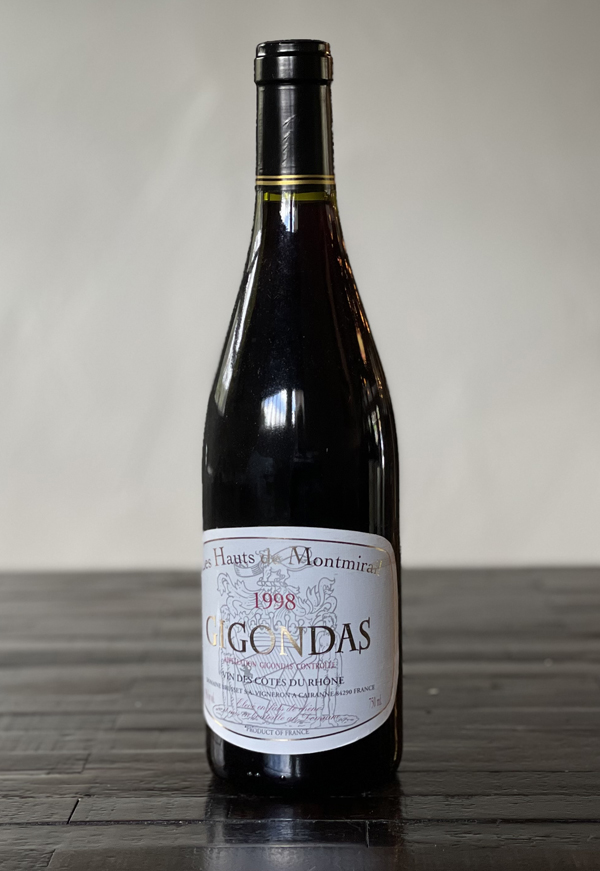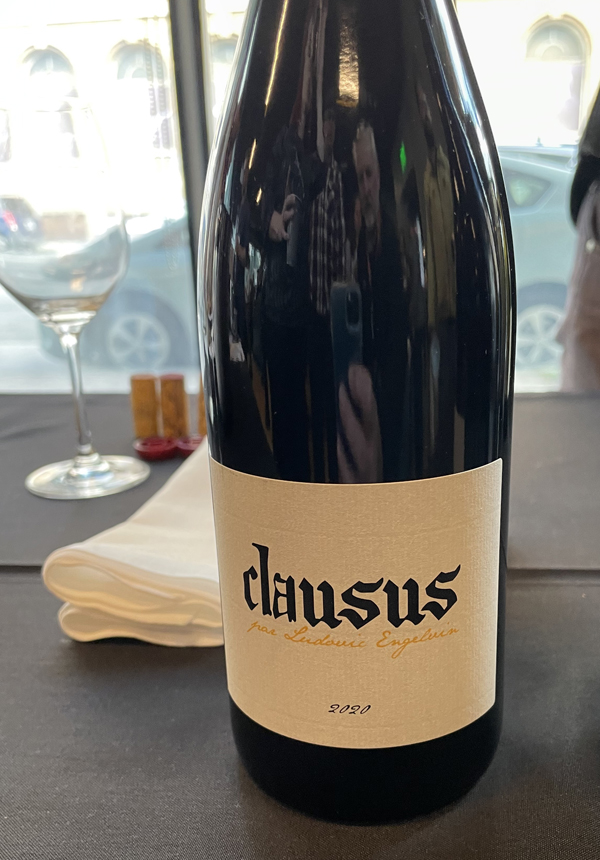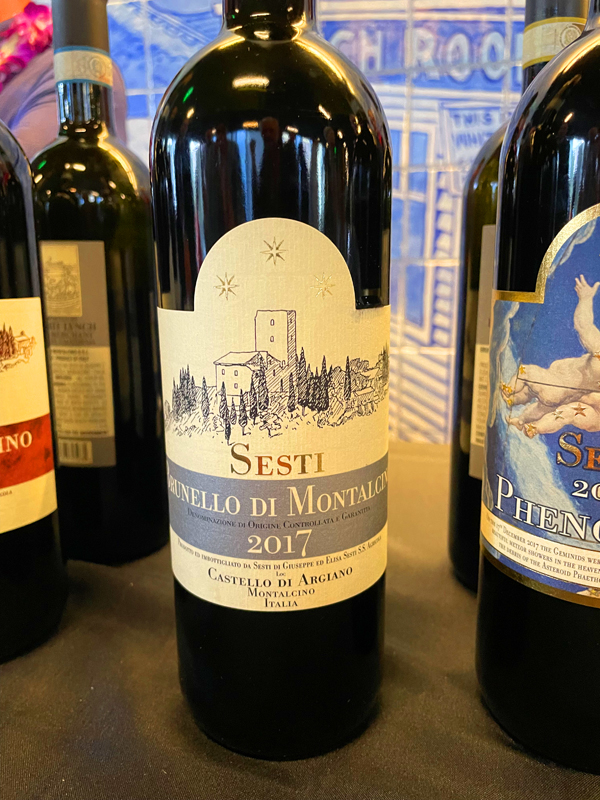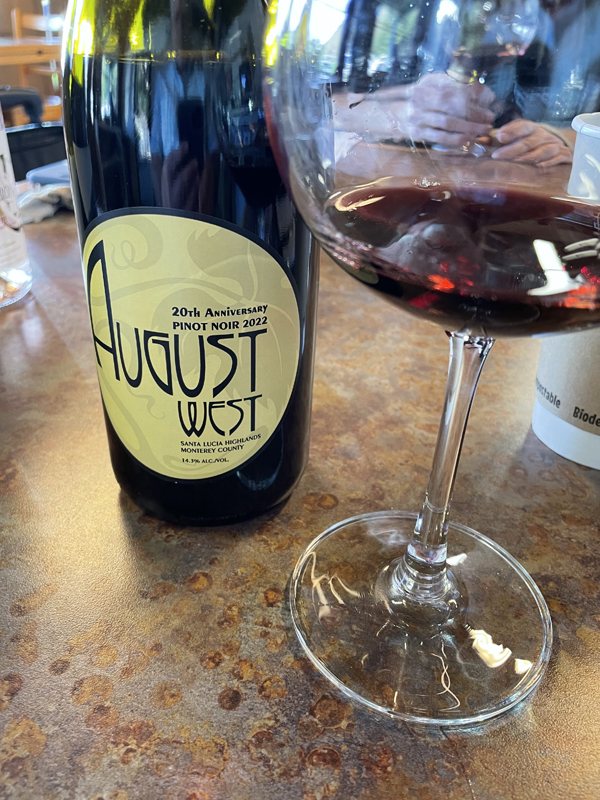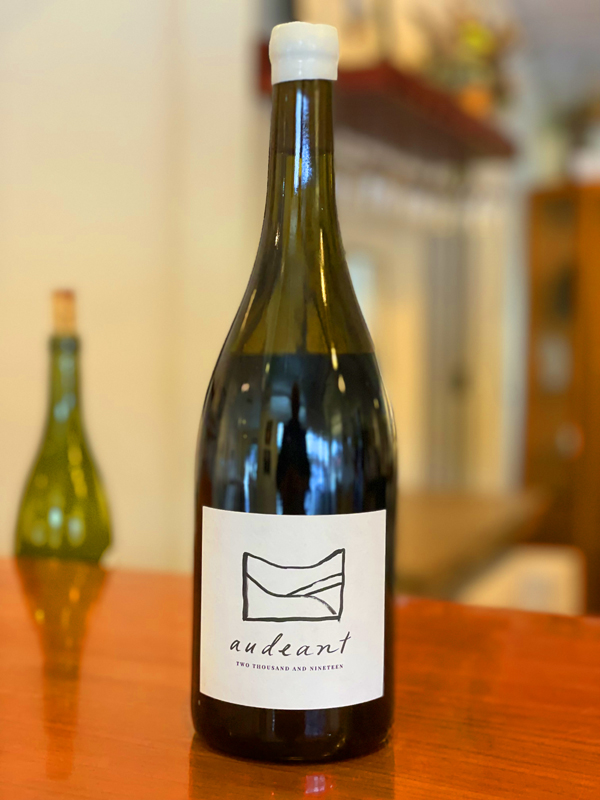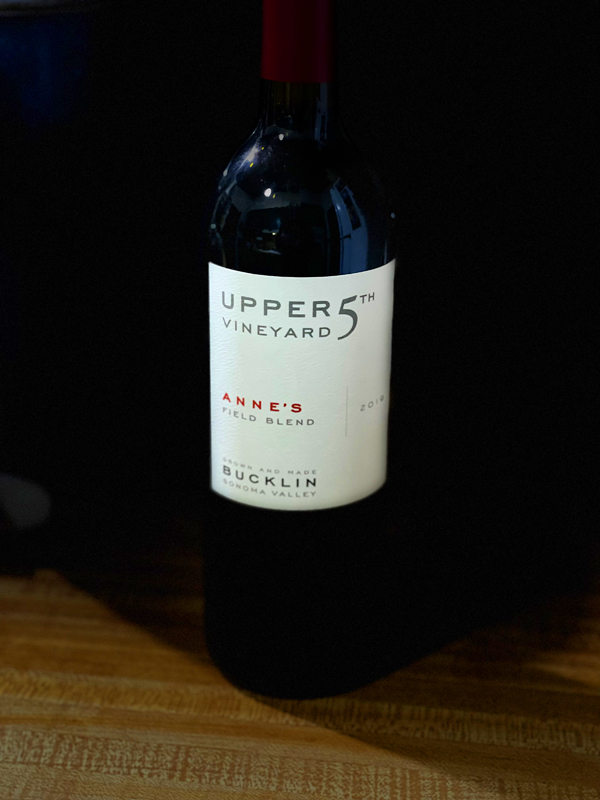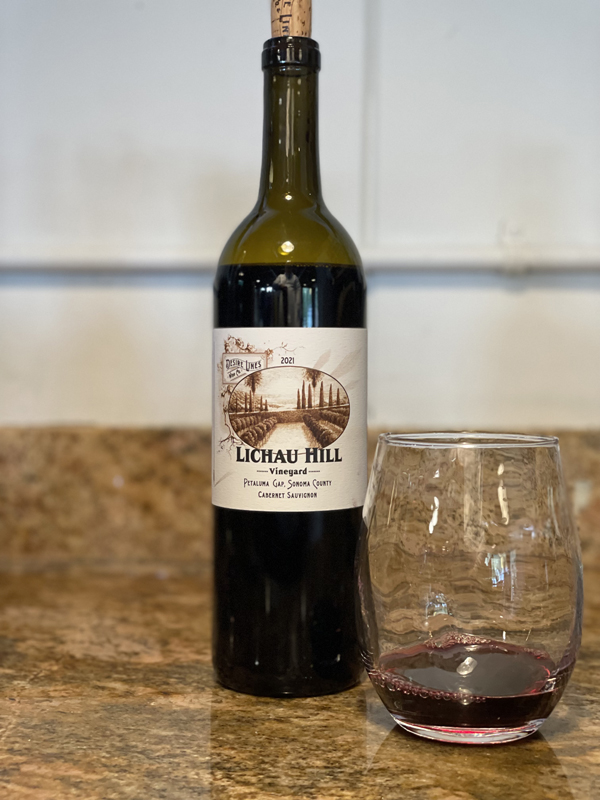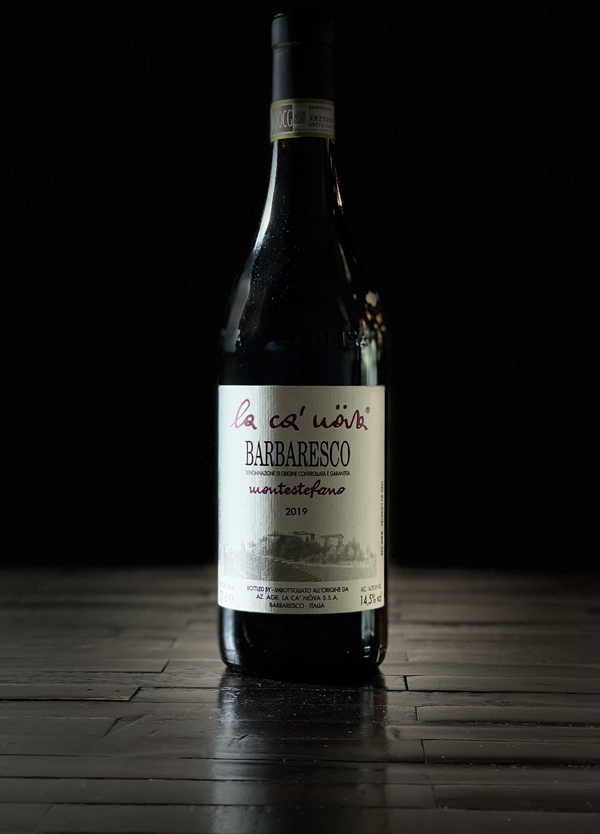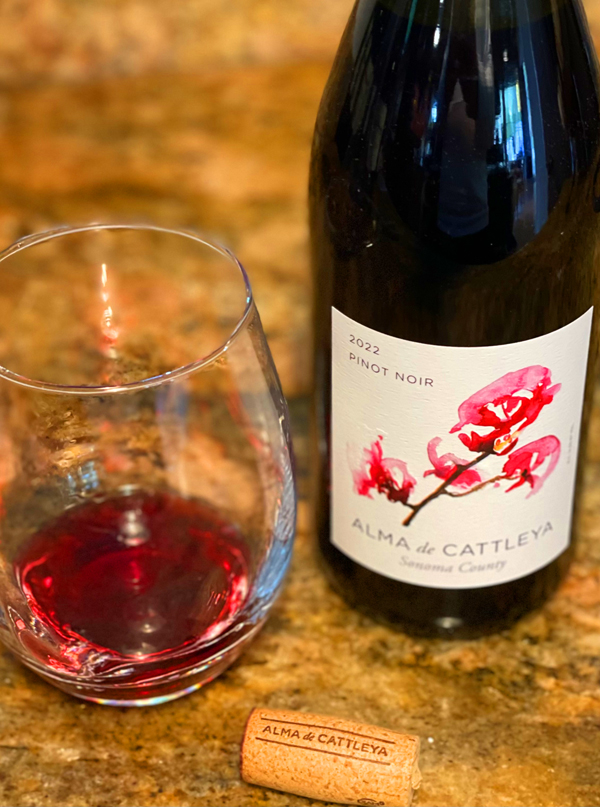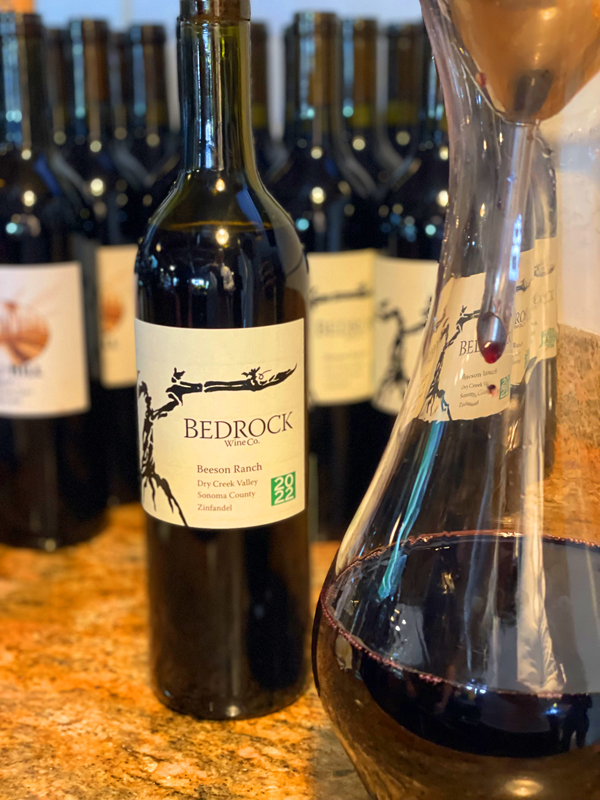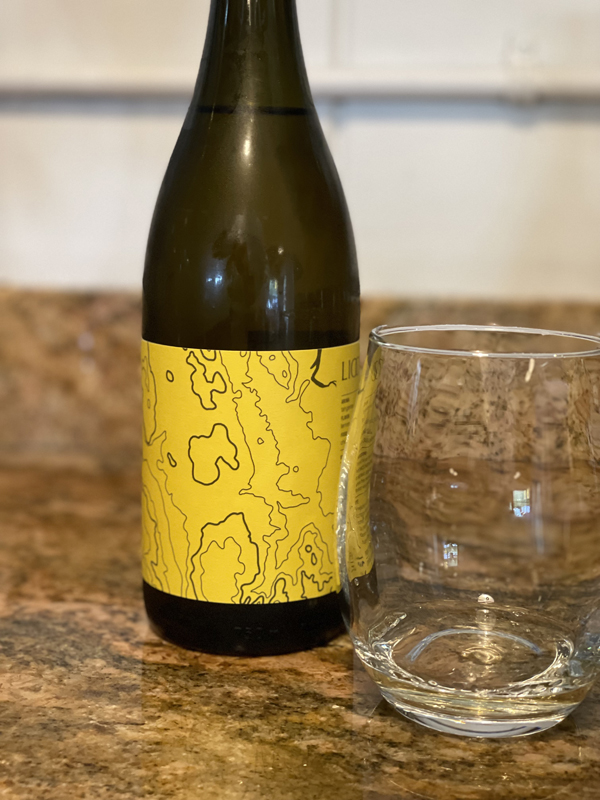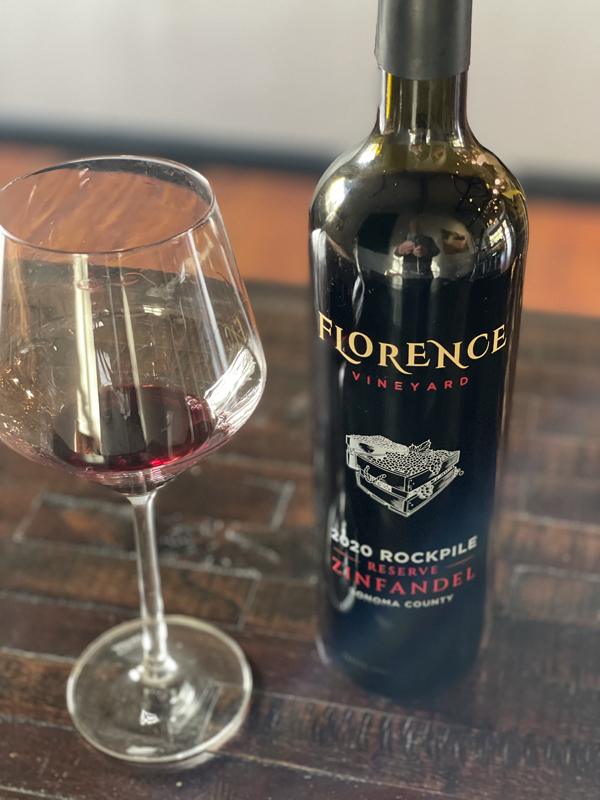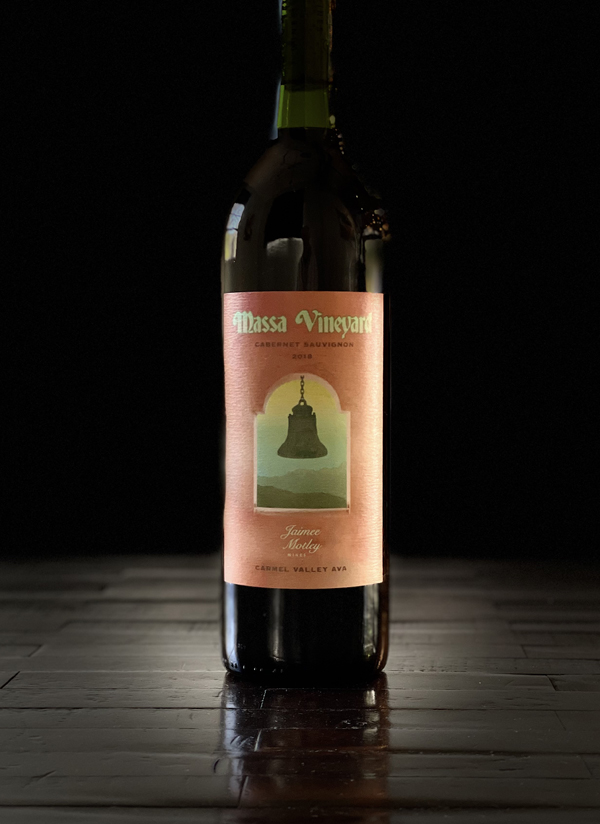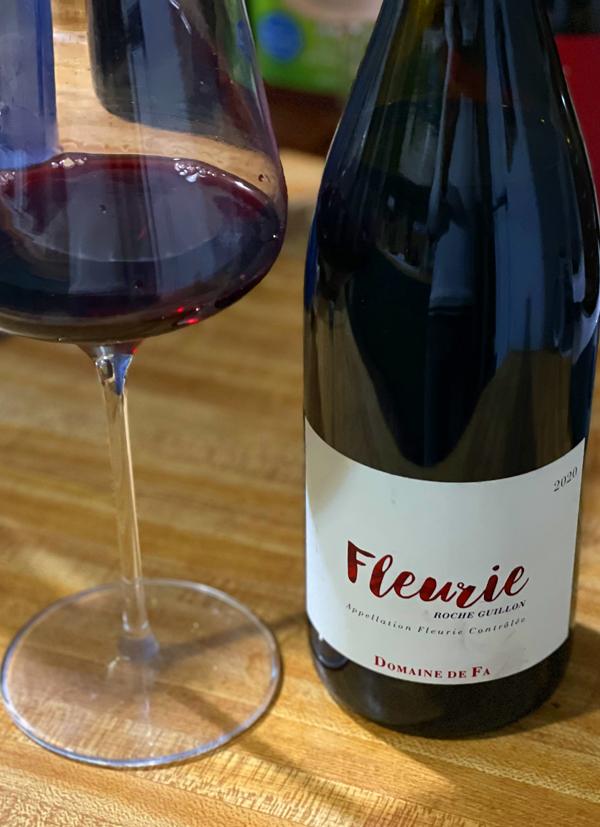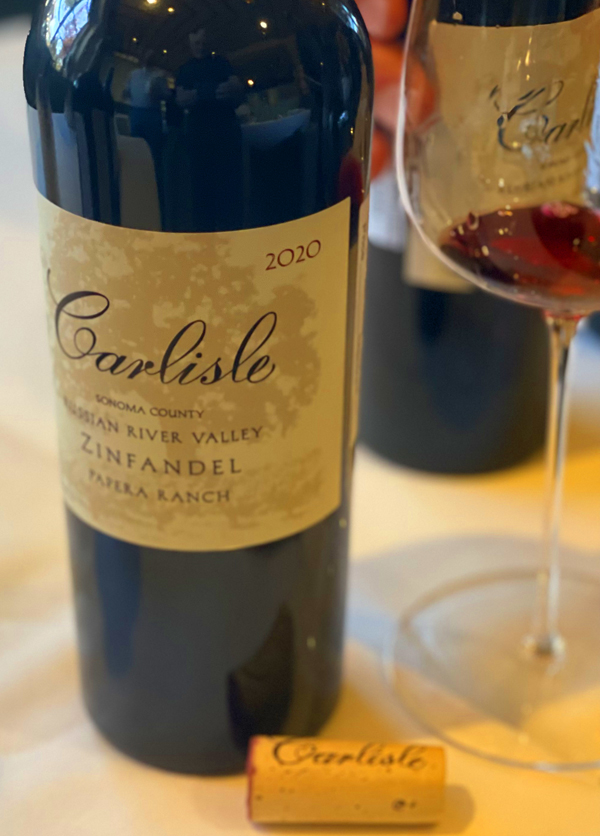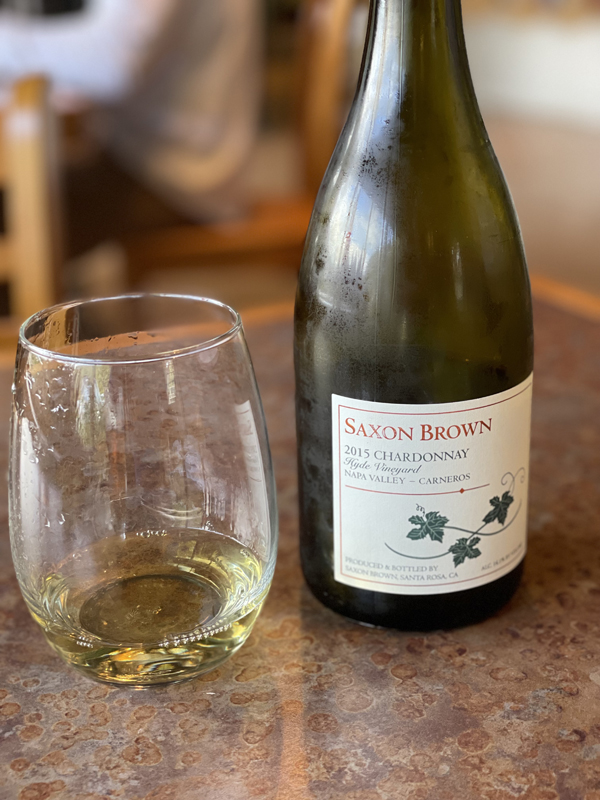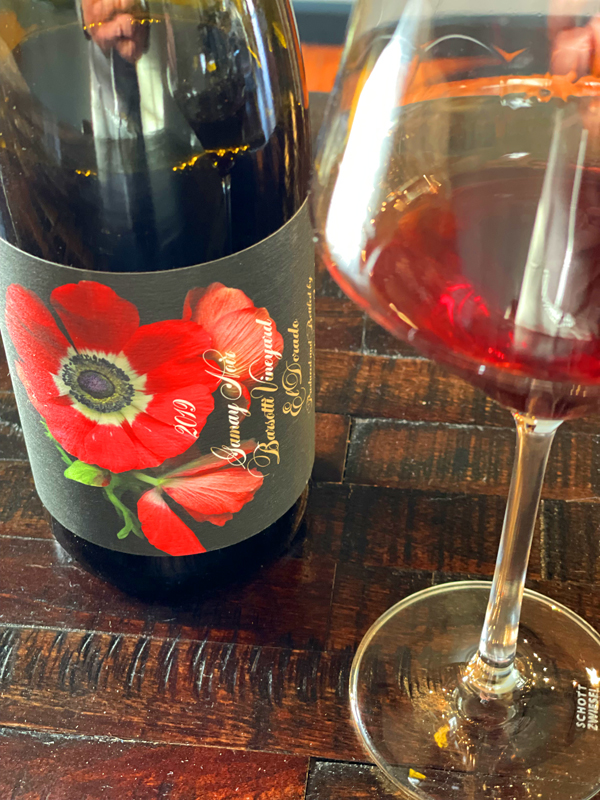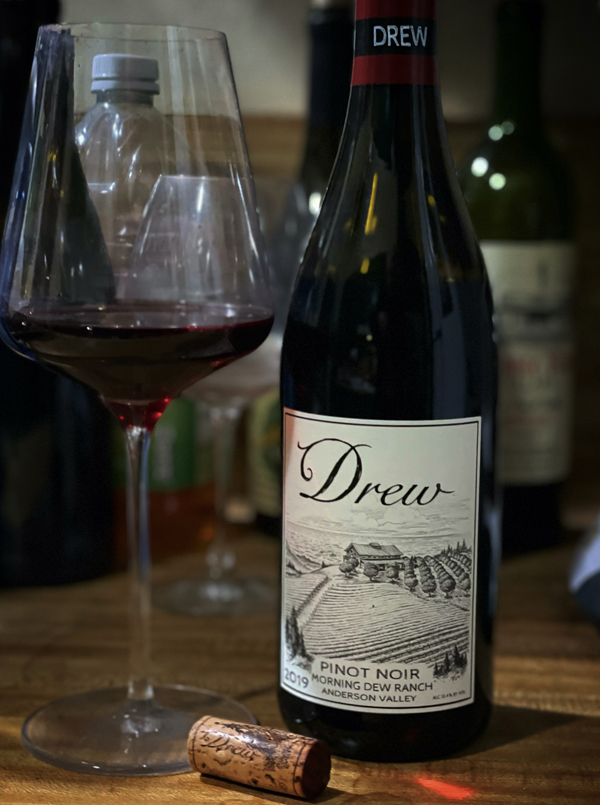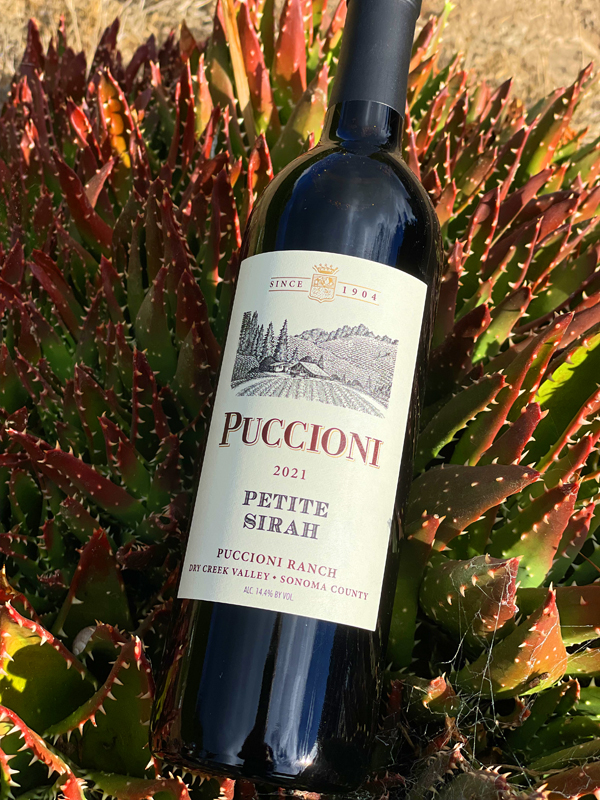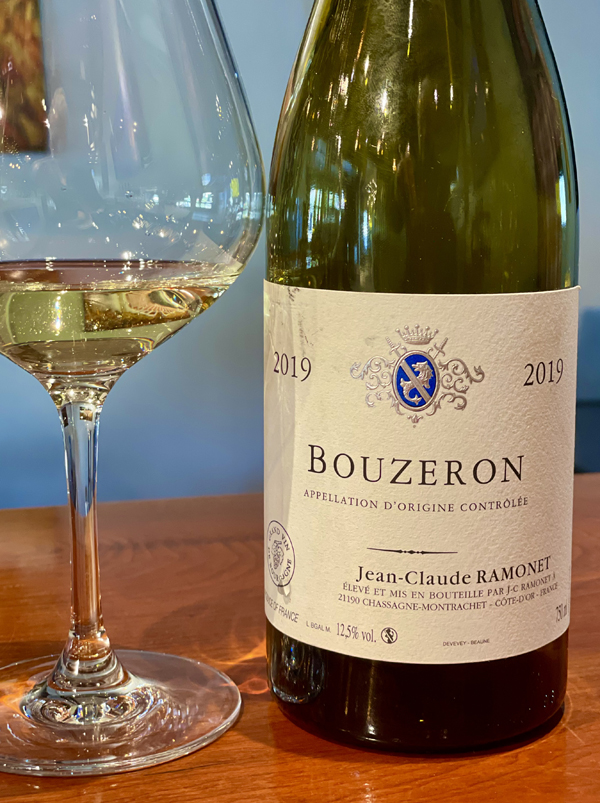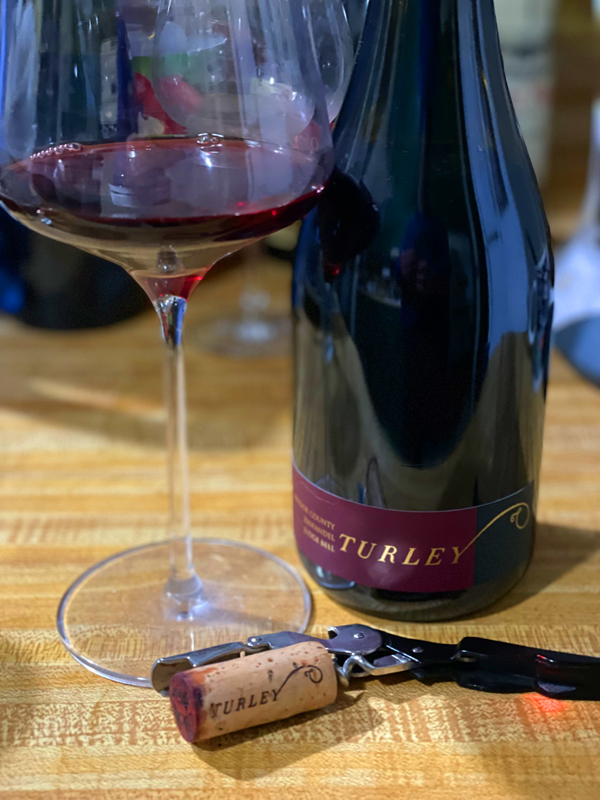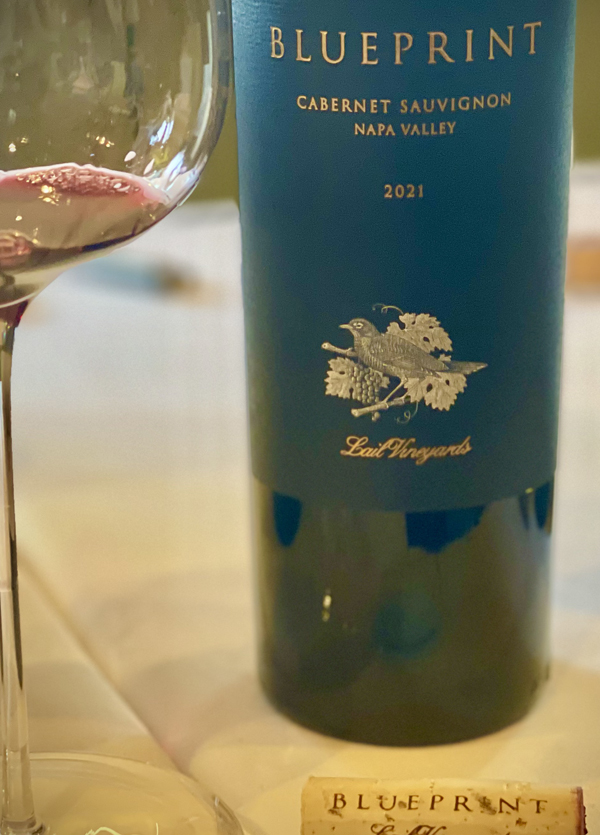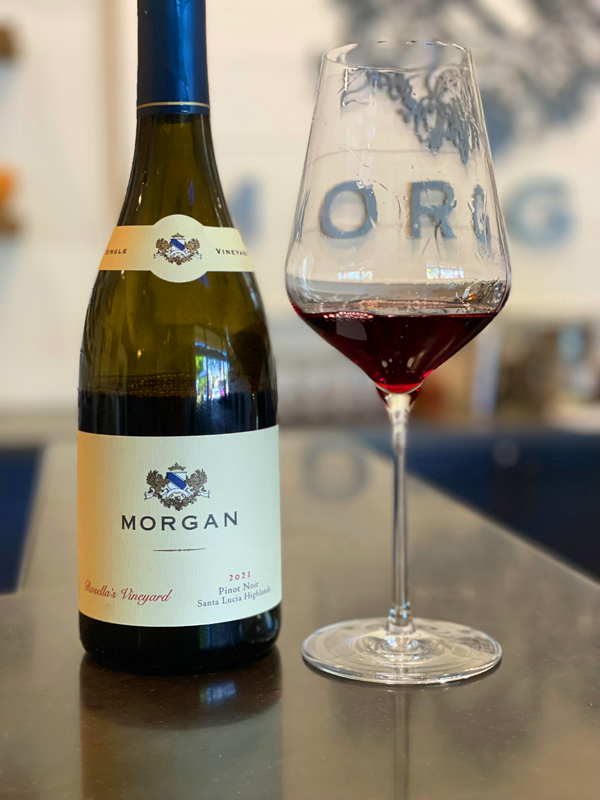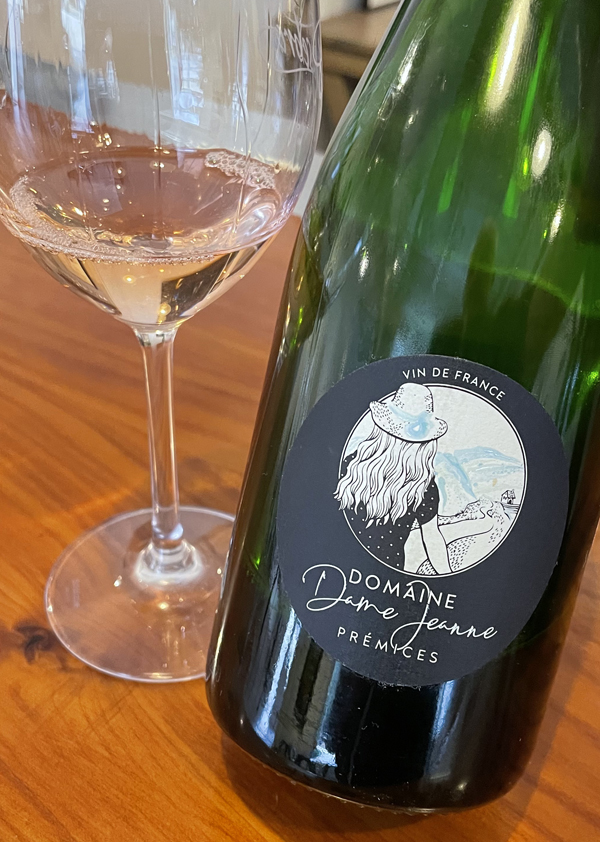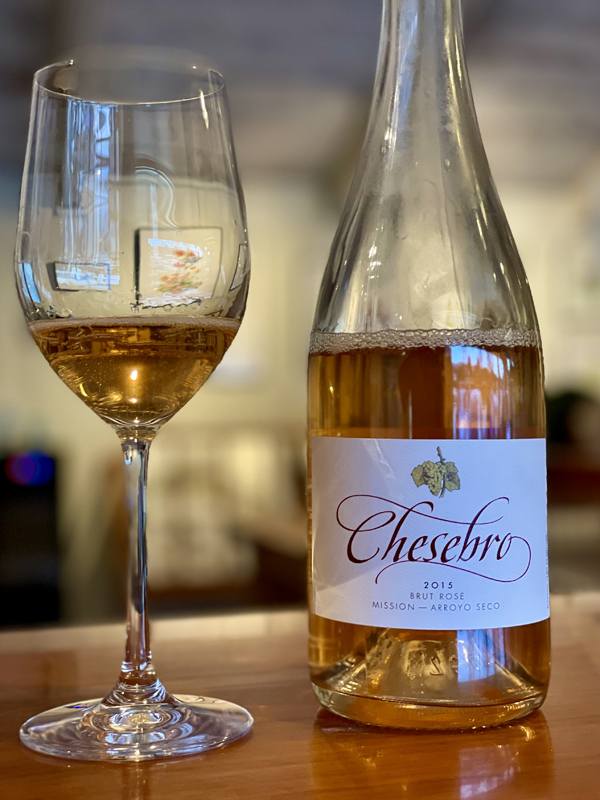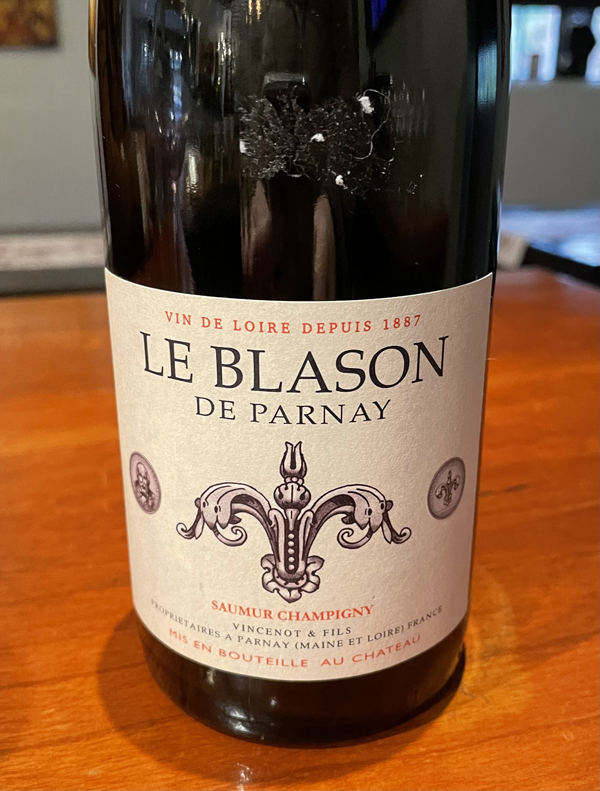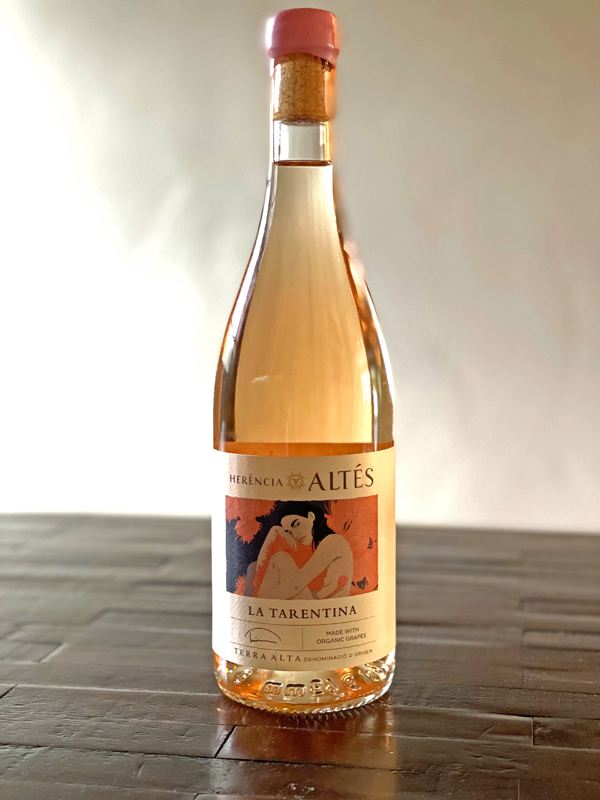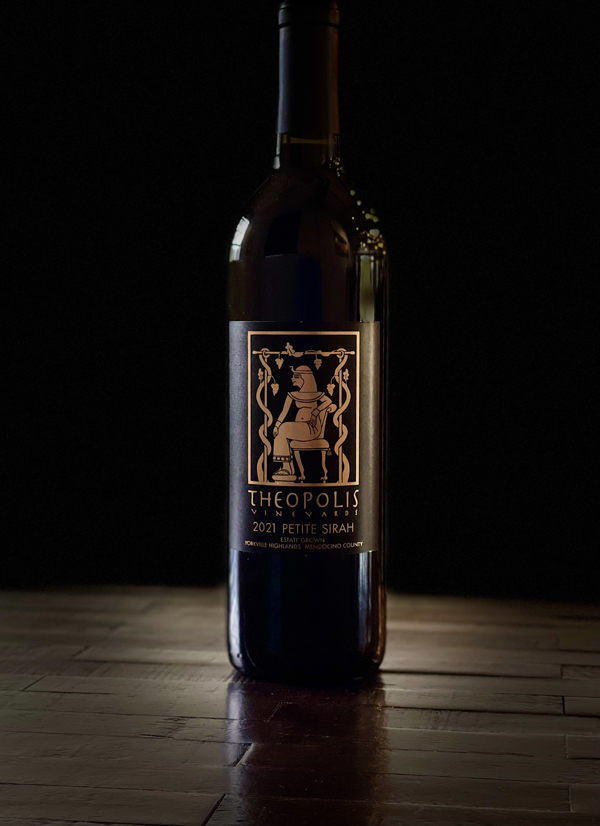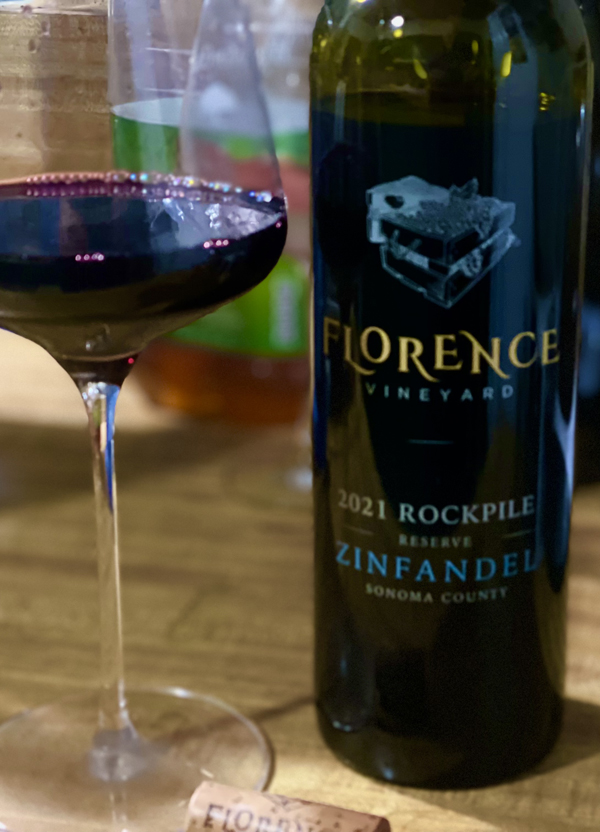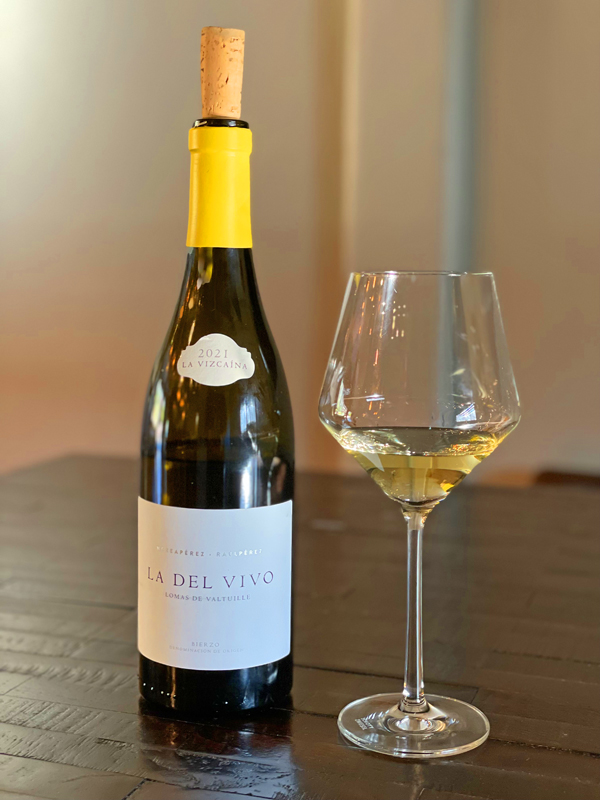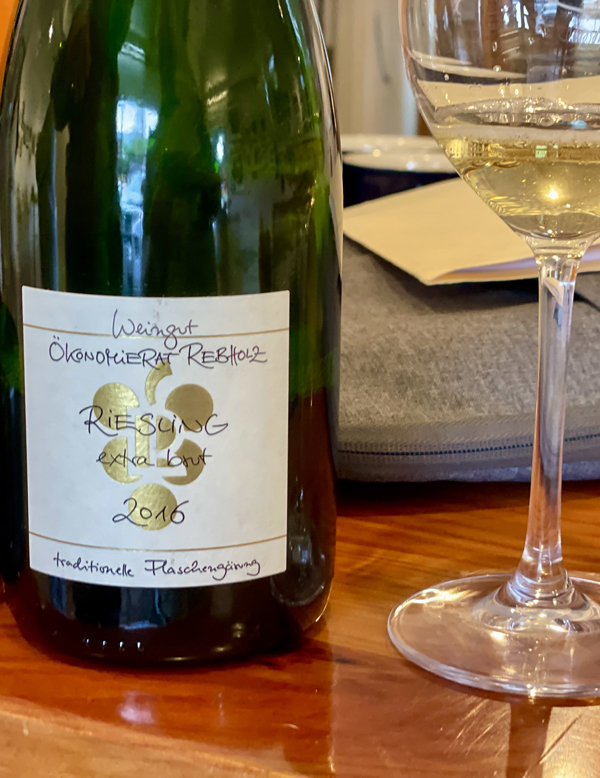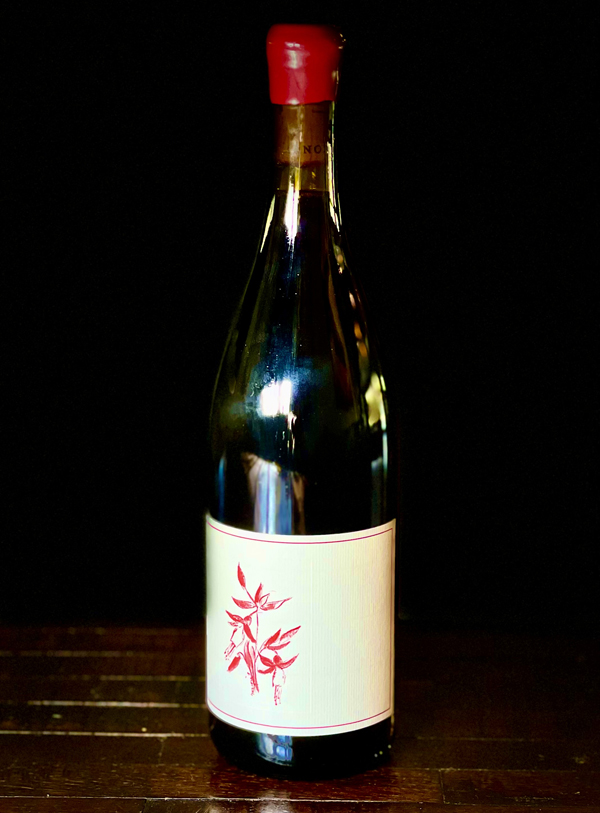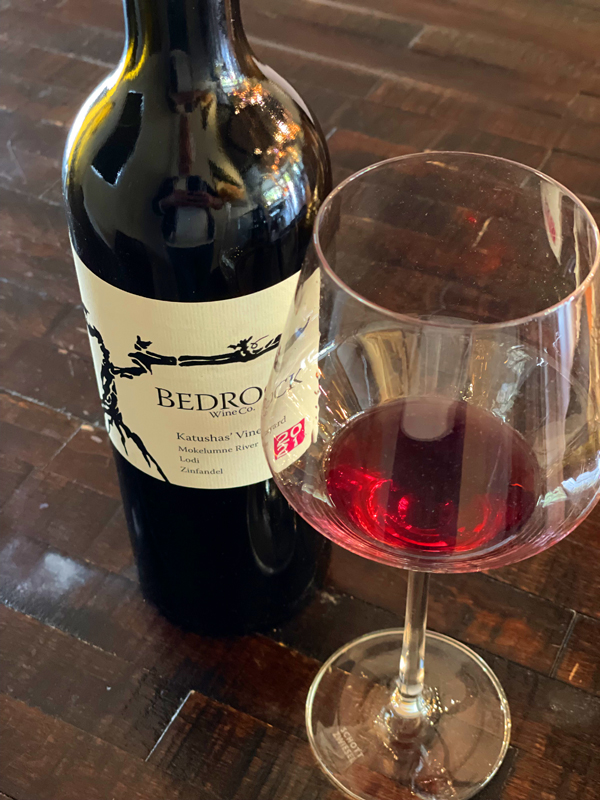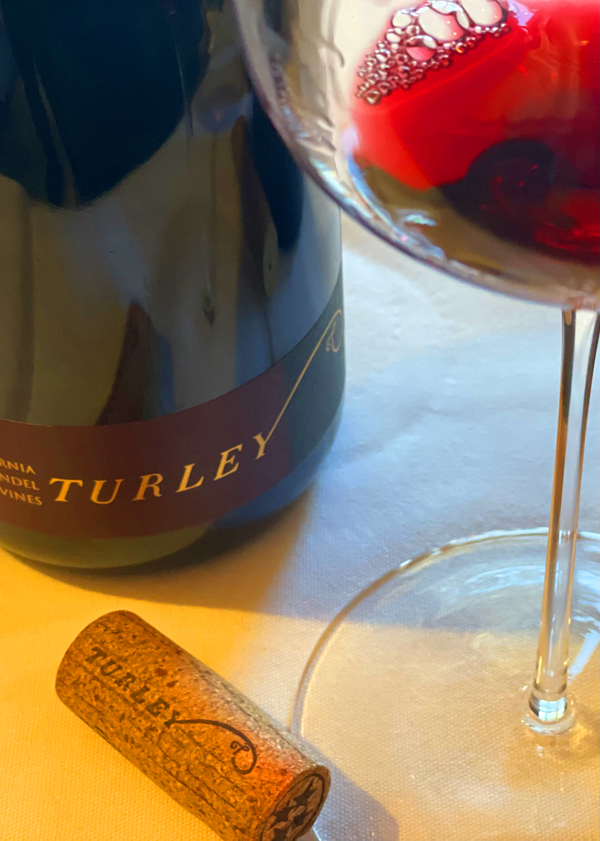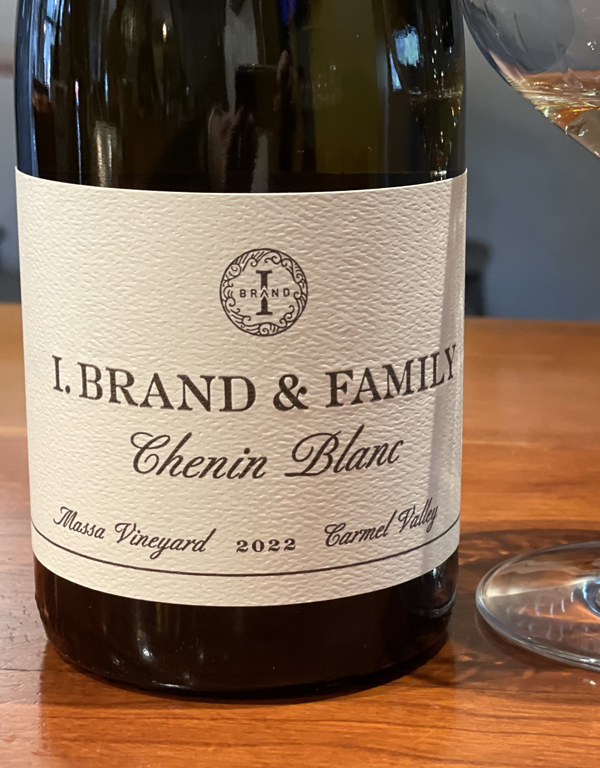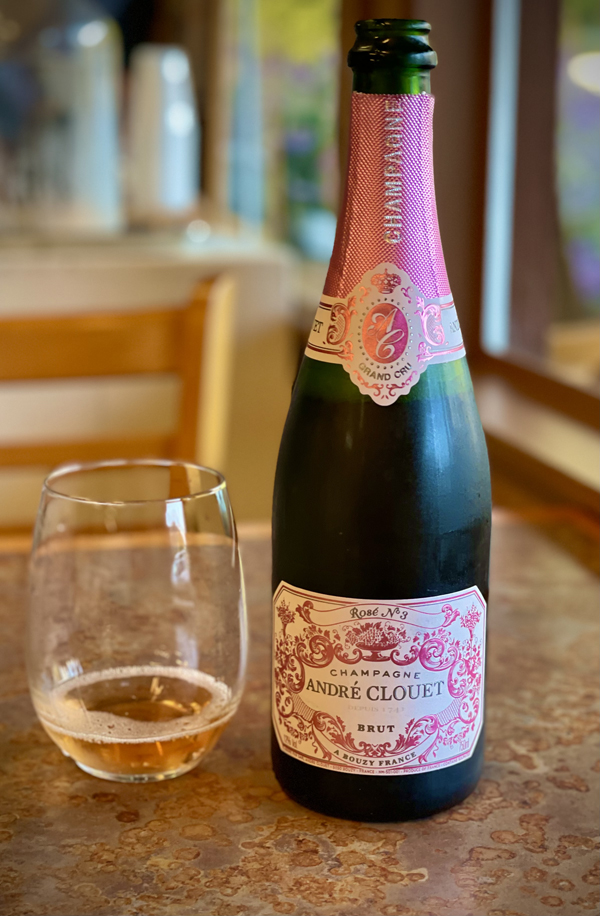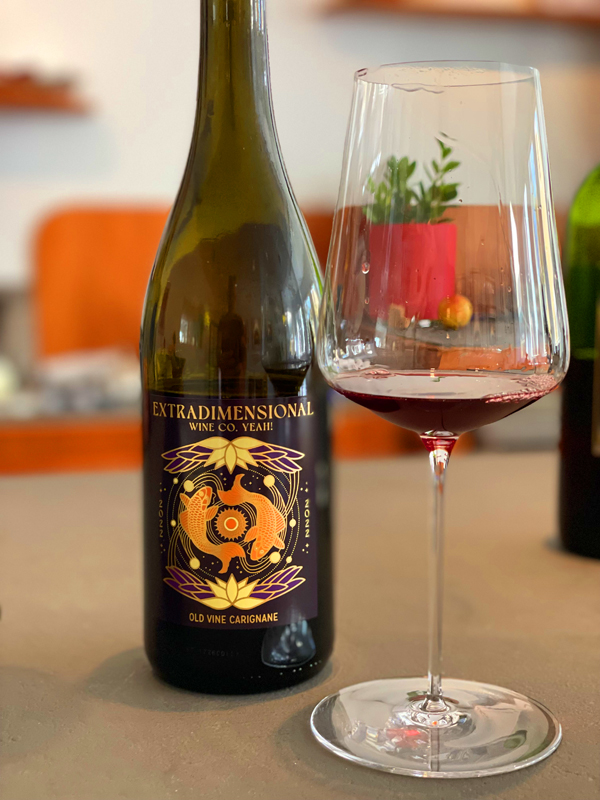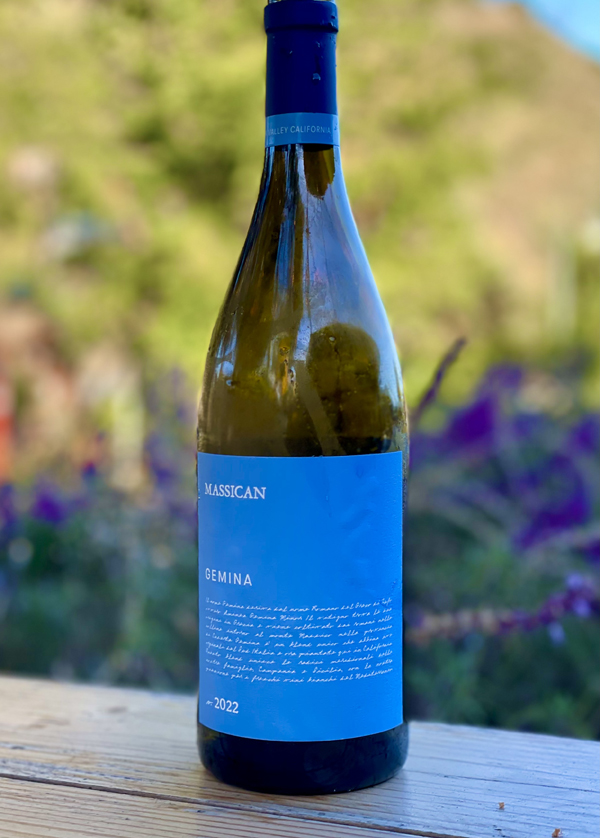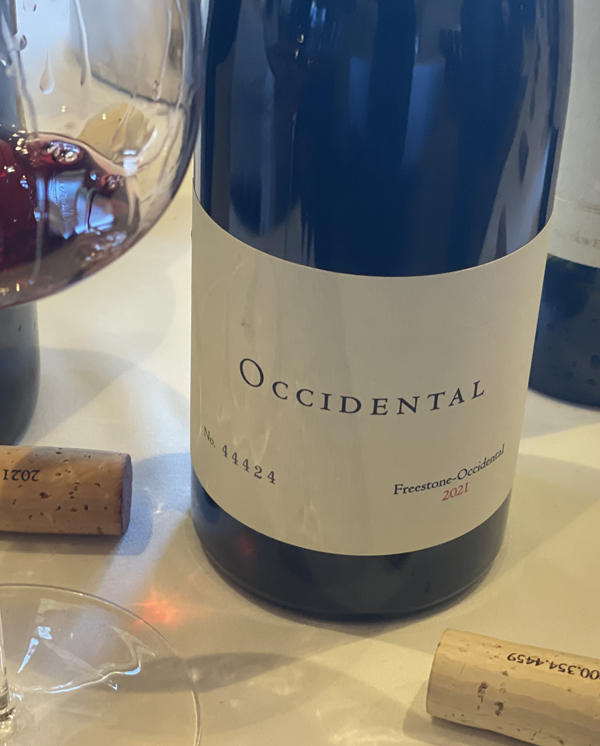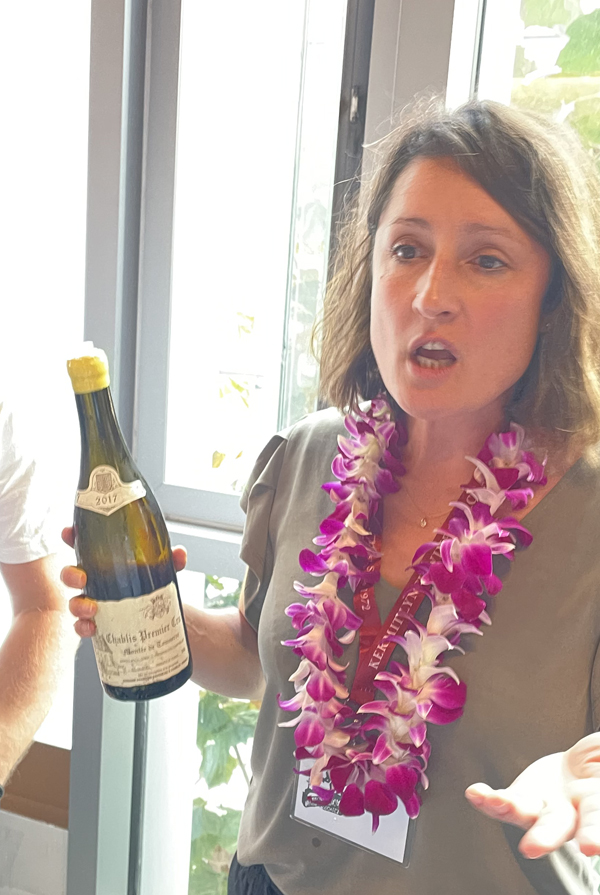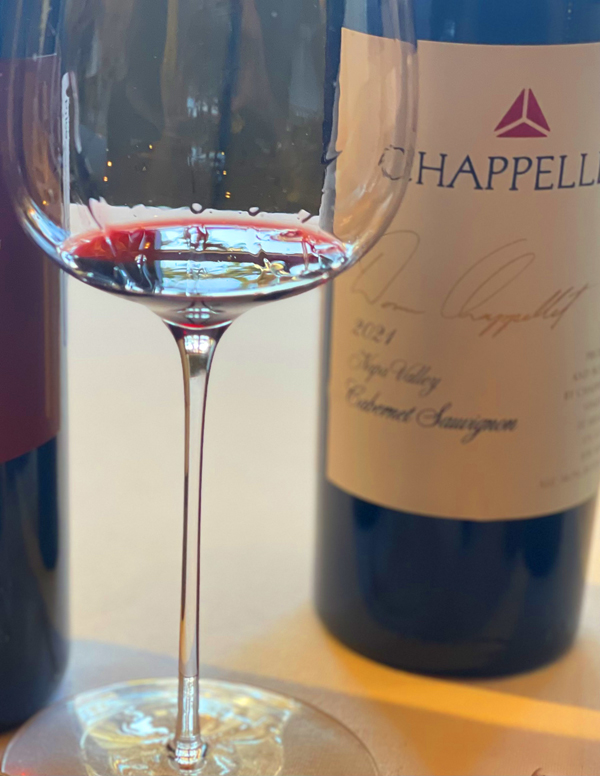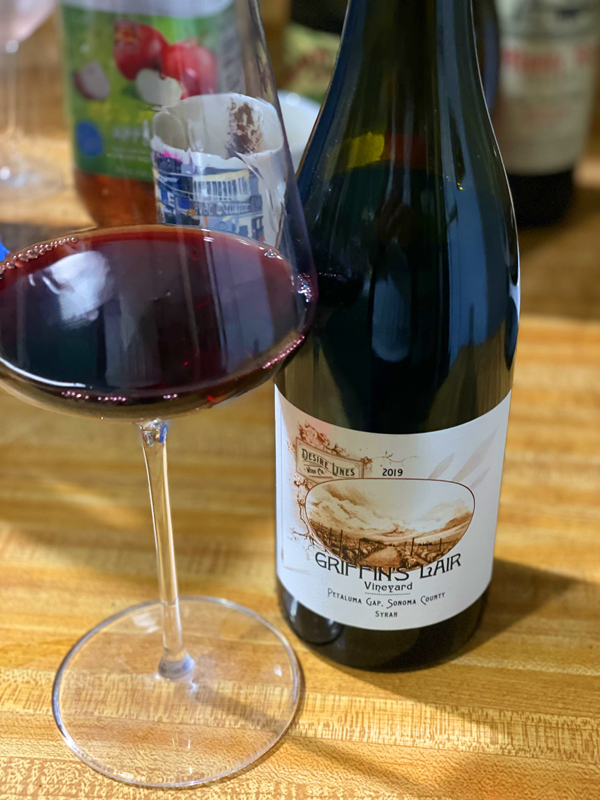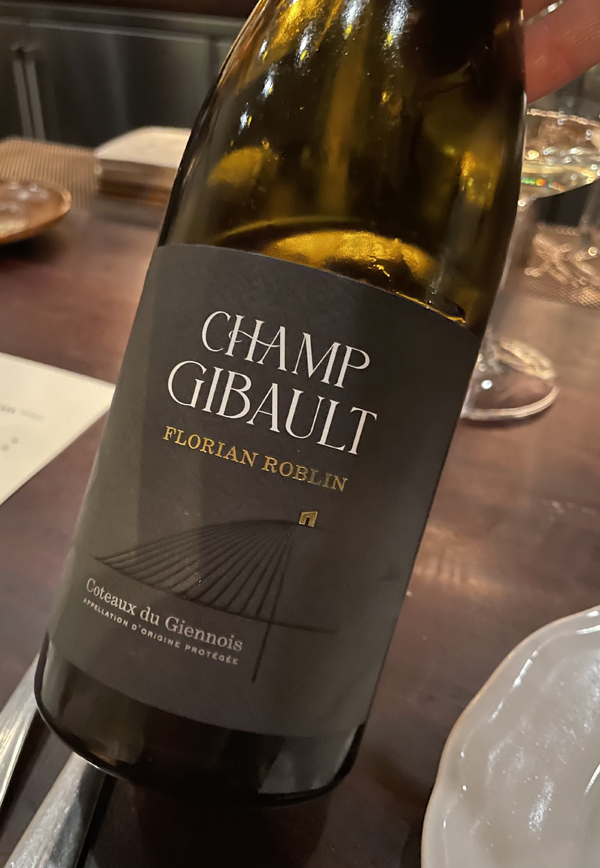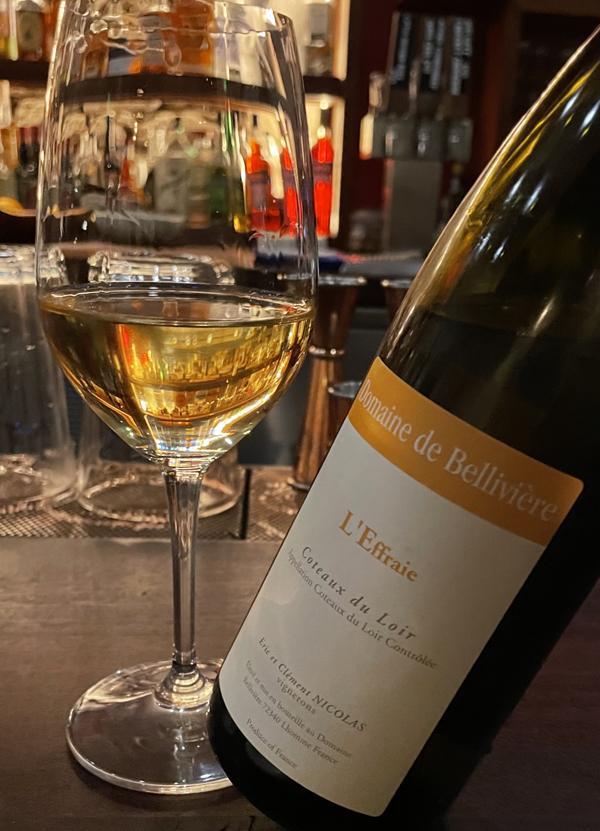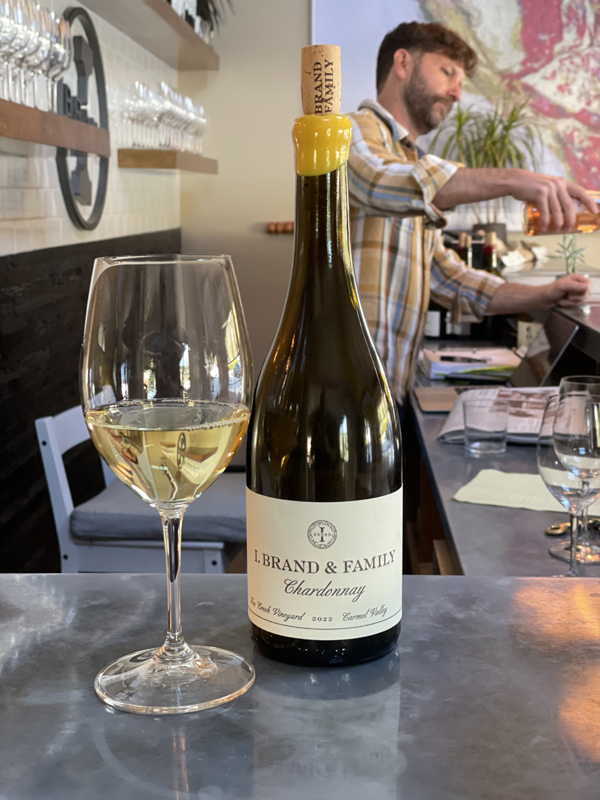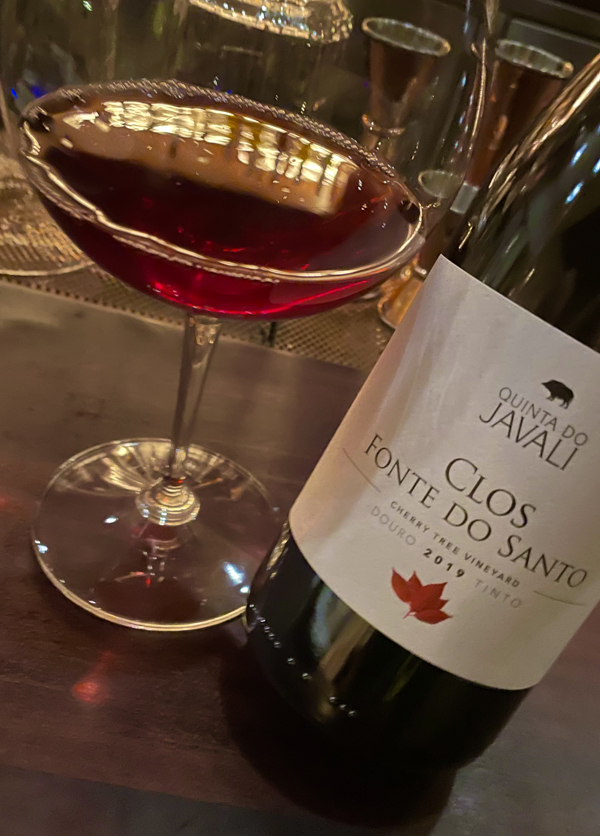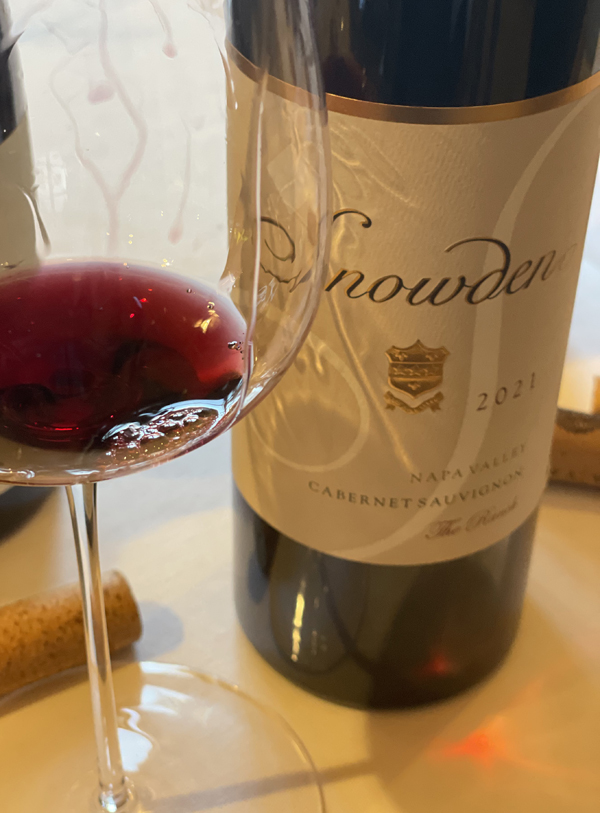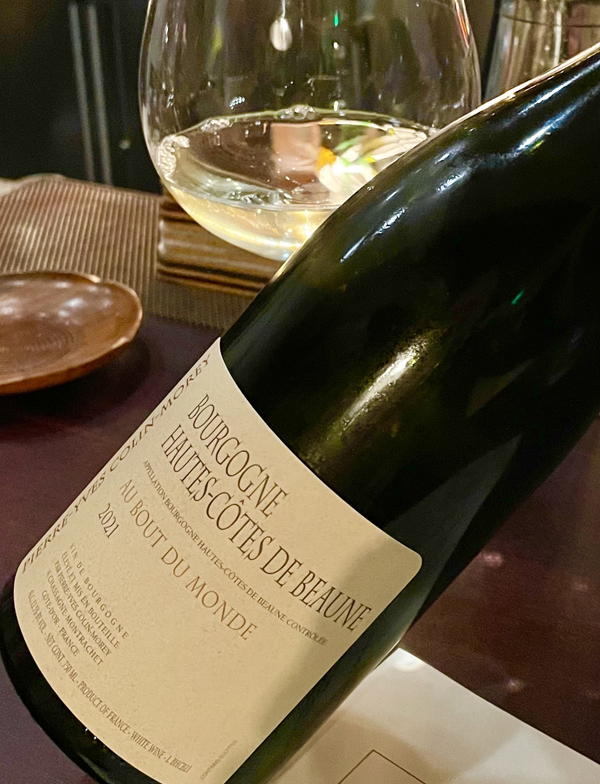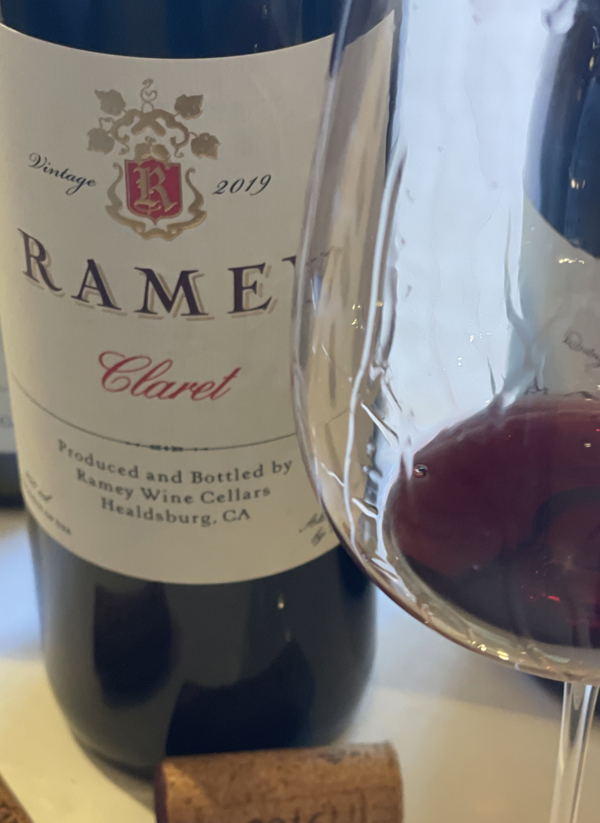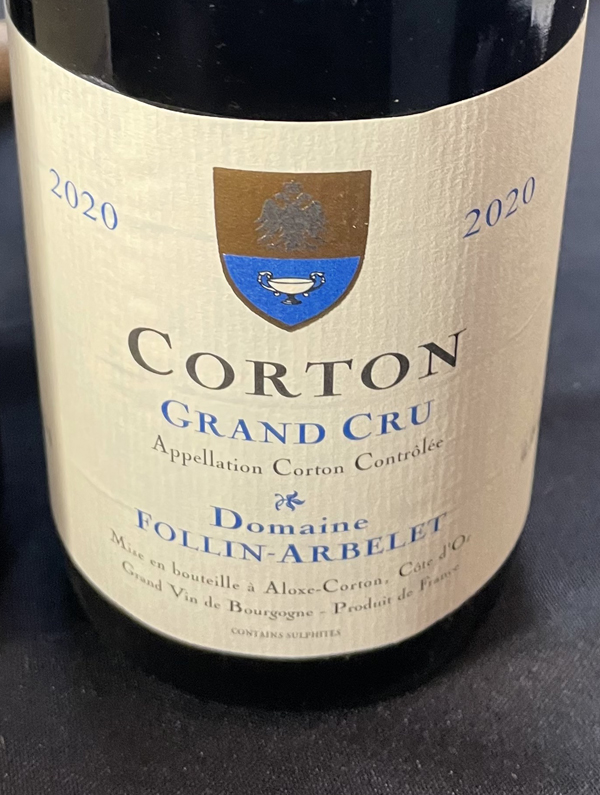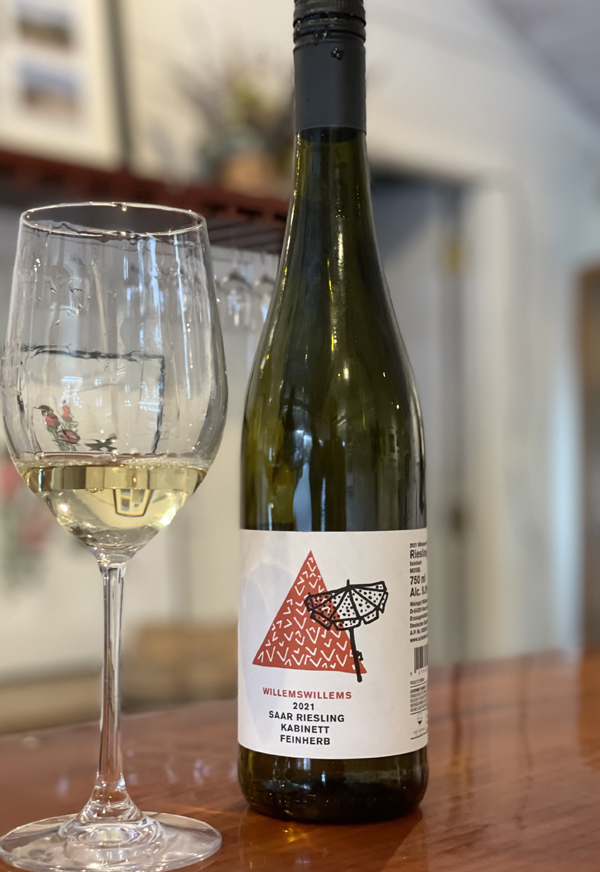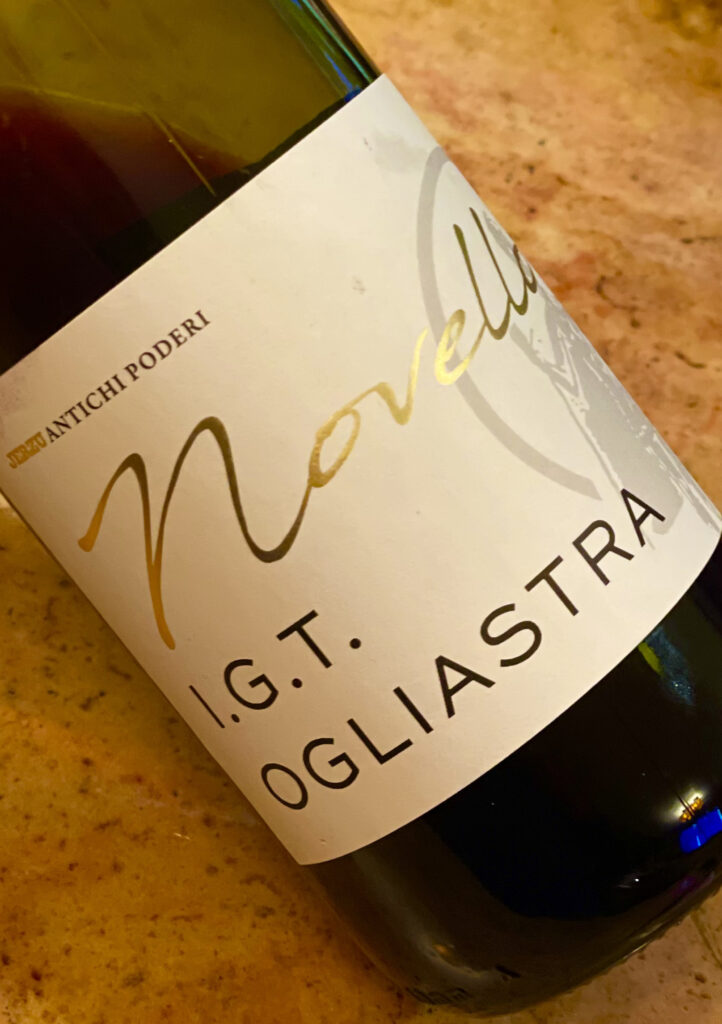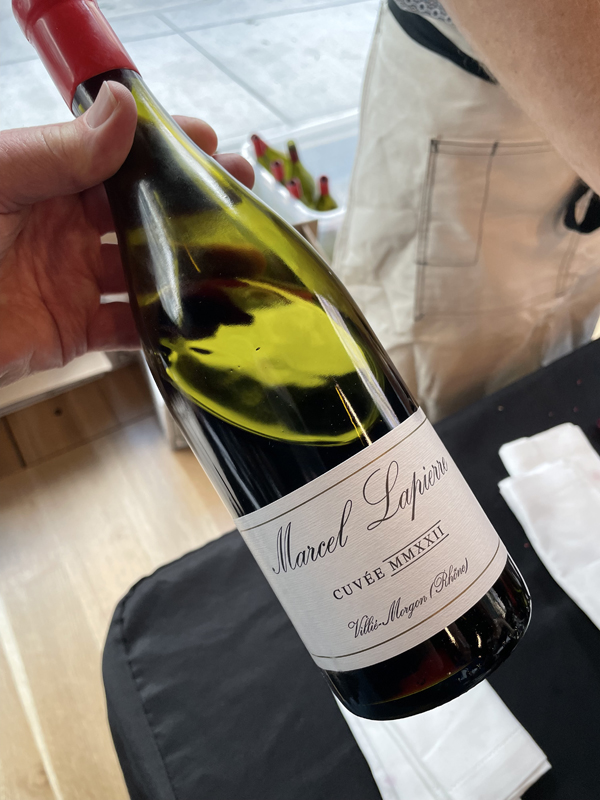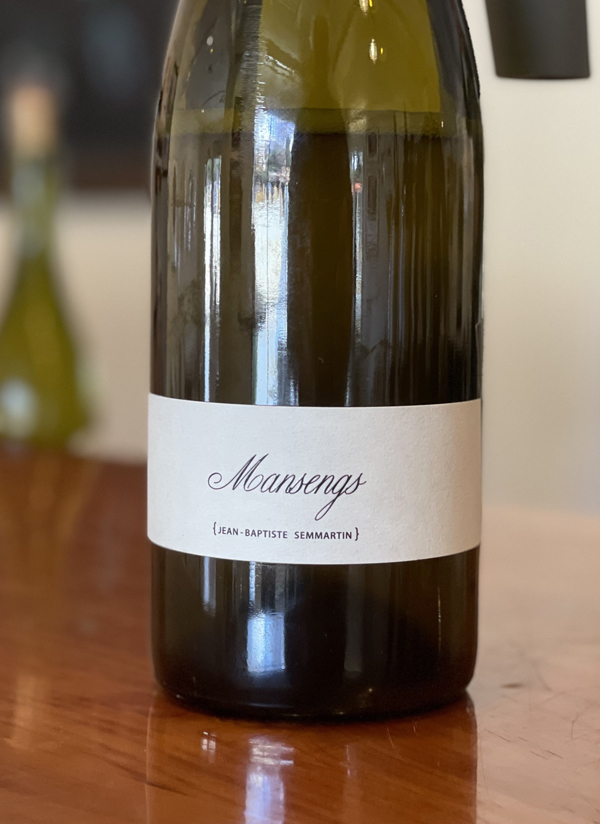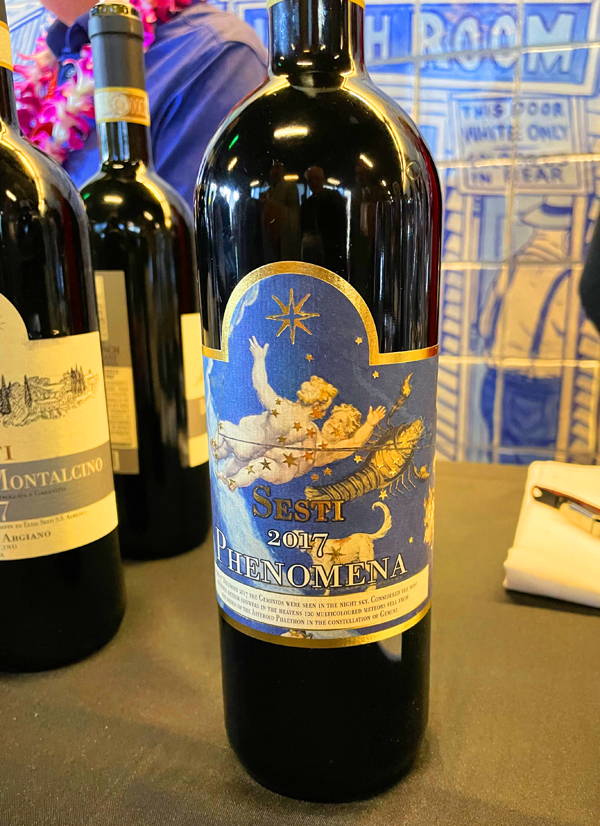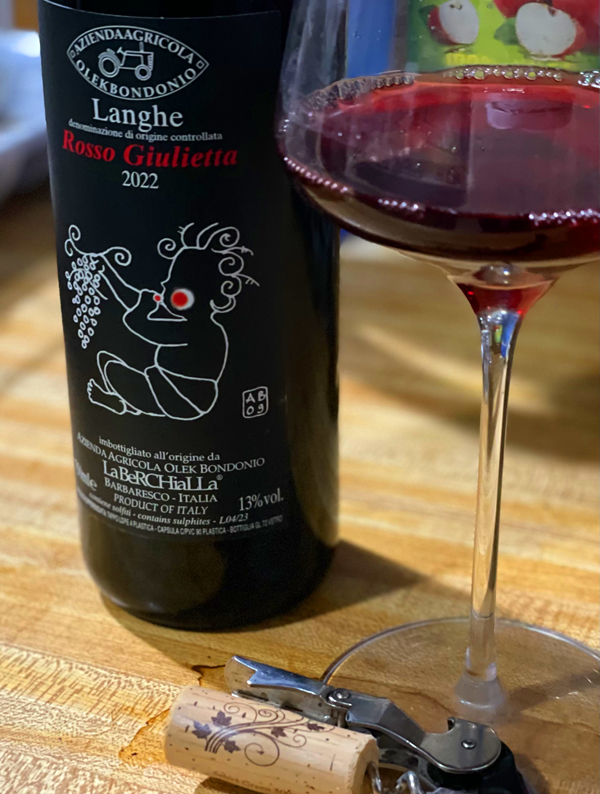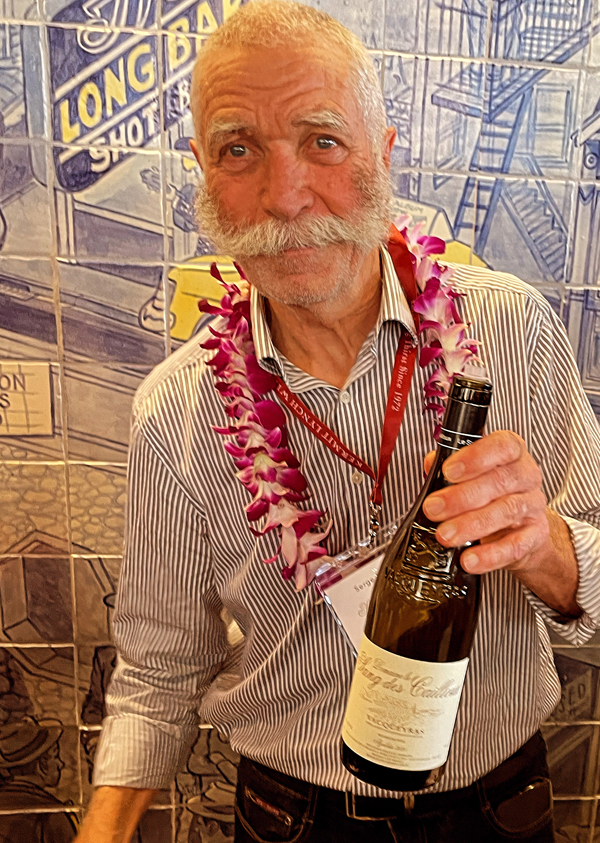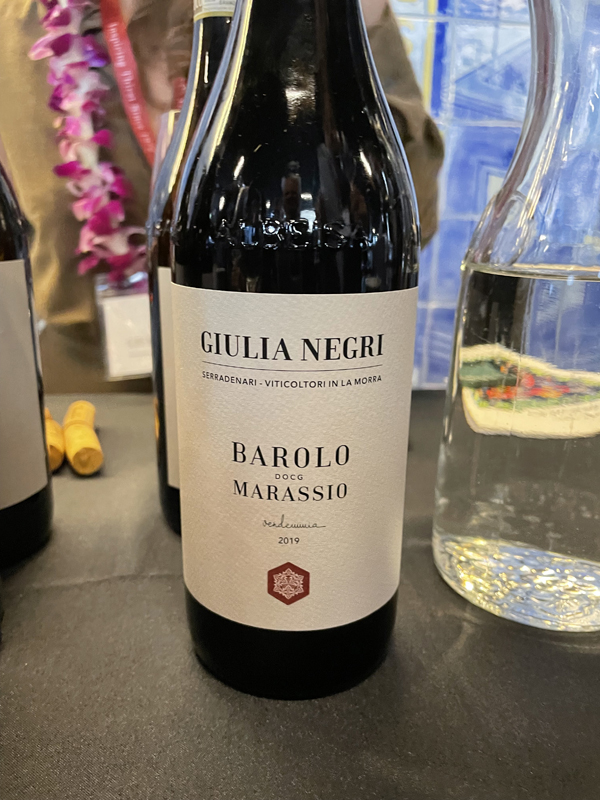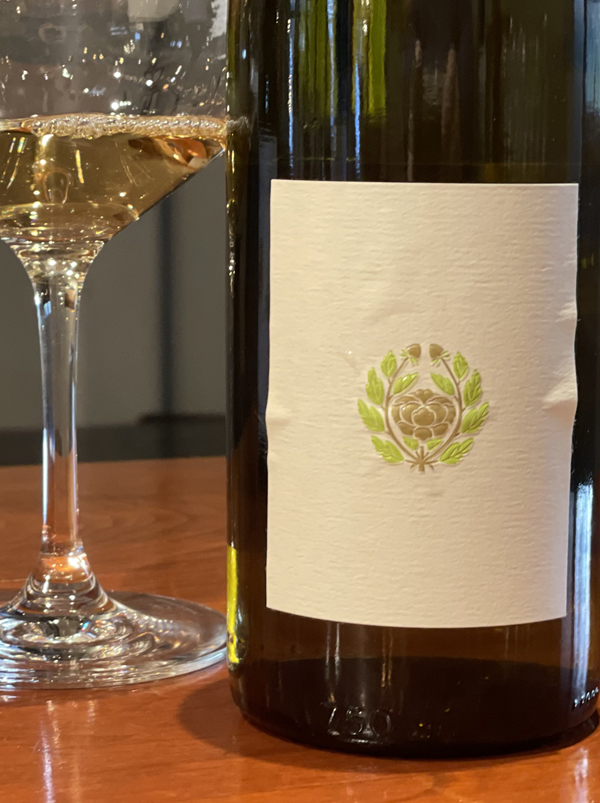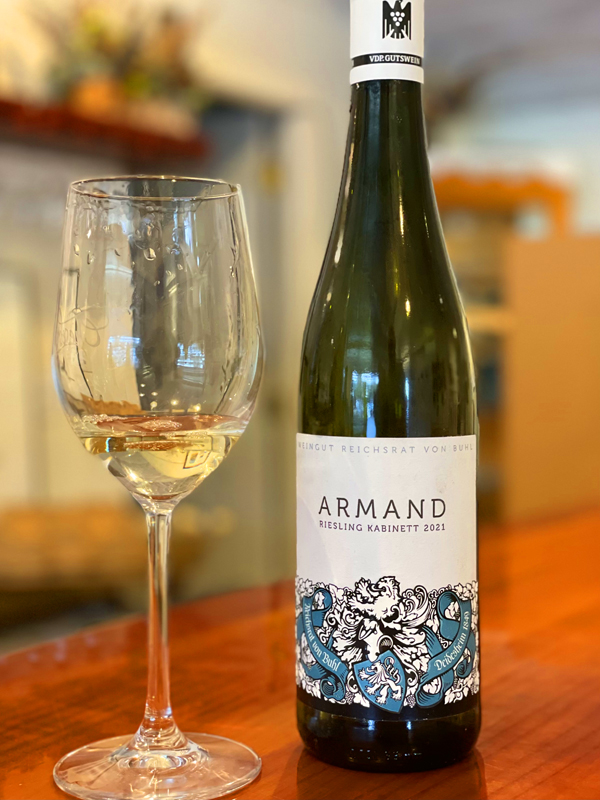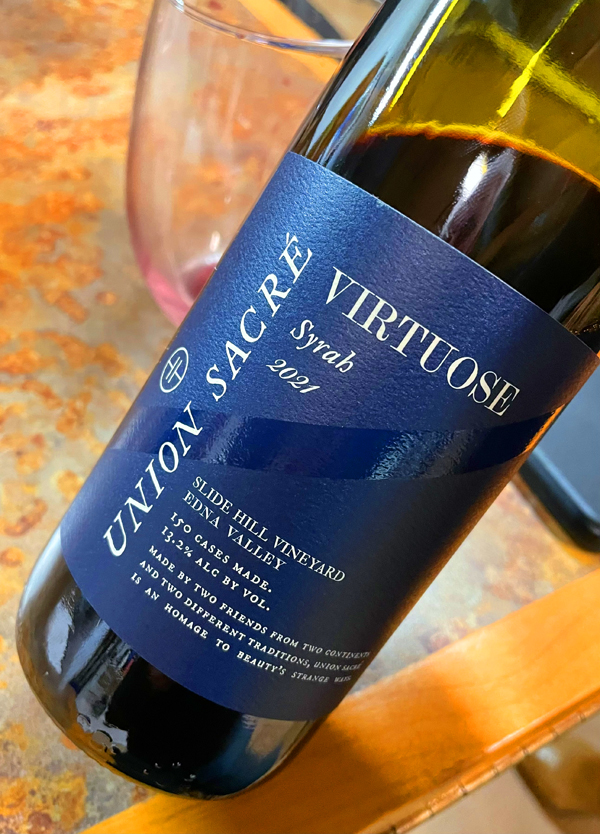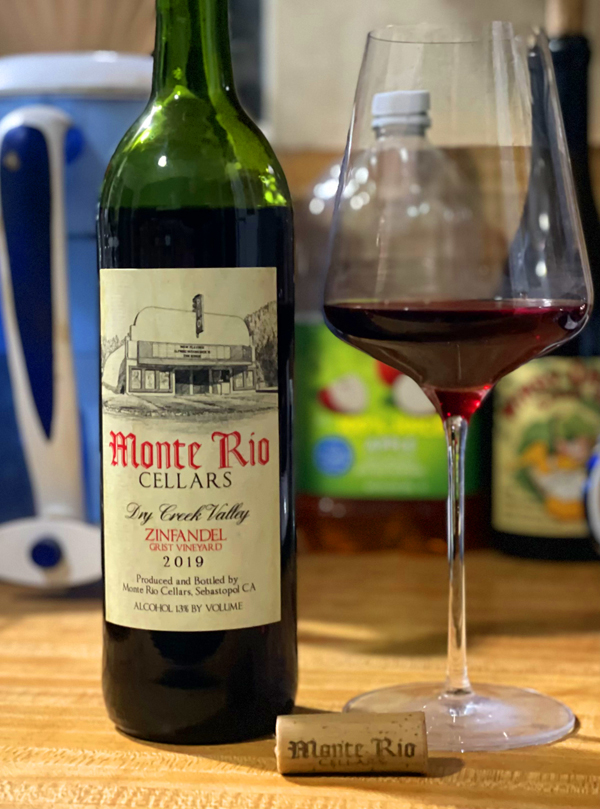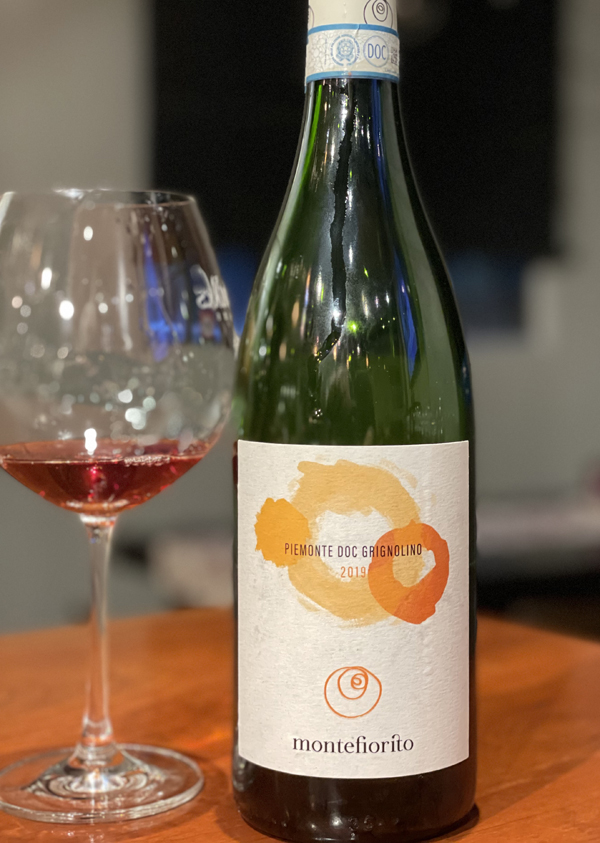Grapelive.com Wine Reviews – April 2024
2019 Bodegas Muga, Rioja Reserva, Rioja Alta, Spain.
The ripe and deeply concentrated 2019 Muga Reserva, which the winery says is composed of 70% Tempranillo, 20% Garnacha, 7% Mazuelo, and 3% Graciano, is made in Muga’s traditional and sustainable style of Riojan viticulture, which they add, is in fact organic, but uncertified. These vineyards are planted in the coolest and highest elevation sites of the Rioja Alta and grow on terraced parcels with calcareous clay soils from the Tertiary or Cenozoic period. The climate is continental with some cooling Atlantic influences up at this area, making for powerful wines, but with a sublime balance, as this one shows. This savvy Rioja Reserva has an intense opaque garnet/purple hue in the glass and delivers plenty of hedonistic fruit density with blackberry, dark currant, candied cherry and plum leading the way on the full bodied palate, along with pretty florals, oak toast, anise, graphite, cedar, sweet pipe tobacco and vanilla notes. Like the Torre Muga and Prado Enea, this Ruga Reserva will thrill now, but it has the potential to go 25 years in bottle. As a side note I always suggest decanting these Muga Rioja offerings and be sure to take your time and have a hearty meal with them. With a warming planet, these vines, as I’ve mentioned, planted in high altitude areas of Rioja Alta are incredibly precious and historic sites that provide outstanding fruit to make world class Rioja(s) that have potential and promise for the future.
One of the noble family’s in Spanish wine, the Muga’s, who founded the winery in 1932, as I’ve mentioned in prior reviews, and run now by Isaac Muga and Aurora Caño continue to be great ambassadors of the Rioja region and the heritage here. Muga pays great respect for traditions here in the region and takie great pleasure in preserving and protecting the environment and terroir. The lineup here is vast and delicious, every wine a treat, from their light white Rioja Blanco and Rosé (Rosado) to their Tempranillo based, powerful reds.like this Reserva. As noted, the Reserva, coming from mature vines, some of which were planted between 1926 and 1976, is 100% de-stemmed and the grapes are rigorously sorted, as the winery notes, then it sees an indigenous yeast fermentation from a vineyard pied de cuve in custom made open top oak fermenters that were produced here at the winery. The 2019 Muga, after fermentation and cool maceration, was then pressed and racked over to French and American oak barrels, seeing a light egg white fining, where the wine is aged for 24 months, after which it rests in bottle for another 12 months. The combination of French and American oak is well proportioned and adds to the wine’s supple tannin(s) and luxurious mouth feel, adding a seductive element without being over done, very much in line with a quality growth Bordeaux. Rioja is seeing a serious re-awakening period these days, with dozens of exciting new wines and this is a great time to re-discover this region, and this classic wine is a great way to start exploring the range of wines and producers.
($36 Est.) 94 Points, grapelive
2016 Crux Winery, Petite Sirah, Russian River Valley, Sonoma County.
Though not a current release, Crux’s 2016 Petite Sirah is available still directly as a library selection and it is well worth checking out with loads of upfront blackberry, dark currant, plum and candied cherry fruits and a richly tannic mouth feel that excites lovers of this varietal and also is backed up with hints of leather, toasty oak, dark chocolate, licorice, crushed violets and dried lavender accents. While 2016s have plenty of grip, they are starting to reveal a nice supple full bodied palate that delivers a hedonistic physical pleasure and lingering creamy aftertaste and this inky purple Petite is delicious and at its best with hearty meat dishes. While far less port like that some, this is a big wine with a luxurious personality, again with protein in meat or cheese form, coming in at a healthy 15% or so of natural alcohol, this Crux Petite Sirah makes its presence felt in the glass. The winery specs list Petite Sirah 90%, Zinfandel 5% and Syrah 5% which is pretty much the normal break down for this wine and adds some freshness and complexity to the whole. This was my first experience with Crux’s Petite Sirah, after mostly tasting their Rosé, GSM and Grenache Blanc efforts in the recent years and so far it’s my favorite.
Somewhat new on the scene, Crux Winery, who’s owners Brian Callahan and Steven Gower, are dedicated to make handcrafted small lots of mainly Rhône style wines done with a California flare, using varietals including Grenache, Syrah, Mourvédre, Grenache Blanc and Viognier, as well as a little Zinfandel and Petite Sirah, as seen here. Brian and Steven say that they focus on wines that capture the unique characteristics of Sonoma County’s Russian River Valley, where they live and has a rich history of winemaking and great wines. The wines are compellingly ripe and lush to my palate, and the winery adds that they are rich, complex and balanced, without excessive alcohol levels or overripe fruit flavors, though obviously they are bigger, boldly expressive and not shy. As grape growers and winemakers, Steven and Brian, farm with sustainable and earth friendly practices and all of their estate grapes and other select vineyard sites, owned by growers, are cared for using a similar philosophy and embrace more holistic environmental practices. The wines are made with clean traditional methods and aged in quality French oak with a restrained use of new wood. Just 170 cases of the 2016 Crux Petite Sirah was produced and it was great to try a wine with some time on it to develop, and I can see this one drinking nicely for many years to come as well.
($45 Est.) 92 Points, grapelive
2019 Domaine Nicolas-Jay, Pinot Noir “L’Ensemble” Willamette Valley, Oregon.
I’ve been an eager fan of Nicolas-Jay wines, the joint partnership between famous Burgundy producer Méo-Camuzet’s Jean-Nicolas Méo and music entrepreneur Jay Boberg in Oregon, and was thrilled again to try one of the Pinots, this being their 2019 L’Ensemple, which even in a difficult vintage shows a fabulous purity, luxurious texture and seductive detail. Nicolas-Jay winemaker Tracy Kendall has again crafted a beauty here, showing off her touch and precision in the cellar, with this L’Ensemple showing off a dark crimson/ruby color in the glass, pretty florals, delicate spice, red berries and savory underbrush notes on the nose and a medium bodied silken palate of black cherry, vine picked mountain berry, strawberry and orange preserves, that is accented by baking spices, mineral, loamy earth, Earl Grey tea, rose petal and warm woodiness. For the L’Ensemble, Kendall carefully crafted an assemblage of individually fermented blocks of Pinot Noir sourced from some of the finest vineyards, which are all sustainably farmed and or organic, in the Willamette Valley. The production level on this is limited to vintage quality, where Kendall only uses the most texturally rich barrels for the L’Ensemple cuvée, with each parcel vinified separately. The traditionally made L’Ensemple saw careful cluster selection, de-stemming and a cool maceration on the skins with daily punchdowns during primary fermentation, after which the wine is aged in French oak barriques with typically 30-50% new used. For this cuvée it took multiple years of vineyard and winery trials to identify and isolate the subtle variations of each site Nicolas-Jay farms to capture a Pinot of distinctive charm and character, as seen here in this 2019 version.
Domaine Nicolas-Jay, Meo-Camuzet’s Oregon project, as mentioned in my prior reviews, which I first tried with their 2014, and again with the 2017s, is a partnership between famed Burgundy vigneron Jean-Nicolas Meo, of Domaine Meo-Camuzet, one of my favorites, renowned for wines like his Clos de Vougeot and his Vosne-Romanee bottlings, and the music and media mogul Jay Boberg, who co-founded IRS Records, was president of MCA/Universal Music and now heads Isolation Networks-INgrooves. The Domaine Nicolas-Jay owns a vineyard, Bishop’s Creek and sources from top growers in the Willamette as they build this label, I would think after this first success they’ll be around a long time and have more of their own vines. The other part of this story that shouldn’t be overlooked, is the work and achievement of their local winemaker Tracy Kendall, a young winemaker on the rise, coming from a three year stint as enologist at Adelsheim Vineyard, where she really was making some great stuff before joining up with Jean-Nicolas. Tracy has an impressive CV, with international experience, having worked harvests at Vasse Felix in Western Australia, Serisin in New Zealand as well as Kiwi Pinot specialist Felton Road before settling in Oregon. As I said about the 2014 and 2017 vintages, the Nicolas Jay wines have a Burgundian soulfulness, but are all Oregon in character close to what you’d expect from top producers like Beaux Freres, Domaine Drouhin, Brick House and others, don’t miss a chance to get a few bottles, and while this Pinot is lovely now, it should evolve nicely over the next 3 to 5 years. There’s a sense of Burgundy inspiration here with these Nicolas-Jay Pinots, especially in the style of Méo-Camuzet, but truly shine as great examples of the Willamette Valley terroir and I highly recommend them.
($75 Est.) 94 Points, grapelive
2023 Russell Joyce, Vermentino, Cedar Lane Vineyard, Arroyo Seco AVA, Monterey County.
A perfect Summer wine, especially delicious with Monterey’s local cuisine and its beautiful coastal environment, this new 2023 Vermentino from Russell Joyce and Joyce Vineyards is a crisp and steely ultra pale white that delivers fresh tangerine, quince, white peach, preserved lemon and tart green apple fruits on the vivid light to medium bodied palate. There’s a sea shore salty quality that is mouth watering and subtle white blossoms, along with a touch of zingy herbs and verbena notes that add to this brilliantly detailed Vermentino. Joyce used a combination of stainless steel, neutral French oak and cement vat to ferment and age this wine, allowing for full transparency, fine leesy/almond notes, texture and refreshing acidity, thanks to an early bottling, to come through in perfect harmony and again helps show some of range of this Mediterranean grape, which can be either opulently textural or racy and Riesling like, depending on its pick dates, sugar levels and how it’s made. Consisting of just over 18,000 acres the Arroyo Seco AVA, home to Joyce Vineyards, is one of the smallest AVAs in California, but it has taken on a more important status in recent years, after being a very sleepy region since some of the vines were planted here by the famous Mirassou family in 1961, over two decades before the region received its AVA status. Named for its unique geographic features of an ancient waterway named “Arroyo Seco” which was a seasonal creek that brought rain water and snowmelt from what we now call the Santa Lucia Mountains and the Los Padres National Forrest to the Salinas Valley. Over the millenniums the pressure of this natural water-release created a diverse geography by dumping hundreds of thousands of rocks here and filling a deep subterranean aquifer with fresh water. The original appellation cited this unique terrain that formed the Arroyo Seco area as the distinct features that sets it apart and was the basis of the foundation of AVA’s boundaries.
Joyce Vineyards, which has become one of Monterey’s most recognizable labels, maybe best known for their value priced Submarine Canyon Pinot Noir and Chardonnay, as well as the original Carmel Valley Estate Merlot and Cabernet Sauvignon, now has a cult like following for the Russell Joyce Collection Gamay offerings. Russell also does a nice set of alternative whites, like this Vermentino, as well as his Chenin Blanc and Albarino, which is absolutely stunning in this 2023 vintage. The Cedar Lane Vermentino grapes, for Joyce’s almost electric shock dry wine, were harvested in idea cool temperatures from Mark Chesebro’s vines in the Arroyo Seco AVA, just south of the Santa Lucia Highlands bench. This AVA, one of Monterey’s oldest, was officially recognized in 1983, and is well known for having a lengthy growing season, giving ripe fruit, but with loads of energy, as the grapes retain lots of natural acidity. The strong daily winds that bring cool fog from the Monterey Bay, as seen in the SLH as well, as winemaker Russell Joyce explains, force the grapes to spend more time on the vine building flavor and complexity, for which his wines, like this one, are noted for. Extremely rocky well-drained alluvial soils are, as he continues, the base for creating wines processing a signature freshness and minerality. This terroir, at Cedar Lane in Arroyo Seco, with its combination of sand, granite, and shale loam soils, along with, as the winery adds, with the ever present marine influence, helps provide the perfect conditions for growing Vermentino, especially when, as I (or you) compare it to the similar conditions in the places that make for distinct versions of this grape, like Sardinia, Corsica and Liguria. This new Vermentino, again this vintage stays on learner side and begs for lighter cuisine, with oysters, clams, grilled sardines, sole and goat cheeses being ideal choices. Joyce, who uses only indigenous yeasts, prefers a natural vibrancy, authentic clarity and uses less oak on his white wines and this wine stays very faithful to that style, but takes to the next level.
($35 Est.) 93 Points, grapelive
2020 Paitin, Barbaresco DOCG “Sorì Paitin” Serraboella, Piedmonte, Italy.
This vintage Paitin Barbaresco “Sorì Paitin” Serraboella is broad shouldered, dense and much more powerful than the previous two vintages, but no less attractive and rewarding, it again is slow to open, with classic Nebbiolo character, pretty rose oil florals, dried herbs and bay leaf on the nose and a palate of youthful and graceful layers of brandied cherry, damson plum, red currant and blood orange fruits. The “Sorì Paitin” Serraboella is accented with minty tea, leather, cedary wood, hoisin, baking spices, mineral tones, chalky stones and salty black licorice. All of which fold together with excellent detail, again similar to past efforts, taut tannin(s) underneath and an impressively long and lingering silken vinous feel and aftertaste. While the Paitin’s Barasin and regular Serraboella are extremely poised and rewarding wines, this one again rises above, making it always my first choice of the Paitin offerings, though I wouldn’t say no to any of them, and I highly recommend Nebbiolo fans grab this one. This Sorì Paitin Barbaresco needs some time to be its best, but with decanting it is drinking very confidently now, though like I have said before, I certainly believe this 2020 will gain loads more depth over the next 5 to 10 years. This Barbaresco comes from mature Nebbiolo vines that, as the winery notes, were planted between 1953 and 1980 and guyot trained, grown on sand and marl stratification called Formazioni di Lequio, which adds to the terroir expression here and makes this Barbaresco very compelling vintage after vintage. This wine is a favorite of collectors and this dark garnet/brick and ruby 2020 shows off this parcels most prized qualities, again this wine displays this terroir to almost perfection, it deserves its historic reputation and your full attention is required and a meal to celebrate it, with a hearty meat or mushroom dish to see all of its seductive charms in the glass.
Barbaresco’s Paitin, as noted here in my prior reviews, is based in Bricco di Neive, which is located very near the main Commune of Neive and set on ancient picturesque hillsides covered in vines, mostly Nebbiolo, and up nearly at a 1,000 feet above sea level. The notable Paitin winery was originally started back in 1796, when, as the winery notes, Benedetto Elia bought the estate, but things really got more serious after WWII when a later generation of the Elia family took over and rejuvenated and re-planted the vineyards, with a focus on quality and estate made wines. Paitin today has Giovanni and Silvano Pasquero Elia making the wines here, all sourced from sustainable vineyards farmed with organic and biodynamic methods in the Barbaresco zone. They produce a studied collection of wines, including Barbera, which is a sleeper in the lineup and one I also love and think highly of, plus a Freisa, which I haven’t yet tried, along with a Langhe Nebbiolo, which is a killer bargain, and these small lot Barbaresco offerings, as well as their prized Vecchie Vigne (old vine) Riserva. The Serraboella cru, one of the most prized sites in Barbaresco, is on the warmest slope, it is, as the winery explains, graced with unique soils, mentioned above, and is planted exclusively with Nebbiolo. The Sorì, which means the first place where the snow melts, is blessed with the first winter sun rays and allows for perfect ripening conditions. Paitin ferments and macerates the carefully sorted and de-stemmed Nebbiolo grapes, getting from 3 to 6 weeks in stainless steel, than, after which it finishes its maceration with what the winery calls the ancient technique of the submerged cap, which delivers full extraction of color and flavors. The Sorì Paitin Barbaresco is matured between 18 and 24 months in used wood, a combination of large casks, made of Slavonian and Austrian oak, with an average age of 15 years, to promote transparency, finesse and soften the tannin in the finished wines. These Paitin wines are serious and impressive efforts, I suggest getting to know them sooner versus later, especially this exciting “Sorì Paitin” Serraboella.
($68 Est.) 96 Points, grapelive
2023 Paysan, Rosé, Central Coast.
The Paysan Rosé, by Ian Brand, always seems to deliver the goods, it again has crisply dry and refreshingly delicious radiant fruit, spice and mineral tones in very confident and delicately pale salmon hued Mourvedre driven Provence style wine. Formerly know as Pierre’s Pirouette and with a playful cartoon label, the Paysan Rosé has joined the rest of Brand’s Paysan lineup with a new look with labels, that started last year, that better reflect the authentic nature and quality found in the bottle with an earthy feel and artist simplistic look, which I really like. The latest dry pink from Ian Brand and his team comes from selected vineyard sites to best produce this Bandol inspired wine with San Benito County and Monterey County forming the core here with 78% Mourvèdre, 11% Grenache and 11% Cinsault. This cool toned and refreshing 2023 Paysan Rosé shows off crushed raspberry, sour cherry, ruby grapefruit, watermelon and orange fruits along with steely wet stones, dried herbs, rosewater and saline notes. This is just what the doctor ordered for Summer days ahead and it will go great with beach sunsets and picnics, as well as being a great aperitif and poolside sipper. As mentioned before, Brand, a noted geology (dirt) geek and vineyard whisperer has found some incredible vineyards to craft his collection of Paysan, La Marea and signature I. Brand & Family wines, with his latest Paysan Sauvignon Blanc and Rhone Blend Le P’Tit Pape, Le Marea Albarino and the I. Brand & Winery Grenache, Bay Franc and Cabernet Sauvignon bottlings being some of my personal favorites.
Much the same as last year’s 2022 and the 2021 Le P’Tit Paysan Rosé “Pierre’s Pirouette” this 2023 Paysan Rosé by Ian Brand & Family Winery, based in Salinas California, is a blend of mainly the mentioned Mourvedre, along with with a small bit of Grenache and Cinsault, this time around, that adds complexity and vibrancy in a wine that is a tasty local favorite. The quality to price ratio here is outstanding and this Rosé joins a select group of California pink wines that deliver an almost Mediterranean influenced like character, including exceptional offerings by Arnot-Roberts, Bedrock, Tribute to Grace and Stars & Dust, all worth chasing down and enjoying this coming Summer. The direct press Rosé saw stainless steel fermentation, seeing only a few hours of skin contact, and tank aging with no malos, it was cold stabilized and sterile filtered and was bottled early to preserve intensity and vitality. The grapes are usually picked early and benefits from that fresh acidity and the stony/mineral elements that come from, what Brand calls, the calcium rich Aguajito Shale as well as the calcareous alluvial soils. There’s a tons to admire and like here with Ian’s current set of wines and some new varietals in the mix that are very intriguing, like the recently reviewed Verdelho, Arneis, Cabernet Pfeffer and Escolle Vineyard Gamay Noir, along with Brand’s all new and exciting Flint Vineyard Pinot Noir, which comes from a limestone influenced site not far from the famous Calera and near Mount Harlan. That said, Ian’s Cabernet Sauvignon, Cabernet Franc, Albarino and Grenache bottlings are also absolutely brilliant wines, not to miss either.
($24 Est.) 92 Points, grapelive
2022 Weingut Dr. Loosen, Riesling Trocken, Ürziger Würzgarten VDP Grosse Gewächs, Alte Reben, Mosel, Germany.
Following the outstanding 2020 version and the 2015 Reserve Ürziger Würzgarten GG, both that I’ve had recently, the latest 2022 Dr. Loosen Ürziger Würzgarten GG dry Riesling again was outstanding, it is pure, distinctive and expressively terroir driven. The spicy and slatey mineral elements lead the way here in this Grand Cru dry Riesling, giving a burst of exotic fruit, crisp acidity and delicate tropical notes, adding a nice background from which can shine with tangerine, white peach, kiwi and tart green apple fruits, as well as wet flinty stones, rosewater, a touch of verbena and lychee accents. As always the case here, the old vine Ürziger Würzgarten GG is bone dry, but still wonderfully generous and richly textural in the mouth. There’s a serious sense of palate impact in the glass that is absolutely thrilling, this vintage might be the best I’ve tried from Loosen, it has a fine balance and age worthy structure, even now it delivers almost perfection. Grosses Gewächs (GG) means “great growth” and is the designation for an estate’s best dry wine, or Trocken, with grapes coming exclusively from a Grosse Lage (Grand Cru) vineyard site as recognized by the VDP. The iconic Ürziger Würzgarten Riesling GG is, as the winery notes, one of the most famous in the Mosel, that has a special parcel of old vines (“Alte Reben”) that lies directly behind the village that are exclusive to Loosen. This block is still referred to by its historical name, Urglück and these vines are about 120 years old now and are sustainably farmed to allow for concentration, transparency and crystalline purity, which is on display in this magnificent pale straw hued wine.
The Ürziger Würzgarten, which translates to the “Spice Garden”, as mentioned in prior notes is a celebrated steep vineyard and Loosen’s vines are highly coveted for the intensity of the fruit and the historic nature of the place. This Grosses Gewachs, as noted above, sees the exclusive use of the un-grafted old vines, they are up to 120 years old and located in a plots which rise up from behind the Ürzig Village and set on this vineyard’s famous red volcanic veined soils, sandstone and weathered slate. That gives the wines its distinctive delicate aromas, generous fruit and those exotic spices. As mentioned often here, the legendary Ernst Loosen, a larger than life figure in the world of wine, took control of his family’s over 200 hundred year old Mosel estate in 1988, that was blessed with some awesome steep, primarily slate dominated vineyards of very old un-grafted old Riesling vines. He makes an incredible collection of traditional wines from Kabinett to Auslese, as well as his Dry offerings, like this one, from some of the Mosel’s best sites. The Loosen Grand Cru GG’s are fermented with indigenous yeasts in traditional 1,000-liter Fuder casks and are matured on the full lees for 12 months with no bâtonnage (or stirring of the lees), making for expressive, stylish and profound wines, with this Dry Ürziger Würzgarten GG being one of the favorites. Again, there is a lot to like here at Loosen and these 2022s are looking good and this wine in particular will be very rewarding for many years to come. I always highly recommend exploring the whole set of offerings from Dr. Loosen, they are impeccably crafted and offer tons of personality and value across the board.
($60 Est.) 97 Points, grapelive
2022 Sandlands Vineyards, Carignane, Contra Costa, California.
The latest version of Sandlands Contra Ccosta Carignane delivers tons of personality, ripe concentration and complexity, while still being simply delicious, with its dark purple/garnet color and blackberry, blueberry, plum and black cherry fruits on the medium/full smooth bodied palate. The background accents include brambly spices, a touch of earthy loam, sandalwood, delicate florals and anise, all of which adds to the pleasure this wine offers in the glass, again making it one of my favorite Carignane bottlings. The Cariognane or Carignan grape, usually found in blends, is one of the Châteauneuf du Pape varietals, but is also found in the wines from Corbieres, Minervois, Fitou, Maury, Saint-Cinian, Pic Saint Loup, and Faugères, in the Languedoc and the Rhône regions of France primarily, but can be found in the heritage California vineyards where it usually finds itself with Zinfandel, Petite Sirah and Mourvédre. This Sandlands Carignane, from ancient vines set in deep Delphi sand in the Contra Costa region, is crafted with traditional handmade care and sees a minimalist approach in the cellar and aged with used wood to promote fresh detail and transparency. This Contra Costa Carignane and the Lodi version are great examples of this varietal, which can be similar to Zinfandel, though darker in profile and with some good underlying tannic structure, while retaining fresh acidity, even in warmer climates.
For these Sandlands wines, as mentioned before, winemaker Tegan Passalaqua, who is the vineyard manager and head winemaker at the famous Turley Wine Cellars, uses restraint and employs a light touch in the cellar here with most bottlings being small wines made with indigenous yeasts and lots of whole cluster. Along with an old school maceration(s) with hand punch downs, basket pressing and with the aging being done in well used barrels, mostly French oak. California wine enthusiasts are re-discovery Lodi and other region’s historic old vines, like here in Contra Costa County, with many vineyards being well over 100 years old, set on well draining sandy soils, which is what many of California’s best vineyards have. The Sandlands line-up encompasses these forgotten classic California varieties, like Carignane, primarily grown in decomposed granite (sand), as seen here, from regions and vineyards that have been farmed, as Passalaqua notes, for many generations but have remained the outliers of California viticulture. Coming from primarily head-trained, dry-farmed and own rooted 100 year old plus vines, as Tegan continues, that harken back to California’s roots of exploration, wonder, and hard work. There’s a lot to admire and enjoy here with Tegan’s Sandlands Vineyards wines, I especially love this Carignane, along with his Mataro from Contra Costa, the Chenin Blanc and the Cinsault, another offering I really love.
($28 Est.) 93 Points, grapelive
2023 Holman Ranch Estate Winery & Vineyard, Rosé of Pinot Noir, Susan’s Saignée, Carmel Valley AVA, Monterey County.
The vibrant, steely crisp and refreshing pale salmon hued Susan’s Saignée Rosé of Pinot Noir from Holman Ranch in Camel Valley is a delectable and tasty Spring and Summer treat with a bright array of bone dry flavors, including racy ruby grapefruit, peach flesh, watermelon, sour cherry, wet stones, tart herbs, saline and rosewater. This light to medium bodied Rosé certainly captures the 2023 growing season perfectly and has loads of personality, it can be enjoyed on its own, for Summer sipping, as an aperitif and or with a meal. As mentioned in my more recent tasting of Holman Ranch, there’s a lot to get excited about, with the quality of their wines really jumping up in the latest two vintages, especially with the main estate Pinot Noirs, but even with the rare Syrah, the Pinot Gris and this Rosé seeing step up. This property is a gorgeous piece of land with a sunny exposure and blessed with cool ocean breezes that continuously flow in from the Carmel Bay and the cold Pacific Ocean, making for a prime location for Burgundian varietals, helped further by the chalky stone strewn terrain with California shale/sandstone and loam soils. Pinot Noir Rosé wines can be found in a wide range of styles, but this one is right in between a Provence Rosé and a Burgundy or Marsannay style version, staying on the drier side of things, which I enjoy best.
The winery notes that a prolonged cool period of weather during set proved positive, as the vines were able to develop slowly with above-average yields in the vineyard and wonderfully healthy fruit overall, as was the case state wide. The cool Spring weather gave way to a very moderate Summer, delaying the start of harvest to a record late pick, and while nervous, winemakers here and other places were rewarded with an extra degree of depth and concentration, while having loads of acidity and low to moderate alcohols. This all makes for an exceptional year to stock up on, and these early release wines, especially the Rosé and the Pinot Gris from Holman Ranch are some of best done to date at this property. Winemakers, father and son, Greg and Chris Vita, who have farmed and made the wines here since the beginning, crafted this Rosé using a gentle long bladder pressing, without any skin maceration and fermented it exclusively in cool stainless steel. This one sees just about three months on the lees in tank before cold settling and bottling, all to keep things tightly focused and extra fresh on release. Interestingly this wine, only 500 cases made, usually comes from particular blocks of Dijon 667 and 777 clones, that are nicely suited for the earlier picks and allows for just about 12.6% natural alcohol, keeping it finely balanced and eager to please.
($38 Est.) 92 Points, grapelive
2018 Yacoubian-Hobbs, Areni, Vayots Dzor, Armenia.
The Armenian red from Paul Hobb’s intriguing project there is a dark ruby/garnet medium bodied and spicy wine that really reminds me of Fronton (Negrette) with its peppery and briar berry notes, with this Areni (grape) giving some floral and earthy elements, showing off a core of plum and Italian cherry on the pure, un-oaked and mineral toned smoothy textured palate. There’s some distinctive herbal notes and some nice acidity, from the high elevation vineyards that are not far from Armenia’s iconic Mount Ararat, it is a pleasing wine that is simple to understand and best served with rustic cuisine choices. I’ve only had a few wines from this small country which as far as the modern wine world knows, maybe the oldest wine caves yet discovered with some dating back more than 6,000 years. We’ve only just begun to scratch the surface on the history of winemaking in Armenia, but in more recent times, especially under Soviet rule, the country has been much more famous for Brandy, which I’ve had a few times both here and in my visit Moscow, where it is very popular. Still wines are a rarity in the States, so I was excited to find this Paul Hobbs example, knowing his penchant for clean and precise winemaking, and I was not disappointed, though I do still want to find a few authentic versions to compare. I’ve long been fascinated with the wines of the Caucasus Mountains and Eastern Europe/Western Asia, with Armenia, which, together with the Republic of Georgia, long believed to be the birthplace of viticulture and (the) public wine trade.
Paul Hobbs, famous for his elite Napa Cabernet Sauvignon, Sonoma Pinot Noir and Chardonnay, and his team at Yacoubian-Hobbs sourced the hand harvested grapes from the Rind vineyard, in the Vayots Dzor region, located over 1,300 meters (4,000 feet) above sea level, where the vines grow on, the mentioned, mineral rich volcanic soils with limestone deposits. The Areni, a native and ancient varietal, is blended with a small percentage of the even more rare indigenous Armenian variety Tozot to add some complexity, which I trust the Hobbs team painstakingly researched and came up with the ideal percentage. The wine was 100% de-stemmed and cool fermented and macerated to extract the color and allow for transparent aromatics and flavors in stainless tanks. After the wine was fermented dry it was then aged 20 months in the stainless steel tanks, again to promote all the raw nuances and terroir here. This vintage, which I assume was pretty normal, warm and ripe, comes in at a healthy 14.5% natural alcohol, though it doesn’t feel quite that hot and again with a hearty meal it is an impressive and unique wine. Finding the Vayots Dzor region is not an easy trek, it is a province of Armenia that sits in the southeastern end of the country, bordering the Nakhchivan exclave of Azerbaijan, an unfriendly neighbor, to the west and the Kalbajar District of Azerbaijan to the east, with a rugged mountainous backdrop and incredibly remote villages. That said, even though it is a long way from Yerevan, Armenia’s capital, it is dotted with ancient Monasteries and is well known in Country for the quality of the wines and local cuisine.
($39 Est.) 92 Points, grapelive
2020 Sandro Fay, Valtellina Superiore DOCG “Il Glicine” Lombardy, Italy.
Another new producer to me, Sandro Fay, is from the Valtellina region and does a full selection of Nebbiolo based wines, with this Il Glicine Superiore being an excellent example and the one I got my hands on first, which impressed me with its elagant class, depth and elegant array of pure Nebbiolo fruit and mineral charms. I’m a big fan of Valtellina and its Nebbiolo, that the locals call Chiavennasca, and I’m always excited to try the wines from here, especially from the Cru Villages, which are mainly the Grumello, Sassella and Inferno sites, as well as the rare Sforzato, an Amarone style version, but that said this Sandro Fay, with its lovely aromatics and almost Barbaresco like personality is fabulous stuff. I found this wine to have a medium to full bodied palate and while youthful, very silken in texture with mix of red fruit and savory influences in the mouth revolving around brandied cherry, damson plum, spiced raspberry and earthy mulberry fruits, along with pipe tobacco, a hint of leather, crushed granite, licorice, rose petals, orange peel and tangy herbs. Everything comes together beautifully here and even with its concentration and underlying tannic structure it feels heavenly light and lingers on and on, this is wine that that never puts a food wrong and makes for an exciting companion to a long leisurely meal, where it can entertain and reveal all of its complexity. The Sandro Fay winery, originally founded in 1973, sustainably farms 15 hectares in the Valtellina region of Lombardy, with vineyards that are located throughout the picturesque terraced hillsides that seemingly climb all the way up to the Alps. The wines of Sandro Fay, each of which is uniquely distinct are influenced, as the winery says, by the effects of altitude, soils and exposure of the parcels. This dark ruby and brick hued Il Glicine comes from the sandy soils of the Sassella sub-zone, up at 350 Meters, in the commune of Sondrio and was made with fermentation in stainless steel tank, after which it was aged for 12 months in a combination of larger wood casks, usually some 30HL and 500L oak barrels.
The remote Valtellina region, as mentioned in my prior notes, is a high Alpine valley in the Lombardy region of northern Italy, bordering Switzerland and renown for its mountain Nebbiolo wines, which have really gained worldwide attention in recent times, even though this area has flourished since Roman times. During the 16th, 17th and 18th centuries, the Valtellina region belonged to what was know as the Three Leagues (the “Grey Leagues”), which was then a mutual-defense zone that was independent of Switzerland, but was part the easternmost Swiss Canton of Graubünden. This remote area in which German, Romansh, Lombard and Italian languages are all spoken, the region became known variously as Veltlin, or Westtirol (West Tyrol) in the 1800s, but now proudly Italian. Interestingly, because of Valtellina’s remote location and easy to defend terrain, during the last months of World War II, the Italian dictator Benito Mussolini and other diehard fascist leaders of the Italian Social Republic (RSI) proposed making a “last stand” against the advancing Allied forces in the Valtellina, but their plans never got a chance to came into being and the area became much more well known for its wine culture. As noted, In Valtellina, the wines are mostly made from Chiavennasca (the local name of Nebbiolo), along with some percentage other local varieties such as Rossola Nera of which is permitted up to 20% in the DOC and just 10% for the DOCG bottlings like this one. Grapes, by local rules must be small yields for the utmost quality and the finished wines have to be aged for at least 24 months prior to their release or three 3 years if labeled a Riserva bottling, also they need to be at least 11% natural alcohol. The yields for the DOCG wines are restricted as well to promote concentration, with requirements of a minimum alcohol level for the DOCG wine at 12%, with this wine seeing 14% natural alcohol. Again, as mentioned before, Valtellina is a great place to find distinctive Nebbiolo and I highly recommend looking for this one from Sandro Fay. I will be following these Sandro Fay wines and am excited to explore their full range in the near future!
($48 Est.) 94 Points, grapelive
2023 Division Winemaking Co. – La Frontière, Sauvignon Blanc, Oregon.
The pure, energy filled and mineral driven pale gold Division-Villages “La Frontière” Sauvignon Blanc is joyous expression of the varietal, from what might be an unexpected place, but it certainly shows the promise of the grape in Oregon with bright gooseberry, lemon/lime and tangy white peach and quince fruit and steely/stony notes, sourgrass, herb and delicate leesy quality. This really reminds me of Pouilly-Fumé (Loire Valley) and feels exciting on the medium bodied palate, austere in the best way and more complex than you’d usually see at this price point, making it a great alternative to many generic domestic and imported versions of this grape. There’s a lot to like here, with this La Frontière, it goes great with food and is an interesting Summer sipper, it is sourced from all organic vineyards and made with this Portland based urban winery’s natural style winemaking, fitting nicely in their collection of wines. Cool fermented and aged in neutral vessels on the fine lees, nothing is hidden or heavy handed here, this is delightful stuff to enjoy over the next few years.
The Division La Frontiere is 100% Sauvignon Blanc by winemaker Kate Noris comes from two main vineyard sources that provide a perfect Ying and Yang balance and gives the wine a distinctive personality. Part one is a small certified organic vineyard on Jory, Yamhill & Woodburn soils in the Eola-Amity Hills, planted in in 2006, which that makes up about half of the “La Frontière” along with the certified organically farmed Allegre Vineyard Sauvignon Blanc, planted to unique Fruilian clones, in the Columbia Gorge, making up, as the winery notes, the remaining half of this cuvée. Noris has done a brilliant job here, highlighting her talents and touch with this transparent and lively Sauvignon Blanc, a varietal they themselves were a bit uncertain of, but one that has really turned out delightful. The winery says, that there’s a fine line between the finest Sauvignon Blanc wines and well, not-so-good Sauvignon Blanc, and that they were skeptics too, but now they believe they have found magic in the Oregon terroir and its soils, which is mineral rich, especially in the volcanic Willamette Valley site they have. I’ve been a fan of Division for a few years now and I think Noris has upped the game, I recommend checking this winery out, this Sauvignon Blanc and the latest Pinot are delicious wines.
($26 Est.) 92 Points, grapelive
2020 Sandro De Bruno, Soave DOC, Colli Scaligeri, Veneto, Italy.
The upper end cru bottling, this straw/gold hued and textural Colli Scaligeri Soave, from Sandro De Bruno is a beautiful and substantial white that carries itself with the class of a Premier Cru White Burgundy showing of a bit of reduction, leesy mouth feel and mineral charm, making for a very stylish effort. The medium to full bodied palate rotates between lemony citrus, apple and fleshy apricot fruits, along with background notes of almond paste, herbs, clove, wet rock, orange blossom and muskmelon, and opening up, it adds a touch of earth, tropical essences, very subtle waxy/oily notes and a round opulence, but it stays lively and has just the right amount of tension, this is an excellent wine, especially with sea foods, lighter dishes and creamy farm cheeses. The third generation Sandro De Bruno Winery, all new to me, based in the volcanic Lessini Mountains, between Montecchia di Crosara and Terrossa di Roncà, is run by Tasoniero Sandro and his wife Ferraretto Marina, with this label being founded in 2002. The Sandro De Bruno winery employs sustainable agricultural techniques and with an eye on the protection of the natural environment and create healthy soils.
The Sandro de Bruno Soave DOC Colli Scaligeri is 100% Garganega from 35 year old south-facing vineyards at between 150-300 Meters above sea level on mineral rich and salty volcanic soils, which gives this Cru wine its personality and terroir distinction. Thanks to the volcanic soils that host the vineyards, the winery says that grapes, from vines in the Roncà and Montecchia di Crosara zones, transmit very pleasant mineral and savory notes, which alternate with fruity-tropical scents, intense flowers and aromatic herbs. The Garganega grapes were all de-stemmed and saw a cold skin maceration in a closed press for 12/18 hours and got a gentle soft pressing at low temperatures. The winery explains that the pure free-run juice gets settled for a short period before the fermentation. After the stainless steel fermentation, with what the winery calls the noble lees preserved for close to 18 months, with a weekly bâtonnage, (stirring) which adds to the gravitas in this expressive example of Soave. Sandro says his mission is to create wines capable of preserving local tradition and expressing the identity of the territory, as he strongly believes in respect for nature, time and tradition. I will certainly start following this label and while quite rare in the states, I recommend searching the Sandro De Bruno wines out.
($35 Est.) 94 Points, grapelive
2023 Margins Wine, Grenache, Paicines AVA, San Benito County.
It was a pleasure to taste through the Margins latest releases with winemaker Megan Bell, definitely a star on the Central Coast, including a preview of her fabulous 2023 Paicines Grenache, which shows off the most beautiful purity of fruit, lovely aromatics, delicate pale ruby/violet hue, sultry earthiness and mineral tones on a fine silken medium bodied palate. Much like the prior 2022 version, there’s a pinot like seductive quality and low alcohol brightness with strawberry, cherry, bramble berry and tangy plum fruits, all accented perfectly by some savory notes, wild fennel, herbs and grilled orange rind. This 2023 Grenache was, again, sourced from organic, regenerative and holistic vines at the Paicines Ranch Vineyard, which was originally planted in the 1960s in San Benito, set on sandy soils that contains a lot of limestone and decomposed granite. For her Grenache, like last year, Margins Wine(s)’ Megan Bell, used 100% de-stemmed grapes that were native yeast fermented on their skins for nine days with a gentle maceration. After which the Grenache was aged in neutral oak for just about 4 and a half months, before being bottled quickly with no fining or filtration, with only a small dose of sulfur, all to preserve purity and freshness. This is delightful translucent stuff and while still vibrantly youthful, it is easy to enjoy now and should be very pleasing for 3 to 5 years, it will be great served slightly chilled durning the warm Summer months and will be joyful with a wide array of cuisine, from poultry to meat dishes and or picnic and BBQ. Megan’s talents on display with these new offerings, in particular her Chenin Blanc, her Rosy Wake vin gris, the Neutral Oak Hotel red, and this distinctive Grenache.
The Margins Wineery, as mentioned here recently, is a small lot and mostly organic label of Megan Bell, a winemaker, who is focused on lesser known varietals, sustainable and hidden places, living and working mainly in the Santa Cruz Mountains. These wines are infectious and delightfully quaffable, but are serious too, with a true respect of place and varietal, in the same way Tegan Passalacqua’s Sandlands Vineyards wines are. Bell says, prior to settling on the central coast of California, she received her BS in Viticulture and Enology from UC Davis in 2012 and apprenticed in wineries and vineyards in Napa, the Livermore Valley, the Willamette Valley, Central Otago (NZ), and the Loire Valley (France), all of which has given her perspective and helped her find her path to success. She is on a mission, being part of the growing movement in California to make low-intervention wines using grapes from underrepresented regions from vineyards, that she explains, are farmed organically or in organic conversion using minimal additives during the winemaking process, thereby showcasing the vineyards the grapes came from, like this Paicines Grenache. The Paicines Ranch Vineyard, Megan says, is home to a host of unique programs, including holistic planned grazing of cattle and sheep, organic minimum-till vegetable production, academic research studies, and educational workshops, and provides her with top notch grapes, including Grenache, but also Assyrtiko, an awesome Greek white grape, which I cannot wait to try and Verdejo, the Spanish grape most commonly found in Rueda. It is an exciting time to explore Megan’s Margins Wines, especially her 2023s, with many cool offerings available that I highly recommend searching out.
($35 Est.) 93 Points, grapelive
2021 Montalbera, Ruché di Castagnole Monferrato DOCG “Laccento” Piedmonte, Italy.
I usually begin by saying, the rare and beautiful Ruché, native to the Piemonte region, is a grape that produces one of the most perfumed red wines in the world, and the Montalbera is especially aromatic with layers of flowers and incense leading to a medium bodied palate of cherry, strawberry and bitter dark chocolate with hints of anise, pepper and candied fruits. The nose is like bathing in rose oil while rose petals shower you like the poster from American Beauty while a touch of mineral and truffle play in the background. This 2021 vintage of Montalbera’s Ruché is much the same, but a touch bigger, structured and expressive in the mouth, almost Nebbiolo like and definitely riper in fruit density. Montalbera’s Ruchè, which I love, is more high profile and has more availability stateside and maybe setting the standard for quality, at least in what I’ve tasted so far. For most of its history in Piemonet, the Ruché grape has been cultivated in relative obscurity, but now the secret is out and there plenty of excitement for it at home and even abroad, like here in California, where excitingly, ex Bonny Doon founder Randall Grahm is planting some Ruchè for his Popelouchum estate in San Juan Bautista and a few other people have planted a few acres. Montalbera’s Morando Family has been passionately making wine from their grapes and vineyards in the Monferrato and Langhe for three generations, crafting this bottling with 80% regular picks and 20% late picks to add some depth and intensity as this Laccento shows.
Ruchè is a mysterious grape once believed to have originated in the hills northeast of the town of Asti and I haven’t encountered too many notable versions, as noted, here in the states, especially as it is made in very low numbers and not imported often, though when done right it can be exceptional and very memorable. It is without question best from Castagnole Monferrato and that is highlighted with its full DOCG status there. The Ruchè di Castagnole Monferrato terroir is similar to Barolo and is up at about 200 meters with classic limestone soils with some hardened clay, sand and mineral sediments all of which add to the complexity and balance here. The fermentations are tricky with Ruché, which is quite the diva grape, and that was almost its downfall, though now it is very much appreciated for is unique qualities. The exact originsof Ruchè, as mentioned, are still unknown with ampelographers holding different theories, with two most prominent theories, one being it an indigenous Langhe grape, always been native to the Piemonte region or that it originated in Burgundy and was brought to Piemonte sometime in the 18th century, though that idea seems a touch far fetched, in my view, as I have yet to see a grape similar in character in that part of France. The best way to express Ruché is through clean and cool stainless steel fermentation and aging with it having very little use for oak, and then bottled within 8 to 10 months, as seen here. I first had the Montalbera Ruché 10 vintages ago, and it is still one I’m always looking forward to.
($29 Est.) 93 Points, grapelive
2022 Samuel Louis Smith, Gamay Noir, Escolle Vineyard, Santa Lucia Highlands.
The 2022 Samuel Louis Smith Gamay Noir from the Santa Lucia Highlands’ Escolle Vineyard is a dark electric ruby hued Cru Beaujolais inspired effort of class, verve and excitement with ripe plum, strawberry, black raspberry and tangy currant fruits, which are Gamay juicy, but not bubble gum or cotton candy like, accented with smoky mineral, a touch of brambly spice, crushed lilacs, earthy loam, crunchy stems, wild herbs and fennel notes. Winemaker Sam Smith, who’s talents are on full display with his latest set of releases, used 75% whole-cluster here and employed about 25% carbonic maceration with a native yeast fermentation that was started by a pied de cuve from the vineyard. Smith adds that after a seven day carbonic fermentation the wine was racked to wood where the Gamay saw a 7 months élévage in 100% neutral French oak barrels, to capture freshness, purity of varietal and transparency, with bottling done unfined and unfiltered. Sam, as he notes, is dedicated to sourcing fruit from the most distinctive, sustainably and organically farmed vineyards, highlighting the best of the Central Coast’s mostly cool climate mountainous sites. Smith, who produces about 1,000 cases annually, made close to 5 and a half barrels of his Gamay with this ’22 vintage, ending up with just 135 cases. This vintage is rounder and more complete than the debut release and really hits all the right notes, comparing well with some of the modern classics from Fleurie, Morgan and Brouilly and certainly on par with the best Gamay offerings on the west coast, impressive stuff again from a winemaker that continues to raise the bar with each new wine. This vibrant and delicately perfumed Gamay, joins some fine efforts locally as well as other top producers of this varietal in California, and it should age nicely for another few years, but is absolutely delicious in this window. Everyone is already buzzing about 2023, which might be the best ever vintage for California Gamay, and I am super excited to see what comes out, especially as I’m a huge fan of this grape.
Coming off the Escolle Vineyard, which is located in the northern section of the Santa Lucia Highlands, which is what Sam Smith calls an 18 mile-long northeast facing bench in the windswept Salinas Valley, this wine is perfect suited to the climate and soils conditions here, with good beam of acidity, briar spice and silken texture. The SLH mountainside appellation here divides the Santa Lucia mountain range to the west from the Salinas Valley floor to the east, given to long consistent growing seasons, again which does Gamay well. With its incredibly cool climate thanks to nearby Monterey Bay, Sam says the pairing of granitic loam and new graftings of Gamay Noir at Escolle is what he calls an SLH renaissance, or a marriage made in heaven. His Samuel Louis Smith is a micro-négociant label, now based in Salinas, CA, is focused on some of the coolest sites of the Central Coast, most with Mountainous terroir and organic viticulture. As with this wine, Smith uses minimal intervention in the cellar, explaining these things are tenets of his brand. The collection includes Chardonnay, Gamay Noir, Pinot Noir, and cool-climate Syrah (mostly single varietal versions) sourced from Santa Barbara, Monterey, and Santa Cruz, with a set of small batch grower fizz, Champagne style sparkling wines, to come out soon. According to Sam these offerings embody a neoclassical style where lower alcohol and higher acidity, stem inclusion in the reds, and native fermentations with little to no additions of SO2 create wines of place and purity, aroma and structure. Sam has worked in Santa Barbara (Brander, Tres Hermanas, Margerum), Australia (Mitchelton), the Willamette Valley (Tendril), the Northern Rhône (Villard), and most recently in Champagne (Nowack & Sélèque). After being head winemaker of Morgan Winery since 2016, a pioneer of organic viticulture in the Santa Lucia Highlands Sam is now moving on to focus on his label and get closer to the vines themselves, so expect new adventures, watch this space, in the meantime check out his latest stuff.
($37 Est.) 93 Points, grapelive
2018 Castello di Perno, Barbera, Nizza DOCG, Piemonte, Italy.
I absolutely fell in love with this 2018 Nizza DOCG by Castello di Perno, who are mostly known for their cru (Perno) Barolo, and tasting it blind I almost thought it too was Barolo or Nebbiolo, such is the unique personality and elegant power in this 100% Barbera. This finely balanced, but firmly structured 2018 has lovely rose and subtle violet aromas to go with an earthy and sultry bouquet that transfers to the palate with black raspberries, damson plums, brandied Italian cherries and red currants leading the way on this medium to full bodied wine, along with hints of leather, sandalwood, wild herbs, licorice and a touch of loam and briar spiced underbrush. This is an enthusiasts Barbera that drinks like Burgundy, with concentration and depth, but with a lighter saturation of color, this wine is a thrilling bottle with a fine tension between opulence and savory elements. Nizza is Piemonte’s sole Barbera DOCG only cru area and this wine, with its distinctive charm is perfect example of why you need to discover it! An ancient Castle in the hills above Monforte d’Alba, Castello di Perno was a lesser known property in Barolo, but after Giorgio Gitti purchased it and the estate in 2012 from the famous Einaudi family things started to get exciting and these wines are great discoveries. Nizza, near Monferrato, which was promoted to DOCG status 10 years ago in 2014, a hilly region that sees good exposures and that originated from the lifting of the ancient seabed and has prime calcareous soils with sandy-clay marls and stratified sandstones, all the better to make rich and complex wines from the Barbera grape.
For their Nizza DOCG Barbera, Castello di Perno does 100% de-stemming of the berries, then does a 48 hour cold maceration and spontaneous fermentation in stainless steel tank with the maceration lasting close to 25 days at controlled temperatures to preserve crisp details and aromatics. After the fermentation the Barbera is then aged 14 months in French oak Tonneaux, but then before bottling the wine does a short period in concrete vat to harmonize the finished wine and then settles at least 6 months in bottle before release. Interestingly, a few years back now, the officials in Asti decided to call their best Barbera zone “Nizza” and giving it a full DOCG, elevating the tiny region up, above the Barbera di Asti designation and with a higher set of standards in the production. The rules say, Nizza DOCGs must be a minimum of 13%, but usually you’ll see them closer to 14.5%, along with farming to lesser yields and strict aging requirements, 6 months in wood in the normale and 12 moths for Riservas, which are super rare, though this one qualifies. Then wood elevage helps smooth out the acidity, which Barbera, like Pinot Noir, is known for, and in a year such as this, it makes for version that reaches otherworldly seductive quality. Admiringly I am nuts for a good Barbera, especially those by Luca Curado (formerly of Vietti), Giorgio Rivetti of La Spinetta and Giuseppe Vajra, so when I found this one in my glass recently Became very happy and smitten with it and highly recommend Castello di Perno, for this Nizza and the Nebbiolo bottlings as well, especially the Perno Cru Barolo, plus their rare Nascetta, which is an indigenous white varietal that you don’t often here in states.
($40 Est.) 95 Points, grapelive
2022 Martha Stoumen, Out of the Meadow, White Wine, Suisun Valley, California.
A beautiful and Summery dry white wine made from a uniquely Californian blend of Chenin Blanc, Vermentino, Trousseau Gris, Green Hungarian and Chasselas Doré by Martha Stoumen, who calls this wine a historic field blend from grapes sourced from the Suisun Valley just East of the Napa Valley. Martha Stoumen, based in Sebastopol, makes an intriguing set of wines that are distinctive and celebrate California’s diversity of grapes and terroirs, inspired by her work with European natural wine producers, where she spent years fine tuning her craft and gaining insight before returning to California to produce her own wines. Her approach is based on her respect for nature and the gifts of the older generation that bravely planted such a wide range of grapes here, as seen in this wine, and her fermentations are done with indigenous yeasts and hands off winemaking methods, but with extra care and precision as to make for the highest quality and clarity as possible. This wine is bright and fresh with uninteresting array of aromas and flavors with subtle earthiness and juicy acidity, it shows off white blossoms, salty sea shore, mineral tones and a touch of zesty spiciness that lifts a core of apple, peach, lemon/lime and passion fruit. There’s a joy in drinking this wine, with its tangy, slightly savory (maybe a touch of skin contact?) and juicy character and it is wonderfully transparent in its soulful expression, it is not overly complex or too geeky, drink this now and for the next year. Stoumen uses neutral vessels to craft her wines and while she uses oak, it is very subtle and has almost no effect on the wines purity of flavors, which is evident here, and I would suggest having food with her wines to bring out all the best from them, with this one being exceptional with soft creamy farm cheeses and lighter style cuisine.
As noted here, the Martha Stoumen label was founded in 2014, and Martha will be celebrating a decade with this upcoming harvest, she started this natural California project by exploring warm and breezy regions that allow for organic and holistic farming. She was thrilled to find a handful of dedicated farmers, primarily growing Mediterranean grapes in the Ukiah area of Mendocino County, Contra Costa County and Suisun Valley that have formed the backbone of her collection. Martha, as she notes, also found two traditionally planted, head trained, dry farmed vineyards that she now leases, that she farms, which now make up close to 25% of her production, sites that include unique Italian varietals like Nero d’Avola and Negroamaro. I’ve been a fan of these wines for awhile now and really enjoy Martha’s reds, with her Carignan, Syrah, Zin blend and especially her Nero d’Avola being my favorites, but this Out of the Meadow white definitely is a charmer and a fun alternative white. As Martha explains, after 8 years apprenticing around the world, including under Giusto Occhipinti at COS Winery in Sicily, hence her passion for Nero d’Avola, she set out as a self-funded, first generation winemaker to answer the question, “What does California taste like?” In this hot little corner of Northern California, she believes these Mediterranean grapes thrive and the healthy vineyards allow her to create ripe and joyfully balanced wines. Martha continues that her approach the winemaking process, which includes the utmost care and cleanliness in the cellar is done with patience and looking after the details – no shortcuts (are taken) for this ancient process. The results of which are authentic and tasty wines, such as this one, and as a heads up, Martha says her just to be released 2023, with its long cool growing season, is even better!
($40 Est.) 92 Points, grapelive
2021 Brooks Winery, Riesling, Willamette Valley, Oregon.
There is lots of excitement at Brooks Winery these days and it was great to see Janie Brooks Heuk, who runs this innovative Oregon winery that specializes in Pinot Noir and Riesling and who just announced her long time assistant winemaker, Claire Jarreau, is taking the lead role here and comes into this with tons of passion, experience and precision. As Claire looks to raise the bar here at Brooks after finishing her first harvest in charge with the 2023s, I got a chance to sample through the current releases, all of which are delicious and soulful examples, making me think there will be something even more special coming down the road. The pale green/straw and gold 2021 Willamette Valley Dry Riesling from Brooks is a dynamic, vivid and crystalline wine with mineral and acidity leading the way on the taut lighter bodied palate with racy lime, unripe tart peach, muskmelon, crisp green apple and quince fruit, all accented nicely with loamy/stony notes, saline, oyster shell, lemon oil, delicate white flowers, herbs and sour grass. Mouth watering and zippy, this Riesling is refreshing and bracing, so best to match it up with your Summer cuisine and raw foods. This Willamette Valley Riesling comes from a selection of vineyard site across the region and a complex mix of mineral rich and marine sediment soils, including mature vines at the Hyland Vineyard, which certainly adds some pedigree here, even in small does. Janie is a big advocate for sustainable practices and has certified her estate in biodynamic framing, and focuses on organic grapes from non-estate sources, as seen here.
The Brooks Winery, founded by the late Jimi Brooks, who tragically passed away much too young, and based in the Willamette Valley’s Amity-Eola Hills, as mentioned here and beyond, is an inspirational tale starting with passion, leading to heartbreak, then to love of family and responsibility to community. As I’ve said before I’m honored to have had an early look in on this great journey in American wine and it was a pleasure to catch up with Janie Brooks Heuck and taste through the new releases. The Brooks wines, up until this vintage have been made by Chris Williams, who as a winemaker believed in low intervention and traditional methods, and the wines are lovely, dynamic and filled with life, they have plenty of acidity to keep their fans happy, especially in the Riesling, as seen here. Originally inspired by his time in Burgundy, Jimi Brooks focused on a rustic whole cluster style with his Pinots that showed a Nuits-Saint-Georges personality and old world charm, something that has continued at Brooks, especially with the captivating Rastaban bottling, always a favorite of mine, and the Rieslings are also distinctively old world versions, both in dry and sweet styles. The Riesling, which is bone dry and about 12.5% natural alcohol, was direct to press crushed and fermented in stainless steel at cool temperatures with aging also done in the stainless tank with a short period of lees contact and bottled quickly to preserve transparency, verve and freshness, which is perfectly captured here in the 2021 edition. I highly recommend the Brooks lineup, who are west coast leaders in Riesling and think this wine in particular is a great way to start exploring Oregon dry Riesling.
($24 Est.) 92 Points, grapelive
2022 Farm Cottage, Pinot Noir, Trout Gulch Vineyard, Santa Cruz Mountains.
The latest release from Farm Cottage, the signature Trout Gulch Vineyard Pinot Noir is a nicely aromatic beauty and has loads of personality with a ripe and silky core of black cherry, brambly raspberry, strawberry and plum fruits along with a touch of Asian spice, rose petal tea, subtle wood notes, loam and a light herbal stem, edgy element. This vintage feels plush and medium bodied, slightly more polished, making for an extremely pleasing dark fruited, expressive and delicately floral Pinot. Very impressive stuff again from the younger Alfaro. Ryan Alfaro’s Farm Cottage Wines, as mentioned in my prior review, is a great new addition to the local scene in the South Santa Cruz Mountains. Trout Gulch, planted in 1980, gets loads of cool Pacific air and is uniquely set only a few miles from the ocean with an almost Clos effect from the redwood trees lining most of this 16 acre dry-farmed hillside vineyard. Sitting at 750 feet above sea level with well-draining sandy loam soils, the cool climate Trout Gulch Vineyard, with Heritage Wente clone Chardonnay and Mt Eden clone Pinot Noir selections, really is a jewel in hills above Soquel in the Southern part of the Santa Cruz Mountains. In the current lineup, Ryan has this wine, along with a Santa Cruz Mountains Pinot from a combination of sites, a Lester Family Pinot, his Chardonnay and his Northern Rhône inspired Syrah, all of which are top notch small batch offerings. This Trout Gulch Pinot Noir was fermented with a natural pied de cuve (vineyard indigenous yeast) and saw 100% whole cluster in an open-top stainless steel tank with gravity rack and returns during the maceration, after which the wine was aged close to 10 months in well used French barriques.
The Alfaro Family Vineyards, founded by Ryan’s Dad Richard back in the early 2000s, in Corralitos is a must visit for those seeking out great values in both Pinot Noir and Chardonnay, as well as specialties like the winery’s Grüner Veltliner and the new 100% estate Malbec. Ryan worked his dad in the cellar in recent years, after doing a stint with California legend Adam Tolmach at Ojai Vineyards and studying wine in New Zealand. He has brought a lot of new passion to the family business and has, as noted here, put a lot of hard work in to get to this point, with Ryan’s personal project Farm Cottage Wines being a natural extension to these efforts at this small Corralitos estate. The Alfaro’s who have been leasing the Trout Gulch site for many years, finally purchased this vineyard outright a few years ago and this wine is a fantastic way to celebrate that achievement. Ryan, who has now taken over the winemaking duties at the Alfaro estate, does these small lot offerings under his Farm Cottage label with a distinctive style that employs more whole cluster in the winemaking with the Pinots and the Syrah, with native yeasts and mostly neutral barrels, with the results so far being very well received. All of the wines come in at low natural alcohols, due to the close proximity to the Monterey Bay and the cold water influence here, with this 2022 Trout Gulch Pinot seeing just 13.2%, making for wines with sublime tension and balance, but with vivid fruit concentration from the long growing season. The Farm Cottage wines, especially the Pinots, including this seductive Trout Gulch version, already have a serious following and sell out fast, so I highly recommend getting on the mailing list, and also don’t miss the steely Trout Gulch Chardonnay and the cool climate Ryan Spencer Syrah.
($54 Est.) 94 Points, grapelive
2018 Rosavica Benotti, Roero DOCG, Piemonte, Italy.
Though founded a few years ago in 2015 and run by Ermanno Cordero, the Rosavica Benotti estate located in Piemonte’s Roero zone, which was totally new for me, actually dates back to 1955, and I am excited to report this 2018 Roero DOCG, 100% Nebbiolo, is a stunner with Barolo like character and structure. This ruby/brick red delicately earthy Nebbiolo has all the goodies expected from this grape and place with brandied cherry, damson plum, macerated strawberry and mulberry fruits, accented nicely with hints of leather, chalky stones, minty herbs, saline notes, rose petals, orange tea and licorice. Coming from sustainably grown 50 plus year old vines, and fermented with native yeasts, in tank, this Roero DOCG, by the appellation rules must see for a Rosso, a minimum of 20 months of aging, including 6 months in barrel, with Cordero doing everything he can to make his wine’s as naturally and terroir driven as possible. All of which shines here in his 2018 version, it soulfully delivers a clarity of fruit, texture, balanced tannins, and still has a delicate rustic edge, things I admire in Nebbiolo, especially with a hearty meal. With prices of Burgundy going through the roof, I’ve found myself buying and enjoying Nebbiolo more and more, and this wine really hit the spot.
A rising star of the Roero, Azienda Agricola Rosavica Benotti, named for Ermanno’s mom, is an all organic farmed estate, with just three hectares of vineyards, with their vines set on the region’s sandy soils, consisting of a core of classic marl and planted to Dolcetto, Barbera and Nebbiolo. Cordero’s parents, Rosavica and Antonio still help out in the vineyards and his brother, Ignazio, assists him in the cellar, making this a tight family project, in other words this a tiny estate and is dedicated to preserving traditions and focusing on terroir driven wines. As Ermanno notes, his mission is to showcase the uniqueness of his soils and makes the wines with eye on purity, natural processes and transparency. It is because of these soils, according to the winery, that these wines are vibrant, lively, nicely ripe and drinkable in their youth with heightened aromatics and what they feel is a surprising sense of complexity. I must say I was immediately drawn to this Rosavica Benotti Roero, especially as a Nebbiolo and Barolo fan, and I highly recommend it for its complete and complex substance, it is a quality and pleasing effort with a subtle tension between concentration (of fruit) and savory elements, keep an eye out for this producer and the Roero region, who’s main grapes are Arneis for white and Nebbiolo for the red.
($48 Est.) 94 Points, grapelive
2022 Cruse Wine Company, Sparkling Valdiguié, Ranch Chimiles Vineyard, Napa Valley.
Known for his precise and uniquely tasty sparklers, Michael Cruse has mastered the art of both Methode Champenoise and Pètillant Naturel (Pèt-Nat) with his Sparkling Valdiguié, as seen here, being an outstanding and fun California rarity with bright citrus, wild peach and cherry fruits, along with a touch of leesy/nutty richness, a smooth and luxurious mousse and some nice mineral/stony notes. Valdiguié, once mistaken here in California for Gamay and long called Napa Gamay, is a red wine grape grown primarily in the Languedoc-Roussillon region of southern France, where it is generally known by the alias Gros Auxerrois, but without much fanfare, while here in the state it is admired for its juicy fruity personality. Cruse also does a regular red from Valdiguié from time to time and it has a very Cru Beaujolais like charm as well, but the sparkler is a bit more unique and very much a specialty product, one I don’t like missing out on. Maybe not as thrilling as Cruse’s sophisticated Methode Champenoise Ultramarine, that has a cult following, but it s one that doesn’t require a special occasion to enjoy!
Cruse reveals that his Valdiguié Pet-Nat was whole cluster pressed using the same slow steady cycle as for his traditional method sparkling wines, as I’ve mentioned, but this version comes from the Rancho Chilies Vineyard, which is different from some of the past versions that came from the old 60 year old bush vines at the Deming Vineyard. The wine was then fermented a small stainless steel tank with maybe a touch of skin contact, but without much of any colorful tint, typically finishing at between 11.5% and 12% natural alcohol, which is nice and dry, much like a Brut, especially in this 2022 edition. Towards the end of the fermentation the wine was bottled, stored, and then riddled, and disgorged for clarity, with Michael adding that there was zero additions made here, no yeast, no sugar, or sulfur added, it is pure, fermented, grape juice, and that is exactly what you taste in these delightful sparkling wines. Planted back in 1972, the Rancho Chimiles vineyard, a hot spot for Valdiguié, is located in the Wooden Valley, northeast of the town of Napa, its a special terroir with warm sunshine, but the area is cooled by evening breezes and fog from nearby San Pablo Bay that allows these grapes to get ripe, but with balance and gives the wines a welcome finesse.
($40 Est.) 92 Points, grapelive
2020 Franco Toros, Sauvignon Blanc, Collio DOC, Friuli-Venezia Giulia, Italy.
The Azienda Agricola Toros, now under the direction of Franco Toros, was new to me and I was excited to try this brilliant Sauvignon from the Collio DOC, an area in the Friuli-Venezia Giulia, which has long been home to French vines, Sauvignon Blanc, Franc and Merlot especially and I’ve long been a fan of these wines and of Italian Sauvignon Blanc, from here and in the Alto Adige. In fact, I tasted this one blind and nailed it, it could have been a Pouilly-Fumé, but I went with Collio, trusting my gut as it reminded of some other fine efforts from this region with loads of gooseberry, elderflower/merigold, bitter herbs, lemon/lime and tart peach leading the way on the medium bodied, ripely smooth palate, along with sea shore notes, mineral, almond and a loamy earth element. While dry, crisp and steely, there’s a pleasing textural quality and persistence that makes this wine a standout and maybe more interesting than other Sauvignon Blancs in this price range and it was wonderful with food, even grilled spicy octopus and tartare, which was a bonus for a simple white that is best enjoyed with less complicated dishes and or shellfish. Franco Toros is from a multi-generational wine growing family and his three daughters, Eva, Cristina and Erika, are the new generation, and ready to show their stuff, and will continue the family winemaking tradition well into the future. This saline rich straw/gold Sauvignon, which carries a fine tension, was cold pressed to tank and was exclusively fermented and aged in large up-right stainless steel tanks, seeing some lees aging to allow for the rounded mouth feel and giving the pure expression of terroir and varietal character.
Sauvignon Blanc grows exceptionally well here in the Collio DOC, in the extreme north-east of Italy, in that area of Friuli Venezia Giulia that is, that Toros notes, located between the Isonzo river and its right tributary, the Judrio river, which cuts through the lands of nearby Slovenia. This hilly area, located between the Julian Alps and the Adriatic Sea, is perfect for growing vines. It is here in the Collio Goriziano, where the Azienda Agricola Toros winery is based in Novali in the small hamlet of Cormòns. The Toros family has many native varietals planted as well, including local favorite Ribolla Gialla, along with Friulano, plus Pinot Blanc, Pinot Grigio and Chardonnay, as well as the mentioned Merlot and Sauvignon Blanc, all of which go into single varietal traditional bottlings. The mild winters and rather cool summers, as the winery again notes, because of the closeness of the Adriatic Sea, which helps to mitigate temperature variations, all of which keeps a core of acidity to go with the concentration found in the wines, which can be closer to 14.5% natural alcohol, but without flabby weight. The Collio DOC wines typically impress and this one is a class act and will appeal to those that admire the famous Sauvignon Blanc producer and legendary winemaker Didier Daguenau, who’s wines were known for their intensity and age worthy quality. Toros says his soils are made up of stratified marl and sandstone which, over the centuries, have been eroded by atmospheric agents, creating an ideal soil for the vines to dig into and give the wines balance, depth and mineral tones, which is clearly on display here in his Sauvignon Blanc. I look forward to exploring more of these wines and can certainly recommend this one to those looking for a distinctive and savvy version of Sauvignon Blanc.
($42 Est.) 93 Points, grapelive
2021 Hirsch Vineyards, Pinot Noir “San Andreas Fault” Sonoma Coast.
The beautifully layered and deep ruby colored Hirsch Vineyards San Andreas Fault Estate Pinot Noir 2021 is really drinking nicely, usually a wine that takes years to develop, it is delivering on the potential of the vintage to near perfection with silken layers of black cherry, wild raspberry, plum and blood orange fruits leading the way in this stylish and structured wine. This wine has exceptional purity, bravo winemaker Jasmine Hirsch, and is wonderfully complex with a delicate earthiness, crushed rose petals, tea spices, subtle smoky wood framing, vanilla, mineral tones and a touch of cola bean. The year’s vivid clarity and lifting acidity, along with a bit of savory tension really makes this Pinot a standout and incredibly exciting in the glass, with air it gathers up a profound presence and gets better and better. This stunner looks to eclipse my two prior favorites, the 2014 and 2010 versions and I’m convinced there is even more to come in the future, I hope I get a chance to re-visit this 2021 in a decade to see if I’m right! The Hirsch Vineyards, part of the Fort-Ross Seaview, West Sonoma Coast AVA, has a wide diversity of clones, with this San Andras Fault Pinot seeing a clonal breakdown, according to the winery, of what they call a 49% mix of classic Pommard and Wädenswil, the old Swiss clone, 18% Swan, 18% Dijon selections 114 and 777, 14% Mt. Eden and a tiny 1% of Calera clone. Hirsch notes that the vine age is 49% from plantings in the 2000s, 50% from the 1990s and 1% from the original 1980s vines, all of which gives a full representation of this premier California vineyard, its coastal marine sediment soils and seasonings from the collection of genetic profiles of the different clones. One whiff draws you in here and this vintage has an exceptionally long aftertaste and it, this Pinot, should be a centerpiece of a meal and graced with your full attention, which will be rewarded and then some with a haunting magical experience.
David Hirsch’s estate in the remote western Sonoma Coast was one of the original vineyards out here and the quality of Pinot Noir here is now legendary, I’m a huge fan and have been for last almost 20 odd years or so, and while I have admired the past offerings, some made by Ross Cobb (Cobb Wines) and Anthony Filiberti (Anthill Farms), the present efforts, especially this gorgeous vintage by Jasmine Hirsch, who does almost everything here these days, are fantastic wines. Before that, there was Williams-Selyem’s versions of Hirsch that set the world on fire, those early ones probably are still fabulous now! The Hirsch estate is situated on a ridge overlooking the Pacific Ocean close to Fort Ross, and is considered a Grand Cru of exceptional terroir on what we call the extreme cool climate Sonoma Coast. Pioneered and planted by David Hirsch in 1980, this site provided the inspiration for all those that came later, and later Hirsch further led into organic farming here, he pushed commitment, as the winery notes, to site-specific terroir(s) that was further enhanced by the transition to biodynamic viticulture initiated by David in 2011, culminating in its completion in 2014. This holistic approach, Jasmine says, now extends across the entire 72 acres of the property, encompassing all the vines, gardens, and orchards. The fruit sourced for this San Andreas Fault Pinot comes from 34 distinct farming blocks or parcels at Hirsch Vineyard, giving a full range of flavors from the property and Jasmine picks and ferments each of them separately in small handmade lots, doing about 12% whole cluster and stem inclusion, and then barrels them down in French oak with about a third new wood, which all sounds very Premier Cru Burgundy like and allows for true sense of place and class. I love these Hirsch Pinots, from the entry level Bohan-Dillon to the single block offerings and the Reserve, but I also highly recommend the very under the radar Chardonnay that Jasmine does, it’s crisp steely goodness on par with Meursault and or Puligny-Montrachet. In other words, like I’ve said before, none of these wines should be missed!
($72 Est.) 96 Points, grapelive
2005 Domaine Hugel et Fils, Riesling “Jubilee Hugel” Vin d’Alsace, France.
The beautiful aromatic, ripe and golden hued 2005 vintage Hugel Jubilee Riesling is richly dense on the palate and shows off its fully mature range of flavors, including a lush core of apricot, baked apple, lemon preserves, candied orange and golden fig fruits, accented by clove spice, wet rock, rosewater, verbena, dried pineapple, earthy truffle, waxy honeycomb notes and leesy nuttiness. This Alsace Jubilee Riesling cuvée is a selection of what the winery says are the finest plots of the Hugel Grand Cru Schoenenbourg vineyard and crafted in small lots with handmade care. It saw small crates of grapes gently pressed, everything done with gravity flow, no pumps and the wine must settles to let green phenolics to drop out before the juice goes into a combination of wood and stainless tanks to ferment, with this Riesling is fermented in temperature-controlled barrels or vats to preserve aromatics. The wine then rests for 8 to 9 months before bottling, it doesn’t get filtered, only a natural clarification through a single racking, and then it was aged in bottle in the cellar until Hugel believes it is ready for release. This fantastic historical terroir, at their Schoenenbourg Grand Cru vineyard, has been almost exclusively devoted to Riesling for centuries, and has complex soils with elements of keuper, marl, dolomite and gypsum, and is rich in fertilising agents, overlaid with fine layers of quaternary siliceous gravel, Vosges sandstone, clay and Muschelkalk, as well as the classic limestones.
First created in 1989 to celebrate the Hugel family’s 350th anniversary, these special Jubilee wines are made only in, what the winery thinks are, the finest vintages and are the ultimate expression in dry, gastronomic terroir wines that Hugel makes and are cherished by Alsace fans world wide. The Hugel Jubilee bottlings are sourced, exclusively and solely from the family’s oldest and best estate sites in Riquewihr, where Hugel is based, with the Riesling coming from the heart of the Grand Cru Schoenenbourg vineyard, that is set on classic marl and clay soils. This prestigious and historic Grand Cru Schoenenbourg with its mature vines and perfect exposures allows for depth, fruit density and mineral intensity, making for powerful, complex and age worthy wines, as this nicely aged 2005 shows, it definitely is within a fabulous drinking window, delivering on the promise of the ripe vintage. This wine, which was tasted in a blind Riesling tasting, was part of a celebration of Rieslings 589th birthday last month and was one of the wines of the night, it shined with its secondary flavors and luxurious textural quality, it was exactly what you’d expect from a top notch aged Alsace wine. Interestingly, this dry 2005 Hugel Jubilee Riesling joined Weingut Von Hovel’s 2005 Auslese as the stars in the mature set of wines, highlighting the year’s potential at this point. This wine also has the stuffing to go another 5 to 10 years, but I personally love where it is at now and would certainly recommend enjoying this Jubilee in the near term and be sure to pair it with a meal that compliments its stage of life and character, maybe a baked ham and or roast poultry dishes.
($49 Est.) 94 Points, grapelive
2019 Fattoria di Bacchereto – Rosella Bencini Tesi, Terre A Mano Sassocarlo, Bianco Toscano IGT, Carmignano, Tuscany, Italy.
The deeply golden hued Terre A Mano Sassocarlo Bianco Toscano IGT, made from 80% Trebbiano (Tuscano) 80% and 20% Malvasia, saw some skin contact and a natural fermentation, with natural yeasts in cement vats, with malolactic fermentation and aging done in 350L (hogheads?) Allier oak barrels, with the wine maturing typically on the lees for between 12-18 months. There’s some savory grip, a slight oxidative nuttiness and a bone dry medium bodied palate that id vibrant and slightly earthy with persevered lemon, white peach, baked pear and quince fruits leading the way, with sea shore notes, wet stones, cedar, herbal tea and pecan notes. This is interesting stuff from the certified all organic and biodyamically farmed Fattoria di Bacchereto, located in the tiny and remote Carmignano region in Tuscany, a mostly unknown small estate, which produces mainly a rustic red wine that has an earthy and powerful appeal and made from classic Sangiovese (75%), Canaiolo Nero (15%), a more rare native varietal, and Cabernet Sauvignon (10%), which is allowed in the DOCG wines. The Bianco has an orange wine kinda feel about it and with just the right amount of funkiness, giving the wine a bit more complexity than is usually the case with the local Trebbiano, which is related to Ugni Blanc I believe, the largely unloved brandy (Cognac and Armagnac) grape. Grown on Marl, limestone, shale and sandstone soils at up at over 800 feet above sea level, the grapes get nicely ripe, mineral toned and retain vibrant acidity, with the organic farming and small yields adding a nice tension between concentration and energy.
Fattoria di Bacchereto, one of only 14 producers who make Carmigniano wine in the DOCG Carmigniano, the smallest appellation in Italy, is owned by Rossella Bencini Tesi, who inherited the estate after her father & brother sadly passed away in the 1990s. Though having no prior experience herself in the winemaking process, Tesi put management of the winery into the hands of experts until she was introduced to biodynamic and organic techniques in 2000. After which, she, I understand then implemented these methods at her winery, and through this, she saw a dramatic change in the environment and resulting wines she produced. Over time, these malnourished vines were revitalized, the soils became healthy and the terroir enhanced, turning a little known estate into a model for the region. Interestingly, not only is Carmignano the smallest region in Tuscany, but it is also one of the oldest appellations worldwide, having been first registered in 1716 by Cosimo III de Medici, the Grand Duke of Tuscany. It is a hilly and heavily forested area, northeast of Florence, indeed, it was the preferred hunting grounds for the noble Medici family when they resided there during the season. Carmignano also was the first to include Cabernet Sauvignon in the official blend, along side Sangiovese and as well as the native Canaiolo Nero grapes. According to the historic rules here, to be classified as a Carmigniano DOCG Rosso, the wine must age at least 8 months in oak or chestnut barrels, and it must contain at least 50% Sangiovese, 15% Canaiolo Nero, and or 10-20% of the Cabernet Sauvignon, a varietal that was said to have first been introduced to the area by another Medici, Catherine, the wife of the King of France. Fattoria di Bacchereto’s main interest is their Carmignano DOCG Rosso, but their non DOC or DOCG bottlings, including this IGT Bianco, a super limited bottling, and a 100% Sangiovese IGT Rosso are very much worth checking out too.
($46 Est.) 91 Points, grapelive
2022 Domaine Anita, Moulin -À- Vent “Cœur de Vigneronne” Cru Beaujolais, France.
The Domaine Anita label, led by Anita Kuhnel (Neveu), a former professional cyclist-turned winemaker who is a quickly rising in Beaujolais, has put out a set of delicious wines from 2021 and 2022, with this exciting purple/garnet and floral 2022 Moulin -À- Vent “Cœur de Vigneronne” from 50 year old vines, being a step up on everything I’ve tried so far with a deep and dark core of pure Gamay fruit, it’s perfect for those that want a richer, clear and more polished style version of Beaujolais. Anita is certainly going down her own route and creating wines that have their own distinctive personality, with this special Moulin -À- Vent Cœur de Vigneronne, maybe her signature bottling, showing off ripe black currant, plum, cherry and black raspberry fruits along with sprigs of wild fennel, dried herbs, rose oil, walnut and lingering black fig and subtle acidity, making for a supple, but nice structured Beaujolais that is drinking satiny smooth already. This cuvée is getting a lot of attention, deservingly so, and it is very different from my early experiences with Moulin -À- Vent, which tended to be grippy and chewy wines, far more rustic and tannic by nature than this luxurious and expressive example. I picked up a combination of these latest Domaine Anita wines and a few bottles of each, which I will stagger and open over the next few years to see how they develop, but there seems to be no reason not to enjoy them right away, with the hedonism and youthful fruit, even if I do enjoy aged Cru Beaujolais.
Vigeron Anita Kuhnel (Neveu), at Domaine Anita, as mentioned in prior reviews, is a rising star and is based in Chénas, she does mainly cru bottlings from Moulin -À- Vent, as seen here, but also has this plot of old vines in Morgon, a plot in Fleurie and another in Chénas. All of which are sustainably farmed, they feature in her lineup of lush Gamay offerings, and are from vines that range from 40 to 100 years old on mainly the classic granite based soils here. This vineyard, I understand, is set on a pink granite subsoil, at an altitude of 240 meters, with a warm exposure, helping to full ripen the grapes and retaining energy. Importer, Neal Rosenthal says that Anita is assisted in making the wines by Guy Marion, who he adds, oversaw no fewer than 52 harvests as cellarmaster for Georges Duboeuf, so there is solid foundation of experience, along with youthful passion to play off of here. Anita has a collection of small concrete vats to ferment each parcel separately and that she uses a different percentage of whole cluster in each wine and she uses ex-Burgundy barrels to age the Cru bottlings like this one. For this special cuvée Cœur de Vigneronne and her Chateau-Galliard Morgon, reviewed from the 2021 vintage, Anita did a native yeast fermentation after a cool maceration in cement with a combination of whole clusters, with some stem inclusion, but mostly de-stemmed berries to end up with the silky and opulent mouth feel and concentrated fruit density seen in the finished wine. After the fermentation, this wine was raised for about 11 months in oak barrels, with enough toast to leave a whiff of shaved vanilla, along with the textural feel, and then it saw 5 months in the bottle before release.
($39 Est.) 93 Points, grapelive
2023 La Marea by Ian Brand, Albariño, Kristy Vineyard, Monterey County.
Again, as I’ve highlighted already, this 2023 vintage is crazy good and these early releases, from California, are fabulous, expressive and vibrant offerings, especially this latest set of Ian Brand’s La Marea and P’Tit Paysan whites and his Rosé are exciting wines, as this new Albariño demonstrates with its bright and vibrant apple, peach and zesty citrus fruits and wet stones, saline, light herbs and almond accents. This lighter framed white, inspired by the classics in Spain’s Galicia area and in particular the brilliant coastal Rias Baixas region efforts, and it is a savvy buy for the exceptional quality and its sublime sea food pairing capabilities and zesty charm. With air, this steely new La Marea Kristy Vineyard gains a nice white blossom bouquet and tangy melon note and lingers with mouth watering lime, making it a fine Summer sipper and tasty with grilled fish tacos and oysters on the half shell. Most everyone, especially Monterey winemakers like Ian Brand are absolutely thrilled with this 2023 vintage and can’t wait to show them off, so stay tuned and before to act fast to grab these wines up.
Winemaker Ian Brand, who is mostly known for his reds, like Grenache and Cabernet Franc, told me recently that he’s getting really excited with the white wine grapes in the greater Monterey region and his latest set of wines reflects that, with his Sauvignon Blanc, Chardonnays, this Albariño, Melon de Bourgogne, the rare Arneis and Ian’s new Verdelho, all being distinctive, thrilling and delicious! There’s quite an exciting set of white grapes growing in the Monterey region, many from Spain and Portugal, as well as Mediterranean varietals, like Vermentino and Malvasia, which have become very popular, along with a lots of white Rhône grapes, including fun rarities like Picpoul and Clairette. So there’s plenty to explore here in this large and diverse Coastal region that has many unique terroirs, such in the stony soils and warm days you find in the Southern zone, where this grape, which retains loads of fresh acidity is grown. This white wine, coming from a mix of loam and alluvial soils, saw a stainless steel fermentation and an ultra short lees aging in neural barrel and bottled quickly to preserve puritry and freshness, as can be seen here perfectly. Ian’s Sauvignon Blanc under the P’Tit Payson label too, along with the Albariño, which just was released, is one to stock up on while you can and enjoy this Spring and Summer.
($28 Est.) 93 Points, grapelive
Grapelive.com Wine Reviews – March 2024
2018 Rivetti & Lauro, Uì Sassella 298, Valtellina Superiore DOCG, Lambardy, Italy.
Coming from one of Italy’s most picturesque and unique wine growing areas, the Rivetti & Lauro Uì Sassella, Valtellina Superiore DOCG is a beautifully expressive Alpine Nebbiolo, which is also known in this parts as Chiavennasca, it shows off a smooth layering of brandied cherry, damson plum, balsamic strawberry, brambleberry and blood orange fruits, all supported nicely by mineral and floral tones, sweet and sour herbs, cedar, loamy earth, briar spices, crushed roses and anise. This Rivetti & Lauro Uì Sassella Valtellina Superiore DOCG is not quite as concentrated as the last wine I tried from this producer, he 2012 Uì Inferno, which comes from an ultra steep sun soaked site, Vigna 117, a single terraced parcel, but definitely similar and remarkably elegant by nature. Over the years I’ve become a big fan of Valtellina wines and this beautifully textural and pure high elevation version really hits the spot with bright acidity and and depth, it is an excellent example of the Cru Sassella, which is set on combination of sand and clay soils with high density plantings on the classic terraces. This wine, 100% Nebbiolo, is hand harvested with small yields, and a careful selection of the grapes, which are all de-stemmed. The fermentation takes place in small stainless steel tanks with a cool maceration period and the aging, close to 24 months is done mainly large 30HL casks and some French oak barriques, after which the wine is rested in bottle for another couple of years. Valtellina also has an Amarone style DOCG Nebbiolo wine called Sforzato, where the grapes see a period of drying on straw mats to give a hedonistic density and richness of flavors, it is a fabulous rarity I highly recommend Nebbiolo fans search out. If you’d not discovered Valtellina, above Milan and the lake district, yet, it is a great time to get started and this wine should be one on your list of must try options from this intriguing part of Northern Italy. The wines here are age worthy with supple tannins and Rivetti & Lauro say the wines tell the tale centuries of history and local traditions, that are infused in the place. These vineyards are the largest terraced wine-growing area in the whole of the Italian mountains and its remote location make it an under the radar gem and a bit of a mystery to uncover with glorious rewards in the bottles.
The Valtellina region, as mentioned in my reviews from here and prior notes on Rivetti & Lauro wines, is a high Alpine valley in the Lombardy region of northern Italy, bordering Switzerland and renown for its mountain Nebbiolo wines, which have really gained worldwide attention in recent times, even though this area has flourished since Roman times. During the 16th, 17th and 18th centuries, the Valtellina region belonged to what was know as the Three Leagues (the “Grey Leagues”), which was then a mutual-defense zone that was independent of Switzerland, but was part the easternmost Swiss Canton of Graubünden. This remote area in which German, Romansh, Lombard and Italian languages are all spoken, the region became known variously as Veltlin, or Westtirol (West Tyrol) in the 1800s, but now proudly Italian. Interestingly, because of Valtellina’s remote location and easy to defend terrain, during the last months of World War II, the Italian dictator Benito Mussolini and other diehard fascist leaders of the Italian Social Republic (RSI) proposed making a “last stand” against the advancing Allied forces in the Valtellina, but their plans never got a chance to came into being and the area became much more well known for its wine culture. As noted, In Valtellina, the wines are mostly made from Chiavennasca (the local name of Nebbiolo), along with some percentage other local varieties such as Rossola Nera of which is permitted up to 20% in the DOC and just 10% for the DOCG bottlings like this one. Grapes, by local rules must be small yields for the utmost quality and the finished wines have to be aged for at least 24 months prior to their release or three 3 years if labeled a Riserva bottling, also they need to be at least 11% natural alcohol. The yields for the DOCG wines are restricted as well to promote concentration, with requirements of a minimum alcohol level for the DOCG wine at 12%. The Cru Villages for red wines in Valtellina are Grumello, Sassella, Inferno, where this Rivetti & Lauro comes from, Valgella, and Maroggia. I have added Rivetti & Lauro to my list of Valtellina producers to follow, along with another new favorite, Tenuta Scerscé, as well as long time favorites Nino Negri, Nobili, Alfio Mozzi, Conti Sertoli Salis and in particular Ar. Pe Pe (Arpepe), which are a bit easier to find here in the states.
($42 Est.) 94 Points, grapelive
2017 Weingut Schäfer-Fröhlich, Riesling Trocken “Felsneck” Grosses Gewächs, Nahe, Germany.
The thrilling, gripping and intensely mineral driven Felsneck GG by the Nahe’s premier Schäfer-Fröhlich comes from mature organic vines at the legendary Bockenauer Felsneck Vineyard, the steep VDP Grosse Lage (Grand Cru) site that is set on a rocky sparse hillside with classic slate, basalt and quartzite soils, making this wine a prestigious and powerful monument to its terroir. This 2017 is still firm and austere with an ultra reductive and slate flinty personality, it is like drinking liquid stones and the fruit, while dense and deep, is subtle with a bright core of energy, which comes through in taut waves of lime, lemon, quince and apricot essences. This a purist wine, it is not hedonistic, it is a wine chiseled from stone and it takes its time to unwind, in fact I might not want to open another bottle for another 5 to 10 years! Sometimes a great wine allows early drinking pleasure, this is not that wine, this is serious dry Riesling for the GG enthusiasts that have the patience of the Saints, as it opens you get seductive teases at what surely will come with time, at the moment, this wine is at the extended foreplay stage with outrageous tension. The medium bodied palate reveals loads of secondary elements that includes wet stone, salty shale, bitter citrus oil, orange leaf, chamomile tea, clove spice, grapefruit pith, lemon grass and verbena notes. The Schäfer-Fröhlich’s wines are made naturally with “Sponti” spontaneous fermentation and the GGs, all of which are reductive like classic white Burgundy, are aged in mostly traditional stainless and stay on the lees for an extended period, with at least 9 months in tank before bottling.
Tim Frohlich, known for his exceptionally pure terroir wines at the famous Schäfer-Fröhlich in the Bockenau, he is one of the many stars of the Nahe, a region that despite being one of Germany’s smallest, is producing some of the great winemakers and wines. From what I understand, the Fröhlich family has been vignerons and working vineyards since the 1800s, but the Schäfer-Fröhlich label didn’t come into being until the 1970s when the two families through marriage merged and created the winery. Over time this estate has become one of the top wineries in Nahe, joining the region’s elite like Donnhoff and Diel to name a couple. More recently Schäfer-Fröhlich has cemented its reputation in Germany and throughout the world, gaining the following of Riesling enthusiasts, making these wines collectors items, even here in California. This fame is largely due to Tim Fröhlich, who is in charge at Schäfer-Fröhlich after taking over his family’s business in the 1990s. Fröhlich, known widely as a perfectionist and a hard working sort that never rests on success, he made his first vintage in 1995 at the age of 21, and has never looked back. The village of Bockenau, the winery’s location in the Nahe was close to being unknown until Tim’s wines achieved international success, with the wines now some of the most sought-after Rieslings in Germany. Schäfer-Fröhlich’s success is also a reflection of the greatness of the slate-based, quartzite-laced Felseneck VDP Grosse Lage in Bockenau, a truly amazing site with its steep slopes. Fröhlich, as mentioned, looks for extreme purity in his wines, and is a true terroir fanatic, according to his friends and admirers. He has a sublime touch and is hugely talented, capturing the essence of the place with precision, subtly and elegance (with time) in his outstanding wines, like this one.
($125 Est.) 94 Points, grapelive
2023 Oversand Wine Company, Rosé Wine, Central Coast, California.
The bright, salmon hued and crisply Bandol inspired 2023 Oversand Wine Company Central Coast Rosé is expressive with tangy strawberry, ruby grapefruit, guava, watermelon and sour cherry fruit, along with rosewater, sage, minty herb, lavender and a salty refreshing accents. This steely, but flavorful dry pink is almost exclusively for the Nantucket Island and their local market and put together by wine guru Carl Sutton, who I talk about below, and who I recently caught up with while he was here in California. Sutton, who has wine projects from Sonoma to Nantucket, also is consulting with a winery in Arizona, has a long history as a winemaker and I first remember tasting his wild ferment and unfiltered Sauvignon Blanc in the early 2000s. Most recently, I saw him in his adopted hometown of San Francisco, around 2015, when he was selling his speciality dessert wine and his Vermouth, which had a cult following in the City. The Oversand project is brand new and looks to be a huge hit, mostly for a wine shop on Nantucket that commissioned it, as Summer season comes to the Island, a Provence style Rosé made with 78% Mourvèdre, 11% Grenache and 11% Cinsault, faithful to the legendary Domaine Tempier, Château Pradeaux and Gros Nore, should sell out quickly. This light bodied Oversand Wine Company dry Rosé is energetic stuff with mineral tones, wet stones and zippy acidity, it is in the league with Mourvèdre led pinks, like Bedrock’s Ode to Lulu, Liquid Farm, Star and Dust, Ian Brand’s P’Tit Payson and Randall Grahm’s original Bonny Doon Vin Gris. The label shows the map on Nantucket to find one of its famous lighthouses, hence the Oversand name.
Winemaker Carl Sutton who puts these Oversand Wine Company wines together, is formerly of Sutton Cellars, which was one of the original urban San Francisco wineries, founded in 1996 and famous for doing small lot natural style wines, before it was hip. all from from unique vineyard sites, mainly in Sonoma County. He says that is was wines hand made by a guy in a warehouse in Dogpatch, SF… and that, oh yeah, he also made a great vermouth, which was how I heard of him and he wasn’t wrong. Carl caught the Vermouth craze when cocktails were making their huge comeback in the mid 2000s perfectly and Negronis were all the better for his Vermouth. Now very much a practical winemaker with experience, Sutton, enjoyed a period with the dogma of of Natural Wine, on reflection he wouldn’t change a thing. He relates that, the idea at Sutton Cellars always had been to allow the most character (to shine through) in what he made (and makes) with the least amount of additions, processing, or manipulation. In the current zeitgeist of “natural” wines this may sound like a well worn trope, he adds, but the last time he filtered a wine was in the late 90s, the last he purchased yeast used was for a stuck ferment in 2004. Sutton always preferred organic, dry farmed fruit, as he still does, always hand harvested and sorted, and fermentations that go slow, usually lasting close to three weeks or more. In the last decade of Sutton Cellars the use of new oak has diminished to zero, and his new projects remain faithful to his vision, but with a focus on palate pleasure, as seen here with his Oversand Rosé, a wine perfect for lots of sunset walks and smiles. Let’s hope this wine finds its way to a broader audience, but be happy for those visiting Nantucket this Summer!
($28 Est.) 92 Points, grapelive
2021 Weingut Keller, Riesling “Von der Fels” Rheinhessen, Germany.
Keller’s Von der Fels, again delivers a thrilling steely excellence with its classic core of racy lime, green apple, bitter white peach and muskmelon fruits leading the way on the lean light bodied palate that also displays a salty character, stony notes, a bit of lees and a bit of earthiness. Again, I note, this wine hack austerity about it, and is more about freshness and clarity rather than showy in style, though impressive and Chablis like, with cuisine, especially sea foods, like oysters or cracked crab. With air you always get, as prior releases have shown, get more complexity, both aromatically and with depth, adding things such as white flowers, verbena, tea spice and wet shale, plus a bit of an earthy loamy element. The Von der Fels name means “from the rocks” and the winery says this dry Riesling is a blend of young vines from the Grosses Gewächs’ vineyards that Keller has with a mix of limestone, slate and volcanic bedrock underpinning. Klaus Peter and Julia Keller, are superstars in the region, who along with a few others have brought fame to the Rheinhessen, an area that sometimes gets wrongly maligned, they also as noted before, do a set of GGs that have a cult following and are some of the most sought after wines in the world. Sadly the word has got out about this wine and the price has risen, but it still remains a good score if you can find it.
Winemaker Klaus Peter Keller, as mentioned in my prior reviews, is a huge Burgundy fan, having worked with Hubert and Roman Lignier as well as Eric Rousseau in the Cote d’Or, brings that experience to his wines here in the Rheinhessen, and he has a star studded collection of Rieslings, which are all coveted by enthusiasts with savvy Riesling fans grabbing these value priced Estate versions. Klaus Peter Keller and Philippe Wittmann, again as noted before, have inspired an entire generation of young winemakers leading to a renaissance in the Rheinhessen, a region that includes historic vineyards, including Grand Cru sites, like Kirchspiel, Hubacker, Morstein and Abtserde, as well as the workman like vineyard of Hipping, where these superstars have made some of Germany’s most sought after wines, with Keller’s G-Max bottling being one of the world’s most expensive white wines. Klaus Peter and Julia Keller have made Keller an iconic label, focusing on dry wines and now have a cult like following for their GGs, but don’t miss the basic estate efforts, like this Riesling Trocken Von der Fels, which is a fabulous and savvy buy and one I always look for, along with their Limestone terroir/soil Riesling and their lovely Sylvaner, that is a unique and wonderful expression of varietal and place. This basic Keller’s Rheinhessen bottlings also age pretty well, as the 2014 version of this wine proved last year and it is always a good idea to have a few extra around, ten years is not too long to hold them, if you have patience of course.
($49 Est.) 93 Points, grapelive
2022 Hedges Family Wines, CMS Red Blend, Columbia Valley, Washington State.
The new “Green” label, all organic CMS Red Blend from Hedges is a dark purple/garnet opaque, rich and expressive wine, made from Cabernet Sauvignon, Merlot and Syrah, that very much impresses for the price with loads of fruit density, nice toasty oak and pretty floral tones. This opulently smooth full bodied Columbia Valley red delivers a thick layering of blackberry, blueberry, plum and dark cherry fruits, along with coco, vanilla, crushed lilacs, sage, toasted coconut, cigar box, cedar and lingering creme de cassis background notes. This wine, sourced from all sustainable and certified organic grapes, usually is Merlot heavy with smaller amounts of Cabernet and Syrah with each vintage being slightly different after the final blend is made. The CMS has quality terroir, including the Columbia Valley Appellation and the Red Mountain Appellation that add to the pedigree here and gives this wine its core depth and complexity, it is a serious crowd pleasing offering and a great way to start exploring Washington State wines. Hedges was founded by Tom Hedges and his wife Anne-Marie who fell in love with Red Mountain and founded this estate there and helped establish the region as one of the best terroirs in America, especially for Bordeaux varietals.
The CMS Red Blend, made by Sarah Hedges Goedhart, the second generation of Hedges, who’s really upped the game here at Hedges in recent years and this wine is an exceptional value and again, a great way to celebrate women winemakers and Women’s History Month. The grapes, again mostly Merlot, come from the Columbia Valley vineyards, Wooded Island, Bacchus and Sagemoor, as well as the Red Mountain Vineyards of the Hedges Estate, with their Bel’ Villa, Jolet, Les Gosses and Magdalena plots included. Under Sarah’s gifted touch, the different separate lots were pumped over during alcoholic fermentation for 6 to 10 days on the skins while on American Oak, helping extraction, but with soft tannin development. About 40% of the wine was racked to American oak barrels where it completed malo-lactic fermentation and then aged for an additional 15-18 months. The other, the winery explains, 60% completed their Malos in tank, after which, it was racked to French Oak for more than year, before blending, ending up with typically 60% French oak and 40% American oak in the end. I first had Hedges in the early 2000s and have always enjoyed their efforts and look forward to trying the upper end of their range soon and recommend this 2022 CMS for savvy bargain hunters and those looking for a very polished organic wine.
($22 Est.) 91 Points, grapelive
2022 Bortolomiol, Brut Millesimato Pinot Noir, Filanda Rosé, Sparkling Wine, Oltrepò Pavese, Italy.
This vivid pink/salmon hued Bortolomiol Filanda Brut Rosé is crisply focused and clean bubbly with ripe Pinot fruit, bright citrus, mineral tones and an elegant creamy, but energetic mousse, making for a distinctive Italian sparkling wine that comes from the Oltrepò Pavese area in the Lombardy region. In contrast to their classic Prosecco, the Filanda Rosé comes from a different zone and this wine is made using only Pinot Nero grapes from that Oltrepò Pavese zone in north west Italy and sees a cool temperature controlled primary fermentation, which adds to the heighten aromatic quality here, allowing for its pretty rosewater element and its general floral highlights. While dry and fully a Brut bottling, this is a nicely fruity and expressive wine that can be enjoyed on its own and can be pleasing with a wide range of cuisine options. The brief skin maceration gives the natural color and provides complexity and the three months of lees aging adds richness and depth.
Giuliano Bortolomiol, known for his Prosecco, made his first rosé in the early 1970s and today his daughters Maria Elena, Elvira, Luisa and Giuliana carry on the family tradition, along with with their mother Ottavia run the Cantine Bortolomiol, based in Valdobbiadene. As well as their classic Prosecco, they produce this unique 100% Pinot Nero Sparkling Rosé, the Filanda Rosé, usually crafted with a single harvest or vintage. The winery decided the Filanda Rosé, made by women winemakers, was going to be dedicate to the women who worked in the Valdobbiadene silk mills, women who with their hard work contributed so greatly to the development of the area, which became famous for the Prosecco bubbly. This is, as the Bortolomiol’s explain, A homage from women to women, and is a proudly pink and wears its pink color with pride and strength. This was a fun way to celebrate women winemakers at a recent international celebration of women in wine tasting event and I highly recommend this Bortolomiol Brut Filanda Rosé. The full flavors and acidity here does allows for this Sparkling Wine to go well tomatoes and pasta, as well as medium spicy foods.
($33 Est.) 91 Points, grapelive
2019 Domaine Santa Duc, Gigondas, Aux Lieux-Dits, Rhône Valley, France.
What a thrill to behold in the glass, with a deep purple/crimson color and a mix of earth, spice and floral notes on the bouquet, making this Gigondas a brilliant wine, made by Domaine Santa Duc, one of the old world classics, an estate that was originally founded back in 1874, and still considered, as I’ve mentioned before, a vocal point of great southern Rhônes. This vigorous 2019 Aux Lieux-Dits is a full bodied version with a powerful ripe palate of boysenberry, black plum, currant and cherry fruits, all accented by peppery spices, dried sage, tobacco leaf, warm tiles, a touch of leather, cedar, wild lavender and anise. This vintage is starting to plush out and soften, but still has quite a grip and rustic tannin, so best to enjoy this one with a robust meal and plenty of decanting to fully reveal the charms here, it’s a Southern Rhône that will reward the patient and in fact I had a 1996 version of Santa Duc Gigondas recently and it was glorious, so don’t be afraid to put a few in the long term cellar. The wines here at Domaine Santa Duc are old school efforts coming from special massale selections of mostly Grenache, but with Mourvèdre, Syrah and Cinsault as well that goes into these blends. All farmed by hand and with biodynamic and true holistic methods, while In the cellar the winemaking team uses lots of whole cluster vinification with the Gigondas seeing fermentation with wild yeasts and minimum interventions, capturing all the terroir nuances in the Dentelles de Montmirail area.
The Domaine Santa Duc, most famous for their Châteauneuf du Pape and Gigondas, employe an all manual harvest in small crates with, as the winery explains, sorting in the vineyard, followed by a second on the sorting table in the cellar to be sure of absolute quality. They also do, what they call partial de-stemming with the percentage of whole bunches and stems being decided according to the best needs of vintage and with consideration of the plots of vines themselves. The must sees a gravity vattingand fermentation for 20 to 30 days in stainless steel vats under controlled temperatures to heighten the aromatics and show off purity of form in the wines. The malolactic fermentation is also done and encouraged in tank as well, which also makes for a more clean and stable process. The Gigondas, and the Châteauneuf du Pape, typically ages for about 18 months in large 36-hectoliter Stockinger (Austrian) oak barrels and uniquely in some eight-hectoliter terracotta jars, after that the wines are bottled without fining or filtration. The famous Domaine Santa Duc, located at the foot of the mentioned legendary Dentelles de Montmirail mountain range that is the spine of the region in the Gigondas zone, with complex soils, based on clay and marl, with the sixth generation of winegrowers, Benjamin Gras, now carrying on the family’s history and tradition here to great effect, as his latest wines show. Made usually with about 75% Grenache Noir, 10% Syrah, 13% Mourvèdre and 2% Cinsault, these non-filtered wines show their sense of place and are proudly robust and earthy, and are somewhat gritty and raw when released, but as noted gain tremendous sex appeal and character with some aging, I highly recommend Santa Duc.
($45 Est.) 94 Points, grapelive
2019 Bodega Lanzaga, Lanzaga, Rioja DO, Spain.
The dark purple/garnet and full bodied 2019 Lanzaga, made by Telmo Rodriguez, is a gorgeous spicy and deeply floral, almost Hermitage like wine far removed from the normal expression of Rioja, it comes from local organic vineyards in the village of Lanziego in Rioja Alavesa, which is located north of the Ebro River. These unique parcels of old bush vine Tempranillo, Graciano and Garnacha, including Atalaya, Majadales, Arroyo la Losa, Pasocastillo and Soto are set on shallow, stony, limy, silty soils on flat sandstone plateau that has a cooler climate and gives plenty of natural acidity and inner energy. This fantastic and very serious Rioja really highlights Telmo’s vision for his Rioja, making it his own with a wine that doesn’t follow a single varietal character, but excels as a whole and complete wine that never fails to intrigue and please the palate, as this beauty does. The main core of dark fruit is peppery with black currant, plum, cherry and blueberry, all accented and supported by firm, but polished tannins, graphite, earthy Umami, sandalwood and anise. Telmo Rodríguez and his partner and friend Pablo Eguzkiza set up Compañia de Vinos Telmo Rodriguez in 1994 to explore Spain true potential and push its wines to the next level and In 1998 they started to buy old vineyard sites around the town of Lanciego and this was the catalyst for Bodega Lanzaga label. For this wine Rodriguez used 100% natural indigenous yeasts and a lengthy cool maceration period, extracting serious depth and concentration, while retaining elegant aromatics. After primary fermentation, which is done in small separate lots in a combination of vats and tanks, the wine is rack to a mx of what Telmo says are French fudres of 1500-2500 liters and some 225L small barrels to achieve his desired transparency and profile of flavors, with some new wood used when needed, depending on the vintage. This 2019 is just starting to reach its full potential, but still has a hugely rewarding life ahead on it, I would recommend drinking a few now and soon, but also put a bottle of two away for another 5 to 7 years, at this price I am definitely buying more for personal use.
One of Spain’s best winemakers, Telmo Rodriguez, who In 1998, returned to Rioja, after making wine in the Rhone at Jean-Louis Chave, and Bordeaux, more experienced and loaded with enthusiasm, wanting to explore a new era of Rioja wine. Besides crafting his family’s famous Remelluri estate, he is producing a signature line of wines made in his ancient cellar from purchased grapes within the region, which includes his Bodegas Lanzaga lineup, made from all organic vines. Telmo’s entry level bodegas Lanzaga bottling, which is the unoaked LZ , made as a Joven, is produced with a blend of old vine sites of head-pruned Tempranillo, Garnacha and Graciano in the Alavesa zone, and from the village of Lanciego. It is a star value offering with a Cotes-du-Rhone like feel, and though it’s a pure Rioja, but one with Telmo’s unique personality and charm showing through. Rodriguez is one of Spain’s leading lights and one of the world’s most influential winemakers, he was one of the only Spanish winemakers ever to lead a Bordeaux cellar and was, aa mentioned, mentored by the legendary Jean-Louis Chave in Hermitage, where he gained insight that has shaped his own wines, in particular his fantastic Remelluri Rioja Blanco, which is one of the greatest white wines I’ve ever tried. Telmo, who I met first in 2012, is coy about his use of different varietals and percentage, he smiles as talks about it, but refuses to give exact details, which I have personally experienced when I’ve quizzed him! He believes it is more important to understand the place rather than the grapes used in the blend and he adds that the winemaking is to express terroir and honor the area’s history. Bodegas Lanzaga collection that ranges from their exceptional entry level LZ to what I’d call their Premier and Grand Cru bottlings, like this signature Lanzaga masterpiece. Rioja is seeing more and more unique wines, there’s a new wave of talent, some inspired by Telmo, that are crafting some exceptional and exciting wines, as well as the classics that are seeing a modern revival, and Rioja is a region that isn’t resting on its past glories, it is a great time to re-visit and explore these wines.
($46 Est.) 96 Points, grapelive
2019 Alma de Cattleya, Red Wine, Sonoma County.
Bibiana González Rave-Pisoni, is a perfect person to spotlight in Women’s History Month and celebrate as a woman winemaker, with her incredible portfolio of work and the passion she puts into all of her efforts, within the vineyards and the cellar, along with her down to earth and humble charm, all of which comes through in her wines. So, I was glad her Alma de Cattleya Sonoma County Red Wine was part of a tasting tribute to women winemakers from around the world, which is even more relevant with Bibiana, as she’s from Colombia, not an easy place from which to transition into the world of wine, making her chase her dreams far from home, traveling to Europe, studying winemaking and working at some of the most important estates in Bordeaux, the Rhône and Burgundy before coming to California. She is now recognized as one of the state’s most talented winemakers, she specializes in Syrah, Chardonnay, Pinot Noir and Cabernet Sauvignon, along with Sauvignon Blanc that she produces with her husband, another hugely skilled winemaker Jeff Pisoni, under her Shared Notes label. Her exceptional value priced Sonoma Red Wine, made from 64% Syrah, 22% Cabernet Sauvignon and 14% Merlot, that nicely combines her Rhône and Bordeaux expertise and making for a polished, complex and deeply flavored wine with blackberry, blueberry, dark currant and cheery fruits, a mix of cedar, lilac florals, sweet and savory tobacco, mocha, Asian spices and anise. The texture is smoothly rich, highlighting the ripe tannin nature of the vintage and this garnet/crimson wine has just the right amount of vigor and tension to provide good companionship to a hearty meal and tastes far more expensive and luxurious than it should for the cost.
This Sonoma County Red Wine by Alma de Cattleya was sourced from Sonoma hillside vineyards and a mix of the region’s sedimentary soils and was made with hand crafted care and vigorous and careful selection of clusters and grape berries, which saw a cold soaking to enhance extraction and to lock in heightened aromatics. González Rave-Pisoni says she de-stemmed all the grapes and fermented them in open top stainless steel fermenters, after primary fermentation is complete, the wine was, she adds, drained from the tank and skins are gently pressed, that results in a touch more structure, but allows for elegance to shine through, as seen here in her 2019 version. Then the wine is racked to barrel, where it was aged for eighteen months in all French oak barrels, all of which were neutral barrels, to promote transparency and purity of form, while still having enough effect to soften and mature the wine with a delicate sense of the wood. I’ve been a huge fan of Bibiana’s since her first releases under her top Cattleya label, as well as her efforts for Pahlmeyer’s Wayfarerer Estate, with her Soberanes Vineyard Syrah, farmed by her husband’s famous family in the Santa Lucia Highlands, being one of my all time favorite California wines. I highly recommend this wine, along with all of the Alma de Cattleya offerings showing fabulous right now, in particular the latest Pinot Noir and Sauvignon Blanc, but for the more serious wine geek, do not miss her Cattleya Chardonnays, wines that fly under the radar, and the mentioned Syrah bottlings, they highlight her Côte-Rôtie credentials and intriguingly she has bought historic cutting from this famous region to the family’s ranch and makes a limited edition from them! Last May, 2023, I was able to taste through her exceptional Santa Lucia Highlands offerings, including her mentioned rarities and I look forward to tasting her upcoming set of releases soon.
($27 Est.) 92 Points, grapelive
2022 Anna Espelt, Pla de Gates Blanc, Grenache Blanc/Grenache Gris, DO Empordà, Catalunya, Spain.
Anna Espelt, the skilled winemaker behind her family’s Espelt Viticultors, does a personal set of limited offerings and for the first time I got a chance to try her fabulous Grenache Blanc and Grenache Gris white “Pla de Gates” that I really loved, it’s a very distinctive effort coming from organic vines on granite, sand and clay based soils. Pla de Gates is a blend of Lledoner Blanc and Roig (Grenache Blanc and Gris) that Anna Espelt grows in her organic coastal Mas Marés vineyard. This bright gold hued 2022 is beautifully clean and crisp with tangy white peach, racy lemony citrus, unripe apple and quince fruits, along with wet flint, chalky stones, minty herbs, almond and lime flower accents in a vibrant medium bodied wine. Having gained experience with these varieties further inland, her importer Eric Solomon explains, where the climate is warmer, Anna has discovered that they really shine a bit closer to the Mediterranean Sea, where nearly constant winds result in smaller clusters, berries, thicker skins, and fresher acidity, providing excitement, balance and complexity, as seen here. The naturally indigenous yeast fermented Pla de Gates grapes cooled overnight after harvesting by hand, are partially de-stemmed, and gets a short skin maceration before a long gentle pressing, that Anna says, captures all the aromatic and phenolic potential of these two varieties. Formerly this wine was aged in large neutral oak, but now sees 6 months in cement eggs on the lees, which makes it all that much more compelling and transparent. This sunny white is a great way to celebrate women winemakers and Women’s History Month, bravo Anna on this lovely Spanish wine that is brilliant with sea foods.
I’ve been a fan of this winery for many years and have enjoyed their whites and reds, which are savvy buys, especially the basic Côtes du Rhône style Garnatxa Negra that sells for under 15 bucks and comes from all organic estate vines ranging from 30 to over 100 years old. The Espelt family, who for centuries have grown grapes in the Empordà area the sunny tourist beaches of the Costa Brava in the Catalunya, not too far away from the Capital Barcelona. In the early 2000s they built a cellar and began bottling wines under their own name, Espelt Viticultors, they are led now by winemaker Anna Espelt, who’s proved to be a talent in her own right and a true leader in the area. As the family’s inheritor of generations of grape growers in Empordà, Anna has been overseeing the farming too, which is 100% certified organic, and uses holistic and biodynamic methods in the vineyards, not only because it makes better wines, as the winery points out, but because the vineyards are located around several nature preserves in the area and there’s a true love of the environment and a commitment to preserving it. The Indigenous varieties, that Espelt specializes in and which Anna uses in her own label wines, including all the Grenache family, known locally as Lledoner, and Clairette Blanche, known strangely as Picapolla natively. While the main Espelt vines, mostly the reds, like Garnatxa Negra and Carinyena (in Catalan) are grown on the inland mix of sandy granite, limestone and slate, a complex set of soils that give the wines there freshness of detail, mineral intensity and ripe depth of flavors, aided by the warm sunny Mediterranean climate, benefited by cool breezes and nighttime temperatures. These wines, both the regular Espelt and Anna’s own bottlings are wonderful expressions of place and stellar values, I highly recommend them all.
($27 Est.) 93 Points, grapelive
2022 Anne-Sophie Dubois “Les Cocottes” Fleurie Cru Beaujolais, France.
The Les Cocottes is fast becoming a favorite of mine and a go to Fluerie Cru Beaujolais, it is one of the most expressive in Anne-Sophie Dubois lineup, especially this 2022, which is bursting with personality, vivacious and pure Gamay fruit and bright energy. Anne-Sophie, as mentioned here, is a full fledged star in the region these days, and while her wines can still be under the radar, there’s no doubt about her talents and each of her wines are remarkably distinct and transparent. The Les Cocottes is her old school traditional whole cluster version and this latest edition shows loads of ripe dark berry, black cherry, plum and tangy currant fruit on the vivid medium bodied palate, along with its perfumy and spicy bouquet and racy stem herbal notes. As with all of her wines, it is texturally silken and there’s Fleurie’s classic strawberry and mineral tones that are always present. As with prior releases of Les Cocottes there’s that touch of stemmy crunch, structure and an electric freshness with its varietal’s natural acidity. This vintage is very delicious and well balance, going sublime with food, this is an exceptional Gamay wine that can be enjoyed young and vibrant, though looks set to age nicely for another 5 to 7 years. Anne-Sophie, who also designs the labels as well as hand crafting her wines, has a gifted and thoughtful touch and is a perfect producer to highlight during Women’s History Month and deserves huge credit for her sublime collection of past and current offerings.
Dubois grew up in the Champagne region and learned her winemaking skills in the Côte de Beaune’s Volnay area, and now, based in Fleurie, using her organically farmed parcels, with the vines, some over 60 years old giving her grapes terroir personality and concentration. Anne-Sophie Dubois’ Fleuries were once all 100% de-stemmed and fermented in a Burgundian-style fashion with a nod to delicacy and elegance, though in recent years, this Les Cocottes, her “little sweetie(s)” is different from her usual style, she crafts this Fleurie with 100% whole cluster and using a carbonic maceration, making it her most, as noted above, flamboyant offering, and it is one, as mentioned, it along with her more traditional L’Alchimiste, her signature bottling, are must haves. The L’Alchimiste is as divine as many Burgundy Premier Crus with a sensibility that is not far off a Chombolle-Musigny. Anne-Sophie, as noted in my prior reviews, uses a combination of cement vats, stainless and neutral French oak casks for her fermentation and elevage, which each wine demanding an individual approach, to bring out the singular parcel’s soulful characteristics. There’s a fine tension between savory complexity and elegant delicacy, here, and in Anne-Sophie’s wines and lots of charm in this bottling, as there was in the 2019 and 2020 releases. I very much recommend these Dubois wines, which as I’ve said are in league with the region’s icons, like Dutraive, Lapierre, Thevenet and others in that elite set of top producers in the region. My love for these wines has grown over the last five years and Dubois through her wines shows off her skills as a vigneron and the glorious terroir of the Fleurie appellation.
($38 Est.) 94 Points, grapelive
2022 Cantina Ratti, Barbera d’Asti “Battaglione” DOP, Piemonte, Italy.
The bright ruby/garnet, fresh and juicy Cantina Ratti Barbera d’Asti “Battaglione” is an easy to love Piemonte red that has an array of clean and ripe dark berry, plum and black cherry fruit, as well as hints of wild flowers, mountain herbs, spice, subtle earthy Umami elements, mineral tones and youthful acidity. All folding together in a highly enjoyable and quaffable way, this less serious bottling, is perfect for light to medium cuisine and makes for a fun bistro style, smooth and fruit forward Barbera to drink over the next 2 to 3 years. Ratti has been making this version of Barbera since 2009 and make this Battaglione Babera d’Asti with exclusively, stainless steel tank fermentation and aging, which is very short, much like a Côte du Rhône, promoting clarity, purity of varietal character and terroir nuance. I have founded Ratti for about 10 years now and usually enjoy their wines, especially the Ochetti Langhe Nebbiolo and the top Barolo offerings, though they do a series of reasonably priced Dolchetto, Sauvignon Blanc and Chardnnay.
The Cantina Ratti wines sport a distinctive package, with the historical “soldier” label that was created by Renato Ratti to recall the heroism of the Piedmontese regiments in the 18th Century when the republic of Italy was being formed, making the wines easy to identify on the shelves of your wine merchant. These Ratti wines offer loads of value and personality and I have found, especially in these latest vintages, very expressive fruit and ripe flavored profiles, as seen here in the Battaglione Babera d’Asti. That said, the signature Barolo offerings, with the bird label, are far more structured and age worthy, with single cru wines leading the way, including their brand new Serradenari, first made in 2019 from some of the highest vineyard sites in La Morra, the Marcenasco, the Conca and the historic Rocche Dell’ Annunziata, which is the collectors price in the lineup. These Barolo are traditionally crafted and see the full DOCG rules with a three week maceration and a submerged cap fermentation in stainless before being aged close to 24 months in classic large oak casks. Ratti has become a very popular winery and are savvy buys, with their Barbera being a very friendly option that should not be hard to find.
($20 Est.) 90 Points, grapelive
2021 Herman Story Wines “Made” Proprietary Red Blend, California.
The unique “Made” red blend here, made by Russell From, winemaker at Herman Story in Paso Robles, is a dense, dark fruited and deeply purple hued wine comprised of 31% Sangiovese, 20% Syrah, 18% Barbera, 17% Teroldego, the rare Dolomiti grape, and 14% Cabernet Sauvignon that begs for a rare steak and or hard sheep cheeses to cut into the tannic backbone and concentration of fruit, which feels thickly rich on the full bodied palate, very much in keeping with the stye here and will thrill From’s fans. This luxurious cuvée, loosely Italian inspired, but all Californian in ripe presence and opulence with dark berry coulis, boysenberry, blueberry compote, plum, black cherry and currant fruits along with smoky/toasty oak, dried herbs, sweet tobacco leaf, mocha, allspice, acacia flower and lingering creme de cassis accents. This wine, coming in at 15.6% natural alcohol, really coats the mouth and is teeth staining and is distinctively hedonistic in style, much the same way as Leonetti (Walla Walla), and other Paso Robles icons, like Linne Calodo, Torrin and L’Aventure. As the wine opens, there is some complex savory tones and the aromas blossoms with violets in the glass. From recommends at least a 30 minute decanting of his reds and as mentioned I’d suggest a hearty and robust meal to pair with this one, wild mushroom dishes and meaty dishes.
Herman Story, named after Russell From’s salt of the earth grandfather is a small producer, based downtown Paso Robles, most famous for Syrah based offerings, most notably his signature “Nuts & Bolts” bottling, plus as per normal around here, intriguing red blends, like this one, along with another cult hit called “Milk & Honey” made from Tempranillo and Syrah. These wines are big and impressive efforts with loads of intensity, most are very limited cuvées with rarely over 4 to 5 barrels made of each and everything here is done exclusively by Russell himself. He and his wife, who is the force and winemaker of Desparada, are a youthful power couple that produce a great range of handcrafted wines that reflect the bounty of the Paso Robles of Santa Barbara regions. Russell From has added a few more specialities to his lineup in recent years, these include a 100% Viognier, called the Tomboy, The On the Road 100% Grenache, The First Time Caller 100% Petite Sirah and very desirable Bien Nacido Vineyard 100% Syrah. Then, there is the even more rare seasonal “After Hours” Rosé of Grenache with an electric and vivid ruby/pink color and three barrel “Buckle Bunny” white, made from 100% Edna Valley Marsanne. This “Made” red blend is sourced from quality sites from around Santa Barbara County and Paso Robles, crushed and de-stemmed and aged in toasty French oak, seeing a long cold soak and full extraction, after which it aged for around 18 months with a high percentage of new wood, as is the case with most of the reds here.
($65 Est.) 92 Points, grapelive
2022 Weingut Ingrid Groiss, Grüner Veltliner, Weinviertel DAC, Austria.
The bright and pale greenish/gold hued 2022 Groiss Grüner Veltliner, Austria’s signature varietal, comes from vines grown on loess, sand and gravel soils in the town of Zeirsdorf within DAC Weinviertel north of Vienna, not far from Groiss’ hometown of Breitenwaida, and was fermented and aged in stainless steel. The 2022 is slightly richer and deeper than the previous vintage, but remains beautifully mineral driven, fresh and vibrant with herbal laced lemon/lime, unripe peach, quince, kiwi and melon fruits, along with wet stones, green almond, verbena, grapefruit pith and mint tea accents. Picked with lower sugars, this lighter framed, fresh and salty dry Grüner, made in the Federspiel style, comes in usually at just about 12.5% natural alcohol and saw natural yeasts ferments that while in tank captures a bit free CO2, like Spain’s Txakolina Basque whites, though less obvious in this 2022. As this Grüner opens you get the classic white pepper, pithy and calcareous elements to go with that tangy lemon/lime core. I have been a fan of Ingrid’s wines for about eight or so vintages now and they continue to impress me and are solid values in my book, in particular I love this Grüner, as well as her Rieslings, which I recently reviewed, are in a slightly richer style and her fabulous Gemischter Satz, a local traditional co-fermented white.
Interestingly, as I’ve noted here many times, the Groiss Gemischter Satz, the signature wine of Ingrid Groiss is her amazing Gemischter Satz, a field blend white made from Chardonnay, Frühroter Veltliner, Grauburgunder, Grauer Vöslauer, Grüner Veltliner, Hietl Rote, Müller Thurgau, Neuberger, Pinot Blanc, Riesling, Roter Veltliner, Rotgipfler, Sämling, Silberweisse, Welchriesling, Wiesse Vöslauer, Zierfandler. It’s all from a single parcel planted by her grandmother in Braitenpuechtorff, north of Vienna, in Austria’s Weinviertel region not far from the Czech border. In the hands of this talented winemaker, these organic 50 year old vines produce one of the world’s great traditional white wines. Totally unique and terroir driven with subtle depth and lively mineral character, Ingrid Groiss’ Gemischter Satz is an awesome, authentic wine and tremendous value! This zippy Grüner is always transparent, tasty and an exciting wine on its own and merits its own praise, especially this exciting vintage, which is very expressive and compares well to much more expensive bottlings from the Wachau. It is also worth mentioning that Ingrid’s sensational wines have gone from an underground favorite to getting world wide recognition and now she is imported by Vineyard Brands that is a leader in organic, family owned and high quality offerings, with the benefit of making it easier to find her wines here in the States. With a focus on Women’s History Month, Ingrid is worthy of attention and I highly recommend this vintage of her wines.
($20 Est.) 93 Points, grapelive
2021 Extradimensional Wine Co. Yeah! Family Band Red, California.
One of the wildest and most fun wine I tasted with Hardy Wallace of Extradimensional Wine Co. Yeah! was his almost Cru Beaujolais like Family Band Red Wine, which is a mad scientist’s blend comprised of 50% Dry Creek Valley Zinfandel, 35% Mendocino Old Vine Grenache and 15% Wild Horse Valley Chardonnay (skin fermented), but of which everything folds together in a brilliant and seamless fashion, making for a dark colored, juicy red fruited and spicy wine to eagerly quaffed. In a month where a lot of focus is on promoting and enjoying American wine, I cannot imagine a better and more California wine than what Wallace makes here at his Sonoma based Extradimensional Wine Co. Yeah! Winery and his fabulous set of organic and naturally styled wines. This Family Band Red, is, as described by winemaker Hardy Wallace, a wine is a warm wooly vintage Pendelton blanket with the just right amount of stimulating scratch. Juicy. Toe Tapping exuberance as you are held in the delightful puzzle of, how can this be both pure and raw and beautifully sophisticated at the same time. Well, translated by me, the Family Band Red is jazzy and has a medium bodied palate that revolves around black raspberry, wild plum, candied cherry and tangy red currant fruits, all accented by fennel, dusty cinnamon, crushed lilacs, clove spice, cigar box, old cedar and orange marmalade. Serve this slightly chilled and with BBQ fixings and or pork chops, this wine gets smoother and deeper with air and while having nice crisp acidity, there is lots of textural pleasure here and can be a fine afternoon sipper too.
As I’ve said before, Hardy Wallace is one of the most gentle, flamboyant and intriguing personalities in the world of California wine and his Extradimensional Wine Co. Yeah! is an awesome label that marries old world traditions with way out there experimentation, as seen in his crazy blends, like this Family Band red that has Zinfandel, Grenache and Skin fermented Chardonnay! Then there is Wallace’s deep dive into orange wines, with his 2021 Close Encounters being a phenomenon all its own, skin contact Chenin, Chardonnay and Viognier, that rivals anything I’ve ever had in the weird and wacky world of orange wines. The more standard stuff now includes a set of Bordeaux varietals, of which I was the most in impressed with his Santa Cruz Mountains Cabernet Franc, that I wrote about last month, but the quality of the Merlot and Cabernet Sauvignon will surprise fans of these grapes as well! The all new Carignan was another personal fav, again I loved its soulful transparency, lively nature and its pleasure on the palate. Getting this far into talking about Hardy and not gush about his Mourvèdre bottlings, all of which come from outstanding and historic sources. Again, I highly recommend visiting Hardy’s tasting room in downtown Sonoma, where I tasted through his winter set of wines, which included some fantastic and more serious efforts, like his incredible Old Vine Grenache and Old Vine Carignane, along with those mentioned Bordeaux inspired Cabernet Franc, Cabernet Sauvignon and Merlot bottlings. Wallace, who is a Mourvèdre freak, once part of Dirty & Rowdy, also has some Bandol inspired wines and those are his signature wines, though you’ll need to join his wine club and mailing list to get a chance at those, as there is a fanatic cult like following for them, so it is best to get signed up.
($45 Est.) 92 Points, grapelive
2023 La Marea by Ian Brand, Verdelho, Monterey County.
Here’s a brand new, cool and mineral crisp white wine from Ian Brand made from the Portuguese Verdelho grape and under his Spanish inspired La Marea label, which also has an Albariño, a local favorite and killer old vine Grenache wines, all of which are savvy value priced offerings. The new Verdelho is a perfect sardine sand or oyster wine, perfect for fresh Summer refreshment, beach sipping and picnics with its lighter and zesty personality showing off zippy lemon/lime, white peach, melon and tart apple fruits, along with saline, wet stone, bitter almond and sour grass. The grape is not unlike Sauvignon Blanc naturally, but in this case and made to be drunk young, there’s less intensity of aromas and or gooseberry accents. The Verdelho grape variety comes most famously from the Portuguese island of Madeira in the Atlantic Ocean off the coast of Morocco where it is made into those iconic maderized wines, from Rainwater to Malmsey, originally and accidentally made by the British who sailed barrels through the heat of the Equator.
Ian Brand, who is mostly known for his reds, like Grenache and Cabernet Franc, told me recently that he’s getting really excited with the white wine grapes in the greater Monterey region and his latest set of wines reflects that, with his Sauvignon Blanc, Chardonnays, the mentioned Albariño, Melon de Bourgogne, the rare Arneis and this new Verdelho all being distinctive, thrilling and delicious! There’s quite an exciting set of white grapes growing in the Monterey region, many from Spain and Portugal, as well as Mediterranean varietals, like Vermentino and Malvasia, which have become very popular, along with a lots of white Rhône grapes, including fun rarities like Picpoul and Clairette. So there’s plenty to explore here in this large and diverse Coastal region that has many unique terroirs, such in the stony soils and warm days you find in the Southern zone, where this grape, which retains loads of fresh acidity is grown. This white wine saw a stainless steel fermentation and an ultra short lees aging period to capture the vitality and freshness of the long cool growing season, being bottled very quickly, similar to Basque white. This wine is part of Brand’s latest club release and is now available at his tasting room!
($25 ESt.) 90 Points, grapelive
2020 Fèlsina – Berardenga, Chianti Classico Riserva DOCG, Castelnuovo Berardenga, Tuscany, Italy.
This dark, aromatic supple and rich 2020 vintage of Fèlsina’s black label, Chianti Classico Riserva is, as per normal, a wonderfully pure Sangiovese and is densely packed with luxurious fruit and has solid and gracious length, while retaining a fine balance. This wine, like the gorgeous 2016 version, offers up a range of flavors including blackberry, plum, black cherry, mulberry and currant fruits along with accents of mocha, minty herb, spicy cut tobacco leaf, crushed flowers and cedar, adding an a touch of anise, leather and a lingering framboise note. This bottling, as I’ve mentioned before, while not surprising given Fèlsina’s record of quality, does raise an eyebrow for its value and purity of form in this price point, you’d most likely be happy with this wine’s performance at twice the asking price, so stock up Chianti fans. This is a wine that transports me back to Italy and my first experiences in Tuscany and I cannot wait to return and explore it all again, see those picturesque vines, charming hilltop towns, castles and smell the harvest as it happens. In the rolling hills, not far from Siena, just to the to the southwes,t sits Castelnuovo Berardenga, one of Chianti Classico’s most unique growing zones that for thousands of years was known for the quality of olive oils more than wine, until wineries like Fèlsina turned this area into one of the best terroirs for Sangiovese. Fèlsina’s 100% Sangiovese Fontalloro is one of the most iconic wines in all of Italy, proving Sangiovese, can all by itself, can rival to top red wines in the world and the full collection here are elegant offerings that will impress almost every palate.
The Fèlsina Castelnuovo Berardenga estate, in an area that was cherished during Roman times, was once the farm of the Grand Dukes of Tuscany, back then Fèlsina was mostly known for its sense of peace and its olive groves, with, as the winery notes, just a few hectares dedicated to viticulture before the nineteenth century. The original wine cellar was small, but in the early 1900s had already begun bottling on site and Fèlsina’s slow and historic march toward greatness in Italian wine began, with the present generation of care takers here committed to holistic and sustainable farming and the Sangiovese grape, including preserving a selection old special clones of this classic Tuscan varietal. The rolling hills of Castelnuovo are covered with chalky, rocky calcareous soils, with primarily marl, a common characteristics in Chianti, along with layers of sandstone and clay, along with ancient marine sediments rich in minerals all facing the path of the sun that allows for ripe fruit, concentration and refined tannins, while retaining energy with natural acidity. This Fèlsina Berardenga Chianti Classico Riserva was a special selection of top sites, carefully sorted with de-stemmed grapes that were fermented and macerated in temperature controlled stainless steel vats with gentle punchdowns and pump overs to ensure perfect extraction after which the wine was aged in a combination of large Slovenian oak casks and twice and three time filled French oak barriques for between 12 to 16 months before the final blend was assembled to taste in the cellar. This dark crimson/garnet, textural and delicately perfumed Chianti Classico Riserva matches robust cuisine and or aged Pecorino (hard) cheeses and gains an extra dimension with air, this is everything you’d want from a 100% Sangiovese! I’m again thrilled with Fèlsina’s basic Riserva and I can’t wait to try the next set of releases.
($35 Est.) 93 Points, grapelive
2022 Morgan Winery, Pinot Noir, Dijon Clones, Double L Estate Vineyard, Santa Lucia Highlands.
The beautifully ripe, aromatic and brightly exciting in the glass, this dark ruby Dijon Clones Double L Pinot Noir from Morgan is a special 3 barrel cuvée made from clones 777 and 667, hence the name, and made with about 25% whole cluster, making it a standout in the latest set of wines from this famous Monterey winery. The palate is bursting with racy red fruits, with spiced raspberry, black cherry, wild plum, pomegranate and red currant leading the way along with briar peppery notes, sweet toast oak, crushed florals, orange tea, cola bean, porcini earthiness and vanilla accents, all wrapped in a silky textured medium body, but with a nice sense of fine acidity. The Dijon clones, originally selected by the University of Dijon in Burgundy, and certified by UC Davis, became hugely popular in the 1990s and 2000s, as the Morgan Winery explains, due to their early ripening, disease resistance, and balanced yields. Going on, winegrower Dan Lee says, that in general, their Double L Estate version of clone 667 tends to show lots of dark fruit, while their 777 tends to be a bit redder in fruit tone. As per normal in the SLH and noted by Lee both clones and Pinot in general have lots of deep fruit concentration, brambly spice, with beautiful rose and violet floral aromatics and texture, as this wine shows. The inner energy and exotic nature of this wine definitely sets it apart and it is an awesome example of terroir driven Pinot that will go great with an array of cuisine choices from salmon to dust breast.
Coming from all organic vines set on what Morgan calls clayey Chualar Loam, granitic based sandy soils in one of the coolest zones in the breezy Santa Lucia Highlands, the 2022 Dijon Clones Pinot Noir was crafted by owner Dan Lee and winemaker Sam Smith with the mentioned 25% whole bunches and was aged for close to 11 months in French oak barriques with close to 40% new wood used to allow transparency of flavors, while still maintaining the luxurious style of the winery. The Double L Estate Vineyard, one of the most intriguing sites in the region, has, as Lee explains been conscientiously farmed since the original plantings were out in back in 1997, adding that today the Double L Estate Vineyard is the only certified organic vineyard in the Santa Lucia Highlands. The estate vines are located at the colder northern end of the AVA, the vineyard’s north-south row orientation provides optimal wind and sun exposure and sees an interesting selection of varietals and clonal material with some proprietary Burgundy clone Pinot selections, some beautiful Chardonnay, with their clone 96 being a personal favorite, and some seriously good Riesling, which is done in dry and off-dry styles and rivals the best in the state. Being a local to the Monterey region and very proud of our local history, it’s great to see Morgan reach new levels of quality and their latest releases are thrilling wines and I’m very excited to see their soon to be bottled 2023 Rieslings, Albariño and Rosé, which I hear are going to be some of the best yet, and later in the year the Chards and Pinots, again which look to be outstanding!
($75 Est.) 95 Points, grapelive
2018 Dr. Loosen, Riesling Spätlese, Ürziger Würzgarten, Mosel Germany.
Like the Kabinett version, this lush Spatlese, by Dr. Loosen, from the famous Ürziger Würzgatren comes from vines that average well over 60 years old and set on that smoky red slate and red volcanic sandstone that give this wine its iconic terroir distinction. Loosen’s Spätlese is produced with grapes that have a week or two extra hang time, but still without any botrytis, making for a richly flavored, slightly exotic and expressive Riesling with this 2018 starting to gain a rounded maturity and creaminess, but still with freshness and nice acidity holding it together beautifully. There’s brilliant yellow fruit, peach, apricot, lemon curd, pineapple, crisp apple and tangy quince, slate driven mineral tones, a dusting of spices, delicate chamomile, lime flowers, orange sorbet, caramel and wet flint accents. The “Spice Garden” is as Dr. Loosen notes, a blazing red, with a vain of iron rich volcanic soils over weathered slate and insanely steep, the Ürziger Würzgarten Cru vineyard sits the picturesque amphitheater formed by this dramatic bend in the river, forming a natural sun basket that helps ripen the Riesling grapes and gives these wines their signature profile, with some of Dr. Loosen’s oldest vines clinging to this famous hillside. Ürziger Würzgarten’s wines are completely unique, complex and lavishly tropical by nature and Loosen’s example is compelling and tasty, going great with spicy dishes with some heat, ginger beef, Thai curries and super with grilled prawns and or chili crab!
As mentioned many times here, the Weingut Dr. Loosen has been in the same family for over 200 years and with mostly un-grafted old vines that average around 50 years old, in some of the best sites in Mosel, giving Ernst Loosen an awesome selection of grapes to work with. Loosen always seems to produce stunningly intense, world-class wines that not only show terroir, but also a sense of purity wrapped in a luxurious package. With crop yields, according to the winery, almost half of what is permitted by law, only moderate use of organic fertilizers, and old-fashioned cellar practices these wines deliver exceptional quality, quite remarkable for such a large company, showing its commitment and respect for its core mission. The medium sweet Spätlese is made from all sustainable grapes, carefully hand tended and sees a cool fermentation in a combination of stainless steel tanks and traditional Fuder barrels known as Stuckfass. The fermentation stopped by chilling the juice, keeping about 67 grams per liter of residual sugar and finishing up with between 7.5 and 8.5 percent natural alcohol, (8.5% as seen here) in Dr. Loosen’s 2018 version. The Spätlese gets a short period of fine lees contact that adds to the complexity sand depth here, but is bottled fairly quickly to promote vibrancy, clarity and terroir nuance, which adds to the enjoyment of this wine, both young and with some age, as this one shows. I hear the 2022 vintage, which is just coming out now, is one of the best ever Ürziger Würzgarten years, so I’m excited to try it soon, but I highly recommend this classic 2018, which was showing great last night as our tasting group celebrated Riesling’s 589th Birthday.
($35 Est.) 93 Points, grapelive
2022 Freemark Abbey, Sauvignon Blanc, Napa Valley.
The Freemark Abbey, Napa’s first winery to be woman owned, is a great way to celebrate Women’s History Month, especially with their tasty Sauvignon Blanc which comes from three separate vineyards, including the Freemark Abbey Wilson Ranch, Oakville Vineyard and Yount Mill Vineyard, that adds to the complexity, varietal character and range of bright citrusy and aromatic flavors. The vintage, while being hot at times and the wine being ripe, there’s a lovely refreshing balance, making for an expressive Sauvignon Blanc with zesty lemon/lime, passion fruit, honeydew melon and vibrant gooseberry fruits along with snappy herbs, loam, kiwi, leafy notes and a touch of a mineral stony essences. The texture is subtlety rounded, comforting and medium bodied, but still crisp in detail and lively enough to be a nice Summer sipper, while still providing substance to go with an array of cuisine options. Freemark Abbey’s winemaker Kristy Melton crafted this wine from 97% Sauvignon Blanc and 3% Sémillon that was gently pressed and cool fermented to preserve heightened aromas, and after fermentation the wine was blended from separate pick dates and aged in mainly used French oak barrels for close to 4 months on the fine lees. Melton, as the winery notes is the eighth winemaker in Freemark Abbey’s more than 130-year history and its second female winemaker since Josephine Tychson in 1886, is already credited with raising the game here throughout the range of Freemark Abbey’s collection and I cannot wait to try more of her wines.
The historic Freemark Abbey winery, in St. Helena, which was first founded in 1886, as noted by the winery, by Josephine Tychson, a Victorian widow, built and operated the original redwood cellar on our estate, cultivated the land, and became the first female winemaker on record in Napa Valley. This was short lived, as in 1898, Antonio Forni, a good friend of Josephine’s, purchased the winery and renamed it as Lombarda Cellars, after his birthplace in Italy, he also build the winery structure which still survives today. Just before the US entered WWII, in 1939 three southern California businessmen purchased Lombarda Cellars, combining their names, Charles Freeman, Marquand Foster and Albert “Abbey” Ahern into the name, we know today, Freemark Abbey. Interestingly, Freemark Abbey was one of the first wineries in Napa to open a tasting room and visitors center back in 1949, and in 1967 a new partnership took over and into the 1970s they focused almost exclusively on Chardonnay and Cabernet Sauvignon, plus a few Bordeaux blends, including their Bosché Vineyard Cabernet, their signature wine, and one of the first single vineyard labeled bottlings in California. Freemark Abbey, one of the original twelve wineries to be included in the Judgement of Paris tastings, along with the likes of Chateau Montelena, Ridge Vineyards and others. I most recently reviewed Freemark Abbey’s 1972 Petite Sirah, a wine that was still was absolutely perfect and drinking exceptionally well at 50 years old, and I have enjoyed the signature Bosché Vineyard Cabernet Sauvignon over the decades I’ve been a wine professional and even before as an enthusiast and look forward to doing so in the future.
($35 Est.) 92 Points, grapelive
2022 Theopolis Vineyards, Pinot Noir, Cortada Alta Vineyard, Santa Lucía Highlands.
The ripe, luxurious and satiny dark fruited Cortada Alta Pinot from Theodora Lee at Theopolis Vineyards shows off the best qualities of this unique high elevation vineyard and the vintage with a compelling array of smoothly layered Pinot fruits, a light dusting of spice, pretty florals, hints of earth and a subtle toasty oak nuance. Lee’s version, also helped by Pinot maestro Ed Kurtzman, the ex Roar man who has a long relationship with the Santa Lucia Highlands and close ties to this vineyard, delivers a rich bouquet of crushed berries, rose petals and candy caps that leads to a medium/full body on the palate that gives black cherry, raspberry, Summer plum and grilled orange fruits, along with a touch of vanilla, dried herbs, sandalwood, cinnamon and tea spices. This dark ruby/garnet wine is an impressive addition to the Theopolis lineup, who’s most known for their signature estate grown Yorkville Highlands Petite Sirah, and an exciting Pinot to enjoy over the next 3 to 5 years. Typically, these Theopolis Pinots see carefully sorted grapes that are all hand harvested and then gently cold macerated them in small bins with daily hand punch-downs before maturing the wine in mostly used French oak for between 8 and 14 months.
The Cortada Alta Vineyard, planted in 2014, which is one of the most distinct in the region, it’s the highest site in the Santa Lucia Highlands and has already made a name for itself in the form of outstanding wines, like this Theopolis version, as well as those by Mansfield-Dunne, Ed Kurtzman’s own August West label, Wrath, Loring and Testarossa, to name a few. The story of Cortada Alta, the highest vineyard site in the Santa Lucia Highlands, starts in 2009 with the Peterson family finding 300 acres of rugged scrub land that was a dream come true and this property would become one of the most unique in the region with plantings of Calera, Pommard, Swan, 2A, 23, 667, 828, and 943 Pinot clones. Again as mentioned before, Cortada Alta has some pretty steep slopes, with some at a 44% grade, at close to or above 1,500 feet up, and it’s set on the SLH’s sandy loams with clay and decomposed granite. This site gets a constant cold blast of sea air and loads of sun, making for intense conditions and lots of fruit density, while still enjoying natural acidity, making for balanced and compelling wines, such as this one. For this 2022, Theopolis fermented their Cortada Alta Pinot with de-stemmed whole berries in a three-ton open top, stainless steel fermenter and used just 27% of new French Oak barrels, and gave it 10 months to mature, before bottling it unfined and unfiltered. I’ve been following Theopolis for any years now and the wines here are getting better and ore interesting with every set of releases and I highly recommend them.
($50 Est.) 92 Points, grapelive
2018 Chesebro, La Montagne Sauvage Rouge, CM Ranch Estate Vineyard, Carmel Valley AVA, Monterey County.
The incredible dark fruited and powerful 2018 Chesebro La Montagne Sauvage red blend, Syrah, Grenache and Mourvèdre, is an old school mountain wine with serious presence and grip in the glass with black raspberry, damson plum, currant and brambly mulberry fruits, along with briar, crushed violet, loamy black olive, cigar wrapper, sage and old cedar accents. This medium/full bodied is still remarkably fresh, wound tight and taut, much more old world in style than a modern California wine, such is the skin to juice ratio and the natural climate here, I was blown away, especially with the length of the finish, which seemed to be held in suspended animation with the long firm tannin. Winemaker and vigneron Mark Chesebro employed nothing fancy, just old fashioned, traditional methods to produce this outstanding wine, preferring to showcase the raw nature of the place, the vintage and the grapes, and the results speak for them selves. These rocky hillsides and ancient seabed soils that are sun kissed durning the long Summer days also get chilly nights, from the Pacific Ocean, making for thick skins, less fruity ripeness, and good acidity, which gives these wines an austerity, chewy tannin and a bright core of energy. This wine, which was, again, shown to me by Will Chesebro, Mark’s son, who says this will be released soon and I highly recommend chasing some bottles down and be sure to decant and have with a hearty meal, I would guess it has another 10 to 15 years of excitement to give.
This special late release mountain wine from Chesebro, the La Montagne Sauvage red, is made from a tiny hillside parcel at their CM Ranch in Carmel Valley and is comprised of about 66% Syrah, 30% Grenache and 4% Mourvèdre grapes that are 100% de-stemmed and crushed with care, as tannin management is an important issue with the intensity of this unique site. Extended barrel aging and bottle aging is a necessity for this Rhône blend, it typically sees close to 24 months in mainly used French oak and a few Gamba Italian barrels, that the Chesebro family fee suits this powerful wine, after which it rests in bottle for another 4 years. Mark Chesebro, the ex Bernardus winemaker, who started his own label back in about 2005 around his small Carmel Valley estate, which has a collection of Rhône varietals and the Cedar Lane Vineyard in Arroyo Seco that has an interesting mix of grapes, including Albariño, Vermentino, Pinot Noir and most famously musque clone Sauvignon Blanc. The Chesebro wines are honest workman like offerings that are authentic, as mentioned raw and pure, with the whites mostly being clean stainless steel raised and the reds aged exclusively in well used barrels. Chesebro, along with his sons, does a series of value priced wines including Syrah, Grenache, Roussanne, Gamay, Albariño, Pinot Noir, the Musque clone Sauvignon Blanc, Vermentino and a set of white and red Rhône blends, all coming from mostly estate grown fruit from, as noted, Cedar Lane (which has a new artist label) along with their partner’s Mission Ranch Vineyard, and the home vines at the CM Ranch in Carmel Valley. This small lot, handcrafted wines are definitely worth checking out, mostly sold through their tasting room in the Carmel Valley Village.
($45 Est.) 94 Points, grapelive
2022 Weingut Dönnhoff, Riesling Kabinett, Oberhäuser Leistenberg, Nahe, Germany.
The flinty mineral driven and stone fruited slightly off-dry Dönnhoff Oberhäuser Leistenberg Kabinett starts with its usual subtle bouquet of white flowers, steely/flinty tones, faint tropical notes, a hint of earthy/saly brine and clove spice with tangerine, lime, peach and crisp green apple, in a lighter steely framed wonderfully detailed wine. Delicately spicy, floral, with a saline element and a wet shale note, this Kabinett is refreshing and lovely in the glass, as is per normal for a Dönnhoff. Coming from Dönnhoff’s terraced vineyards, with their picturesque steep slopes above the Nahe River this slate driven and distinctive Oberhäuser Leistenberg Kabinett, one of my favorite wines, is an elegant off-dry Riesling, made with expert precision. These carbon-laced decomposed argillaceous slate soils and steep terraced hillsides provide ideal conditions for Riesling, according to the the winery, the cooler afternoon conditions here at the Oberhäuser Leistenberg vineyard allow for long hang times and lower natural alcohol, making for sophisticated versions of this Riesling grape. This is also the original Dönnhoff vineyard site, so for the family it holds a very special place in their hearts, and I can feel the pride in this wine. Made from organic grapes, all grown in this VDP Grosse Lage (Grand Cru) vineyard and certified Fair’n Green, this Riesling, widely admired by the grape’s biggest fans, not just me is pleasing to the palate and made with great respect to the local environment and the planet. The Riesling vines here are old clones sourced from Dönnhoff’s sites in Niederhausen and Schlossböckelheim. As I was reminded of by Wines of Germany USA, who are in full celebration of Rieslings 589th birthday and who gifted me this bottle of the beautiful 2022 vintage to get the word out, knowing I have long been a fan of Riesling and of Dönnhoff, a winery I have been drinking for more than 25 years.
On March 13, 2024 the noble Riesling grape turns 589 years old, but, as Wines of Germany USA says, the variety is fresher and more innovative than ever, especially Rieslings from Cornelius Dönnhoff which are some of the best in the world, from this delicious Oberhäuser Leistenberg Kabinett to majestic collection of dry Grosses Gewachs. From its roots as a sweet wine, fit for kings and queens of Europe, to its modern dry, off-dry and sparkling iterations, again as Wines of Germany USA notes, Riesling doesn’t look a day over 500. Riesling’s story, as explained to me, begins historically with Count Katzenelnbogen, German wine extraordinaire, logged the first evidence of the Riesling grape near the Rheingau region on March 13, 1435, hence the birthday. One of his administrators bought a new white grape variety from a vineyard in Rüsselsheim for 22 shillings, and it caused a stir, as this grape variety, now know as Riesling, was much better in terms of quality than was typical for the time with its later ripening and its being more resistant to frost, and with a much more expressive aromatically. Thus, the Riesling legend was born and soon it was transported to other parts of Germany, maybe most notably the Mosel where it gained favor with Roman Catholic controlled vineyards in the region, while plantings all over flourished as well, as seen in here in the small Name region. The Dönnhoff’s, one of the greatest German winemaking families, first came to the Nahe region over 200 years ago, and after establishing a modest farm, they now have some of the world’s most renown vineyards and make some of the world’s best white wines. Cornelius Dönnhoff’s slate influenced Oberhäuser Leistenberg Kabinett, fermented and matured in stainless steel vats and large Germany oak stuckfass, should not be overlooked in Dönnhoff’s stellar collection of Rieslings, as mentioned many times, it always performs in classic and stylish way with its terroir driven purity in the glass.
($28 Est.) 93 Points, grapelive
2022 Tablas Creek Vineyard, Patelin de Tablas Rouge, Paso Robles.
One of the best values in the Tablas Creek lineup is the Syrah based Patelin de Tablas Rhône blend, which is 54% Syrah, 29% Grenache, 13% Mourvèdre, 3% Counoise and 1% of the ultra rare Chateauneuf du Pape grape Terret Noir in this vintage, making for a savvy almost Gigondas style offering with a bit less natural alcohol and a cool toned dark berry flavor profile with snappy spices, delicate florals and crushed stones. The medium full palate revolves around boysenberry, bramble berry, cherry, plum and strawberry fruits, along with wild fennel, a touch of cured meat, sandalwood, pepper, voilette, chalk dust and blood orange. This 2022 feels nice and fleshy, textural and ripe, with supple tannin structure and a youthful cut of acidity and a nice mineral note with just a touch of earthy character, maybe thanks to the dose of Mourvèdre here, but overall it’s a very pleasing version. All varietals, the winery says, for the Patelin de Tablas were fermented separately and de-stemmed with natural yeasts in a mix of upright oak fermenters and stainless steel tanks and aged in used (neutral) 1500-gallon oak upright tanks for close to six months before bottling.
The Patelin de Tablas Rouge, as the winery explains, incorporates fruit from several of the top Rhône vineyards and districts in Paso Robles, nearby, most of which are organic, with each vineyard selected for its quality and because most were planted with the originally Tablas sourced cuttings. The name Patelin translates to neighborhood and the grapes come from the mainly surrounding Westside communes, including the Adelaida District, Templeton Gap, Estrella District, El Pomar, Geneseo District and a tiny amount of Grenache and Terret Rouge from the Tablas Creek Estate Vineyard. Tablas goes on the say, the sites include vines in the limestone-rich, warmer, higher-elevation Adelaida District near Tablas Creek, the cool, coastal-influenced Templeton Gap to the south, and the moderate, hilly El Pomar to the south-east. These regions provide a core of structured, mineral-laced fruit and some excellent acidity, while others from the warmer heartland of the Paso Robles AVA, in the Estrella and Geneseo Districts, whose mixed sandy loam soils produce juicy, denser and vibrant Syrah. Tablas, thanks to the commitment of the Haas and Perrin families, continues to thrill us with a stunning array of authentically Rhône styled Red, White and Rosé offerings.
($28 Est.) 92 Points, grapelive
2022 Weingut Ingrid Groiss, Riesling, Braitenpuechtorff, Niederosterreich, Weinviertel DAC, Austria.
Ingrid Groiss, as noted here, has established herself as one of Austria’s newest stars, is based North of Vienna, in the Weinviertel region, which is a historic region that is really seeing a modern revival. As mentioned in prior reviews, Groiss makes wines that showcase (a) crystalline purity and this latest 2022 Riesling is crisply focused with a taut medium bodied palate, it is an impressive effort again and a perfect way to continue my celebration of Riesling, which has its 589 birthday on March 13. Groiss’ hometown of Breitenwaida is host to an impressive terroir with loess, sand and gravel soils and there’s plenty transmitted into her wines, as is the case (again) here with a fine loamy stony quality and mineral tones to go with the wine’s lightness and energy. The pale greenish gold Braitenpuechtorff Riesling gives lime led citrus, green apple, muskmelon, white peach, quince and kiwi fruits, along with distinctive almond, verbena and tea spices, in a precise and sharply detailed style. Ingrid has been in charge of her family’s vines and making her own wines since 2012, and quickly gained attention for the quality of her wines and helped put the Weinviertel DAC region back on the map, the oldest in Austria.
I love Austrian Riesling, with the likes of Hirsch, Knoll, Brundlmeyer, Alzinger, Veyder Malberg and Groiss being some of my favorites, they are ultra compelling wines and as authentic as it gets. That said, I also love Ingrid’s Gruner Veltliner and her signature wine, the Gemischter Satz, which is a field blend white made from Chardonnay, Frühroter Veltliner, Grauburgunder, Grauer Vöslauer, Grüner Veltliner, Hietl Rote, Müller Thurgau, Neuberger, Pinot Blanc, Riesling, Roter Veltliner, Rotgipfler, Sämling, Silberweisse, Welchriesling, Wiesse Vöslauer, Zierfandler. The Gemischter Satz comes from a single parcel planted by Ingrid’s grandmother in Braitenpuechtorff, just north of Vienna not far from the Czech border. These 50 year old vines produce one of the world’s most unique traditional bone dry white wines, which I highly recommend. The single varietal offerings here, especially this bright and acid driven Riesling, are well worth chasing down. The Riesling grapes were gently pressed without the stems, but did see 12 hours of maceration on skins and was fermented with vineyard native yeasts exclusively in stainless steel. After fermentation it was then it was aged on its full lees for 7 months before bottling, all to promote freshness and clarity. Again, I highly recommend these Grioss wines, with this vintage being a standout year and If you get a chance, don’t miss the mentioned Groiss Gemischter Satz, the GruVee (Grüner), the Rosé and this Riesling.
($32 Est.) 93 Points, grapelive
2019 Leonard Kreusch, Riesling Feinherb, Estate Label, Mosel, Germany.
As we head towards the Riesling grape’s 589 birthday on March 13, it’s a great time to explore the full range of varietal offers from this noble grape, including the simple pleasure of a regional slightly off dry and fresh version like this one from Leonard Kreusch, a fourth generation producer with a few properties in the Rheinhessen and the Mosel, as seen here. This breezy and fruity Mosel Riesling is nicely balanced and lemon citrusy with crisp acidity, a light mineral tone and a floral bouquet, with enough residual sugar to go with spicy Asian cuisine, but not too much to be overtly sweet. This wine compares well with Dr. Loosen’s “Dr. L” basic regional bottling and is much more fun than the Kim Crawford Sauvignon Blanc and or a generic Pinot Grigio in this price category, this wine would just fine at your local Chinese joint and or Sushi bar. This wine that is sourced from daily steep vineyards that have some red loam/sandstone and Devonian slate soils along the Mosel River, giving this wine a bit more character, wet flinty notes and a ripe peachy note. Produced wholly from the Kreusch family’s Schweicher Annaberg and Schweicher Herrenberg vineyards, both classified back in during thePrussian monarchy in 1868.
The Mosel Riesling by Leonard Kreusch, coming from a selection of estate owned sites, sees a temperature-controlled, cool fermentation in stainless steel tanks using a combination of natural and cultured yeast. After the primary fermentation is complete and first racking process, the winery says, this Riesling remains on the fine lees for a short period of time to gain depth, texture and complexity before bottling. A touch more body and drier than a Kabinett Riesling, the Kreusch Mosel Estate Label comes in at 11% natural alcohol that allows for the zingy vibrant feel and just a touch slight creaminess on the finish. After time in the glass, there’s classic lime, green apple and apricot fruits, along with bitter almond, herb, spice and saline accents that makes this one easy to like. This is a wine that reminds me of what you’d see at most local restaurants in the small villages along Germany’s famous rivers, by the glass or at wine fairs, it won’t blow you away, but nicely refreshing to sip on its own and or with simple foods. Honestly, being a real Riesling enthusiast, I might not search this wine out, but I certainly would love to have this as an option at my Indian bistro instead of some awful boxed wine or sickly sweet Moscato that they seem to think is a good idea to carry. Thanks to Wines of Germany USA for this happy little pale gold and value priced Riesling to start my Riesling celebrations this week!
($14 Est.) 87 Points, grapelive
2019 Accendo Cellars, Cabernet Sauvignon, Napa Valley.
The Araujo family’s comeback to the ultra prestigious top end of Napa wine is complete with their new Accendo Cellars label and this 2019 Cabernet Sauvignon, which I was fortunate enough to get to sample recently, bringing back memories of the1990s Cult Cabernets of which the Araujo Estate Eisele Vineyard featured heavily along with the likes of Dalla Valle, Harlan, Screaming Eagle and Bryant! This lush, deep and beautifully detailed 2019 Accendo Cellars Cabernet Sauvignon, sourced from a few selected vineyards, including some family owned vines, within the prime Napa Valley sweet spots, shows off an opaque purple/garnet color in the glass and a dense layering of black currant, blackberry, plum, blueberry and black cherry fruits that is accented with toasty sandalwood, vanilla, creme de cassis, dark chocolate, minty menthol, anise, sweet tobacco leaf, liquid violets along with a hint of pencil lead and dusty loam. There’s a powerful sense of structure, but the tannin is ripe and opulent, the texture is luxurious, very much in keeping with the vintage, but you can sense a bit of grip, which should allow for a good long life here and there is a touch of restraint here that keeps it from being syrupy or dulled by the oak. Accendo Cellars is led by Jaime Araujo and Greg Araujo daughter and son of founders Daphne and Bart Araujo, who grew up in the business, along with longtime winemaker Françoise Peschon, who’s been with the Araujo’s since 1993 and who brings a legendary amount of experience and talent to the Accendo project. Peschon’s thirty-year career, including stints at Stag’s Leap Wine Cellars, Araujo Estate Wines, Viader Vineyards and Vine Hill Ranch, as well as Bordeaux’s Haut-Brion, has been hugely successful, as witnessed by the SF Chronicle naming her “Winemaker of the Year” recently and her resume of great wines. Peschon and team used grapes sourced from Vine Hill Ranch, Sleeping Lady, Eco Tone and a site on Diamond Mountain formerly known as Reverie, all elite sustainable vineyards.
Back in 2013, Bart and Daphne Araujo sold their historic Araujo Estate and Eisele Vineyard in Calistoga to First Growth Bordeaux Chateau Latour’s owner, who have carried on the tradition of excellence with their Eisele Estate label with plans to create a new adventure called Accendo Cellars, which run by the Araujo’s next generation. Accendo is committed to producing a top level Cabernet, in the mold of the mentioned original cult lineage that started in the early 1990s with, as they say, an ‘uber’ blend of Napa Valley fruit, sourced from estate vineyards, along with exceptional vineyard sites owned by close family friends. The style of these wines, they continue is modeled after the famous blends from the mid-20th century Napa Valley, maybe inspired by the legendary Inglenook and then Beaulieu Vineyard Georges de Latour Private Reserve bottlings, as well as the later the Mondavi Reserves, where diversity of the Valley’s terroir is harmonized by the winemaker into an outstanding bottle of wine. The Araujo’s say the wine, a blend of 86% Cabernet Sauvignon, 8% Cabernet Franc and 6% Petit Verdot, was fermented in stainless steel tanks and aged close to 24 months sur lie in new and used French oak barrels to promote the quality of their Cabernet. The Araujo’s own vineyards are located in Oakville and St. Helena forth core for the Accendo Cellars, with other elite grapes sourced from small sites in Rutherford and Oak Knoll, which adds to the complexity and depth in the wines, such as seen here in their fabulous 2019 release. It should be noted, that Accendo Cellars has a new home at Wheeler Farms, which they call a unique and special place that allows them to continue to make their wines at the very highest level, and to welcome very select guests to taste the wines in an exclusive farm-to-table and exclusive setting. which I doubt I can afford to try, even though I loved the wine. The collective force here at Accendo is impressive, with Françoise Peschon and Nigel Kinsman winemakers, Michel Rolland, their consulting enologist, along with Steve Matthiasson, noted viticulturist, and Jeff Dawson, a Biodynamic consultant, all make this a serious project to follow.
($395 Est.) 96 Points, grapelive
2021 Chiussuma, Erbaluce di Caluso DOCG “Pajarin” Alto Piemonte, Italy.
The Chiussuma Erbaluce di Caluso “Pajarin” by Matteo Ravera Chion, a winery and winemaker I’ve not tried before, was fermented and aged exclusively in steel, after which it was rested for about a year in the bottle, that all allows this beautiful dry white to be expressive and transparent. Even without oak aging, there is a round and textural, leesy, mouth feel, while staying vibrant, minerally and crisply focused showing off white peach, quince, melon and racy citrus fruits, as well as hints of hazelnut, dry straw, wet flinty stones, tangy herbs, white flowers and saline notes. As this wine, grown on sandy glacial morainic soils, opens, it takes on a presence on the medium bodied palate that is not dissimilar to white Burgundy meets Muscadet, but unique to its self and making for a very distinctive wine, proving why this rare varietal is gaining fans in the wine world. Like some other Piemonte white grapes, Erbaluce was close to extinction less than a generation ago, but now enjoys an enthusiast following, and we are lucky to have the wines made from this grape available to us in the States, and I recommend searching for this alternative white, with this golden Chiussuma Pajarin being a super place to start.
Erbaluce, an indigenous grape, with a long history in the region, dating back at least to the 1600’s, when it was documented in print, was recently given full DOCG status, due to the quality of the varietal in the area known as Erbaluce di Caluso in northern Piemonte. I’ve been following this grape for close to a decade, even if I’ve not had this Chiussuma Erbaluce di Caluso before, I’ve really enjoyed wines of Camillo Favaro and the most famous Erbaluce by Ferrando, a winery that was instrumental in reviving this grape’s fortune and years of being nothing more than an obscure curiosity and almost never seen outside of northern Italy. Matteo Ravera Chion’s version of Erbaluce is a real gem and is sublime food wine, it should please especially with sea foods and was great with raw oysters, when I had it recently, but has enough depth to handle an array of cuisine choices. Found almost exclusively in the Canavese area, the Alpine like northwesterly most part of Piedmont, sitting on the western flank of the Alto Piemonte before the transition to the Vallé d’Aosta. Erbaluce produces the sole white wines of this region that has DOCG status, with Erbaluce di Caluso, as seen here, as well as the sparkling Erbaluce di Caluso Spumante and the sweet Erbaluce di Caluso Passito.
($34 Est.) 93 Points, grapelive
1998 Domaine Brusset – Les Hauts de Montmirail, Gigondas AOC Rouge, Vin des Côtes du Rhône, France.
The absolutely gorgeous and perfectly mature Domaine Brusset Gigondas is one of the year’s best surprises so far, drinking with far more life and clarity than one would expect from a 26 year old country wine, in fact, this is in better shape than many far more expensive Châteauneuf du Pape wines I’ve tried, with beautiful aromatics, lovely dark red fruits, delicate earthiness, dusty stones, dried flowers, briar spices and a hint of beefy sous bois. The pleasure filled and old world styled 1998 Les Hauts de Montmirail Gigondas has a medium bodied and mature palate that is wonderfully rounded and textural at this stage with a seamless layering of boysenberry, brandied cherry, plum, dried red currant and balsamic dipped strawberry fruits, along with autumn leaves, sticky lavender, chalky earth, a faint meaty leathery element, candied but tangy orange peel and a light peppery note. As this remarkably clear garnet/crimson hued Gogondas, made from maybe around 60% Grenache plus a good dose of Mourvèdre and Syrah, opened up in the glass it just got better and better with hints of violets and Mission fig making appearances and the length and lingering fruit were impressive, lifted by a fine cut of acidity. This is a peak performance by Brusset’s Les Hauts de Montmirail, though I can see it going another few years, though there’s no reason on earth to wait, I’m glad I found a few bottles which I plan to open sooner versus later. I’m a huge Rhône fan and Gigondas enthusiast, which I find have a cool toned, with a mineral essence and higher elevation character that I love, which is nicely expressed here, even with the age on it.
The Domaine Brusset was founded just after WWII in 1947 by the late André Brusset (1910-1999), who was followed by his son Daniel, and now run by his grand-son Laurent, that has kept the best of the family traditions, but also added organic certification and focused on true terroir driven wines. The Brusset family grows, as they explain, quite a few noble grape varieties on their 70 hectares, which covers five prestigious appellations in the Côtes du Rhone area, including Gigondas, Cairanne, Rasteau, basic Côtes-du-Rhône and the Ventoux. For their red wines and Rosés, they have Grenache, the main grape obviously, as well as Syrah, Mourvèdre, Cinsault and Carignan all which feature supporting roles and add complexity. And while the reds make up 90% of the production, the Brusset’s do have some serious white wine, made from Grenache Blanc, Viognier, Roussanne and Clairette Blanche. If you were to put two of the Brusset wines on your wish lists, I’d suggest grabbing their top two bottlings, the Cairanne, where the winery itself is based and their fantastic Gigondas, especially this Les Hauts de Montmirail version, as this well aged 1998 shows, it is a rustic charmer and killer value. The Brusset Les Hauts de Montmirail Gigondas, which vines are located just below the great Jurassic calcareous ridge of the famous Dentelles de Montmirail on small terraces with rocky soils over clay and limestone, was 100% de-stemmed and cold macerated with a 30 day pilage on the skins and fermentation in temperature controlled tanks. The grapes are fermented separately and blended after with this Gigondas seeing a combination of vat and wood aging, about 50% each, with some new French oak used, in more recent years, depending on the vintage. I can’t wait to try the current releases, while I covet the couple of 1998s I still have!
($35 Est.) 94 Points, grapelive
2020 Ludovic Engelvin, Gard IGP Rouge “Clausus” Languedoc, France.
One of the under the radar discoveries of the last year, winemaker Ludovic Engelvin, who crafted this pure and outstanding 100% Grenache “Clausus” red, a wine that has serious depth of fruit, but with delicacy and finesse of some of the modern Sierra de Gredos Garnachas, that are benchmarks for the varietal these days, with beautiful aromatics, spice, earth and layers of smooth red berry led flavors. As I noted in the previous reviews, Ludovic was mentored by Didier Barral, one of the regions stars, also imported by Kermit Lynch, whom he befriended during his sommelier days, according to Kermit, and remains close to still, and that time cemented his belief in low-impact farming and natural winemaking, which he has obviously put to good use. Engelvin is working towards biodynamics and zero additives, except for a very minimal amount of sulfur, he uses, as he notes, no mechanical intervention in vineyards so as not to compact soils and lets sheep do the grass and weed trimming. This Clausus has bright intensity with a bouquet of crushed lilacs, wild fennel and earthy macerated raspberry that leads to a medium/full palate of boysenberry, plum, Bing cherry and dusty red currant fruits as well as garrigue, gravelly stone, pepper and blood orange accents. This, no wood, Clausus was selected from a single parcel of organic vines set on grey marl, clay and limestone soils and was aged close to a year in tank, to promote freshness and transparency. I got a brief chance to meet Ludovic at the Kermit Lynch 50th Anniversary Portfolio Tasting in San Francisco and was impressed by his lineup of Languedoc wines.
Young vigneron Ludovic Engelvin, as mentioned in my prior reviews, who has traveled far and wide even at such a young age and even worked with the legendary Didier Dagueneau in Pouilly-Fume, makes his wines in the village of Vic-le-Fesq, an almost unknown place between the Pic Saint Loup and Tavel regions, an area known as the Languedoc Gardois. Discovered by Kermit Lynch Imports, who are some of the world’s best talent scouts, Engelvin has just released his first set of wines, which I have tasted, all made with organic grapes and crafted to promote purity and terroir, he doesn’t yet use any oak, preferring to use stainless steel and fiberglass vats, as employed here with this 100% Grenache Gard Rouge. To make his wines, which are fermented with all natural or native yeasts and gently crushed without de-stemming, Ludovic does not do rigorous macerations, he has a light touch with his wine looking for nuance and allowing the terroir to lead the flavor in bottle. I understand, Ludovic is going to release a more powerful 50% Mourvèdre and 50% Grenache, that was aged in wood, which I look forward to trying in the future, as well. This part of the Languedoc has lots of history in wine, though mostly forgotten in modern times, but as Kermit explains, the Languedoc Gardois has long been a viticultural hotspot: the Romans, who made the nearby city of Nîmes an important hub, established a thriving winemaking industry here centuries ago. It’s these new generation winegrowers, like Ludovic, who are bringing these places back to our attention.I was captivated with Ludovic’s Cinsault based “Cru-elles” Vin de France, as well as his unique no sulfur 100% Mourvèdre “Oasis” Rosé and this “Clausus” red, all of which I recommend.
($49 Est.) 94 Points, grapelive
2017 Sesti – Castello di Argiano, Brunello di Montalcino DOCG, Tuscany, Italy.
It’s always a treat to drink and or taste these Sesti wines, especially their Brunello offerings, and this 2017 is lovely with the classic brooding dark fruits, dried roses, tobacco leaf, minty herb accents to a deep expression of blackberry, plum, cherry and balsamic strawberry fruits along with subtle leathery/earth, cedar, coco powder and anise, which makes it a touch fresher than the Riserva that I reviewed previously. Sesti, like left bank Bordeaux, makes a full bodied, but not heavy version of Brunello, with this wine having structural tannin and acidity, but delivered with a sense of grace and rustic charm.The winemaking, according to Kermit Lynch, who imports these wines, is done in old school fashion, with 100% de-stemmed grapes being macerated and fermented in stainless steel and then aged in large oak (30 HL ) botti (cask) for over three years and another year in or so in the cellar bottled, before release. Siesta’s terroir is distinctive, being higher elevation, with the Brunello coming from 20 plus year old vines, up at around 350 meters above sea level, set on marine or oceanic sediment, rather than volcanic or limestone, seen in other parts of the zone. While the collector world scramble for the just released 2019 Brunello di Montalcinos and prepare to wait decades, this tasty deep garnet hued 2017 is showing well now and has tons of personality and character to be enjoyed now and for the next 5 to 7 years with ease, though serious enough to age much further.
I tasted the current wines, with Elisa Sesti, who I had met with on a couple occasions while she toured the States, at importer Kermit Lynch’s 50th Anniversary portfolio tasting in November of 2023, which included the Riserva Phenomena and this vintage Brunello di Montalcino. Also, since 2010. I have also loved the Sesti Monteleccio Rosso and the Rosso di Montalcino DOC, which are both savvy values and can be enjoyed young. In 1975, Giuseppe Maria “Giugi” Sesti, according to importer Kermit Lynch, moved his family to Tuscany and bought the Castello di Argiano, a historic ruins and began to form ideas of a planting a vineyard there within the Montalcino commune and starting a winery, that he founded in 1987, which didn’t realize much of anything until around 1991, when his first Sangiovese (Grosso) vines were in the ground around the old castle. In fact, Giugi really didn’t get much done until his talented daughter Elisa put herself in charge of things at Sesti in around 1999, though he did believe that the potential to produce great wines was there, and only if they farmed organic and that the wines were made with natural methods, which he pursued from the beginning here. After Elisa Sesti, joined the family estate full time, she was active in all aspects of the vineyard management, promotional work and the winemaking, which has taken this lesser known property to international fame and these traditional styled wines are now some of the region’s best and most coveted offerings. I really enjoyed this regular Sesti Brunello di Montalcino, which was in the large wood for 39 months, almost a year less than the Riserva, and I would recommend to Brunello fans.
($120 Est.) 94 Points, grapelive
Grapelive Wine Reviews – February 2024
2022 August West, Pinot Noir, 20th Anniversary, Santa Lucia Highlands AVA, Monterey County.
The pretty and lush fruited 20th Anniversary SLH Pinot by August West and winemaker Ed Kurtzman (formerly of Roar) is a perfect celebration of his long standing relationship with the region and his talents with the grapes grown here with satiny layers of black cherry, plum, bramble berry and burnt orange fruits, briar spice, vanilla, sweet rose petal, loam and mint tea. This wine, August West’s dark ruby/garnet 2022 Santa Lucia Highlands Pinot Noir comes entirely from the Cortada Alta Vineyard, that is set high above the Salinas Valley on decomposed granite, ancient marine sediments and loam. The vines at Cortada Alta are way up between 1,200 and 1,700 feet in elevation, the highest in the region, which puts them above the fog on most summer days. This, as Ed says, is unusual for the Santa Lucia Highlands, as most of the appellation sits below the fog level and resulting wine is quite a bit fuller and more intense, with a bit more tannin than the typical SLH Pinot. In years like 2022 you can really feel the extra degree of richness, while the cool nights help retain fresh acidity, making for a very compelling Pinot Noir.
The August West wines, which are all hand crafted in small lots, are produced in San Francisco in their urban winery with a focus on Russian River and Santa Lucia Highlands grapes with winemaker Ed Kurtzman having ties to both regions. Kurtzman, who got his start with Monterey’s Bernardus Winery under local legend Don Blackburn before moving over to Chalone to work with Michael Michaud getting tons of experience with grapes of the Monterey Bay durning the mid 1990s. After that, Kurtzman became a much in demand consulting winemaker for some top notch estates, like Testarossa, Fort Ross, Freeman, as noted above and the mentioned Roar, where Ed really excelled with the Santa Lucia Highland’s most prized vineyards. The wines made by Kurtzman, here at August West and the offerings he does for Mansfield-Dunne are very expressive and textural efforts, both the Chardonnays and Pinots, as seen here, are wines I highly recommend. For this 2022 Santa Lucia Highlands Pinot Kurtzman used 100% de-stemmed grapes and fermented in small open top bins, employing a cool maceration and primary fermentation, after which the SLH Pinot was aged exclusively in neutral French oak barriques, allowing for a nicely balanced profile and purity of flavors.
($39 Est.) 93 Points, grapelive
2019 Audeant Wines, Pinot Noir, Willamette Valley, Oregon.
The dark ruby hued 2019 Audeant Pinot Noir, an all new producer and wine for me, is an impressive wine that is bursting with personality and classic Oregon character with a low alcohol freshness, showing off vivid dark cherry, plum, raspberry and tart cranberry fruits, some spicy pop, earthy notes and subtle French oak, all working together in a smooth, medium bodied and elegant Pinot. There’s the sub 13% alcohol and lightness to admire, but as it opens this satiny textural Audeant Pinot Noir fills out on the palate and you get the sense of expansion and concentrating without weight, much like a Burgundy sometime does, making for a very elegant wine that I found kept my attention and excited the senses. Those that like the old school, less ripe and earthy Oregon Pinots will want to latch on to the 2019s, which proved difficult for winemakers and while results were uneven, there are some lovely efforts, like this one. Still very much under the radar, especially outside the region, Audeant looks set to blow up as their new releases get a wider audience.
Audeant Wines, a newer winery in Oregon’s Willamette Valley, was started by recruiting a young and talented winemaker Andrew Riechers, who’s relationships with farmers and vineyard owners throughout the valley helped get this label off the ground with some impressive results, as this Pinot shows. The winery explains that this small project was formed around a handful of rows, in a few of the most challenging and compelling vineyard sites in the Willamette Valley, where they sourced grapes from some older own rooted vines, un-irrigated and organically farmed at high elevation, believing that these vines, in the margins, are intense terroir driven sites that capture time and place. Oregon has so much diversity in style and terroir driven character these days, it is always a thrill of discovery tasting through the latest releases and vintages, with Audeant being a winery I will be following, in a new generation of Pinot makers that have impressed me with Vincent, Violin along with my favs like Hundred Suns to name a few. But classics, such as The Eyrie, Brick House, Cameron, Beaux Freres and St. Innocent still great ambassadors of the Willamette Valley, so it is exciting times here and a wonderful time to explore the region.
($60 Est.) 93 Points, grapelive
2019 Bucklin, Anne’s Field Blend, Upper 5th Vineyard, Old Hill Ranch, Sonoma Valley.
The deeply hued 2019 Anne’s Upper 5th Vineyard Zinfandel based red field blend from Will Bucklin’s historic Old Hill Ranch, originally planted with Zinfandel in the 1880s, is a unique 3 barrel bottling of 67% Zinfandel, 19% Peloursin, 8% Petite Sirah, 3% Carignane and 3% Colombard (white) that is all skin macerated, co-fermented together and then raised in used French oak. As with the 2018, there’s tons of personality on display and this is distinctive stuff with lush ripe Zinfandel led black raspberry, wild plum, Italian cherry and tangy currant fruits, but with some savory and earthy elements, taut tannin, a nice cut of acidity, mineral tones, beautiful floral aromas, snappy/resiny sage (sweet and sour herbs), along with a hint of coco, anise, cedar and loam. This dark purple/garnet Zin blend is an expressively pure California wine coming from vines firmly root in Sonoma Valley history with old vine concentration, fruit density, unfussy pragmatic winemaking to allow raw and rustic transparent flavors to shine through. This 2019 is full bodied, coming in at 14.8% natural alcohol, but doesn’t feel heavy or hot at all with an inner brightness, clarity of detail and firmly structured, making for a wine that is best enjoyed with a hearty and meaty meal. This Upper 5th Vineyard, named after winegrower Will Bucklin’s mom, Anne Teller, who’s been farming grapes here in the Sonoma Valley for many decades, starting in the late 1970s and early 1980s when she and her husband Otto purchased the Old Hill Ranch property, that is one of California’s most historic vineyards. With its century old vines, Upper 5th plot is its own micro-terroir and produces this tasty rare wine, with only 75 cases made, that is almost exclusively sold through Bucklin’s mailing list and website, which I highly recommend, along with Bucklin’s classic Ancient Zinfandel and the old vine Grenache.
Bucklin Anne’s Upper 5th red is an unique co-ferment field blend of five grapes, mainly old vine Zinfandel, Pelousin, a French variety, thought to be from the Rhône-Alpes region, best known its crossing with Syrah resulting in Durif (aka Petite Sirah), Petite Sirah, Carignane and French Colombard, a white grape used in Cognac, that come from a 100 year old plot. This separate parcel at Old Hill Ranch is all inter-planted with a collection of fruit and nut trees and is farmed with great care, naturally and with only sustainable and holistic methods. Named after Will Bucklin’s mom, Anne Teller, who’s been farming grapes here in the Sonoma Valley for many decades, starting in the late 1970s and early 1980s when she and her husband Otto purchased the Old Hill Ranch property, one of California’s most historic vineyards that was the first site to be planted to Zinfandel in the 1880s. As mentioned before here, known mostly for the Ancient Zin blend and the Bambino young vine Zinfandel from the original Old Hill Vineyard, Bucklin does a small lot collection of bottlings that wine enthusiasts should really take note of, like this Anne’s Field Blend as well as the Rosé, the Mixed Whites, the Ancient Grenache, the Otto’s Grenache and Bucklin’s delicious Cabernet Sauvignon. All of these wines are available on their website and remain some of the best under the radar Sonoma Valley wines out there and I highly recommend checking them out. Will Bucklin’s Zin based wines are right up there with some of the greats of Zinfandel, so lovers of Turley, Biale, Ridge, Sandlands, Brown Estate and Bedrock, to name a few, will want to get these incredibly well made and outstanding value wines all from one of the state’s great heritage vineyards. The Bucklin wines, which are fairly priced, are hand crafted using traditional methods with exceptional care and treatment of the grapes from the vines to the bottle with the wines seeing about a year in mostly used French oak barrels to allow the vineyard to show through in the wine.
($32 Est.) 94 Points, grapelive
2021 Desire Lines Wine Co., Cabernet Sauvignon, Lichau Hill Vineyard, Petaluma Gap AVA, Sonoma County.
As I’ve been saying, Cody Rasmussen’s Desire Lines Wines Co. label is certainly one of the coolest and best new wineries to emerge in the last few years and his latest set of wines are absolute gems with his Syrah bottlings being some of the best in the state. This Lichau Hill Cabernet is pretty exciting too, especially this 2021 version. This wine follows the taste profile of the 2018 version, which I reviewed here, with a deeply saturated with an almost opaque black/purple and garnet tinted color which is ultra compelling and the nose is a classic mix of black and red fruit, floral notes, a light wood toast and chaparral that leads to an elegant and lightly spiced full bodied palate. A bit more natural acidity is here, but it doesn’t take away from Lichau’s opulent dense layering of blackberries, creme de cassis, plum and cherry fruits along with licorice, cedar, minty herb, a touch of vanilla and with some earthy loam, tannic firmness. For the Lichau Cab, winemaker Rasmussen fully de-stems the Cab clusters, but he uniquely doesn’t crush the berries, fermenting them on the skins for thirty days in tank, to get a semi-carbonic juiciness and smooth textures, and then he ages the Lichau for about 15 months in smoky/toasty 225L French oak barriques with about 40% new oak, depending on the vintage. As I’ve noted in prior reviews, Rasmussen, is the assistant winemaker at Bedrock Wine Company, where he works under the guidance of Morgan Twain-Peterson MW, one of the great wine minds of California, and who has a fantastic selection of top vineyard sites from which great grapes come from, found in these excellently crafted small lot wines.
The Lichau Hill Vineyard, which is set on Sonoma Mountain’s western side with a southwest facing and a mix of rocky soils, is graced with a slightly cooler coastal influence, giving a more Bordeaux like character. The Lichau Vineyard, as Cody notes is thoroughly singular, it has the only Cabernet Sauvignon planted within the Petaluma Gap AVA, and at a good elevation, it misses most of fog and gets warm enough to fully ripenCody Rasmussen and his wife Emily started this micro (family) winery, Desire Lines Wine Co. in 2014 when they made their first wine, a Mendocino Syrah from the Eagle Point Vineyard, before creating a more wide set of wines over the next few vintages, which include a fabulous Griffin’s Lair Syrah, an expressive dry Riesling from Cole Ranch, a juicy Carignan blend from old wines in Contra Costa County, a pure Mourvedre and another gorgeous and opulent Syrah from the much heralded Shake Rigde Vineyard in the Amador County, as well as this impressive single vineyard Cabernet offering. Rasmussen, who is the assistant winemaker at Bedrock Wine Company under the guidance of Morgan Twain-Peterson MW and one of the great wine minds of California, and has a fantastic selection of top vineyard sites to work from. His own label wines have the quality and refinement that you see in the highly regarded Bedrock wines, but still have a unique distinction and show his own personality as well as the individual terroir characteristics, which is clearly on display on this wine. Rasmussen says he didn’t intend to make a Cabernet when we started Desire Lines, but just by chance along a hiking trail, the Lichau Hill appeared to him and he was intrigued by this remote vineyard, and the results so far are impressive, I look forward to following this wine into the next decade. Desire Lines has stellar lineup, including the fabulous selection of Riesling and Syrah wines, I highly recommend all of the wines.
($45 Est.) 93 Points, grapelive
2019 La Ca’ Növa, Barbaresco DOCG, Piedmonte, Italy.
Like the basic 2019 La Ca’ Növa Barbaresco, which I reviewed earlier, the Cru Montestefano, is a pure Nebbiolo that delivers a lovely and rustically charming palate of bright red fruits, spice, mineral tones and dried flowers that all fold together nicely, drinking fabulously well in its youth with no harsh bite, but with a stylish structure and complexity, but with added depth and grip. The color is typical garnet with ruby/brick hues and this Montestefano Barbaresco has an aromatic intensity that is elevated with rose oil sticky mint, a hint saddle leather, crushed berries and subtle spicy cedary wood. This is seductive stuff, firmer and more expanded on the full bodied palate with reduced cherry, damson plum, earthy mulberry and bramble berry fruits, as well as dried herbs, tarry licorice, chalky stones, forest floor and grilled orange peel. Again, like the last three or four vintages, it s hard to agree that for the money it is a no brainer and should drink well for 5 to 10 years. Luxurious texturally, the Montestefano, delivers a nicely balanced wine from this warm and ripe vintage. These La Ca’ Növa Barbarescos really got my attention with their 2016s, and their 2019s, while more fruit forward, are attractive Nebbiolos that are, as noted, impress greatly, and are very easy on the wallet. The La Ca’ Növa Montestefano was fermented traditionally 100% de-stemmed with native yeasts with everything done by hand using smaller sized open top barrels, as was done in older and simpler times. The maceration, as noted previously, is interestingly done with a large wooden spoon used to stir the musts, which the winery notes, is very difficult and time consuming work that helps extract a much richer color as well as more polyphenols. Before becoming a winery they were growers, even selling grapes to Gaja, until they began bottling under their own label. They prefer to age their Barbaresco in Austrian, rather than the classic Slavonian oak botti and the owners don’t have much in the way of modern technology.
The La Ca’ Nova estate, is a little family winery set in a farmhouse from 19th century, in the center of Barbaresco, it was founded in the ’70s, and is run by the Rocca brothers who split between themselves the different roles needed, from the cellar and vines to public relations and admin work. This estate, as mentioned in my prior reviews, has winemaker Marco Rocca guiding the wines here, with the property located just outside of the historic village of Barbaresco, producing authentically styled wines that way over deliver for the price, especially this famed Montestefano cru version. Marco’s main passion is his Nebbiolo parcels and his trio of Barbaresco wines, but he also does Dolcetto, Barbera, as well as a entry level Langhe Nebbiolo. All of which should be searched for, but especially the Barbaresco DOCG, Montefico and Cru Montestefano, as they way over deliver, they are fantastic at their price point. The winery has prized parcels, set on marl, clay and limestone soils, mostly within in the Montefico and Montestefano crus, as well as nice sites within the Barbaresco DOCG zone. La Ca’ Növa is a set up in an old farmhouse from 19th century, it is situated in the center of Barbaresco. The vineyards themselves are treated in full respect of the environment and farmed sustainably allowing for the natural vegetative cycle of the vines, with those at the Montefico and Montestefano crus being their joint signature wines and most coveted vines. This latest offering set from La Ca’ Növa is one that enthusiasts should stock up on, and at what they cost, can be enjoyed anytime, including for more casual meals, as they go well with a range of cuisine choices, even though best with rustic country or meaty dishes with proteins. Sometimes I get a bottle from La Ca’ Növa that is shy and needs time to unfold or comes off a bit Bretty, but mostly they have been absolutely brilliant and show off tons of personality, fruit, Burgundy like finesse along with savory elements and mineral charms, as this 2019 Montestefano has done with my bottles.
($40 Est.) 92 Points, grapelive
2022 Alma de Cattleya, Pinot Noir, Sonoma County.
Bibiana Gonzàlez Rave-Pisoni’s second label Alma de Cattleya, as mentioned here in my prior reviews, is a rewarding, regional and value packed collection of wines, especially good is this beautiful Sonoma County Pinot Noir. The sultry and ripe 2022 is silky on the palate with expressive pomegranate, strawberry and deep rose petals coming from the glass, with black cherry, red berry and plum fruits forming the core here in this medium bodied Pinot. As I have found before, there is a precise quality to Bibianna’s wines and her well judged use of smoky/toasty French oak, allows for beautiful purity and transparency. It is a wine that goes great with food and as it opens it gains spicy/savory accents with cinnamon, orange tea, a touch of shaved vanilla and some earthy loamy charm in the background, much the same as the brilliant 2019 delivered. As noted before, this wine is an awesome value from one of California’s top winemakers and makes for delicious Pinot that is easy on the wallet and exceptional for any occasion or meal. Bibiana Gonzàlez Rave-Pisoni, known for her work with Syrah, Chardonnay and Sauvignon Blanc, has a great touch with Pinot Noir and this wine is very compelling stuff, just the kind of quality for the price everyone is looking for. In recent years, I’ve focused primarily on Gonzàlez Rave-Pisoni’s Santa Lucia Highlands Syrah bottlings under her Cattleya label, which coming from her husband’s family at the famous Pisoni Estate and their Soberanes Vineyard, which flirt with absolute perfection and are bucket list wines for Northern Rhône style, cool climate, Syrah enthusiasts.
The Alma de Cattleya (soul of the orchid) line is, as I’ve mentioned, the more regional bottlings, just below of Bibiana’s signature Cattleya offerings, which are mostly single vineyard limited small lot wines. They all are handcrafted wines from top vineyard sites, like the Pisoni family owned Soberanes Vineyard I highlighted above, where she gets that amazing Syrah. Bibiana Gonzàlez Rave-Pisoni, originally from Colombia, has an impressive resume to look back on, she’s made wine from Bordeaux (First Growth) to Cote-Rotie (Ogier) and from Burgundy to Champagne, as well as some impressive California estate, including Pahlmeyer’s Wayfarer. The Alma de Cattleya lineup includes, Sauvignon Blanc, Bordeaux varietals, Chardonnay and this Pinot Noir, all of which offer a big bang for the buck. For this wine, Bibiana sources the grapes from selected vineyards in the Sonoma Coast and Russian River Valley AVAs and she ferments them in open top stainless after a cold soak to extract the beautiful dark ruby color, as always, the must saw gentle hand punch downs and a soft pressing before the Pinot was barreled down for about 16 months. Favoring vines close to the ocean with its cooling influences allowing long growing seasons and good fruit concentration, but with plenty of bright acidity for sublime balance. The Alma de Cattleya Pinot sees primarily Dijon clones 114, 115, 667, 777 and 828 along with some Pommard and Wadensvil old clones, for added structure and complexity. Bibiana Gonzàlez Rave-Pisoni also partners her husband, Jeff Pisoni (Pisoni Estate & Lucia), making a thrilling set of Sauvignon Blancs for their Shared Notes label, all of her wines are incredible, and I highly recommend checking them all out as soon as possible, with this one being a great place to start.
($30 Est.) 93 Points, grapelive
2022 Bedrock Wine Company, Zinfandel, Beeson Ranch Vineyard, Dry Creek Valley, Sonoma County.
The utterly gorgeous and perfumy Bedrock Beeson Ranch Zinfandel, with its hundred year old vines, concentrated dark fruit core and spicy note, is very impressive and really hits the spot for me, I find it one of Morgan Twain-Peterson’s most distinctive efforts, a sleeper in his awesome lineup and a pure Zinfandel that really shines on its own, but also balanced enough to be fine companion to many cuisine options. This vintage, much like the 2021, which I was thrilled with as well, has a weighted aromatic quality and the bouquet lifts from the glass with cut wild flowers and a striking incense note that really intrigues me and the palate, while full bodied and ripe is not heavy or ponderous in any way with pretty supple tannins holding things together and a surprising burst of natural acidity given the heat spikes that seem to mark the vintage in certain regions. The mouth is lush, seamless and juicy with black raspberry, wild plum, red currant jelly, kirsch, along with some brambly, lightly peppery spices, minty sage and dried herbs de Provence and a hint of loamy and dusty earth. The wood usage is on the subtle side too, again much more to my taste and this wine is really quaffable and comforting. The Beeson Ranch, as noted here, is located in the Dry Creek Valley AVA, is a steep western site that was planted well over a century ago on the quartz laced marine sediment soils, it sees those hot Summer days, but gets a nice night time cooling influence that provides fabulous overall balance, as this vintage shows. This stony old vine vineyard, with its mix of igneous and metamorphic rock makes for a Zinfandel, that winemaker Morgan Twain-Peterson says, has both luscious and hedonistic weight and fine elegance, all of which again, I find very compelling and seductive.
The Beeson Zin saw a combination of oak aging vessels, with Bedrock having favorite barrels for Zinfandel, as well as their Grenache and even lighter weight Syrahs, which see 500 and 600 liter puncheons and demi-muids, with the winery noting, that these larger barrels retain freshness with a limited oak and oxygen impact, feeling that this helps preserve the fingerprint of origin in the wine better. Again as mentioned in prior reviews, the winemaking at Bedrock, and under Morgan Twain-Peterson, relies less on dogma and more about what the vintage and vineyard needs to best show itself and with Zinfandel, it was once thought you’d always de-stem the grapes, but Twain-Peterson has used some whole cluster to great effect here. Typically Bedrock have never used whole-cluster on Zinfandel, Morgan says, and that like most things thought to be verboten, it turns out that whole-cluster, used during fermentation, can be delicious and fun in Zinfandel too! As anyone who’s enjoyed these Bedrock wines can attest to, and when done well, as Morgan continues, whole-cluster can amplify perfume, increase structural complexity, lower alcohol in the finished wine (stems absorb some ethanol), improve fermentation health by controlling temps, and increasing a wine’s overall character. Twain-Peterson warns that this doesn’t always make sense and the drawbacks can include stem bittiness, leading to green flavors, adding too, if used for pure carbonic maceration, the whole cluster can, he says, potentially overwhelm the wine with the bubble gum/banana Runts character. The Zins, like this Beeson, which sees mostly neutral oak to promote transparency and fruit density are wonderfully expressive, as Bedrock continues to experiment with whole bunches in the maceration(s) to make the wines even more thrilling! Bedrock keeps getting better and better and I am enjoying watching them explore more historic vineyards and these wines are continuing the evolution of California wine.
($45 Est.) 94 Points, grapelive
2022 Lioco, Chardonnay, Sonoma County.
Lioco’s brilliant, almost Chablis like crisp, Sonoma County Chardonnay, made by the husband and wife team of Matt & Sara Licklider, is one of best deals in California Chardonnay with its subtle oak use, bright acidity and mineral intense personality. This vivid and steely effort from Lioco shows off everything you’d expect from the Lickliders, with vibrant lemon, apple, pear and tangy peach fruits on the racy medium bodied palate, along with saline rich wet stone, clove spice, citrus blossom and just the right amount of delicate flinty and hazelnut reductive charm, that is Burgundy inspired. The pale gold Sonoma Coast shows off a different and more restrained style to most mainstream California Chards and is highly entertaining in the glass and goes great with a verity of cuisine choices, especially though with sea foods. Matt and Sara, and their small team, strive as they says to produce low intervention wines from special vineyards spanning 400-miles and five counties, including terroirs in Sonoma, Mendocino, Santa Cruz, Santa Barbara, and Yolo, with a fine set of Chardonnays, like this one, as well as Pinot Noirs. Licklider adds, this Sonoma County Chard is defined by its mouth watering, steely freshness ala the Louis Michel Chablis that inspired it, but the barrel fermented additions have added complexity and mouth feel, which I can attest to, this 2022 is a thrill!
One of California’s new generation of wineries, Lioco, owned by, as mentioned above, the husband and wife duo of Matt and Sara Licklider, they focus on natural style wines from cool climate sites, mostly extreme coastal ones in western Sonoma (Coast), Mendocino and the Santa Cruz Mountains, with a special focus on cool climate Chardonnay, like this one, and Pinot Noir, as well as a set of very cool and serious Carignan based wines, one Rosé, the pure 100% Carignan Sativa and the “Indica” version, which I reviewed recently, which has a small dose of Valdiguié included in some years. Lioco’s collection of wines is full of energy and crispness of detail, this quality is expressed especially vividly in their Sonoma County Chardonnay, the Estero Russian River Chardonnay, the Saveria Vineyard Pinot Noir from the Santa Cruz Mountains, the Dijon clone Laguna Pinot from the Sonoma Coast and their very appealing La Marisma Vineyard, Santa Cruz Mountains Chardonnay, all of which I highly recommend. This one sees early picks and whole cluster cool pressed grapes with most lots seeing full barrel fermentation and aging in used French oak. This cuvée, usually about 12.5% natural alcohol is mostly from Sonoma Coast and Russian River sites typically and is a blend of barrels that don’t make the cut into Lioco’s single vineyard wines, but don’t let that give you pause as this Sonoma County Chard is seriously delicious!
($25 Est.) 93 Points, grapelive
2020 Florence Vineyard, Zinfandel Reserve, Rockpile AVA, Sonoma County.
John “Jack” Florence Jr. is, as I mentioned in a recent review, was the original Rockpile AVA grower that helped create a whole new Zinfandel terroir in California, west of the Dry Creek Valley, near Lake Sonoma and his latest set of Zins are hedonistic pleasures, especially this 2020 Reserve. This 2020 is very jammy with dark fruit and ripe supple tannins, it is a wine in the style of Biale, Gamba and Bella with raspberry compote, chocolate covered cherry, plum and blueberry fruits leading the way along with a luxurious, creamy and polished ultra full bodied mouth-feel. There’s a subtle array of spice, sage, grilled herbs, wild fennel and savory/earthy notes, as well as a sweet toasty oak framing that includes vanilla, a hint of coconut, cedar in this thickly textured Zin and lingering creme de cassis rounds it out. Jack Florence made just 250 cases of this 2020 Reserve Zinfandel, which includes about 9% Petit Sirah, and it was raised in all French oak with a high percentage of new wood in this powerfully ripe vintage, perfectly matching what nature gave in this year, it will go great with robust and meaty cuisine. Now after trying the two current Zin offerings, I might personally prefer the 2021 which includes an extra dose of Petite Sirah and a bit more acidity, but both are are well crafted and will thrill those that love bigger and richer style versions of the grape.
The Rockpile AVA which I first heard about from Rosenblum Cellars in the late 1990s and early 2000s, they were the first winery to put in on a label and on the map with a series of thrilling Zinfandel wines. In 1994, Jack Florence Jr. planted Zinfandel in the remote hills west of Dry Creek Valley and Healdsburg (Sonoma County), not far from Lake Sonoma, an area that would eight years later become that new Rockpile AVA, bringing cuttings from the one hundred old plus St. Peters’ Church vineyard, which he farmed at the time, and for close to 20 years he sold grapes, before creating his own winery based around his small estate focusing on his beloved Zinfandel and Petite Sirah. He has loads of experience, and has since 2016, as he notes, worked with Wilson Artisan Wines, producing small lots of Zinfandel and Petite Sirah for Wilson Winery, Mazzocco Sonoma, Pezzi King Vineyards, Rockpile Vineyard, in addition to Carol Shelton Wines, Bella Wine Caves, Calafia, and the Hess Collection. Rockpile, now with about 160 acres of vines, became an official AVA and appellation in 2002, and recognized for its unique terroir that is all above 800 feet of elevation and has mineral rich, sandstone and shale over clay based red (iron) very rocky soils, and seeing warm days and cool nights. All of which gives these distinctive wines their deep color, dense fruit, subtle lift and age-worthy tannic intensity, as seen here in Florence’s Zin efforts. There’s also a very limited Petite Sirah at Florence Vineyard too, and it is on my list to try soon, I recommend getting on their mailing list and checking these wines out.
($55 Est.) 92 Points, grapelive
2018 Jaimee Motely, Cabernet Sauvignon, Massa Estate Vineyard, Carmel Valley AVA, Monterey County.
Jaimee Motely’s second wine coming from the old and historic vines at the Massa Organic Estate in Carmel Valley, is her very Bordeaux like Cabernet Sauvignon and is a much more deep and complex effort than her quaffable Claret bottling with mountain fruit character, wild herbs, spice, forest floor, a light leathery/earthy note and woodsy feel, making for a compelling lower alcohol and old world or throw back wine. This impressive, breezy and charming Cabernet Sauvignon shows off a cool climate, almost Loire like style in the glass with a dark purple/garnet color, a delicate floral array and a raw transparency that you don’t often see in modern California Cabernets with blackberry, blueberry, currant, plum and cherry layers, as well as hints of crushed gravel, loam, cedar, minty licorice, tobacco leaf and a very faint graphite and savory Umami element. The 2018 Massa Estate Cabernet continues to change and open up with air gaining in mouth feel and presence, while staying taut, with good lifting acidity and the vintage’s velvet covered tannin structure, this is a wine that is best enjoyed with a hearty and robust meal, reminding me of an outer Medoc wine meets Anjou Rouge, in the mode of that lighter framed style, especially as this wine is just 12.5% natural alcohol. Motely’s Chenin Blancs are very cool whites and she was drawn to this property, mainly, because of the original old vine Chenin vines here and I highly recommend them, especially the 2021 Massa Chenin, which should be really coming into its own.
Winemaker Jaimee Motely, who, as I’ve mentioned before, has enjoy a fast rise in the wine world, mostly known for her work with the rare Savoie region Mondeuse grape and Chenin Blanc, gained her experience by working in both the northern and southern hemispheres in the cellar and in the vineyards as well, she also spent time traveling to Europe to walk the classic vineyards and spoke with vignerons who have a coveted history in the field of viticulture and that inspired her passions for wine and its culture. Jaimee, who has been an assistant winemaker at legendary Syrah producer Pax Wines, is most known for her work with Mondeuse, a rare Savoie grape and her work at Pax Mahle’s facility in Sebastopol, California. Motely, who was introduced to this rustic old Carmel Valley site by winemaker Ian Brand, was clearly moved by what see saw here, noting that from the moment she first laid eyes on the place, Massa Vineyard, she felt an electric energy (from the vines) coursing through her veins. The Massa Estate sits at about 1,400 feet above see level in the mountainous Cachagua area in the deep end of Carmel Valley, where the pioneering Durney family originally, heroically planted 80 acres here in the late 1960s and the early 1970s, an area that was almost without any wine grape production and is still little known today. The wines from this site have a surprising quality to age and sometimes don’t fulfill their potential for more than a decade, or longer, in the bottle, but this one with its elegant and generous nature is drinking nicely already. Motely, who hopes to own her vineyard in the future, typically makes her her wines with a gentle natural touch with her Cabernets seeing some Stockinger (Austrian oak) puncheons and neutral barrels to promote freshness and transparency.
($65 Est.) 93 Points, grapelive
2020 Domaine de Fa, Fleurie “Roche Guillon” Cru Beaujolais, France.
Deeply purple/ruby in the glass and heavenly aromatic, richly layered with ripe dark fruits, but with a burst of fresh acidity, savory pop and elegant mineral focus, this gorgeous 2020 Domaine de Fa Fleurie captures the vintage and region to near perfect and is absolutely delicous! Much like the En Busset Beaujolais I reviewed, this Roche Guillon shows off a hedonistic vinous and lush palate with concentrated fruit density and smooth tannins, this Fleurie is impressive for its depth, complexity and raw sex appeal, making Domaine de Fa, made by Antoine Grallot, a new favorite of mine. Antoine’s dad Alain, who’s Crozes-Hermitage wines were always must haves for me, has really taken to the Beaujolais region and is crafting some thrilling wines, especially this one with its soulful and authentic terroir expression and slightly exotic whole cluster excitement. The palate is silken, a highlight of the 2020 vintage, supple and sultry with black cherry, strawberry, wild plum and crushed raspberry fruits, an array of mixed spices, heady violets, fennel, loamy stones, dark sandalwood and a light earthy/savory sense in the background, this is exceptionally posed and pure Gamay at its quaffable best. The all organic Roche Guillon Lieu-Dit, with 30 plus year old vines, at almost 400 meters up, according to Graillot’s importer Chambers & Chambers (West Coast), is a single vineyard, one of the highest in elevation in the Fleurie appellation that is very steep with a cooler west facing exposure and uniquely set on a mix of crushed granite, clay and limestone soils, all of which gives this wine its own distinctive quality.
The famous Graillot family of the northern Rhone, the owners and winemakers, Maxime and Antoine Graillot, son’s of the late Alain Graillot, a legend in the Rhône, for both Domaine des Lises and Domaine Alain Graillot, the fabled Crozes-Hermitage producer, have teamed up to produce these outstanding Domaine de Fa Beaujolais wines. These Gamay offerings are mainly from quality parcels of organic vines set in Fleurie and Saint Amour crus, like this Fleurie Roche Guillon. With Antoine, who is an obvious talent, leading the efforts here at de Fa, since the Graillot’s bought land here back in 2013, there’s a lot to get excited about with the wines so far, with these 2020 offerings being very serious Gamay wines and breakout hits for naturally styled Beaujolais enthusiasts. As mentioned in my prior review of Domaine de Fa, Antoine Graillot employs a traditional approach in the cellar, much the same way as some of the regional stars, like Foillard, Lapierre and Dutraive, using 100% whole cluster, semi carbonic maceration, and native yeast fermentation, with the wines seeing a combination of cement and old wood for aging. Typically the wines see about a year in the concrete vat and lager demi-muid(s), all to promote purity and show off a sense of place. The Graillot’s Domaine de Fa should be on your radar, they a studied collection of reasonably priced wines, that include a Fleurie, a Saint-Amour, this one, and a Saint-Veran cru Chardonnay, all of which I highly recommend chasing down as soon as possible, and while the 2020s are going to be hard to find now, I’m sure the 2021 and 2022 wines will be excellent as well, if not as ripe or plush. The winery is certified organic, but has started the process of conversion to full biodynamic farming that is the norm for the top estates and I look forward to following their efforts for many years to come.
($35 Est.) 95 Points, grapelive
2020 Carlisle, Zinfandel, Papera Ranch, Russian River Valley, Sonoma County.
Mike Officer’s 2020 Papera Ranch Zin is deeply concentrated, full bodied and comforting on the palate with black raspberry, candied cherry, brambly currant and plummy fruits that smoothly flow in the mouth, along with hints of briar spice, sage brush, toasty wood, anise, lilacs and vanilla. I wasn’t sure about the vintage, which is marked by the fires throughout the state, but Officer, who like Turley, specialize in Zinfandel, seemed to have been highly selective and lucky to have missed the presence of smoke taint and this wine is a ripe and darkly beautiful Zinfandel in the glass, perfect for these cool winter nights. While truly, unapologeticly and expressively Californian in style this Carlisle Papera Ranch Zinfandel has the impact of a big and robust Chateauneuf du Pape and with be a fine pairing with lamb roast, grilled meat and or terrific with hard Basque cheeses, all of which will melt away any tannin and youthful firmness and allow the purity of the old vine fruit to shine. Carlisle says the Papera Ranch was planted in 1934 by Celestino (Charlie) Papera, and is an old-vine vineyards that contains plenty of mixed black varieties, most of the blocks here are 95+% Zinfandel, but one block has a significant amount of Carignan, with tiny amounts of Syrah, Petite Sirah and even some Valdiguié, once known as Napa Gamay. This site, Officer adds, is in a cool location, making it one of his last Zinfandel vineyards to be picked, all of which adds to the complexity and depth in the wines.
One of California’s brightest stars, especially for wines like this, winemaker Mike Officer, who’s Carlisle Winery, based in Sonoma County, is focused on old-vine, vineyard designated Zinfandels mostly, as well as red Rhône varieties, including Syrah, which I recently reviewed and loved, Grenache, Mourvèdre and Petite Sirah. Officer also produce three white wines, two of which, as he says, are blends from historic, old-vine vineyards plus Sonoma County’s first ever Grüner Veltliner, which is already a geeky treat. Carlisle, while widely admired for the Zinfandels, which are right up there with the best in the state, sitting easily along side with the mentioned Turley, Biale, Ridge and Bedrock, does, as noted, a fabulous set of Syrah offerings, including from the Rosella’s and Sierra Mar vineyards in the Santa Lucia Highlands, both of which I really enjoy personally with their more cool climate or Northern Rhône character. Officer explains that 2020 was a low yielding year, but that Papera Ranch was a bit of a bright spot for him with a production of 2.4 tons to the acre, not bad for such old vines. Going on he says that Papera was picked in four passes over a total of nine days, with the goal being to create as broad a palette of flavors and aromas as possible for blending the final wine, which I say he achieved to great effect. Mike reveals, that like many of his wines in this 2020 vintage, very little new oak was used, in fact only 10% percent was employed here in the Papera Zin, and the wine which was aged over a year in French barrels, was bottled unfined and unfiltered. If you have some of these, lucky you, go ahead and start drinking them, if not I highly recommend searching out the 2021s from Carlisle, an outstanding and age worthy vintage.
($54 Est.) 94 Points, grapelive
2015 Saxon Brown, Chardonnay, Hyde Vineyard, Carneros AVA, Napa Valley.
The beautifully mature, deep golden hued and voluptuously concentrated Hyde Vineyard 2015 Saxon Brown Chardonnay is a rewarding treat from one of California’s great Chardonnay vineyards with rich layers of apple, pear, lemon curd and baked peach leading the way on the full bodied and creamy palate that still has a nice sense of acidity, spice and saline, adding leesy almond paste, golden fig, clove spice, wet stones and luxurious wood framing. Those that like bigger framed and textural Chardonnay will really enjoy this Hyde, especially fans of the classics like Mount Eden, Kistler, Joseph Swan and Hanzell. The prestigious Hyde Vineyard, that was founded by Larry Hyde in 1979, produces some of the most coveted grapes in Napa Valley and. consists over 200 planted acres in Carneros, with a diverse terrain and unique micro-climates. The Hyde family sells fruit to over 35 different wineries, with Saxon Brown get a small batch of ultra high quality Chardonnay grapes for this wine. Located in the heart of Carneros, on hardened clay like soils, the Hyde Vineyards is located in the coolest region of Napa Valley, rather than the Sonoma side, influenced by the cooling effect of the Petaluma Gap and the San Pablo bay, making for long hang time and deep flavors, while retaining vivid acidity. It’s always great to dig into winemaker Jeff Gaffner’s Saxon Brown wines, as well as the wines he helps make on the side, in addition to his Saxon Brown, Jeff is the consulting winemaker for artisan labels including Stephanie by Hestan (Napa Valley), Black Kite Cellars (Anderson Valley), Vincent Christopher (Sonoma Coast), Modicum (Napa Valley), and Etre Wines (Sonoma Coast).
Jeff Gaffner’s Saxon Brown winery based in Santa Rosa specializes in hand crafted small lot wines from outstanding vineyard sites throughout the north and central coast of California and well known for there Pinot Noir, Syrah, Zinfandel and Chardonnay, which should not be overlooked. Gaffner says he focused on creating a wine that was built to age and have classic white Burgundy like characteristics. The Chardonnay grapes, Gaffner explains, are picked cold in the early morning hours, and he transferred the grapes immediately to the winery, then they were whole (cluster) fruit pressed. The juice typically, he adds, gets cold settled for three days at 40F before being racked to 40% new French oak barrels and inoculated with select Burgundian (Montrachet) yeast. Then after 90 days of cold fermentation, the Chardonnay saw sur lie (on the Lees) aging in the barrel for an additional 9 months with a delayed and lengthy 100% malolactic fermentation. To preserve purity and freshness the wine was soon there after bottled, unfined and unfiltered, with some cases being held in the library for a late release, as this one was. Gaffner, who started with Chateau St. Jean under the legendary Richard Arrowood, launched his own Saxon Brown label in 1997 to focus on small single vineyard botttlings reflecting, as he says to make elegantly structured, well balanced and age worthy wines. Jeff expanded Saxon Brown’s production over the years, and now includes some awesome vineyards like Durell, Gap’s Crown and Roberts Road (Sonoma Coast), Hyde (Carneros-Napa), as seen here, Green Acres (Carneros-Sonoma), Ferrington (Anderson Valley) and Rosella’s (Santa Lucia Highlands) vineyards, all of which are exciting, tiny production and search worthy bottlings.
($49 Est.) 93 Points, grapelive
2019 Jolie-Laide, Gamay Noir, Barsotti Vineyard, El Dorado County, Sierra Foothills.
The bright ruby garnet 2019 Barsotti Gamay by Jolie-Laide is showing fabulously right now, it is a super California expression of true Gamay Noir that reminds me somewhat of Domaine de la Roilette Fleurie, which I just had recently with a nice earthy character and granite influenced mineral notes, along with a fine wild flower aromatic quality. When open, this lighter medium bodied Gamay has good acidity and a spicy pop adding some shaved cinnamon, a hint of dried herbs, pepper and burnt orange to a core of juicy strawberry, plum, cherry and red currant fruits. A touch of forest floor, subtle wood and anise fill out the flavors and there’s a delicate sense of tannin, but everything is pretty seamless and makes for an easy to love version of this grape and it pairs well with a wide range of cuisine choices, as well as being perfectly enjoyable all on its own. The Sierra Foothills, interestingly was one of the first places planted to true Gamay and this Barsotti Ranch vineyard is situated East and a bit North of Placerville, at just under 3,000 feet in elevation and set on classic decomposed granite soils, all of which gives the wine a Beaujolais like personality, but with California’s sunny ripeness. One of California’s best young winemakers, Scott Schultz, who cut his teeth with Ryme Cellars, Pax Wines and Arnot-Roberts, has a stellar collection of small lot wines sourced from sustainable vineyards throughout California and now made in his own purpose built winery near Sebastopol in Sonoma County.
Winemaker Scott Schultz says for his Gamay wines that the grape clusters are left whole as fermentation is started by carbonic maceration then crushed by foot where it finishes whole cluster for skin contact and extraction. The aim, he says, here is to ballast the fruity high tone aromatics of carbonic maceration with the intensity and structure of whole cluster fermentation, that results a wine that is light and fresh but with an underlying seriousness and complexity, which in this case works extremely well in my opinion. The post fermentation wine was then pressed to neutral barrique(s) for a 6 month élevage and bottled young to preserve freshness and delicate aromatics, also allowing for purity of flavors and transparency. While made to be enjoyed young and crunchy, this 2019 is still beautiful and has developed an extra degree of complexity and nice secondary elements, as described above, this is a brilliant wine that should keep going for another 3 to 5 years, though there’s no reason to wait. Sierra Foothills Gamay is capable of serious stuff and has been a favorite for years, especially as seen in Gamay Pioneer Edmunds St. John winery’s delicious Bone-Jolly Gamay Noir, which also comes from this Barsotti Ranch Vineyard, and in more modern times by Arnot-Roberts, another wine I reviewed not so long ago. As mentioned here, the Jolie-Laide label is Scott Schultz’s almost one-man operation based in a Sebastopol, as noted here, has gained a reputation for well made and geeky cool wines in recent years, his Syrah wines being nothing but exceptional, crafted using old school traditional methods. The Jolie-Laide wines are truly authentic efforts and they offer loads of class, value and distinction, I highly recommend them.
($36 Est.) 93 Points, grapelive
2019 Drew, Pinot Noir, Morning Dew Ranch Vineyard, Anderson Valley.
The 2019 Morning Dew Ranch Pinot from winemaker Jason Drew, is again, a stunning effort with gorgeous aromatics, a deep ruby/garnet hue and is a thrill for the senses with a more approachable supple palate of black cherry, wild plum, pomegranate and briar laced raspberry fruits, as well as having partial whole cluster intensity, spiciness and bright cool climate acidity making it one of my absolute favorite wines. The late great Burt Williams planted this site in the Anderson Valley post his long and successful California wine hall of fame career at Williams Seylem and now under Drew’s talent in the vineyard and the cellar it is producing one of the state’s most desirable Pinots. Subtle oak, dark floral aromas and a sultry savory earthiness add to the deep pleasure found on this vintage’s graceful Burgundy like (textured) medium bodied palate, along with its 13.4% natural alcohol, highlighting an old world charm. Drew, who studied viticulture and got a Graduate Degree in Enology at the University of Adelaide in Australia has worked for several important northern and central California wineries and winemakers that includes St Supery, alongside Kirk Grace, at Joseph Phelps with Craig Williams, Luna with John Kongsgaard, Carmenet with Jeff Baker, Corison with Cathy Corison and Babcock Vineyards with Brian Babcock, giving him the experience to venture out on his own, which he has done with great success. Jason and his wife Molly started the Drew label in 2000 and now own their Faîte De Mer Farm, in the Mendocino Ridge area of the Anderson Valley, where they produce an amazing collection of estate grown wines.
I’ve been saying for years now that Jason Drew is making some of California’s greatest wines, especially his collection of Pinots, and he should be considered one of the best winemakers in the state with this wine again, being one I’d put up as proof positive. The Morning Dew Ranch Vineyard sits in the deep end of Anderson Valley, being located on a southwest facing hillside at elevation that helps keep things cool, originally planted by, as mentioned, the legendary Burt Williams, the eponymous founder of Williams Seylem, with a selection of California heritage clones and suitcase Burgundy selections. Drew, as the winery notes, sources both a Rochioli clone and an 828 or La Tache clone from two separate blocks at Morning Dew, which gives this wine its unique character. The Morning Dew Ranch Vineyard sits up at between 600-800 feet and is set on Franciscan series and gravelly loam soils with the region’s cool climate all playing key roles in the Drew’s depth, complexity and character. The rare and delicious Morning Dew Ranch Vineyard Pinot Noir usually sees close to 40% whole clusters, that gives it a nice crunchy Umami bite and is fermented with 100% native yeasts. The wines gets a cool maceration and gentle extraction on the skins, including the stem inclusion, then after primary fermentation this Pinot was put into barrel to mature. After it finishes Malo-lactic fermentation in the wood it was gently gravity racked (twice) during its elevage to clarify. Most of Drew’s Pinots see just 10% to 25% new French Oak, to promote transparency and purity, with them getting about 11 months in barrel total. These Drew Pinots, and this one in particular, are spectacular wines and I highly recommend them, and I also love Jason’s Syrah and Chardonnay bottlings, both of which should be on your radar and wish list!
($70 Est.) 96 Points, grapelive
2021 Puccioni, Petite Sirah, Puccioni Ranch, Dry Creek Valley AVA, Sonoma County.
While the Zinfandel vines here at Puccioni were first planted back in 1904, this younger vine, inky dark and brooding Petite Sirah is sourced from all estate Petite Sirah vines planted at Puccioni Ranch in Dry Creek on a steep hillside block they call (the) Wild Bull, because of the tough terrain where it is growing, which fits with the personality in the wine almost perfectly. This 2021 is vividly purple/black and completely opaque in the glass and there’s tons of chewy dark fruit, rustic tannins, subtle earthiness and bright florals, it takes a while for the Puccioni Petite Sirah to fully open up, mainly as it is still so youthfully tight, but also due the the grape’s nature in general, which is a little wild and gripping. Once open, things turn more polished and charming with blackberry, blueberry, currant and candied cherry fruits leading the way and the tannins, especially with food, smooth out beautifully allowing incredible length and pleasure of texture to unfold. There’s a hint of smoky sweet oak, minty herb, coco and loamy notes too, all of which add to the appeal here, this is a lot of wine for the money and was highly enjoyable over the course of a chilly winter’s night with some rustic Italian cuisine and hard cheeses. The Puccioni family came to the Dry Creek Valley from Lucca, Italy, in Tuscany, back in 1889 and first purchased the property and planted the first vines in 1904, later, over the course of seven years, cleared close to 40 acres by hand and with the help of a mule, which became a fixture of estate, planted it mostly to Zinfandel, later adding this tiny parcel of Petite Sirah, from which this limited batch of wine comes from.
I first tried the Old Vine Zinfandel from winemaker Glenn Proctor at Puccioni Vineyards, a tiny estate producer based in the Dry Creek Valley, and now this sister wine, both of which are fabulous dark full bodied efforts that are compelling examples of their varietals and expressions of place. As noted before, I am a big fan of the Dry Creek Valley, where I tend to visit whenever I’m in the Sonoma region, though I’d not heard of Puccioni Vineyards before, so it was exciting to taste the Zinfandel and this lovely Petite Sirah, its definitely a winery to follow. A fourth generation winegrower, Proctor says, Puccioni Vineyards is one of the original family vineyards in Dry Creek, located not far from the town of Healdsburg, and is committed to sustainable farming and their hand crafted small lots of Zinfandel and Petite Sirah. Proctor’s great grandfather came from Italy in the late 1800s and founded the Puccioni Ranch in the Dry Creek Valley of Sonoma County in 1904, employing the traditions of the old world and planting Zinfandel on his hillside property. The Puccioni wines, as noted in my prior review, are made using their all estate grown grapes, with the Zin coming from their 100-year-old plus vines, and made to show off the distinctive terroir, California sunshine, and allow some of the rustic charm to shine through, with their 2021s perfectly capturing the year and place in the bottle. Proctor himself sports an impressive resume, he attended C.S.U. Fresno for his Bachelors in Viticulture and then U.C. Davis for his Master’s Degree in Viticulture, he went on to work at Glen Ellen Winery and Benziger Family Winery in the late 80’s, before going on to Napa’s famous BV and Sterling, where he became Vice President of Winegrowing. The wines here are well priced for the price and structured to reward some cellaring as well, especially this Petite Sirah, I’d suggest looking for it and or visiting the winery as soon as possible.
($38 Est.) 92 Points, grapelive
2019 Domaine Jean-Claude Ramonet, Bouzeron AC, White Burgundy, Cote Chalonnaise, France.
Ramonet, one of the most iconic and classic producers in Burgundy, mostly known for their whites, is never a wine to miss and this fantastic Bouzeron, 100% Aligoté, is a stunner that most people will mistake for one of their famous Chassagne bottlings, showcases just how good this grape can be! This 2019 is quite fresh, steely/flinty and reductive, even on day two with loads of matchstick and hazelnut, but still pure with lemon, white peach and subtle green apple and Bosc pear fruits, along with wet stones, white flowers, verbena, leesy/yeasty bread dough, tangy sour grass and delicate wood notes. The historic Domaine Ramonet produces close to two dozen Appellation wines from their prime 40 Acres of vine plots, that are located mostly around Chassagne-Montrachet and Puligny-Montrachet, though this one comes from Bouzeron in the Côte Chalonnaise, where this grape, rather than Chardonnay, thrives. Ramonet, who’s signature wine, the Premier Cru Chassagne-Montrachet Abbaye de Morgeot, that I’ve had from older vintages, goes for close to $600, never mind the unicorn Montrachet or Batard-Montrachet Grand Crus, wines I doubt I will ever have a chance to try, makes some of the most collectable and most coveted white wines in the world, but this one flies under the radar and is an exceptional value, once you get over the fact that it is Aligoté!
In the last decade, Aligote has gotten really good, the other white Burgundy grape, which usually gets quickly forgotten and while sometime pleasant has rarely been given much attention, but that has changed and you’ll find some amazing versions these days! The ones that have caught my eye and palate are wines like the Francois Carillon Aligote, that is one of the best and most interesting versions of this varietal I’ve come across, right up there with this much more old school, but brilliant Ramonet, and Domaine de Villiane, which is the standard of the industry these days, plus Pataille, Philippe Chavy, another gem, Domaine Dureuil-Janthial and last but not least, another favorite Benoit Ente. The village of Bouzeron, that became an AOC in 1997, in the Côte Chalonnaise, boasts the best Aligoté in Burgundy, and according to Kermit Lynch, has the preferred Aligoté Doré, (instead of the lesser clone, Aligoté Vert) which he says gives smaller yields, in the vineyards, to produce wines with more expressive aromatics and added complexity. The cooler climate and the clay, limestone and stony marl soils here also play a part in the driving mineral intensity, vibrancy and saline oyster shell note. This excellent pale straw/gold wine, which has a distinctive melon note that might give it away that it is Aligote, a grape that is found in almost all of Burgundy, from near Chablis to even further in the south as far as the Mâconnais, was crafted much the same as Jean-Claude and Noël Ramonet’s traditional bottlings, with very high end, but used barrels employed, giving the wine its class, full array of flavors and its pleasing medium bodied texture.
($45 Est.) 93 Points, grapelive
2019 Turley Wine Cellars, Zinfandel, Judge Bell, Amador County.
The Turley Judge Bell Amador County Zinfandel comes from vines planted back in 1907 in the Shenandoah Valley region and set on granitic material and volcanic based soils up at about 1,500 feet and makes for an outstanding and distinctive version, as this beautifully sensuous 2019 shows, with a cool toned expression of black fruits, mineral notes, spice and subtle wood usage. I have really become a huge admirer of Turley’s Sierra Foothills Zins, especially in recent years, with the 2018, 2019 and 2021 vintages being exceptional and this Judge Bell, named after the road where the Turley Amador County winery is located, which in turn is a tribute to Judge Bell, who presided over the nearby town of Plymouth during its Gold Rush heyday. This is a fantastic wine, luxurious, ripe and dense on the palate, it still has a lively nature and is less heavy than per normal, which appeals to me. The mouth is rich with black raspberry, thick plum, fig and brandied cherry fruits, along with mocha, forest floor, framboise and baking spice accents, all melded together for an expressive and seamless experience, adding a touch of savory crunch and dusty dried herbs de Provence note. For the Judge Bell Zinfandel, similar to the whole lineup here at Turley, everything begins with organic and sustainable grapes, all from own-rooted, head-trained, dry-farmed and hand harvested vines, seeing a native yeast fermentation and cool maceration. After fermentation, as Turley notes, the wines ages in 80% used oak with just 20% new, of which 80% is matured French oak with 20% being American oak, that works perfectly to provide a lush feel and just enough of toasty/smoky sweetness.
The iconic Turley Wine Cellars, as I’ve mentioned many times here, is one of California’s most desirable labels and one of the top Zinfandel producers in the state, it was founded in 1993 in Napa Valley by Larry Turley, the ex emergency room doctor and flying enthusiast, who grew up on farms in the south, where he gained a huge respect for the land and wanted to produce authentic Californian wines. Now, with winemaker Tegan Passalacqua leading the efforts, Turley hand crafts about 50 different wines each vintage from more than 50 unique sites across California, with some vineyards in the collection dating back to the late 1800s and early 1900s, making them well over a hundred years old. Passalacqua has raised the game here at Turley and they really respect the history of these vines, putting a lot of effort into the care of these old vines, relying on organic farming and preserving these old vine vineyards with California’s classic varieties, asTurley says, they aim to both create and preserve California’s unique winemaking culture and traditions. Turley, looking to the future has put together an impressive team, with Larry’s daughter, Christina Turley, who joined the winery full time in 2010 leading the sales and marketing efforts from the Napa headquarters in Saint Helena. Turley, a visionary, brought a few lesser known properties in California’s Zin locations over the last couple of decades, like their Pesenti site in Paso Robles and more recently the Karly winery in Amador County, both of which have huge benefits in terms of access (for customers) and quality to the lineup, like this Amador County Zinfandel shows! The Judge Bell Zin joined the Turley collection in 2011, and now is regular or full member of the elite collection, and it is part of an ongoing history told and carried on by Turley and one to look for!
($45 Est.) 94 Points, grapelive
2021 Lail Vineyards “Blueprint” Cabernet Sauvignon, Napa Valley.
I hadn’t had the Lail wines in a while, but have always enjoyed them in the past, so it was great to catch up with this latest release, with the second label Blueprint Cabernet Sauvignon offering up loads of dark fruit, floral tones, minty herb, spicy wood and gravelly loam notes leading the way here on the full bodied, but youthfully fresh palate. As this 2021 opens, you get classic Napa Valley blackberry, currant, dusty plum and blueberry fruits, along with mocha, pencil lead, acacia flowers, tobacco, shaved vanilla and lingering creme de cassis. The Lail Vineyards 2021 Blueprint Cabernet Sauvignon, as the winery explains, comes from a selection of top sites across Napa, but mainly within the Rutherford bench. These separate lots are fermented separately and then blended after close to 12 months in barrel, and depending on the year Lail adds a small percentage of other Bordeaux varietals to fill the profile out and make the Blueprint approachable young, which is certainly the case here. The ’21 is a touch more lively and in my opinion less overtly fruity or oaky, which is right up my alley, and while concentrated and lush, there is a bit more 2014 like coolness and balance, making it a pleasure in the glass and great with a hearty meal.
The Napa Valley based Lail Vineyards, mostly known for their signature J. Daniel Cuvée, also does a negociant series of bottlings under the Blueprint label that the winery says are made to be modern California or Napa specific interpretation of the most classical Bordeaux varieties, attempting to capture a new world wine of old world elegance. Lail wants to use the ever-shining sunlight of the Napa Valley to transform the region’s grapes into robustly flavorful wines, with smooth ripe tannins, that can be drunk beautifully upon release, but still serious enough to age, as this 2021 clearly demonstrates with its polished structure. The winery says term ‘crowd pleaser’ comes to mind when you taste their “Blueprint” Cabernet Sauvignon, which is named after Jon Lail’s highly regarded architectural design achievements. The Blueprint Cabernet Sauvignon is predominately Cabernet Sauvignon, as noted, but with additions of Merlot and Petit Verdot to add a touch of grace, depth and spice. The grapes are sourced from vines all throughout the Napa Valley, but have a real Rutherford character, a the wine is traditionally fermented and it is aged for almost a total of 18 months in smoky/sweet French oak, of which the barrels are 55% new wood. This wine is right on the mark of what you’d want and expect from a well made Napa Valley Cabernet and offers up solid value at the price point.
($100 Est.) 94 Points, grapelive
2021 Morgan Winery, Pinot Noir, Rosella’s Vineyard, Santa Lucia Highlands.
Ever since Morgan hired winemaker Sam Smith and from the 2018 vintage, Dan Lee’s famous Monterey winery has taken off with an outstanding series of wines, especially the Pinot and Chardonnays, which have reached a whole new level of quality, with these 2021 taking it even further. This 2021 Morgan Rosella’s Vineyard is deeply hued and wonderfully lush on the opulent palate with classic Santa Lucia Highlands dark fruit, intense color and brambly spice, it shows off black cherry, raspberry, plum and black fig, along with cola bean, vanilla, tea spice and candied orange peel. From vines located in the well-drained sandy loamy foothills above the Salinas Valley, the Santa Lucia Highlands allows for deeply flavored, but vibrant wines with the stuffing to age. The cool afternoon breezes and coastal fog sucking into the valley from the Monterey Bay results, as the winery and locals know, in the region having one of the longest growing seasons in North America, adding to the complexity and concentration, especially here at Rosella’s. The steady growing season in 2021 really played into the hands of the winemakers here in the SLH and Morgan made the most of it, I highly recommend this one, as well as all the thrilling Double L versions, including the rare single clone RC and LT bottlings.
Rosella’s Vineyard was planted by Gary and Rosella Franscioni, of Roar, back in 1996 and is now absolutely one of the most renowned estates in the appellation, along with all of Gary Pisoni and Gary Franscioni vineyards, with the Pisoni Estate being the ultimate within the SLH. This special vineyard, as Dan Lee, who has the Morgan Estate Double L Vineyard just down the road, notes, benefits from eastern exposure, strong marine influence, and sandy loam soil that allows good drainage that has encouraged the deep vine root system here, giving intensity and complexity of fruit. This famed terroir, Lee adds, produces wine with expressive aromatics and (a) supple texture on the palate, as this brilliant 2021 vintage shows. The winery says that the grapes, 100% Pisoni clone, were 100% de-stemmed after a careful hand sorting, both in the vineyard and in the cellar, and fermented with native yeast in open top tanks. After the primary fermentation, they pressed and racked the Rosella’s Vineyard Pinot Noir to medium plus toast French wood, using about 40% new Burgundy oak barrels, for malo-lactic fermentation and close to 11 months of aging before bottling. Smith and Lee, here at Morgan, have a awesome set of Pinots to show off from 2021, I suggest not missing any and all of them! Morgan is one of Monterey’s leading lights and the current lineup is rocking, with the outstanding Pinots, the Chards, the Syrahs and the Tempranillo, there is tasty treats to be found.
($75 Est.) 95 Points, grapelive
2019 Domaine Dame Jeanne, Prémices, Methode Traditionelle Sparkling Wine, Vin de France.
This racy, mineral driven and dry bubbly by Domaine Dame Jeanne is a 100% Pinot Noir Methode Traditionelle sparkling wine that shows off a grower Champagne style palate with leesy opulence, subtle citrus, wet stones and a reductive nuttiness on the lighter framed medium bodied palate. The Burgundy based Domaine Dame Jeanne was all new to me, thanks to importer Pepite Wines for introducing me to this exciting producer and especially this delicately golden Prémices bottling that I really loved when I tried it recently. There’s an array of lemon, peach, quince and hazelnut in the mouth along with chalky, saline, faint florals and doughy yeasty accents that are kept lively by the energetic small bubbles in the wine’s mousse, making for brilliant almost extra Brut style sparkler that will go great with oysters and other briny sea foods. Coming from Chatillonais, a cool climate terroir most famous for Crémant de Bourgogne, is in the northernmost part of Bourgogne sits on a stony, clay-limestone soil that dates from the Jurassic period.
Youthfully confident and talented vigneron Jeanne Piollot, who is the daughter of two Champagne winemakers, Roland Piollot and Dominique Moreau started doing her own wines in 2017, when she took over a small winery in Chatillonais, not far from Chablis, as mentioned above, is a little known Northern Burgundy region, noted for bubbly. This pretty, but slightly austere Prémices Methode Traditionelle bubbly, crafted from sustainably grown Pinot Noir, set on limestone and clay soils, with direct pressed white juice was fermented exclusively in stainless steel tank. The wine, as Piollot notes, was then aged for 2 years sur lattes before disgorgement without any dosage, which explains the contrast of supple richness and dry restraint found here. This is a naturally balanced and compelling sparkling wine and whets the imagination for future releases and I look forward to following Jeanne Piollot’s efforts. The Domaine Dame Jeanne wines are rare and geeky cool, so they will be hard to find in your local wine merchants, so I suggest following Pepite Wines in the States to learn more about the latest releases and or buying them directly trough them. Pepite has an interesting portfolio of small wineries from France, mostly that do limited bottlings and natural/organic wines.
($44 Est.) 92 Points, grapelive
2015 Chesebro, Brut Rosé, Méthode Champenoise Sparkling Wine, Mission Vineyard, Arroyo Seco AVA, Monterey County.
Chesebro’s artisan small batch Brut Rosé Méthode Champenoise Sparkling Wine is 100% Pinot Noir Saignée and was fermented with a touch of skin contact and aged on the yeast for about 7 years, making for a bright and fruit driven bubbly with a leesy richness and depth that is elegant and pleasing. Only about 50 cases were produced of this labor of love and rare, maybe one time only offering by the father and son team of Mark and Will Chesebro, proud Carmel Valley and Arroyo Seco winegrowers. Saignée means “to bleed,” and it also describes a method of Rosé winemaking that involves “bleeding” off a portion of red wine juice, with this one seeing an early pick to retain fresh acidity, allowing for the beautiful pink/salmon color seen here, without the addition of still red wine after the fact, as seen in most Champagne style wines. The extended yeast maturity here delivers an opulent mouthfeel and luxuriousness to go along with stony and mineral natural elements that the grapes brought to the table, along with the light strawberry, cherry and ruby citrus fruits. There’s subtle rosewater, brioche, baking spice and peach accents helping fill out the array of flavors here and the creamy vibrant beading mousse is very stylish, I highly recommend grabbing a few bottles before it is all sold out. The latest set of current releases here at Chesebro are tasty and this limited release bubbly is just one of many that have impressed me, and I look forward to all the upcoming bottlings, I usually never miss their zingy Vermentino, also known as Rolle in France, which might be the Central Coast’s first 100% varietal version of this grape, commonly found in Sardinia, and has long been a local favorite in the Monterey region, and great with the local cuisine.
Chesebro, an under the radar Monterey winery, is led by Mark Chesebro, owner and winemaker, who was a winemaker at well known Bernardus Winery for many years, is a straight up and no nonsense winegrower, who along with his son Willl, focuses most of the attention on the vines, in Carmel Valley at their estate farm and in Arroyo Seco, with Cedar Lane, their main source of fruit and the Mission Ranch Vineyard, and employs traditional methods in the cellar. The Chesebro label, with more input from Will, is seeing an upgrade and evolution, with a new artist series under the Cedar Lane Vineyard label that is just now about to be introduced with his mom’s artwork on display, which looks great on the bottle, keep an eye out for them, especially the Pinot Noir with a woodblock print of swallows. The Sparkling Pinot won’t be around long, but I also recommend searching out their unique set of whites, including their Albarino, Vermentino, Roussanne and Grenache Blanc especially, as well as their musque clone 2023 Sauvignon Blanc, which is due out this spring with the new label, that I recent got a chance to try from a tank sample. In the reds, Chesebro does, the mentioned Pinot Noir, along with a solid collection of Rhone blends, like the Grenache and Syrah Las Arenas, which has plenty of old world charm in the mold of a Sablet Cotes du Rhone Villages and or a Vacqueyras. They also do a very limited bottling of Carmel Valley Cabernet Sauvignon, a Bordeaux inspired effort that offers a more restrained style than most California versions of this grape with a compelling old world charm and grip. It’s a great time to discover these Chesebro wines, all of which offer a lot of value, in particular the briskly vibrant whites.
($50 Est.) 93 Points, grapelive
2020 Château de Parnay Le Blason – Régis Vincenot et Fils, Saumur-Champigny “Le Blason de Parnay” Loire Valley, France.
The raw and earthy Saumur-Champigny from Château de Parnay Le Blason shows off a pure and retrained palate of classic or old school Cab Franc flavors with wild plum, dark cherry, currant and red berry fruits along with earthy/leathery accents, bell pepper, minty herb, anise, chalky stones, forest floor and delicate violet florals. This exclusively vat raised Cabernet Franc has ripe personality and a nicely weighted old vine medium bodied mouth feel with soft tannins, that provide structure without aggressive bite, making for a very food friendly wine. Coming from vines grown on yellowish-cream colored, chalky, and sandy limestone soils, which is widely known as tuffeau, a soil type that is, as the winery notes, unique to the Loire Valley, contributing to the personality and authenticity of these wines. This was my first experience with Château de Parnay, that is in the Saumur-Champigny area, and I tasted this wine blind, and I was at first not overly impressed, but as it opened up I found more and more to enjoy here, it went from a mediocre wine into one with rustic charm, again it deserves time and food to show off its full character.
This historic property was taken over by Mathias Levron & Régis Vincenot back in 2006 with the aim, the say, of restoring the property to its former glory and produce true terroir and authentic wines, which they accomplished over the years and now they are getting their rewards for that hard work. The Château de Parnay, which was certified organic in 2013, is a notable estate of the AOC Saumur Champigny region that is located right along the Loire River. The tuffeau limestone influences the wines and was used to build the châteaux itself, and the caves were cut out of it too, it is in the soul of the place! The Cab Franc grapes for Le Blason were carefully selected and hand harvested for this wine and it saw a cold soak and maceration on the skins for three days, after which it was fermented for 12 days with a gentle extraction. This pure and earthy 100% Cabernet Franc saw no oak, exclusively aging in tank to highlight the sense of place and it is wine that will appeal to those that like austere and classic versions of Loire Valley Franc, with this one being much more compelling with food. Again, this wine took some time to reveal its best and range of complexity and overcome the green or the natural pyrazines here, and in the end I admired the depth and transparency in this Saumur-Champigny “Le Blason de Parnay” rouge.
($24 Est.) 89 Points, grapelive
2022 Herència Altés, Garnatxa Negra Rosat, Rosé of Grenache “La Tarentina” Terra Alta D.O., Catalunya, Spain.
One of the great secret Rosé wines of the world and an outstanding deal, is the 100% organic Herència Altés, Garnatxa Rosat, that is as the name suggests a Rosé of Grenache done in the dry or Provence style with a pale hue, lightly fruity and steely vibrancy. Made with the local Garnatxa Peluda clone of Grenache and named after the Myrtus Tarentina, a Mediterranean scrub or mountain herb found in the coastal ranges, it is a plant that has ancient healing powers, the Herència Altés is inspired by it and it is meant to enhance every occasion. This vintage has a sense of wild herb and crushed stones to go along with strawberry, sour cherry and distilled plum water, seeped roses and ruby citrus notes, making it great Summer wine, but I really enjoyed it with my pasta and sardines recently, even on a chilly night this Rosé performed well. This light salmon hued wine s a special edition dry pink and has a beautiful artist label and a wax capsule, setting it apart, be sure to look for it in your Spanish wine section.
The winery says that their Herència Altés Garnatxa Rosat comes from younger estate vines, all certified organic, of Garnatxa planted in the calcareous and sandy soils in the village of Batea. As with their Garnatxa Blanca, this wine is picked early to provide a refreshing balance to the sweet, red-fruit, and peppery character of Garnatxa Negra. The winemaking team of proprietor Nuria Altés and Gerard Mercadé explain that when the clusters arrive at the cellar, they are pressed gently and directly to achieve a very pale pink color. This ensures, as Nuria notes, a Rosé with floral and pepper aromas, made entirely from the free-run juice, with crisp delicacy. This wine is exclusively fermented and aged in stainless steel tanks, which is only a short period on the lees to add just the right amount of texture and retaining a brisk sense of acidity and freshness. I’ve been a long time fan of this winery, with their Terra Alta Garnatxa whites and reds being favorites, they are stunning values and easily compare with much more pricy Rhône offerings and are pure, easy to love and authentic wines crafted by a talented woman led team and I highly recommend them, and this Rosé, which was all new to me!
($18 Est.) 91 Points, grapelive
2021 Theopolis Vineyards, Petite Sirah, Estate Grown, Yorkville Highlands, Mendocino County.
Theodora Lee’s latest Theopolis Vineyards Estate Petite Sirah is out of this world, already a favorite of mine, this inky purple/black 2021 version is on another level with gorgeous depth of black fruits, wild spice, opulent body and savory complexity, making it one of California’s best and most distinctive Petite Sirahs. There’s a heady array of aromatics and flavors that rush at you from the glass with peppered violets, subtle oak toast, blueberry pie and a touch of meaty goodness that leads to well proportioned and youthfully exciting palate of crushed blackberry, damson plum, dark currants, chocolate covered cherry fruits, as well as sandalwood, anise, dried lavender, bacon, peppercorns, graphite and delicate vanilla cream. The tannins play a critical role here and while firm and dry, they are well integrated and almost velvety plush and the cool vintage allowed for incredible ripening, the alcohol is moderate, making for seriously powerful wine, but with exquisite balance and stunning length. The Theopolis Petite Sirah, a true terroir driven wine, again has a thrill ride for the senses and an almost Northern Rhône quality from the mountain fruit, schist like soils and terraces vines, absolutely exceptional. I was completely seduced by this exotic 2021 Petite Sirah, and I recommend decanting and having it with a robust meal, Theodora suggests smoked brisket, BBQ ribs and wild game dishes, all of which, along with lamb, sound great to pair with this one.
As mentioned in my prior reviews, Theodora Lee’s Theopolis Vineyards, one of a hand of black owned wineries, is one of the top sites for Petite Sirah in California, her vines hug steep terraces in the Yorkville Highlands and have received amazing critical acclaim since being established in 2003, with her success first coming from the wines made by Mike Officer at Carlisle, and more recently with Paul Gordon’s Halcon version. Her own wines, which I first started tasting with her 2013 vintage have just got better and better as the vines come into full maturity. Theodora Lee, who has had the help of long time Roar winemaker and Santa Lucia Highlands specialist Ed Kurtzman, has created something remarkably special and their full collection of offerings, which include some small Pinots and more recently some red blended wines, as well as her unique Petite Sirah Rosé and an off dry white made from a rare grape called Symphony, a crossing of, as Theodora notes, Muscat of Alexandria and Grenache Gris. Most recently Lee has added a brilliant cool climate mineral toned stainless Chardonnay to her lineup that looks to impress white Burgundy lovers. The signature Petite Sirah sees about 34% whole cluster and stems in the fermentation, which is done in open top five ton stainless steel vats and gets a cool and lengthy maceration on the skins before being pressed to barrel. The 2021 vintage, only 347 cases made, matured in French oak for close to 22 months with about 29% new wood used and the wine was bottled unfined and unfiltered.
($42 Est.) 96 Points, grapelive
2021 Florence Vineyard, Zinfandel Reserve, Rockpile AVA, Sonoma County.
The incredibly textured, rich and ripe, and with an opaque purple/black hue, Florence Reserve Zinfandel shows off loads of concentration and as a thick full bodied palate of black raspberry, blueberry compote, candied Italian cherry, mission black fig and plum jam fruit, as well as brambly spices, menthol/anise, dark florals and sweet toasty wood notes leading the way in the glass. I hadn’t had a Rockpile AVA wine in quite a while, though I was introduced to this small region more than twenty years, with Kent Rosenblum’s early efforts (from there) first gripping my attention in around 2001 or so, but now almost all of the serious Zin makers get grapes from this appellation. This Florence 2021 Reserve Zinfandel, a wine in the mold of Biale, Gamba and older Turley bottlings is going to really impress those that love the rich and jammy versions, it has a powerful palate impact and a luxurious, creamy, chocately mouth-feel and dry Port like character that begs for a hearty meal to go along with it. Winegrower, John Florence Jr., who made modern history with his planting of Zinfandel in the Rockpile area, helped get the region its own AVA, and is now making his own label wines, including this Zin Reserve bottling, as well as a Petite Sirah, which I can’t wait to open. Only 235 cases of this French oak aged 2021 Zinfandel Reserve, which was 80% Zinfandel and 20% Petite Sirah in this vintage, were made, and I recommend this brand new release, it will go fantastically well with rustic cuisine, especially BBQ and grilled meats.
John “Jack” Florence Jr. is the first or original Rockpile grower helping create a whole new Zinfandel terroir in California, which I first heard about from Rosenblum Cellars, as mentioned above, in the late 1990s and early 2000s, who were the first to put in on a label and on the map with a series of thrilling wines. In 1994, Jack Jr. planted Zinfandel in the remote hills west of Dry Creek Valley and Healdsburg (Sonoma County), not far from Lake Sonoma, an area that would eight years later become that new Rockpile AVA, bringing cuttings from the one hundred old plus St. Peters’ Church vineyard, which he farmed at the time, and for close to 20 years he sold grapes, before creating his own winery based around his small estate focusing on his beloved Zinfandel and Petite Sirah. He has loads of experience, and has since 2016, as he notes, worked with Wilson Artisan Wines, producing small lots of Zinfandel and Petite Sirah for Wilson Winery, Mazzocco Sonoma, Pezzi King Vineyards, Rockpile Vineyard, in addition to Carol Shelton Wines, Bella Wine Caves, Calafia, and the Hess Collection. Rockpile, now with about 160 acres of vines, became an official AVA and appellation in 2002, and recognized for its unique terroir that is all above 800 feet of elevation and has mineral rich, sandstone and shale over clay based red (iron) very rocky soils, and seeing warm days and cool nights. All of which gives these distinctive wines their deep color, dense fruit, subtle lift and age-worthy tannic intensity, as seen here in Florence’s delicious effort, it’s perfect for Zinfandel, along with Cabernet Sauvignon and Petite Sirah.
($55 Est.) 93 Points, grapelive
2021 Raúl Pérez – La Vizcaina de Vinos, Bierzo Blanco, Godello, La del Vivo, Lomas de Valtuille, Spain.
I first tasted this Godello based Bierzo Blanco with Raúl Pérez, one of Spain’s greatest winemakers, back in 2017, with his 2014 vintage and loved it, but this 2021 is even better and it is truly a fantastic wine, with elements that remind me of Premier Cru Chablis, it shows off steely mineral tones, chalky stones and crystal clear crisp apple, lemon and white peach fruit along with reductive and leesy hazelnut, seashore salinity, tangy herb, white blossoms, verbena and bitter almond. The mouth feel is excellent, with a lovely and elegant medium bodied presence on the palate, making for an exceptional white wine that thrills the senses and goes great with a variety of cuisine choices. For the money here, you get a huge bang for the buck, this is a label to chase down. Light gold in the glass, the La Vizcaina de Vinos, Bierzo Blanco, Godello, La del Vivo, which includes a little bit of Doña Blanca, opens nicely and impresses for its depth and class, highlighting the quality of the varietal and the terroir here in Spain’s Castilla y Leon region, not too far away from Galicia. This remote place has a complex mix of soils with slate, clay, sand and some limestone and home to the Mencia red grape, famous here since Roman times, as well as Godello, which is capable of wines on par with the great wines of Burgundy, as seen here with Raúl’s offerings.
One of Raúl Pérez’s newer projects, La Vizcaina de Vinos, is a label to explore the vines of his hometown Vatuille de Abajo in Beirzo and his intriguing La del Vivo Bierzo Blanco is a stunning white wine made from two individual parcels, the La Poulosa, planted in 1940, and the Las Villegas, planted in 1925, which are a mix of clay and sand and planted mainly to Godello and the rare native varietal Doña Blanca. The gifted talent of Pérez is on full display again in this amazing white, which I first tasted with the man himself a few years ago in San Francisco, it is always textured, lively and complex with dusty dry crisp detail, with the Godello grapes seeing about 80% fermented in 500L puncheon sized barrels, with about 20% of the grapes being fermented on the skins and aged in open top clay amphorae that is protected by flor yeasts. This unique process adds to the slightly savory tones almost tannic structure to balance the lush and creamy Godello mouthfeel. This Godello, which is also found in and around the Ribeira Sarca, would be great with lobster, crab and poultry dishes, as well with soft creamy farm cheeses. Pérez, as I’ve mentioned, is the Godfather of Mencia, which is the main red grape of the Beirzo appellation and you should never miss a chance to try his versions, they are the iconic wines of the region. I highly recommend the La Vitoriana Mencia Beirzo DO Tinto (red) and also the wines under the separate Bodegas y Viñedos Raúl Pérez label too.
($40 Est.) 95 Points, grapelive
2016 Weingut Ökonomierat Rebholz, Riesling Sekt, Extra Brut Sparkling Wine, Pfalz, Germany.
The extended lees bottle aged Weingut Ökonomierat Rebholz Riesling Sekt Extra Brut, made in the traditional Champagne method is delicious and elegant bubbly, coming from all organic grapes and chalky soil sites in the Pfalz with apple, citrusy notes, brioche, fig and mineral notes leading the way on the impressive richly flavored, but absolutely bone dry palate. This is yeasty and yummy stuff with a touch of reductive smokiness, hazelnut, delicate florals and dried apricot, adding complexity, all supported by its fine beading effervescent mousse, it is lovely on its own, but serious enough to rival grower producer Champagne. German sparkling wines have really become the it thing and the latest generation are outstanding, with Sekt houses like Raumland, who helped here with this Rebholz Riesling Sekt, being highly sought after. The Rebholz family’s connection to viticulture in Germany dates back historically to the 16th century and were important recently in promoting dry styles of wine, especially with there cru Rieslings. Located In the “South-Pfalz”, where the limestone terroir rules, the main estate all biodynamic vineyard Im Sonnenschein has Riesling, Pinot Noir, Pinot Blanc mainly as well as some Pinot Gris, Gewürztraminer and Muskateller planted, all of which are tasty dry versions mostly.
Germany’s Pfalz region, one of the biggest and most diverse, with the region’s terroir varring from sandy (multi-colored sandstone) soils to classic limestone and some slate helps contribute to wines that range from crisp and refreshing to rich and structured, with everything from Chardonnay to heavy reds now found here, though most people tend to look for Riesling and Pinot Noir. The Pfalz enjoys a temperate climate with warm summers, allowing for grape ripening and flavor development, and in recent years we’ve seen Sauvignon Blanc rise in quality to rival anything from France, plus Muskateller (Muscat) trocken can also be exceptional, which Rebholz does. Rebholz has been an important Pfalz estate for years and the name Rebholz translates to “wood of the vine” and owner Hansjörg Rebholz was chosen Winemaker of the Year in 2002 and since has been awarded five grapes by Gault-Millau, its highest rating. The most notable wine at Rebholz, might be its Grand Cru Riesling from the Kastanienbusch vineyard with its rocky, rusty-red soil, which is red and grey slate, making for a monumental and singular wine. It is widely known that Hansjörg Rebholz was one of the movers and shakers, or leading lights in the Grosses Gewächs movement in Germany, becoming a VDP Pfalz estate in 1991, with Hansjörg even being president in 1999, so be sure to check out the Gas here. Hansjörg has twin sons, Hans and Valentin who are the next generation here and look set to further the winery’s glorious reputation.
($39 ESt.) 93 Points, grapelive
2021 Arnot-Roberts, Syrah, Sonoma Coast.
The latest wine, I opened, from my set of 2021 releases from Arnot-Roberts, was this thrilling and spicy Sonoma Coast Syrah, a wine unmistakably Northern Rhône inspired with a whole cluster savory kick, also shows off some gripping red fruits and a semi-carbonic sensation on the medium bodied palate with vine picked berries, damson plum, pomegranate and currant fruits, snappy herbs, peppery spice and fresh anise. This wine is still electric and wildly youthful, taking some time to open up and gather its varietal character, adding floral tones, mineral, loamy earth and camphor, with a nice lingering contrast between plush fruit with a touch of creme de cassis and umami crunchiness, best decanted and served with hearty cuisine, like lamb kabobs. There’s a drying feel that is a bit like a Chinon and a roundness and bright intensity, more like a Cru Beaujolais, of which gives this unique Syrah an extra degree of complexity, I wish I another bottle to put away for 5 to 7 years, as I think there’s way more to come and rewarding nuances that only time can deliver. Winemakers, Duncan Arnot Meyers and Nathan Lee Roberts, along assistant winemaker Caitlin Quinn, who’s passion for Syrah brought to the winery, work with vineyards throughout Northern California and now the list includes incredible sites in Napa Valley, the Sonoma Coast, a variety in the Santa Cruz Mountains, the Santa Rita Hills near Santa Barbera, Clearlake, where they get some rare Trousseau, and the Sierra Foothills.
The Sonoma Coast Syrah is sourced from extreme cool climate vineyards, which can include Baker Lane, Clary Ranch, Que Syrah Vineyard and Solas, all top sites for producing exciting and stylish Northern Rhône like wines. Along with Clary Ranch, the mainstay of the Arnot-Roberts Syrah program is the Que Syrah Vineyard, which as the winery says, is a true gem on the most western side of the Sonoma Coast. These vines were planted above the town of Occidental in back 1994 by Al and Virginia Rago, and are just about three miles from the Pacific at 850 or so feet up in elevation. This organic vineyard, set on Goldridge Series soils, including Sedimentary Schist, Shale and fractured mudstone, is the oldest planting of Syrah on the Sonoma Coast, and Arnot-Roberts says credit goes to both the Ragos family and to Ehren Jordan (former winemaker at Turley and maker of Failla) for being true mavericks in cool-climate farming of this grape variety in California. Arnot-Roberts, one of most heralded wineries in the last 20 years, was founded in Healdsburg in 2001 by childhood friends Duncan Arnot Meyers and Nathan Lee Roberts, and is known for what they call their distinctive, site-driven wines that highlight the nature of the unique California terroirs where they get the grapes. Pioneers in alternative varietals, like Trousseau, Gamay, Gruner Veltliner and Ribolla Gialla, to name a few, Arnot-Roberts also does an excellent set of Chardonnays, Pinots, Cabernets and Syrah, as seen here. These 2021s from Arnot-Roberts have been brilliant wines, especially this one, made for Syrah enthusiasts, and I highly recommend chasing them down and or get on their mailing list!
($40 Est.) 94 Points, grapelive
Grapelive Wine Reviews – January 2024
2021 Bedrock Wine Co., Old Vine Zinfandel, Katushas’ Vineyard, Lodi, California.
The 2021 Katushas’ Old Vine Lodi Zinfandel is ripe, but shows off a transparent and fresh personality with detailed layers of raspberry, wild plum, red peach and tangy currant fruits leading the way on the medium/full palate that also accented by dried herbs, zesty spices, stony notes, subtle wood and lingering kirsch. With air this vintage shows a touch of earth, prune and fig, making for a wine that is best enjoyed with BBQ and or meaty dishes. Morgan Twain-Peterson MW, winemaker and winegrower, farms and owns this old vine vineyard in Lodi and has helped preserve and rejuvenate these historic California vines. The Bedrock team has really done some exceptional offerings, in recent vintages especially, and this Katushas’ Zin is one of many outstanding wines in their collection. Bedrock’s three main estate vineyards, the namesake Bedrock Vineyard in the heart of Sonoma, the Evangelho Vineyard in the deep sands of Contra Costa County and this Katushas’ which is on the Mokelumne River in Lodi, all offer distinct terroir influence.
Bedrock is very proud of their estate vineyard in eastern Lodi, which they purchased in 2014, and the note that Katushas’ has made enormous strides in quality commensurate with the tender care that Bedrock’s crew have done repairing the vine structure, the soils, and the biological diversity that grows within it. The vines here have responded beautifully, according to the winery they are looking healthy even with with the heat stress they have had. The results of Bedrock’s TLC is a wonderfully fresh and balanced version of Zinfandel, they say, and I can confirm, making for an accessible early drinking effort. The terroir here, with its sandy soils, captures the natural character of the area, concentration being a given and ripe flavors, but fresh and retaining acidity thanks to healthy vines and the cool afternoon breeze that pushes up from the Sacramento River delta and the Mokelumne River. This wine was aged in mainly neutral wood foudres and large format barrels, with this 2021 Katushas’ seeing only a minimal amount of new oak. Like Turley, there’s fabulous set of Zins here at Bedrock, most of which are old vine heritage field blends, but I also love Rosé, Ode to Lulu, that is faithfully made in the Bandol Mourvedre based style, and the whites here too.
($45 Est.) 93 Points, grapelive
2021 Turley Wine Cellars, Old Vine Zinfandel, California.
The ripe and lively Old Vine Zin from Turley is an old and rewarding friend, deeply hued and layered, this 2021 vintage looks to be a classic with black raspberry, plum, prune, fig and blueberry fruits on the full bodied palate, along with hints of sweet coco, allspice, anise, creme de cassis and creamy wood accents. This wine is perfect for chilly winter nights and hearty meals, and or great with rustic hard cheeses and meat dishes. This dark purple and magenta vintage has concentrated flavors, luxurious mouth feel and a bit of lift from natural acidity, allowing for it to not get overtly heavy or port like. I’ve mentioned before, the famous Turley Wine Cellars, one of America’s great wineries, was founded in Napa Valley by former emergency room physician Larry Turley and now hand crafts about 50 different small lot wines sourced from mostly historic old vine vineyards throughout California. As seen here in their Old Vine Zin, along with Turley’s own estate sites in the Napa Valley, in St. Helena, as well as their Paso Robles and Amador County properties. Winemaker and vineyard manager Tegan Passalacqua, who is a keeper of old California traditions, is one of America’s great talents and heroically manages the vast collection of vineyards! Turley’s Old Vine Zinfandel continues to be a testament to how these old vines produce a naturally more complex, balanced, and sustainable wine.
Turley’s classic dark purple and inky Old Vine Zinfandel, as I’ve mentioned quite a few times here, comes from vines that are anywhere from 41 to 129 years old, and gives a true representation of, as the winery notes, what California old vine Zinfandel should be. This wine uses sustainable grown grapes from vineyards, some too small to name and others that are heritage gems in Napa, Sonoma, Mendocino, Lodi, Contra Costa, Amador and Paso Robles. Almost all the grapes here are from certified organic vines that are hand tended, and the wine is naturally native yeast fermented, in small lots, then pressed and aged for a year in mainly neutral oak, with 80% being French and 20% being American barrels, with only a small percentage of new wood. Turley first produced this “Old Vine” cuvée twenty some years ago, back in 2000, and it remains one of the most important and authentic wines they make today, and this 2021 continues to be a delicious part of California history in the glass. It should also be noted that lots of California’s history is told through these ancient Zinfandel vines, most originally planted, as Turley explains as a result of the California Gold Rush in 1849. Indeed, and interestingly, immigration patterns within California can often be traced through the names of many of these old vineyards, as well as, to the way and which varietals they planted, from the Germans of Lodi (Kirschenmann, Bechtoldt, Schmeid) to the Portuguese of Contra Costa (Evangelho, Salvador, Mori) to the many Italians of Sonoma and Paso Robles (Pesenti, Martinelli, Dusi), all of contribute to the soul of this wine.
($33 Est.) 92 Points, grapelive
2022 I. Brand & Family Winery, Chenin Blanc, Massa Estate Vineyard, Carmel Valley AVA, Monterey County.
The new vintage of Ian Brand’s old vine Chenin from the historic organic Durney Vineyard, now called the Massa Estate in the deeper end of Carmel Valley, which was planted back in the late 1960s, is even better than last year’s debut release with outstanding stony character, clarity and perfect ripeness and fresh acidity, one of the best alternative whites of the 2022 harvest in the central coast. Similar to last year, this I. Brand & Family Massa Chenin Blanc, coming from rejuvenated vines originally own rooted back min about 1968, on a unique set of California shale soils was fermented and aged exclusively in neutral, well used, French oak for the better part of 18 months, making for textural wine that still retains a elegant, mineral driven personality and lively precision. The fruit is radiant with sunny lemon, white peach, apple and earthy muskmelon leading the way on the medium bodied palate along with subtle accents of wet chalk, mountain herbs, loam, a very faint leesy note and a nice seashore and oyster shell salinity. This is a pure California wine, but definitely with old world Loire Valley, Saumur like austerity and charm, I rank this one right up with the newer generation of Chenin champions in California including Leo Hansen of Leo Steen, Ted Lemon of Littorai, Pax Mahle, Chris Brockway of Broc Cellars, Justin Willett of Lieu-Dit, Andrew Jones of Field Recordings, Combe by Raj Parr and Stolpman Vineyards, Tegan Passalacqua of Sandlands and Jaimee Motley.
Chenin Blanc, as I’ve noted before, is found in most of the New World wine regions, and in fact during the early 1980s, California actually had more acreage of Chenin Blanc planted than France! Though the number of Chenin plantings later steadily declined and the grape fell into obscurity until the last 10 years or so. The grape’s popularity in the state is still reserved for a select few but there are some absolutely awesome offerings, like this one that deserve wider attention. The Loire Valley still sets the standard worldwide, but interestingly, Chenin is the most widely planted variety in South Africa, where it is also known as Steen, and like California, there are some amazing versions there too, such as Sadie Family, Reyneke and Mullineux to name a few. Chenin has been on the west coast for a long time, in fact it grows from the Baja Peninsula to Oregon’s Willamette Valley to great effect, again as mentioned, there is some serious plantings in Santa Barbara County, the west side of Paso Robles, Monterey County, in particular Chalone, where it has been since 1919, and Carmel Valley as seen here, the Sierra Foothills, Lodi, Clarksberg, Sonoma County, Napa Valley and Mendocino County, and there are a number of vineyards that date back to the middle of the last century. There’s a few classics, of note too, still made by Casa Nuestra in St. Helena, Chalone, as noted and Chappellet, with its old vine mountain grapes. Ian Brand, who is mostly known for his reds, like Grenache and Cabernet Franc, told me recently that he’s getting really excited with the white wine grapes in the greater Monterey region and his latest set of wines reflects that, with his Sauvignon Blanc, Chardonnay, Albarino, Melon de Bourgogne and rare Arneis all being distinctive and delicious!
($36 Est.) 94 Points, grapelive
n.v. André Clouet, Brut Rosé, Grand Cru Champagne “Rosé No. 3” A Bouzy, France.
I really enjoyed the latest disgorgement of Clouet’s Grand Cru Brut Rosé (No. 3) with its bright strawberry, racy citrus and yeasty rich palate that captures some chalky elements, mineral tones and delicate rose petal aromatics in a bone dry sparkler, making it easy to enjoy both by itself and with a meal. Excellent again from Jean-François Clouet, the winegrower and cellar master here, who specializes in mainly Pinot Noir led cuvées and has a serious collection of Grand Cru sites to draw from, allowing him to produce his elegant and age worthy Champagne(s). This Brut Rosé saw 75% 2018, 10% 2017, 11% 2015 and 2016, along with about 4% Bouzy Rouge still wine, also from 2018 vintage and it was made and aged in exclusively in stainless steel tank, adding to the purity and precision. The winery says that the Clouet N°3 was inspired by Coco Chanel, the number introduced to denote the style, noting the color is slightly different each year, with the number 3 representing a light, elegant apéritif style, which you can see in this elegant edition. I usually go for Extra Brut grower fizz, the drier the better, but this Clouet Brut Rosé really hit the spot on the night I had it and was especially wonderful with a selection of small bites, easily handling an array of flavors and being a gracious companion to all, adding some distilled raspberry and pomegranate notes with food.
The André Clouet Champagne house, as noted before in my reviews, was originally founded back in 1741, is run by the noted Jean-François Clouet, who was born and raised in a Bouzy and still lives in the family’s 18th century village house built by his ancestors. Again as mentioned before, this house is a grower producer that strives to continue the regions tradition, but still is driven to elevate the quality levels here. The Clouet family farms some incredible Grand Cru plots around their home village of a Bouzy, as well as in the famous and very coveted middle slopes of Ambonnay, with vines in the very best lieux-dits in the Champagne region. I have always been impressed by Clouet’s lineup of Champagne(s), but especially so, of the zero dosage Silver label all Pinot Noir Blanc de Noirs, as well as this fresher Brut Rosé and their Grande Réserve, all of which which I highly recommend! The story goes that André Clouet in 1770 entertained France’s nobility, including Marie Antoinette, with his white sparkling wine, causing a sensation by adding small drops of his Bouzy rouge to their glasses, making them glisten with a salmon/pink hue, which caused a craze for his Rosé. A Bouzy is one of the most famous Pinot Noir terroirs in Champagne and such, the wines seem to have an extra degree of power, structure and depth, this is true in the Clouet wines, which show a fine tannin poise and this rewarding and generous Brut Rosé carries it with grace and style. The prices have risen in the last few years, but Clouet still remains a go to house for value.
($55 Est.) 93 Points, grapelive
2022 Extradimensional Wine Co. Yeah!, Old Vine Carignane, Mendocino County, California.
The dark, concentrated and complex Old Vine Carignane was one of the highlights when I was catching up with Hardy Wallace, the madman behind Extradimensional Wine Co. Yeah! winery and formerly of Dirty & Rowdy, in person was one of years highlights in wine. His latest set, as mentioned in my most recent reviews of his wines, are a fabulous collection, with this 2022 Old Vine Carignane being exceptional, it truly elevates this grape to new levels. This is one of three or four varietal bottlings of Carignane in California that are must tries for fans of this lesser known Châteaueuf du Pape grape. A deep and seductive purple/ruby hue in the glass invites you in to this Old Vine Carignane, as done that sweet and savory nose with wild flowers, earth and loam leading to a medium bodied youthful palate of blackberry, plum, blueberry and Italian cherry fruits, crunchy herbs, peppery spices, hillside sage, dusty earth, mineral and lingering lavender. Wallace, who is a Mourvèdre freak, has done some exciting work with alternative grapes over the years, with Barbera and Carignane being good examples, but he is best known maybe for his experimentation, as seen in his crazy blends, like his wildly tasty Family Band red that has Zinfandel, Grenache and Skin fermented Chardonnay! Then there is Wallace’s deep dive into orange wines, with his 2021 Close Encounters being a phenomenon all its own, skin contact Chenin, Chardonnay and Viognier, that rivals anything I’ve ever had in the weird and wacky world of orange wines. The Extradimensional Wine Co. Yeah! Tasting room in downtown Sonoma, just off the historic plaza, is fantastic place to try these wines and get some insight into winemaker Hardy Wallace’s sense of purpose with his collection and his unique style that leans into natural winemaking, whole cluster fermentation and very subtle oak use.
As I’ve said before, Hardy Wallace is one of the most gentle, flamboyant and intriguing personalities in the world of California wine and his Extradimensional Wine Co. Yeah! is an awesome label that marries old world traditions with way out there experimentation, as seen in his crazy blends, like his Family Band red that has Zinfandel, Grenache and Skin fermented Chardonnay! Then there is Wallace’s deep dive into orange wines, with his 2021 Close Encounters being a phenomenon all its own, skin contact Chenin, Chardonnay and Viognier, that rivals anything I’ve ever had in the weird and wacky world of orange wines. The more standard stuff now includes a set of Bordeaux varietals, of which I was the most in impressed with his Santa Cruz Mountains Cabernet Franc, that I wrote about last month, but the quality of the Merlot and Cabernet Sauvignon will surprise fans of these grapes as well! This all new Carignane was another outstanding effort, and like the Grenache here, I loved its soulful transparency, lively nature and its pleasure on the palate. Getting this far into talking about Hardy and not gush about his Mourvèdre bottlings, all of which come from outstanding and historic sources seems like an oversight, but this wine is that good. Coming from organic vines well over 90 years old, set on alluvial and gravelly loamy soils in Mendocino, this vintage saw 90% Carignane and 10% Zinfandel in the final mix and it reminds me of my favorite Corbieres. Fermented with natural yeasts and whole bunches, the Old Vine Carignane was deeply macerated to allow all of the complexity to shine through, it was ripe, but finished with old world levels of alcohol at just 12.5%. After pressing Hardy put it into neutral wood for close to 8 months, preferring to bottle his wines fresh and preserve the wine’s vibrant personality. I see that Wallace is just about to release a whole new set of wines and I can’t wait to try them, now is a great time to get on the mailing list here.
($42 Est.) 94 Points, grapelive
2022 Massican, Gemina, White Wine, California.
The latest Massican wine lineup, by winemaker Dan Petroski, includes some really interesting stuff, with his Annia Friuli style white being a stand out, which I reviewed earlier, and this Gemina which is made from Southern Italian varietals Greco di Tufo and Falanghina that is unique California beauty. Petroski explains that Gemina is the name of an ancient Roman grape planted in the region around the Massican hills of southern Italy, hence the name he chose for the winery and this wine. The Greco grape, who’s history it is believed originates in ancient Greece, and which according to Dan, dates back to the first century when it was first called Aminea Gemina. The 2022 Gemina and is a mouth watering crisp wine, showing tart apple, bright lemon zest, white peach and Summer melon, with mineral tones, fresh salinity, some bitter almond, clove, wet stones and verbena notes adding complexity. Petrosky says his Gemina has a familial character to the wines in the south of Italy and shows his passion for the fresh white wines of the Mediterranean, like those of some of my favorites such as Marisa Cuomo on the Amalfi Coast, and or legends Mastroberardino and Feudi di San Gregorio.
Dan Petroski, who is the winemaker at Napa’s historic Larkmead Winery, is also well known for his own Massican label, which focuses on the bright style of Mediterranean white wines and Italian varietals, using an intriguing selection of grapes like Friulano, Ribolla Gialla, Pinot Grigio, Falanghina and Greco di Trufo, along with Sauvignon Blanc and Chardonnay, as seen in this Annia. His work has many fans, especially Gallo, who have invested in a big way here to build the Massican Winery into a leader in producing a new future of California, in particular Napa Valley, white wines. This will allow Petroski to focus on what he does best, make wine and give him a solid base from which to succeed with his plans to create a consistent elevated set of wines, as well as help secure top vineyard sites to up the quality. The pale gold and lightly spicy 2022 Gemina was made from Greco di Tufo 62% and Falanghina 38%, sourced from from organically farmed vineyards in Dunnigan in Yolo County, Russian River, and Lodi, with ripe grapes, but modest sugars. Fermented separately, mainly in stainless steel and a short lees aging, it retained plenty of acidity and came in at just about 12% natural alcohol, allowing for a very nicely balanced wine that goes great with lighter cuisine and especially sea foods.
($35 Est.) 93 Points, grapelive
2021 Occidental, Pinot Noir, Freestone-Occidental, Sonoma Coast.
It was great to taste the latest Occidental Pinot, made by Steve Kistler, one of California’s visionary and great Pinot Noir and Chardonnay winemakers, who is most well-known for his eponymous, Kistler Vineyards wines and who has been making world-class Chardonnay and Pinot Noir from California’s north coast for over 30 years now, and an inspiring figure in the wine world. This beautiful and fresh ruby hued Pinot is gorgeously aromatic, pure and lively, while also delivering a rich core of black cherry, plum, raspberry and blood orange fruits on a supple medium bodied palate along with subtle wood framing, tea spice, rosewater, cinnamon, mineral tones and delicate earthy/briery elements. This is compelling and seductive stuff, previously called ‘Sonoma Coast’, this wine, now is labeled Freestone-Occidental to, as Kistler notes, more accurately reflect its place of origin. The fruit he says for this Pinot Noir is from his Bodega Headlands, Occidental Station, and Bodega Ridge vineyards, all mainly special Burgundy clonal selections. This vintage is outstanding, even for what is considered one of the entry level offerings, and I highly recommend stocking up on it, if you are lucky enough to find it, it is textured, elegant and excellent from start to finish.
The Occidental label, Steve Kistler’s personal wines, is based around his estate near the little town of Occidental. This property is located just 4 miles from the Ocean in ultra western Sonoma Coast, in the Bodega Headlands, with 85 acres of primarily Pinot Noir planted to a proprietary selection of unique Grand Cru Vosne-Romanée clones. Planted with Riparia Gloire and 101‐14 rootstocks and on marine sediment, these vines see an ideal south-facing as well as the Petaluma Gap’s breezy (cool) climate. This cool terroir rarely sees temperatures over 80 degrees and is what Steve calls a Pinot Noir wonderland. For Kistler’s Freestone-Occidental Pinot Noir he employs a careful, multi-sorting and mostly all de-stemming of the grapes with, as he explains, each vineyard block being fermented separately in two to four ton increments in order to capture as much individual site character as possible. These lots see a classic native yeast primary fermentation as well as native malolactic fermentation, before being rack to mainly used French oak barriques. The wine, Kistler continues goes into bottle after 14 months in the barrels with ultra low SO2 and the wine is unfined and unfiltered, and this helps promote the every nuance of the vintage and transparent flavors, which I found very alluring here in this distinctive, perfumed and joyous 2021 wine.
($68 Est.) 95 Points, grapelive
2017 Domaine Francois Raveneau, Chablis 1er Cru “Montée de Tonnerre” White Burgundy, France.
The Raveneau Montée de Tonnerre is my favorite Chablis, so the opportunity to taste it again recently was rare treat, especially as hard as it is to get a bottle, a big thank you to the nice people at Kermit Lynch, who were celebrating their and his 50th Anniversary as an importer and had the Raveneau’s pouring a selection of wines, including this gorgeous 2017 Montée de Tonnerre, which was stunning on the day. Raveneau is is one of world’s great white wine producers and makes some of the most sought after, and sadly some of the most expensive, wines, that enthusiasts and collectors clammer to get their hands and palates on. So, these days, it is beyond rare for me to taste these wines, let along get a bottle, but wow, it was fabulous to sample this one, with enough age on it to allow for its full rewards to show. I was lucky enough to try a few prior vintages, from 2010 to 2014, and even poured the 2011 Montée de Tonnerre for a special La Paulee Burgundy themed tasting in San Francisco, which was fabulous. This 2017 is still racy, citrus and mineral intense, but has gained a beautiful textural quality and added secondary elements, with clove spice, golden fig, white peach and a subtle butter cream note to go with steely wet stone, lemon, leesy hazelnut, chalky oyster shell and apple, all lifted by a soft framing of acidity and mouth watering salinity. This wine is renown for its bracing personality, intensity and taut firm structure, especially when young, but this vintage has just the right amount of residual tension and it is deliciously creamy, again without losing its vigor and sense of flinty terroir.
The Domaine Francois Raveneau, founded in 1948, in the post war boom years, but it was under Francois’ sons, Bernard and Jean-Marie who brought international fame and fortune to this small estate, utilizing small prime plots of vines, including three Grand Cru vineyards (Blanchot, Les Clos, and Valmur) and six Premier Crus (Montée de Tonnerre, Les Vaillons, Butteaux, Chapelot, Mont-Mains, and Forêt). Now, the next generation is getting their feet wet here at Raveneau, though nothing is changing, as Bernard’s daughter, Isabelle, has joined in the running of the property, and it was her, who was at Kermit’s awesome 50th Anniversary Portfolio Tasting, though she had a huge crowd and I wasn’t able to get her even for a moment to express her opinions on the wines. Well, the wine did the talking and it was glorious, even so, I hope I get a chance to meet her again and hear her thoughts. The Chablis 1er Cru Montée de Tonnerre vineyard is close to the Grand Cru hill and on the classic Kimmeridgian Limestone soils, with Raveneau’s parcels (vines) being over 50 years old, that coupled with a cool climate makes for bracing wines, which Raveneau does to perfection. The winemaking is fairly strict and traditional, the grapes are gently pressed with a pneumatic press and settled, then the juice is racked off its lees into cuve to ferment cool, lasting about two weeks. After which the wine goes through malolactic fermentation in barrel and aged for 18 months in mainly older oak wood and almost exclusively from barrel-maker Chassin, with only a tiny percentage of new oak employed. Again, what a pleasure and a treat it was to have a chance to savory one of my all time favorite wines, especially with the scarcity and cost these days, I don’t know how many more times I’ll be able to sip on a mature Raveneau!
($300 to $549 Est.) 95 Points, grapelive
2021 Chappellet, Cabernet Sauvignon “Donn Chappellet Signature” Napa Valley.
Chappellet, based on the famed Pitchard Hill and originally founded back in 1967, is one of Napa’s historic wineries with a gorgeous collection of distinctive wines, with this Signature Cabernet and the Pitchard Hill Cabernet Franc being favorites of mine, as well as their dry Chenin Blanc. This 2021 Donn Chappellet Signature Cabernet Sauvignon is deeply hued and displays a rich full bodied palate of blackberry, currant, plum and black cherry fruit, along with a smoky/toasty sweet kiss of cedary French oak, hints of cassis, wild sage, mocha, anise and pipe tobacco. The tannins are smooth, but obviously taut and youthful at this stage, but there is a fine lush mouthfeel and a rich finish to enjoy, especially when the wine has time to open up and with food. There’s a lot of intensity from the mountain fruit here, and as the winery notes, the dry, rocky soils of Pritchard Hill produce small, intensely flavorful grapes, and the climate sees cool nights, that add to the over all balance and elegance, as the 2021 shows. I recently tasted this 2021 against many Napa wines from 2020 and 2019, I would avoid the 2020 vintage for serious collecting, as the fires did give a ton of smoke taint, but both the 2019 and this 2021 are years to stock up on, with this wine showing a bit more restraint and energy, while the 2019s seem a touch softer and more luxurious, in my own experiences.
Chappellet’s current lineup is full of winners, including their Chenin Blanc, as I have mentioned the Chappellet old vine Chenin is a dry and dusty Savennieres style wine that thrills the Loire Valley fans and is one of the great wine geeks white of Napa Valley, but also this latest Donn Chappellet Signature Cabernet Sauvignon, just released, which as noted above is a wonderful Napa Valley expression, pure and full bodied with a dazzling palate, right up there with wines twice the price, If you’ve not had Chappellet or not lately, you’ll want to sample this latest set as soon as possible. The final breakdown for the Signature Cabernet usually comes out to be around 93% Cabernet Sauvignon, 4% Petit Verdot and 3% Merlot, with a small percentage Cab Franc and or Malbec a possibility as well. The founders, Donn and Molly Chappelllet, who convinced they could make First Growth quality reds, followed the advice of legendary winemaker André Tchelistcheff (BV) and settled on the rocky eastern slopes of the Napa Valley, in the spot that would become Pitchard Hill. The winery has also had some serious winemakers in the past with Phillip Togni and the great Cathy Corison help making the reputation at this property, and long time winemaker Phillip Corallo-Titus continues the tradition here. The Cab is a barrel selection of different parcels and lots that see separate fermentation(s) and blended later, with the wine getting anywhere fro 18 to 24 months in barrel, with this 2021 already showing great cellar potential.
($108 Est.) 94 Points, grapelive
2019 Desire Lines Wine Co. Syrah, Griffin’s Lair, Petaluma Gap AVA, Sonoma County.
The heady, deeply purple and dark fruited 2019 Griffin’s Lair Syrah, from the talented Cody Rasmussen at Desire Lines, really hits the spot with a profound palate impact, loads of Umami, and Northern Rhône style in the glass with pure aromatics, structured concentration and fabulous length. Griffin’s Lair, set on gravel and clay loamy soils always gets those “Gap” chilly breezes and cooling influences which allows deep ripe flavors, but with vivid detail and good acidity. I’ve been a fan of Rasmussen’s stuff since I first tasted his wines, especially his Syrah and Riesling wines, both of which are right up there with the very best in the state. The full bodied 2019 is packed with boysenberry, damson plum, black cherry and blueberry (compote) fruits, along with crushed violets, a punch of savory, almost meaty, earthy elements, wild herbs, anise, peppercorns, a hint of tapenade and subtle cedary wood. This vintage is wonderfully rounded, ripe and generous, but still firm and youthful, so while it was excellent, in particular with food, last night, it has even more potential and promise for another 7 to 10 years in bottle. Desire Lines does a sublime collection of small lot wines, all from unique vineyards and terroirs, that offer up incredible value for the quality, I especially love their 2018 and 2019 reds, including this one, that way over delivers for the price, it’s a wine that is well worth searching out, I wish I had bought more.
Cody and Emily Rasmussen’s Desire Line Wine Co., as I’ve mentioned, is one of the most exciting new(er) California labels, and their Syrah bottlings are simply outstanding, especially this one and the Shake Ridge version, which I reviewed most recently. Cody, the winemaker, who along with his childhood sweetheart Emily moved from Iowa to Sonoma in 2011 hit the ground running, starting as an harvest intern that fall and by next harvest he was drafted into the assistant winemaker’s position at Morgan Twain-Peterson’s (MW) Bedrock Wine Co., one of the state’s best producers. That is an epic rise and shows the passion and work ethic on Rasmussen’s part. After the better part of a decade now at Bedrock and working with great vineyards, Cody started sourcing grapes for his own lineup, all top notch sites for the varietals he loves, which are a savvy Rhone mix with mostly Syrah, but working with Mourvèdre and Carignan, along with Cabernet Sauvignon, and an exceptional set Rieslings, some of the best yet from California. This Griffin’s Lair Syrah, according to Rasmussen, which is usually fermented with about 50% whole cluster, with a submerged cap, like Domaine Jamet, for the first half of fermentation, after which it got raised in neutral large format barrels, with 500L puncheons, for 15 months before bottling without fining or filtration. Again, I highly recommend getting on the mailing list here, as these very limited offerings sell out fast, and don’t miss the Syrah(s), the Evangelho Vineyard red wine, the Cole Ranch Riesling and the serious old vine Mourvèdre based Fred’s Home Block.
($42 Est.) 95 Points, grapelive
2020 Florian Roblin, Côteaux du Giennois “Champ Gibault” Loire Valley, France.
The pretty, aromatic and fairly rich Sauvignon Blanc comes from classic marl, Kimmeridgian limestone and silex soils in the Côteaux du Giennois region of the Loire Valley and it is drinking with varietal character and terroir distinction, showing off racy lemon/lime, white peach, gooseberry and quince fruits, along with wet stones, leesy texture and fine herbal notes. I have enjoyed winemaker Florian Roblin’s wines in the past, especially his unique Champ Gibault Côteaux du Giennois Rouge, which is a blend of 80%Pinot Noir and 20% Gamay, so it was exciting to catch up on his latest release, that is sporting a new label, as seen in the photo above. This 100% Sauvignon Blanc Champ Gibault captures the vintage density and ripeness, making for a more smooth and expressive wine that has impressive mouth feel and length for an all stainless steel raised wine, while maintaining stony and vibrant personality.
Vigneron Florian Roblin’s Champ Gibault parcel, which he planted in 2006, as his importer Floraison Selections in California’s Bay Area explains, enjoys a southern exposure and gentle slope with a soil mix of clay and flint over a chalky base. This is a superb mix, obviously, for producing wines, especially Sauvignon Blanc, with mineral purity, structure, and precision, as the winery notes, which is pretty close in character to the more well known Sancerre region near by. The winemaking is simple and transparent with Roblin fermented with indigenous yeasts, lasting for about one month, after which this Champ Gibault Blanc was then aged on fine lees in the stainless steel tanks for close to seven months. This 2020 is a slightly exotic vintage and the concentration makes it have an extra degree of palate impact, though still poised and fresh in the glass, making it a lovely choice as a starter wine and very nice with a wide range of cuisine choices, though in particular superb with creamy goat cheeses, fleshy white fish and or clam dishes.
($24 Est.) 91 Points, grapelive
2020 Domaine de Bellivière, Chenin Blanc “L’Effraie” Coteaux-du-Loir Blanc, Loire Valley, France.
The “L’Effraie” Coteaux-du-Loir Blanc by the Nicolas family, Eric, Christine and son Clement at Domaine de Bellivière is a luxurious, ripe and decedent Loire Valley 100% Chenin Blanc with an off dry feel, almost like the famous Domaine Huet Demi-Sec Vouvrays, showing golden apple, peach, quince paste and lemony citrus with subtle earthiness, a touch of raw honeycomb, wet chalky stones, crystallized ginger and a hint of herbal tea. The little bit of sweetness made it great with a Scallop Wellington (baked in brioche) and a Salmon Terrine with Caviar, dishes that had a sweet, briny and savory elements, and enough acidity to not feel heavy. I have had the Domaine de Bellivière wines a few times before, just not this “L’Effraie” (owl) bottling, usually their drier and more austere sélection massale Jasnières offerings, which I really enjoyed. The winery, interestingly also does a couple rare single varietal Pineau d’Aunis reds, a blend of 50% Gamay Noir and 50% Pineau d’Aunis, as well as two Rhône blends, Vin de France wines, from grapes grown in the Ventoux, which I have not tasted yet. The 100% Pineau d’Aunis bottlings, the Coteaux-du-Loir “Le Rouge Gorge” and the Coteaux du Loir “Hommage à Louis Derré” have a cult like following and are hard to get.
This Domaine de Bellivière Coteaux-du-Loir Chenin Blanc comes from biodynamic younger vines, under 50 years old, that are planted on a mix of clay and flint over classic tuffeau limestone. It is a blend of six different parcels spread through three communes, hence the Coteaux-du-Loir labelling. Each parcel has various types of clay and stony material that the winery says vary in size, from larger pebbles to fine sand, adding to the depth, concentration and mineral charm in this wine. The ripe Chenin Blanc grapes were direct-pressed and barrel-fermented with native yeasts and minimal sulfur, after which the wine is then aged in one to three year old 350L barrels with a small proportion of new oak for 8 to 10 months. The winery explains that each parcel is vinified and aged separately, then blended, lightly filtered and settled before bottling. Interestingly, the winemaker adds that, while fermentation is allowed to finish as dry as possible, this wine usually retains some residual sugar, as is the case here with this vintage, adding a hint of sweetness and a weighty texture with a finish at 14% natural alcohol, there’s loads of richness on the palate. The Bellivière owns and farms 60 small parcels in 5 villages across the Jasnières and Coteaux-du-Loir areas, and importer Louis/Dressner brings in a limited selection of cuvées, including a Chenin Blanc sparkler, all of which are unique Loire Valley wines, with the Jasnières “Les Rosiers” and this “L’Effraie” being ones I have liked best so far.
($38 Est.) 93 Points, grapelive
2022 I. Brand & Family Winery, Chardonnay, Fox Creek Vineyard, Carmel Valley AVA, Monterey County.
Chardonnay has had a mixed past here in the deep end of Carmel Valley, but Ian Brand’s new Fox Creek Chardonnay is an outstanding effort with loads of stony and mineral character and vitality, making it a very unique, slightly austere version of this grape with bright lemon, apple, pear and subtle pineapple fruits and nicely judge oak use, saline infused rock, clove spice, leesy texture, delicate florals and good vigorous acidity. Tasted twice now, this I. Brand & Family Winery Fox Creek Chardonnay has really added some depth and density now and is drinking fabulously well, especially for those that are fans of Chardonnay with restraint and old world inspiration. As it opens up, this pale gold wine certainly gains in all areas, but stays energetic, bright and poised, making it a terrific food wine with a subtle creamy element and purity, enjoy it with local catch sea foods and or poultry dishes.
The Fox Creek Vineyard, owned by a famous App maker who doesn’t want any publicity, is located in Carmel Valley’s deep end about five miles east of the Carmel Valley Village, and part of the Fox Creek organic farm. Winemaker Ian Brand explains, that he can’t say much more about it because he had to sign an NDA before he could even enter the property, and buy the grapes! This small high site set on ancient marine sediment and granitic loam also supplies the famed Arnot-Roberts with Pinot Noir grapes, which is getting a lot of attention by their fans. The winemaking for Ian’s 2022 Fox Creek Carmel Valley Chardonnay was a simple, mostly hands off approach to allow for terroir distinction and transparency, he employed a whole cluster pressing of the grapes and it was all barrel fermented in French oak with, what Ian calls, endemic yeasts, and then it was aged 9 months on lees, but without batonage (stirring). This vintage saw just about 20% new wood and come out with 12.9% natural alcohol, which adds to the balanced feel in this outstanding wine, which is an under the radar offering in Brand’s lineup.
($36 Est.) 94 Points, grapelive
2019 Quinta do Javali, Clos Fonte do Santo, Cherry Tree Vineyard, Douro Tinto, Portugal.
The brightly fresh and lightly hued Douro Tinto Clos Fonte do Santo “Cherry Tree Vineyard by Quinta do Javali is a naturally styled and handcrafted wine with tangy strawberry, red currant, cherry and plum fruits, along with a core of mineral tones, delicate florals, racy acidity and lots of spicy kick. There’s hints of wild herbs, mint, cinnamon and peppery notes, crushed geraniums and dried orange peel as well here, but almost no oak influence and a bit of sultry earthiness that makes it polar opposite some more dense and oak driven wines that come from the region, plus it should be noted that even Javali’s 10 Year Tawny Port is fresh, with a lighter ruby hue and sublime delicacy. I had not had any of the Qunta do Javali prior to this wine and the mentioned Tawny, which I had to try after dinner, and I was left very impressed, those teaching for unique natural wines should definitely look for this one. The grapes for this wine were hand tended and harvested, after which they undergoes a spontaneous fermentation in inox tanks, stainless steel with around 50% whole bunch (cluster) fermentation, allowing for the semi-carbonic juiciness and pop. Following a gentle press, the winery says, that wine is aged in used (neutral) 500L French oak puncheons, which explains the clarity and authentic character here.
The winery says, the “cherry tree vineyard” is the highest altitude plot of vines at their “Clos fonte do Santo” lieu-dit with maybe 33 different grape varietals co-planted within the site. The vines here, they continue, are approximately 90 years old and the vineyard is located in the village of Ervedosa do Douro. As with all of the Quinta do Javali vineyards, it is farmed using all sustainable and organic/biodynamic practices, and in keeping with traditional methods, in the Douro Valley, this vineyard features a field blend of only native Portuguese indigenous grape varieties, but leaning heavily on the classic Port grapes, and Touriga Nacional, Tinta Cao, Tinta Roriz, Tinta Barroca and Touriga Franca. This steep hillside location vineyard is set on schist soils, is up at between 600 to 750 meters and faces northeast, which provides bring swings in day and night temps and adds to the cooling influences that make for retaining good freshness, acidity and balance, as this Clos Fonte do Santo shows. So with low sulfur and meant to be drunk young, it is best to get at this wine in short order as you can already see a light hint of oxidization, though it won’t stop you from enjoying this intriguing Douro Tinto and I loved it with food, including A Scallop Wellington and ultra fresh beef Tartare with lemon, capers and fingerling potato chips. I must thank the team at Cella Restaurant in old town Monterey and especially Bernie de Luna, who found this wine and surprised us with it and the taste of the Quinta do Javali Ten Year Tawny, which was a thrill too!
($32 Est.) 91 Points, grapelive
2021 Snowden, Cabernet Sauvignon “The Ranch” Napa Valley.
I really loved this “The Ranch” Cabernet Sauvignon bottling from the hugely talented Diana Snowden-Seysses at Snowden, which is beautifully balanced, dark fruited and heavenly in length and unlike a high percentage of Napa wines, it is nicely restrained and moderate in natural alcohol. Coming from all sustainable and organic vines on on the Perlite, sandy soils of the Snowden property, this Cabernet also contains some Merlot, Cabernet Franc, and Petit Verdot, which adds to the complexity, texture, spice and aromatics, making for a very compelling wine. Fantastically layered with a full bodied, but not heavy, palate with graceful tannins, good acidity and a subtle touch of wood, The Ranch shows blackberry, dark currant, plum and cherry fruits, along with a hint of loam, cigar box, anise, acacia/lilac florals, graphite and mocha notes. The Snowden Family, who’s own wines began in 1993, have for over fifty years have been farming top quality Bordeaux red varietals, plus Sauvignon Blanc, on their eastern-sloped, Napa Valley ranch, which the winery says touches both the Rutherford and St. Helena appellations. The Snowden family ranch property itself was originally purchased back in the 1950s, but beginning in the 1990s, grapes from the property went some well known labels, including Silver Oak Wine Cellars, Frank Family Vineyard, David Ramey, who also helped out here with the winemaking, Viader, and Caymus Vineyards.
Diana Snowden-Seysses, the 3rd generation of the Snowden family, began running the cellar in 2005 with help from consulting winemaker Dave Ramey, but took the reins here solo, as winemaker in 2012 herself and the wines continue to impress. She’s got an awesome CV, having worked at Robert Mondavi Winery, Araujo, La Fleur de Bouard in Bordeaux and Domaine Leflaive in Puligny Montrachet, as well as having her hand in one of Burgundy’s greatest estates. Diana is also the oenologist and cellar master for the famed Domaine Dujac, where she lives part-time with husband Jeremey Seysses (managing director of Dujac) and their kids, talk about a power couple! She’s brought a new sense of grace and elegance to her latest Snowden wines, and I loved what she has achieved here in the 2021 vintage, with this lovely Cabernet Sauvignon. The 2021 The Ranch Cabernet Sauvignon was made using transparent methods, with the grapes picked by hand and fermented in separate lots, all 100% de-stemmed and cool macerated with fermentation done in stainless steel with native yeasts to promote purity and authentic character in the wine. After primary fermentation the wine is pressed to exclusively French oak barrels for an elevage of close to 19 months with a well judged combination of new and used wood, that especially here in the 2021 vintage feels almost perfect, with a touch of sweet smoke, vanilla and softened mouth feel, allow for just the right amount of luxuriousness to shine through. The 2021 vintage in Napa, like 2014, is my kind of year and I highly recommend stocking up on them, they are drinking great young, best to decant, but have the stuffing to aged too!
($70 Est.) 94 Points, grapelive
2021 Domaine Pierre-Yves Colin-Morey, Bourgogne Hautes-Côtes de Beaune Blanc, White Burgundy, France.
One of the entry level wines of Pierre-Yves Colin-Morey, the Bourgogne Hautes-Côtes de Beaune Blanc (Chardonnay) is absolutely delicious, almost gilt free and stylish stuff with this label’s signature leesy and reductive elements and crystalline precision. The palate has a classic array of yellow fruits and mineral core with bright lemon, apple, Bosc pear and quince fruits perfectly accented by wet stones, hazelnut, bread dough, clove and subtle oak toastiness. Pierre-Yves Colin-Morey, or PYCM, as noted before, is one of famous Colin clan with his father and his brothers all being highly regarded vignerons, but these days Pierre-Yves is probably the most revered and along with his wife Caroline Morey of the equally famous Morey family are a true power couple in the Cote d’Or. Now they are based in their new modern winery in Chassagne where they turn out some of the most sought after wines in the Cote de Beaune. The Colin family has some fabulous plots in some of the Cote de Beaune’s best vineyards, from Chassagne to Batard (Montrachet), and Pierre-Yves added some high quality vineyards to his own portfolio, expanding into the Cote de Nuits, with a fine standout parcel in Vosne-Romanée, and father north to the Côte Chalonnaise, where he gets Rully fruit. The Au Bout du Monde (HCdB) is from a high elevation and steep Chardonnay vineyard, one of the cooler sites in all pf Burgundy, up at close to 450 meters, with 20 year old vines with a southwest exposure.
Pierre-Yves Colin-Morey, as mentioned many times here since 2010 or so, is one of Burgundy’s biggest stars, he follows a strict protocol and method, using all sustainable and hand tended vineyards, with mostly organic practices in the vineyards, which includes some fabulous terroirs and sites, from Grand Cru to special Lieu-Dit(s) from Montrachet to St. Aubin. In the cellar Pierre-Yves ferments and ages his wines in barrel, with early picks being the norm, using indigenous yeasts and somewhat notably, he prefers larger format 350L French oak demi-muids instead of the classic 228L barriques, with his Village Lieu-Dit wines getting 10-20% new oak and Premier Crus and Grand Crus seeing close to 30% new if not more, depending on the vintage, adding just the right amount of toasty accents. This year saw 10% new oak and was aged for 14 months, plus an additional 3 months in stainless steel before being bottled unfined and unfiltered. The grapes come from that parcel of vines in the Hautes-Côtes de Beaune on clay and limestone soils and (a) climate that promotes mineral intensity and vivid acidity, giving the wine its charm and cool toned personality, which the 2021 vintage highlighted in a more traditional way, than warm years like 2020. These PYCM wines are some of my favorite go to Burgundies, especially the whites, with the Rully and St. Aubin bottlings being exceptionally savvy choices for bargain hunters, though in recent years as they have been more scarce, I have been loving the basic Bourgogne offerings, like this one and recommend them highly. This one was even by the glass, at a local restaurant and paired wonderfully with house specialty raw Salmon Terrine with caviar and crème fraîche!
($65 Est.) 92 Points, grapelive
2019 Ramey Wine Cellars, Claret, North Coast, California.
The wonderfully expressive and smoothly delicious Bordeaux inspired Ramay Claret, has a California twist and uniqueness, being that this 2019 vintage was comprised of 65% Cabernet Sauvignon, 10% Syrah, 9% Malbec, 8% Petit Verdot, 6% Merlot, and 2% Cabernet Franc that saw eighteen months in 20% new French & American oak barrels, which allowed a deep currant, plum and dark berry led full bodied palate to develop, and background notes of vanilla, coco, tobacco, dried sage, anise, smoky graphite and cedar. This Dave Ramey made Claret, he says, describing its textural quality was given a monthly bâtonnage, Ramay adds, to coat the tannins, and helping to produce a luscious, cushioned mouthfeel, which is cleanly evident and very welcome, though the underlying structure should make it age well too. This still youthfully purple/garnet and soft tannin laced Cabernet Sauvignon based Claret was lightly fined with egg whites, but was bottled without filtration in the quest to provide all the nuance and flavors to be had here. I would suggest a robust meal to go along with this wine, best decanted, with prime rib, steak and wild mushroom dishes being good choices.
Famous for his set of Bordeaux and Burgundy varietal offerings, Dave Ramey, one of California’s hall of fame winemakers with a stellar history of top notch Napa Valley Cabernets, along with his beautifully crafted Carneros and Sonoma Coast Chardonnays, as well as his Syrahs, which I usually talk about. Ramey, I understand is now focusing exclusively on Sonoma County fruit sources, for all of the wines, moving away from some of the Napa sources, going forward and tightening his fabulous collection of stylish wines that I recently tasted through, with his latest Fort Ross – Seaview Chardonnay, this Claret and this awesome 2016 Northern Rhône inspired Rodgers Creek Syrah, reviewed last year, being favorites on the day. Ramey says he assembled the final blend early on, to elevate the finished wine and to ave all the parts meld smoothly together, and I don’t honestly know if it made a difference, but it is a lovely wine and with the price of top California wines, this one seems like a tremendous value, especially on a wine list where you’d be hard pressed to find a better wine for the price these days. I have been a good long fan of Ramey’s stuff and his latest are highly enjoyable offerings that I can easily recommend and treat myself to.
($55 Est.) 93 Points, grapelive
2020 Domaine Follin-Arbelet, Corton, Grand Cru, Red Burgundy, France.
Some of my favorite wines from the Kermit Lynch 50th Anniversary Portfolio Tasting in San Francisco was Domaine Follin-Arbelet’s gorgeous set of 2020 Red Burgundies, and led by this spectacular and beautifully aromatic Corton Grand Cru, a wine of depth, class and transparency. As I’ve mentioned before, my experience with Follin-Arbelet was mostly with their impressive collection of whites, but at this Kermit Lynch celebration, their reds were out of this world, again especially this Corton and the Aloxe-Corton Premier Cru “Clos du Chapitre”, I reviewed first, plus the 2021 Aloxe-Corton, that was a delight even in a lighter vintage. The Corton, coming from, as Kermit Lynch notes, vines planted in 1988 on clay and limestone on the Corton Hill is dark and densely fruited Pinot Noir with loads of mineral, earthy intensity, a touch of smoky wood and an array of spices, led by a core of black cherry fruit and floral accents. This wine stands out for its mouth feel and generosity of texture and lingering elegance with crushed rose petal, a hint of graphite, orange tea and red currant, it is an elegantly styled Burgundy that hits all the right notes, but doesn’t over do it. The winemaking was subtle, 100% de-stemmed grapes, a five day cold soak and 10 day fermentation and maceration, after which the wine was aged in about 20% new French oak barriques for close to 12 months, all of which promotes that purity and clarity of focus.
The Domaine Follin-Arbelet, as mentioned in prior reviews, is run by Franck and Christine Follin-Arbelet since 1993, is focused mainly around the vineyards of Aloxe-Corton (their hometown) and the Côte de Beaune, but they also have a small parcel in the famous Romanée Saint Vivant Grand Cru, which is their unicorn bottling. With a great collection of plots, with lots of old vines, including in Aloxe-Corton, Pernand-Vergelesses, Corton Grand Cru, as seen here, Corton Bressandes Grand Cru, Corton Charlemagne Grand Cru and the mentioned Romanée Saint Vivant Grand Cru, Follin-Arbelet makes a stellar set of wines, interestingly of which I previously mostly enjoyed their whites, especially the Pernand-Vergelesses offerings. The terroirs are classic with clay and limestone soils and all the vines are grown using sustainable methods and, as Kermit Lynch notes, without synthetic fertilizers or weed killers, working the soils regularly to aerate them and keep them healthy. Going on Berkeley’s famous importer and talent spotter says the vinifications, at Follin-Arbelet, are in the old-school style, fermenting slowly in open-top wooden vats, using only indigenous yeasts, and the wines are bottled in, he adds, all of their unadultered glory, unfined and unfiltered. This 2020 vintage, a richer and deeper year than most, is fabulous for Domaine Follin-Arbelet, allowing for some profound wines, such as this one, and while not a bargain, it still is a very savvy buy for a Grand Cru of such quality!
($208 Est.) 96 Points, grapelive
2021 Weingut Willems-Willems, Riesling Kabinett Feinherb, Saar River, Germany.
The pale greenish gold and aromatic 2021 Saar Riesling Kabinett Feinherb from Willems-Willems is slightly drier and more crisp than the regular Kabinett I tried most recently and shows of a bright peachy and lime fruit character along with loads of mineral, slate driven accents, wet stone and a hint of tropical fruit, chamomile and ginger spice. This light framed Riesling is slightly fruity and has a touch of earthiness, drinking pure and nicely, with that tiny amount of residual sugar helping fill out the racy palate and adding refreshment, making it a great choice with sushi and less hot Asian cuisine. I don’t have a ton of experience with this winery, but have very much enjoyed what I’ve tried so far from this Saar estate. As I found out last time I had their wines, five generations of women have managed and run this Saar estate with Carolin (Willems-Willems) Hofmann now firmly in charge here and taking care of all the business aspects of the winery with General Manager Peter Thelen looking after the grapes and the cellar. Today the property is a dedicated wine growing estate, but similar to other family wineries in the region it wasn’t until 1971 that it stopped being a mixed or multi-purpose farm. That was also the year the matriarch of the Willems estate, Maria Willems married Karl, who in a strange twist of fate shared a distant ancestor and thus the same last name, hence the Willems-Willems label.
The Willens-Willens estate, as I mention in my previous reviews, in the Saar region, not far from the Mosel, is a small family affair, making just about 4,500 cases a year, with some serious wines, like their beautifully expressive and crystalline Oberemmel Altenberg Kabinett, I had below, and this Kabinett Feinherb, which as noted, a slightly off dry Riesling that is driven by the slate underpinnings of this uniq
2023 Vitivinicolo Antichi Poderi Jerzu, Cannonau Novello, IGT Ogliastra, Sardinia, Italy.
Sardinian Nouveau, or new wine, is called Novello and made from 100% Cannonau (Grenache) that it is quickly macerated and fermented in vat and bottled, similar to how Beaujolais Nouveau is done, though this one, while juicy and fruit forward, has taut structure and a bit more serious and savory in style. Bright and spicy in the background the, the garnet and ruby hued Antichi Poderi Jerzu Novello IGT Ogliastra, that comes from high elevation vines, shows earthy dark berry and plummy fruit with hints of pepper, dried herbs, orange rind, mineral and a touch of jolly rancher candy.
The Antichi Poderi Jerzu is a co-operative winery, specializing in Cannonau di Sardegna (Grenache) with more than 400 small growers, located in the small village of Jerzu, in the historical Ogliastra region, which is on the eastern coast of Island. Jerzu is a remote town, known for its adherence to very old tradition and has lots of citizens over 100 years old. This wine was macerated and fermented with carbonic techniques and vat raised for about a month or so before bottling, but still shows really good varietal character, structure and nice complexity for this Nouveau or Novello wine. Thanks to my winemaker friend from Sardinia, Giussepi Cossu, who does his Impromptu wines in Sardinia, for bringing this fun wine to share with me.
($15-20 Est.) 87 Points, grapelive
2022 Domaine M. & C. Lapierre, Morgon, Marcel Lapierre Cuvée MMXXII, Cru Beaujolais, France.
One of the world’s great wines, the Lapierre Cuvée Marcel comes from 100 year old Gamay vines set on Morgon’s sandy decomposed granite soils, and always shows power, concentration and exotic ripe fruit, and this 2022 is no exception with gorgeous layers of candied cherry, plum and dark berry fruits on the beautifully textured full bodied palate along with a touches of savory and earthy elements, anise, walnut and framboise leading the way. The Lapierre Marcel Cuvée is only produced in exceptional vintages from the domaine’s oldest vines, as importer Kermit Lynch explains, are in the Côte du Py area and the special lieu-dit of “Le Douby” located near the border of the Fleurie appellation. Brother and sister Mathieu, who I just met for the first time at Kermit Lynch’s 50th Anniversary tasting, and Camille Lapierre run this historic estate, that was first established back in 1909, that is known for its natural style all organic 100% Gamay old vine wines, with grapes picked late, all of which are made using traditional “semi-carbonic” whole cluster method.
As noted before in my reviews, the late and legendary Marcel Lapierre, who was a champion of this style natural wine, proved that Gamay can be monumental, age worthy and thrilling wines and the domaine continues to be a leader of this category. The wines show an intense attention to detail and quality, as I’ve noted before, always are striving for elegance and terroir clarity, which these latest Lapierre Beaujolais, like this one deliver in spades. In the cellar, Mathieu, who took over from his father, employs 100% whole cluster and native yeast fermentation, or methode à l’ancienne, all of which is done at low temperatures with primary ferments lasting for between ten to twenty days, before racking the wine to well seasoned oak foudres and fûts (large casks) for aging, which usually is close to 9 months before bottling. For this wine, Lapierre did the noted semi-carbonic maceration, with the must protected from oxygen by CO2, without SO2, which lasted for between 15-36 days in closed vat, typically conical wood, and then aged in used Burgundy (228L) barrels for the 9 months. Like all the wines here at Lapierre, this one was bottled unfined and unfiltered to promote transparency and capturing all the terroir nuances in the finished wine. These wines are always wonderfully expressive and this one in particular is as good as Gamay gets, I highly recommend them.
($55 Est.) 94 Points, grapelive
2021 Domaine Lajibe – Jean-Baptiste Semmartin – Mansengs et Compagnie, Mansengs, Dry White Wine, Vin de France.
The intensely dry, crisp and reductive, tension filled white is a thriller from the Jurancon region, in France’s remote Pyrenees area, made from the two local varietals, Petit Manseng and Gros Manseng, it shows racy citrus, white peach and quince fruits, along with minerally flint and wet stones, as well as hazelnut, clove/ginger spice, a hint dried pineapple, lemon zest and wild herb. This medium bodied wine is a very unique version of a Jurancon Sec, and is brilliantly balanced with loads of acidity and brightness, but still allows for a pleasing sense of textural feel and makes for a great food wine, especially with artisan country cheeses and or oysters. For this vintage, 2021, the winemaker Jean-Baptiste Semmartin chose to use zero added SO2 and the all organic grapes were direct pressed to used barrels for fermentation, with spontaneous natural yeasts, and aging, to promote freshness and transparency. This region is best known for the sweet wines, usually using these grapes, but efforts like this one from Semmartin shows just how good dry wines can be. Those that like Saumur Blanc (Chenin Blanc), Jura Savagnin (non oxidized) and or old school white Burgundy will find a lot to like here.
Winemaker, ex-fencing star, Jean-Baptiste Semmartin employs a natural winemaking style to his wines, including a long fermentation(s), favoring extended lees aging in neutral French oak barrels, and he does minimal filtration or additions, if any, with ultra low doses sulphur at bottling. Semmartin started his winemaking journey in 2005 and began working in Bordeaux, and in Collioure, but really found his influence after working with Emmanuel Giboulout in Burgundy, who works with biodynamic methods, which Jean-Baptiste brought along with him to the Jurancon. His first wines, bottled under the Domaine Lajibe and Mansengs et Compagnie label were in 2015 and he really has created a buzz with them and they are now very geeky cool, making them rare and hard to find offerings, with this Mansengs being the best value and easiest to find. Confusingly, this 2021 is not labelled Domaine Lajibe, but rather just Mansengs et Compagnie on the back and with his Jean-Baptiste Semmartin name on the front label. Semmartin, who represented France in the national fencing team, is committed to his region’s indigenous (main) grapes of the Jurancon, including Gros Manseng and Petit Manseng, as found here in this wine, along with Petit Courbu and the exceptionally rare Claverie. Imported to California by Petite Wines, this is a winemaker to watch, and I look forward to trying some of his other bottlings as they become available here.
($48 Est.) 93 Points, grapelive
2017 Sesti – Castello di Argiano, Brunello di Montalcino DOCG Riserva “Phenomena” Tuscany, Italy.
The 2017 Brunello Riserva Phenomena from Sesti is a gorgeous, layered and transparent wine with a luxurious mouth feel and beautiful structure, this rarity bottling, which I hadn’t had the opportunity to taste of spend time with before, shows classic Sangiovese personality with dried roses, tobacco leaf, minty herb accents to a deep expression of blackberry, plum, cherry and balsamic strawberry fruits along with subtle leathery/earth, cedar, coco powder and anise. Full bodied, but not heavy, this wine has tannin and acidity still in evidence, though perfectly meshed within this exceptional wine, which I had originally though wouldn’t live up to expectations, especially coming after the much heralded 2016 vintage, so it was a stunning surprise on just how fabulous this wine was in the glass. Tasted with Elisa Sesti, who I had met with on a couple occasions while she toured the States, at importer Kermit Lynch’s 50th Anniversary portfolio tasting in November of 2023, this Phenomena Brunello impressed. The Phenomena Brunello di Montalcino Riserva, which is required to be 6 years before release, plus a minimum of two years in oak, though this one always gets over 4 years, comes from 20 plus year old vines, up at around 350 meters, set on marine or oceanic sediment, rather than volcanic or limestone, seen in other parts of the terroir. With a southern facing site, allowing for its own distinct personality and perfectly ripened grapes, this vineyard has proven to deliver quality stuff, I also must note that since 2010 I have loved the Sesti Monteleccio Rosso and the Rosso di Montalcino DOC, which are both savvy values and drink as well assume much more expressive Brunellos.
In 1975, Giuseppe Maria “Giugi” Sesti, according to importer Kermit Lynch, moved his family to Tuscany and bought the Castello di Argiano, a historic ruins and began to form ideas of a planting a vineyard there within the Montalcino commune and starting a winery, that he founded in 1987, which didn’t realize much of anything until around 1991, when his first Sangiovese (Grosso) vines were in the ground around the old castle. In fact, Giugi really didn’t get much done until his talented daughter Elisa put herself in charge of things at Sesti in around 1999, though he did believe that the potential to produce great wines was there, and only if they farmed organic and that the wines were made with natural methods, which he pursued from the beginning here. After Elisa Sesti, joined the family estate full time, she was active in all aspects of the vineyard management, promotional work and the winemaking, which has taken this lesser known property to international fame and these traditional styled wines are now some of the region’s best and most coveted offerings. The winemaking is done in old school fashion, with 100% de-stemmed grapes being macerated and fermented in stainless steel and then aged in large oak (30 HL ) botti (cask) for 51 months, after which it spent another year maturing in bottle the cellar, and was unfined and unfiltered. I can imagine the Sesti Phenomena Brunello di Montalcino aging extremely well, I tried a decanted bottle, which helped reduce the tannic shock and to allow for the touch of funk, which I tend to find here, to fully blow off, it definitely is a wine that will reward with a hearty meal, I bet 7 to 10 years brings even more magic. I also very much enjoyed the regular Sesti Brunello di Montalcino, which was in the large wood for 39 months, and I would recommend to Brunello fans as well, it is oh so close to this one and a bit less money.
($166 Est.) 96 Points, grapelive
2022 Olek Bondonio, Langhe Rosso “Giulietta” Piemonte, Italy.
One of my favorite Barbaresco makers, Olek Bondonio, a cult like figure here, has become one of the most sought after winemakers with Barbaresco and Nebbiolo enthusiasts and it is incredibly hard to get them, though some of his alternative wines are a little more easy to find, like this exceptionally rare and pale red Giulietta Langhe Rosso, made from the Pelaverga grape. This light colored wine, reminds me of Poulsard and or Trousseau, from the Jura, with strawberry and tart herbal flavors leading the way on the crisp, mineral laced, lighter palate, along with anise, truffle and orange peel notes. Bondonio’s estate, La Berchialla is located near to the Tre Stelle frazione of Barbaresco, and is planted to Nebbiolo, of course, along with small parcels of Grignolino, Pelaverga, as seen here, Dolcetto, and Barbera, which is another of Bondonio’s wines I highly recommend. The signature wine here is the Olek Bondonio La Berchialla Roncagliette Cru, Barbaresco DOCG, a wine a mystical allure and sensuality, no Nebbiolo fan should ever pass up a chance to experience it, trust me, especially in a good vintage! While not so grand as that, this bright, earthy and savory lighter framed Pelaverga is a quaffable treat that goes best with food and enjoys a slight chill, it’s a no pretense kind of wine, but certainly unique. Most of the grapes come from Bondonio’s plots in the Roncagliette vineyard in Barbaresco with a southern exposure and classic hard clay and limestone soils, making for a pedigreed terroir.
Pelaverga is a native grape to Piemonte, where it is found in the Verduno DOC mainly, and is super rare anywhere else, I have only had it a dozen times in 20 years and only of a handful of producers actually make solo varietals wines from it. A bit of research has found that it was most commonly used as a light semi fizzy red wine or as a table grape, but Castello di Verduno and G..B. Burlotto’s Verduno Pelaverga(s) started turning heads in the last decade or so, leading the grape to be planted outside of Verduno, as seen here. Interesting, writer Ian D’Agata, notes that Pelaverga has two distinct clones, he goes as far as saying “Pelaverga” doesn’t exist: it is neither a grape nor a wine, and that you need to be more clear that there are, in fact, two different Pelaverga grape varieties: the Pelaverga Grosso, which is not the favored clone or strain, and the Pelaverga Piccolo, that is, and originally at home in the Barolo commune of Verduno and is called Verduno Pelaverga, where the cuttings came from that Olek Bondonio has in Barbaresco, where it can’t be called Pelaverga, hence the Langhe Rosso DOC on the label. For his Giulietta, Bondonio does this wine with 100% de-stemmed berries, with fermentation done in a mix of stainless steel and concrete, which depends on ripeness and the vintage. After a a couple of weeks on skins, being careful not to try to extract too much tannin, the wine sees short élevage in very old neutral barrels and bottled with ultra low sulfur, as well as unfined and unfiltered. This freshly focused and spicy Pelaverga adds hints of florals, sour cherry and mint, it has a nice rustic charm that is compelling in its own way and made for a fine and thoughtful companion with my not so complicated pasta dish.
($45 Est.) 91 Points, grapelive
2021 Domaine Le Sang des Cailloux, Vacqueyras AOC Blanc, Un Sang Blanc, Rhône Valley, France.
An absolute stunner in the glass, this Domaine Le Sang des Cailloux Un Sang Blanc is a gorgeous and richly flavored Vacqueyras Rhone white, very similar to a Châteauneuf du Pape Blanc with a blend of Clairette Blanche, Grenache Blanc, Bourboulenc, Roussanne and Marsanne (which isn’t found in Châteauneufs) grapes, all organic, that are fermented in a combination of vessels from young vine plots set on classic clay and limestone with an overlay of galets roulés, round river stones. Famous for the Vacqueyras Rouge wines, this was the first time I’d seen or tasted their Un Sang Blanc and I was blown away, this is a thrilling wine with a beautiful layering of minerally fruits, including dense peach/apricot stone fruit, racy tangerine, a touch of crisp apple, along with almond paste, butter creme, saline infused wet stone, white flowers, verbena, citron oil and a sensual texture that hints at wood and wax, but with plenty of zesty freshness to keep things balanced. If you’ve had Vieux Telegraphe Blanc, Beaucastel Blanc or Pegau Reserve Blanc, you’ll see a lot of the same characteristics and quality here in this Domaine La Sang des Cailloux Blanc and savvy enthusiasts of white Rhônes will want to chase this utterly delicious rarity down as soon as possible. Winemaker Serge Férigoule’s Vacqueyras Blanc “Un Sang Blanc” a relatively new addition to Domaine La Sang des Cailloux’s lineup it is actually his most rare and expensive offering and well worth it, in my humble opinion, it is now on my must follow list.
As mentioned, in my latest reviews, it was a thrill for me to meet and taste with Serge Férigoule of Le Sang des Cailloux, a legend in the Southern Rhône region and synonymous with the Vacqueyras region, these wines are incredible and soulful efforts that sit somewhere between the famous Chateauneuf du Pape and, the higher (up) in the Dentelles, Gigondas, but with their own distinction and sultry depth. Férigoule, who is almost as well known for his barbell mustache as his fantastic wines recent held court at importer Kermit Lynch’s 50th Anniversary Portfolio Tasting in San Francisco and showed off his latest releases, which was a huge highlight for me, as I’ve long admired his wines. For The Blanc, all from 10 year old vines, farmed certified biodynamic, Férigoule did a care selection in the vineyards and fermented different varietal lots in a mix of tonneaux, larger foudre and even some in sandstone amphora, after which the wine was blended and aged on the lees in 1 to 3 year old barrels for close to 12 months. As much as I love the rustic and powerful reds here at Domaine La Sang des Cailloux, like the Lopy Vacqueyras Rouge, this Un Sang Blanc really impressed me and I would love to re-visit it in another 5 to 7 years, though that may not ever be possible. Serge Férigoule, Mr. Vacqueyras, and his Domaine le Sang des Cailloux, founded in 1990, which means “the blood of the stones” are legends of the Southern Rhône. The wines are as authentic as is Serge’s much loved exquisite mustache and wry smile, this is a man who lives and breathes the terroir here and all of his being and soul go into these wines, I highly recommend them, and in particular this one!
($66 Est.) 95 Points, grapelive
2019 Giulia Negri, Barolo DOCG “Marassio” Serradenari Cru, La Morra, Piemonte, Italy.
A truly monumental effort and with incredible structure, the Giulia Negri Marassio Barolo is a highly wound Nebbiolo that is built for aging, though with an inner beauty and grace clearly woven into the fabric here, this wine is one of the best I tried in 2023 and potential perfect. While more taut and austere than the La Tartufaia and the regular Serradenari bottlings, there’s no doubt which wine rules the roost here in the talented Negri’s lineup, you’ll just have to wait a while for your rewards here. The palate takes time to open and its gripping with true Nebbiolo rustic charm, giving macerated cherry, damson plum, red currant and dark mulberry fruits, along with earthy truffle, balsamic strawberry, cedar, stony essences, minty herb and anise notes. Giulia’s graceful textural signature does come trough, even with the firm tannin here and the decanting proved highly successful in coaxing out the aromatics with rose petal and wild flowers coming alive and helping seduce the senses in a profound way, there’s no obvious mark downs and the length and lingering finish is otherworldly, this Marassio is worth every penny. The Marassio comes from, as importer Kermit Lynch explains, a Western exposition sub-parcel at 520 meters (1,706 feet) above sea level, a selection from the Marassio, set on clay, loam and limestone at the very highest part of the Serradenari cru, which sees a cooler influence and exceptional long hang times, that helps build depth and tannin.
Giulia Negri, who took over her family’s winery at just 24, is a rising star in the Langhe and deserves some healthy respect for what she’s achieved so far, but she’s far from done yet and the potential is off the charts for her label, especially after tasting her latest set of Barolo bottlings. It was great to meet Giulia Negri and taste her wines at the Kermit Lynch 50th Anniversary Portfolio tasting in San Francisco late last year, with her talents really showing in her set of Nebbiolo wines, especially her gorgeous 2019 Barolo offerings, which I have mentioned in my earlier reviews. As noted, the vineyards are practicing organic since 2014, and now certified, with Negri putting a lot attention to her vines, which are mostly at high elevation within La Morra, the highest point in Barolo, and the Serradenari cru with this parcel planted in 2004 and 2006. The Barolo’s grapes saw a long, 40 day maceration and fermentation in large conical wood vats. After fermentation, the wine was pressed off and racked to big Slavonian oak barrels where it was matured for 30 months, after which it was bottled unfiltered and rested in cellar before release. I was incredibly impressed, as mentioned, with the set of new releases from Negri from her Langhe Nebbiolo to her single parcel Marassio Barolo, and I highly recommend this very gifted winegrower to the serious Nebbiolo enthusiasts and I would add there is that something extra here with her wines that give me that same thrill I experience when having a top notch Grand Cru Burgundy, like Rousseau’s Clos de la Roche! Kermit Lynch adds, there’s a devout respect for tradition that already places her wines among the region’s classics, which is high praise indeed, and I agree completely.
($165 Est.) 98 Points, grapelive
2021 Goodfellow Family Cellars, Whistling Ridge Blanc, Ribbon Ridge AVA, Willamette Valley, Oregon.
The beautifully crisp and aromatic co-fermented Alsatian style white blend by Goodfellow is made from 54% Riesling, 20% Pinot Nor (without skin contact), 20% Pinot Blanc and 6% Gewürztraminer from vines set on the marine sedimentary soils of Ribbon Ridge, making for a brightly intense wine that shows off tangy citrus and stone fruits, a spicy undertone, mineral notes and fresh cut flowers. Dry, vigorously fresh and stony on the lighter palate this Whistling Ridge Blanc makes for a super cleansing aperitif and or a fabulous raw oyster and or clam linguini wine that is bristling with vivid acidity and saline, with just enough complexity and evocative florals to keep you sipping until empty. Winemaker Richard Goodfellow calls the Whistling Ridge Blanc, a wine of the vineyard, with just four rows of interplanted Riesling, Pinot Blanc, Gewurtztraminer and Pinot Noir, which are picked together, pressed, and fermented together in neutral French oak barrels and some (larger) neutral Acacia wood foudre, with 8 months of lees aging before bottling. These field blend whites have become much more common in Alsace in recent times, like Diess, Weinbach and Tempe, and really are exciting, and here too in Oregon, where Riesling and Pinot Blanc are doing really well.
The Burgundy inspired Goodfellow Family Cellars, founded in 2002, honors the old world and the local traditions here in the Willamette Valley, like those pioneered by Eyrie Vineyards, Cameron, Beaux Freres and Brick House, using non irrigated and sustainably farmed old vines, like their estate Whistling Ridge Vineyard, that was first planted in 1990. This 14 acre vineyard in Ribbon Ridge sits on the ridge top, the winery says, with a slight south-east aspect, catching the evening breeze from the northwest year round, which provides balance in the wines, especially the Pinot Noirs. Going on the winery continues that the shallow soils force roots deep, adding concentration as well as getting moisture even in Oregon’s drought summer conditions, allowing ripe flavors, but elegance and age worthy structure. There’s a combination of mixed clonal plantings of Pinot Noir, Chardonnay mainly, but with small interplanted blocks of Pinot Gris, Pinot Blanc, Gewürz and the Riesling, that make up some of this wine. Goodfellow is a member of the Deep Roots Coalition, a group of wineries committed to sustainable farming and non-irrigated vines. Only 50 cases were made in this vintage, so it is an exceptionally rare offering and won’t be easy to find at this point sadly, but feel lucky if you get some and be sure to check out their Pinots and Chards, which I recommend and have enjoyed in past vintages.
($28 Est.) 91 Points, grapelive
2021 Weingut Reichsrat von Bühl, Riesling Kabinett “Armand” Pfalz, Germany.
The Weingut Reichsrat von Bühl in the Pfalz is a historic premier estate with a collection of traditional wines and more modern dry style stuff too with top notch full VDP Grosses Gewachs leading the way, but I recently tried their Armand line Kabinett, which is named for their von Bühl ancestor that helped built the Suez Canal and who served a Riesling much like this at the opening ceremony! The lightly off-dry and fruity Armand Kabinett is bright and expressive with white blossoms, fresh picked apricot, tangerine, green apple and tropical notes to start along with crystalized ginger spice, steely mineral, wet stones and delicate rosewater. Very easy to quaff, this vintage may not have the concentration of other years, but still complex and pleasing to the palate with a fine salinity and clean acidity that helps with refreshing the senses, it is wonderful with spicy cuisine, especially hot Asian dishes, like chili pork dumplings. The von Bühl vineyard sites are where some of Germany’s best and greatest Rieslings come from and I always enjoy the lineup here. The winery, as noted previously, hired and put the talented Matthieu Kaufmann in charge of the cellar and winemaking in 2013 and the results have been impressive, as seen throughout the set of wines here.
The Armand Kabinett was all hand picked and carefully sorted with the grapes seeing a moderate amount of residual sugars, which convert to a finished 8.5 to 9% natural alcohol, and fermented in stainless steel tank exclusively, where the wine saw a short 16 weeks of lees aging before being bottled unfined or filtered to preserve freshness and purity. The Armand comes from plots of Riesling planted on the Pfalz’s classic sandstone soils with what the winery calls white and yellow variegated sandstone underpinning the vines here, which are grown all sustainable and meticulously cared for. As mentioned in previous reviews, the historic Reichsrat Von Bühl, one of my favorites, which was originally founded in 1849, is as noted one of Germany’s most famous family owned wine estates. Now owned by Achim Niederberger, von Bühl has assembled an amazing team to keep this winery at the highest level of quality in the region and (in) the country. Von Bühl’s collection of cru vineyards, in my opinion, rivals any estate in Europe, like neighbors Von Winning, including some of the best vineyard sites in Deidesheim and Forst, such as “Grossen Lagen” Forster Kirchenstück, Pechstein, Jesuitengarten, Freundstück and the Deidesheim sites Leinhöhle, Herrgottsacker, Kiesleberg and Paradiesgarten. I typically go for the Trocken offerings here, with some of less prestigious bottlings delivering savvy value, like the Trocken Forster especially, though I am a fan of the bargain Kabinett bottlings too.
($24 Est.) 92 Points, grapelive
2021 Union Sacré, Syrah “Virtuose” Slide Hill Vineyard, Edna Valley AVA, San Luis Obispo County.
The deep and dark fruited Virtuose Syrah by Union Sacré, who are well admired for their Alsatian styled whites, especially the dry set of Rieslings, is quite a surprise, coming from Edna Valley’s Slide Hill Vineyard it is a very Côte Rôtie in style with beautiful violets, toasty oak and opulent layers of blackberry, blueberry and plum fruits leading the way, along with classic cool climate black olives, subtle meaty elements, mineral tones, creme de cassis, salted licorice and raw peppercorns. At first, I found it easy and juicy with youthful acidity, supple tannins and low alcohol, but it gains a more structured nature with time in the glass and its true personality starts to reveal itself, interestingly this Syrah can be thrilling and drinkable now, but will certainly get much better with another few years of both age. There’s a lot to like here, especially the Northern Rhône character it shows and the richness of its California fruit and savory contrast that lingers behind the youthful expression on the surface, patience looks to have its rewards here. This wine, only about 150 or so cases made, shows off almost everything we Syrah lovers want in a wine and while not cheap, its certainly deserves following!
Union Sacré, A tiny micro winery owned by Philip Muzzy and French winemaker Xavier Arnaudin, from the Rhone, who formed in 2014, calls Santa Barbara and San Luis Obispo counties home, and again as mentioned they are known for their Alsace styled whites, which I first tried with their 2016 “Fraulein” Riven Rock Vineyard Riesling. I was somewhat amazed to find out that for their Slide Hill Vineyard Virtuose Syrah, the Union Sacré pair went with 100% de-stemmed fruit and 100% new oak, almost in the mold of Guigal, rather than the more modern approach of whole cluster and large neutral casks, especially as I could have been easily fooled into believed they actually did the later, such is the subtle accents of the wood and the vibrant and lifted personality is here, impressive results. Winery explains the great care and attention it paid to this wine, with the 100% de-stemmed grapes seeing a cold soaked for 4 days, native yeast fermentation, with full pumpovers twice daily, to get total extraction and grab all the aromatics, until they pressed it to barrel. The Syrah saw battonnage daily for 5 months, then it was aged 10 months in the 100% new French Oak barrels, with 7 new Cadus and Sylvan barrels employed, all of which nicely compliment the vintage’s bounty of ripe fruit, great acidity and the lower to moderate alcohol. I can’t wait to try some of the new releases by Union Sacré, such was the positive impression this wine left on me, after tasting it blind in a Rhône tasting not too long ago.
($70 Est.) 94+ Points, grapelive
2019 Monte Rio Cellars, Zinfandel, Grist Vineyard, Dry Creek Valley AVA, Sonoma County.
Famous Sommelier Patrick Cappiello’s Monte Rio Cellars makes some cheerful, bright and crunchy throwback wines, quaffable and fun stuff, like this Grist Vineyard Zinfandel from a historic 100 year old property in the Dry Creek Valley with all sustainable mature vines, it shows a different side of this grape with a lighter and dry herbal palate with crushed raspberry, tart cherry, strawberry and plum fruits leading the way. With savory and earthy notes, some wild sage and bitter spice adding to the old school feel, the Monte Rio Grist Zin is best paired with pizza and pasta dishes. These wines, made in partnership with Pax Mahle at Pax Cellars and are notable by their lack of pretense or snobby appeal, which is exactly what Cappiello was looking to do, which may surprise even his fans. As mentioned before, Patrick has been one of America’s top sommeliers since 2002 since he took over the cellar at NYC’s famous TriBeCa Grill. His lists have all got Wine Spectator’s “Grand Award” including TriBeCa Grill, Veritas, GILT, and Pearl & Ash. He was also named “Sommelier of the Year 2014” by Food & Wine Magazine, “Wine Person of the Year 2014” by Imbibe Magazine, and “Sommelier of the Year 2015” by Eater National. Pax and Patrick have found a distinctive path and style here at Monte Rio Cellars, more on the geeky cool edge, rather than mainstream, these are not going to be crowd pleasers, but joyful non the less.
Monte Rio Cellars, which utilizes historic, mainly Lodi Vineyard sites, made this wine from Zinfandel grapes is sourced from 45 year old vines in Dry Creek’s Grist Vineyard, which is farmed all organically and set on rocky soils with some volcanic influences and with warm days and cool nights, makes for prime Zin. This, like most of Monte Rio’s red is 100% whole cluster and carbonic maceration, after which it is pressed into stainless steel tanks for 12 days, to finish going dry. Then the Grist Zinfandel was matured for close to 10 months in old wood barrels, which allow for freshness and raw transparency. The winery adds, there was no sulphur is used in the winemaking process and that there was just 60 cases of this vintage produced, that means there is not much left at this point, and maybe that’s not a bad thing as it was intended to be drunk young. I have a few vintages of Monte Rio wines, various things and am finding bottles from time to time, that I probably should have opened years ago, but i still am enjoying them, as was the case here with the Grist Zin, a wine that isn’t your sweet fruited and over the top style, and they so far had no worrying faults show up. Of the Monte Rio lineup, there are ones I particularly follow and drink myself, including the Skull Red, the Lodi Old Vines Zinfandel, the Sangiovese, which done this way is really delicious and the Mission grape red from ancient vines in Lodi, that is a real taste of California history!
($29 Est.) 90 Points, grapelive
2019 Montefiorito, Grignolino, Piemonte DOC, Italy.
The debut release of the Montefiorito Piemonte DOC Grignolino (2019) is translucent, limpid and whisper light colored in the glass, looking like squeezed strawberries, with a delicate floral nose and snappy spices with a light/medium bodied palate, which is a bit riper than expected, via the hot vintage and a crisp minerally note adds to the complexity here with tart cherry, an echo of strawberry, brambly raspberry and a touch of guava fruits, bitter herbs, a touch rose petal, celery root and a hint of smokiness. There is taut edginess and raw character that gives a crunchy feel and at 14% natural alcohol, it’s not as delicate as it would appear on first sip, the chill (on the bottle) helps make things more playful and fun, best to have this with food as well. Definitely on the more serious side for the Grignolino grape, which makes this one a touch more interesting and merits attention, it continued to evolve during the evening and over the next day quite nicely and I found myself enjoying far more than I thought, and I am curious to how other vintages of Montefiorito Piemonte DOC Grignolino might compare, especially a cooler year. The Grignolino grapes were de-stemmed and fermented in steel on the skins, with a gentle maceration, for close to 2 weeks, then interestingly the wine is aged for 6-8 months in 750 liter amphorae, which explains the textural quality, purity and clarity in the wine.
The Grignolino grape, commonly grown here in the Piemonte region, who’s name Grignolino was derived from the local Piedmontese dialect word grignole that translates to “many pips” in the Asti region, and originally is native to the Monferrato hills located between the towns of Asti and Casale, where it makes for light reds and rosé wines. While not as popular as it once was, many enjoyed Grignolino for its bright freshness and served slightly chilled, like Beaujolais and wines like the Jura’s Poulsard, also very light in color, it makes for a nice Summer time red and can even be paired with fish and poultry dishes. My own first experiences with Grignolino, interestingly came via Napa’s famous Heitz Wine Cellars, who had a rare plot of this grape and make a tasty and exceptionally rare version, which contrasts greatly with their iconic powerful Cabernet Sauvignons! Grignolino, again, is really not too popular or common outside of Piemonte and is quite difficult to grow too as it is finicky like Pinot Noir and Nebbiolo, though doesn’t get that kind of return in monetary terms. Again like Pinot, Grignolino is highly prone to mutation, creating a significant amount of clonal variation and is terroir driven, maybe best suited on the marl (limestone) and sandy soils here near Asti. These different clones of Grignolino, which are know identified in the vines, can influence the aromas and flavors greatly, with some seeing green herbal/leafy character, a bit like here, or more bubble gum fruity. Montefiorito also make Nebbiolo, Barbera and Arneis, all that see Amphora, and are certainly worth checking out.
($30 Est.) 90 Points, grapelive
